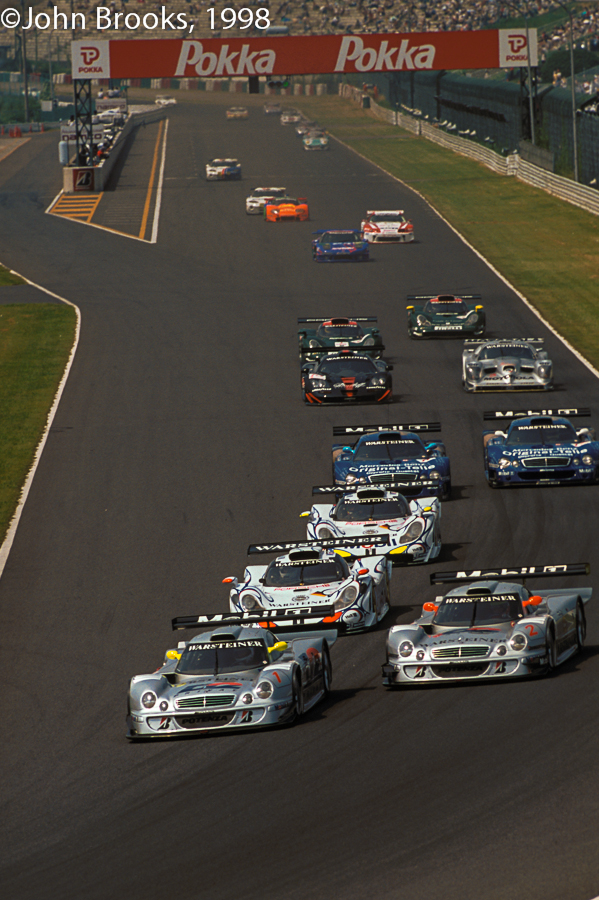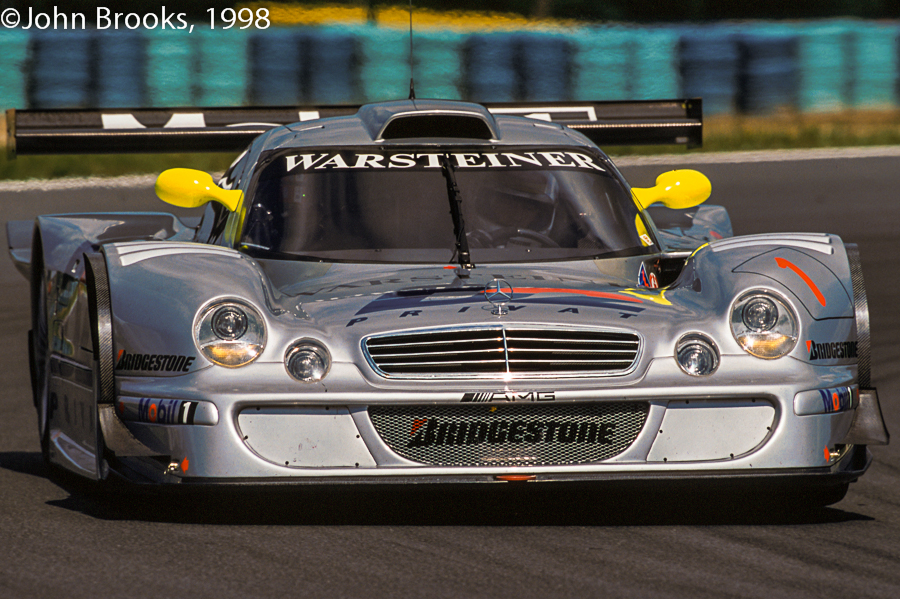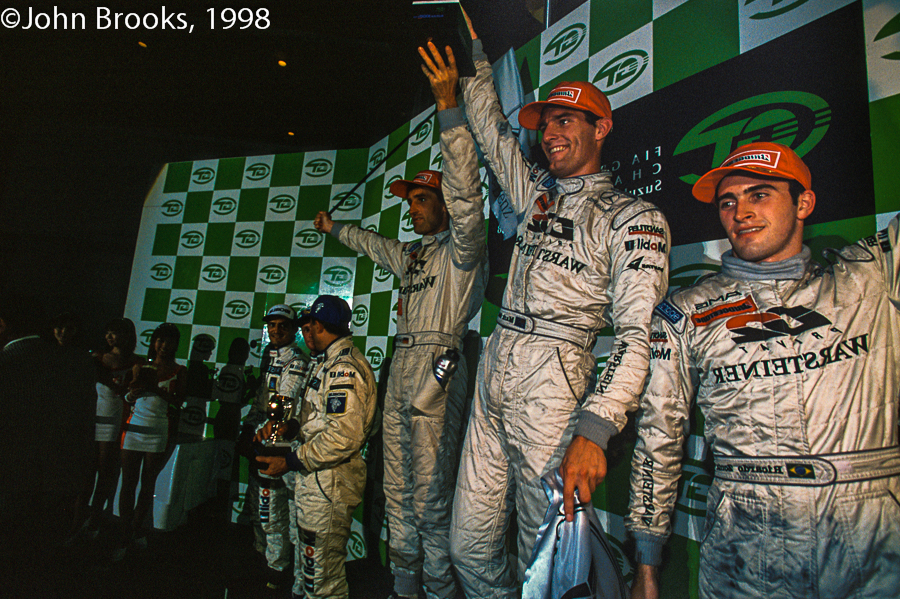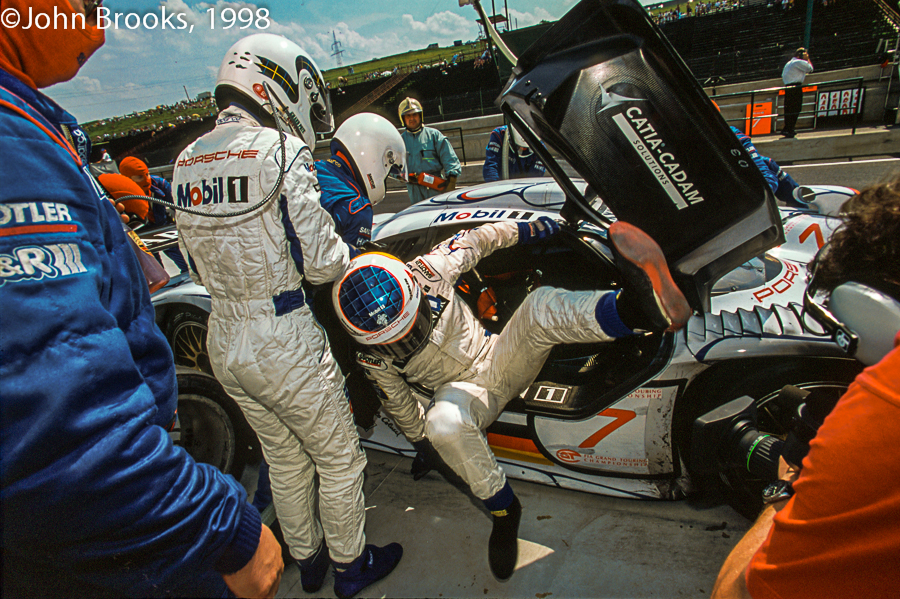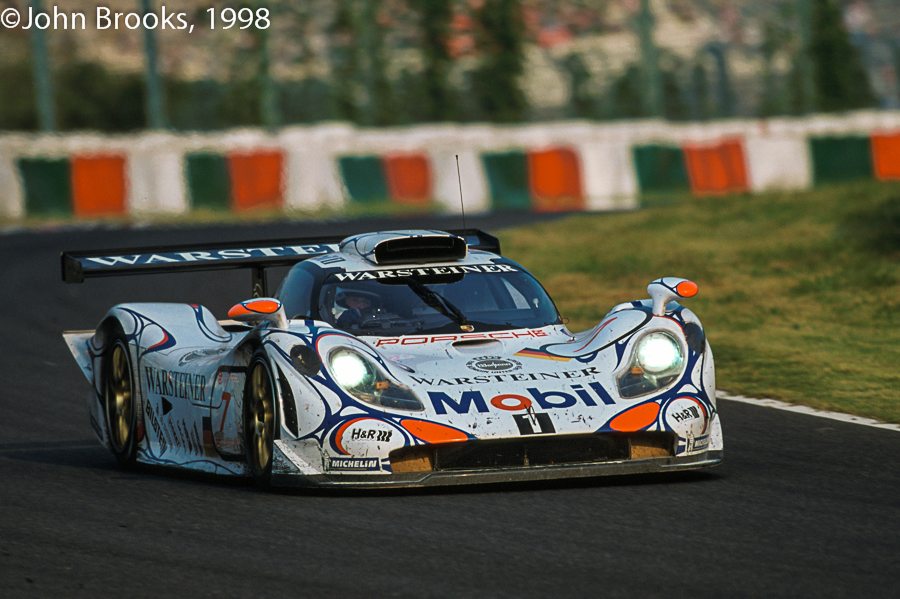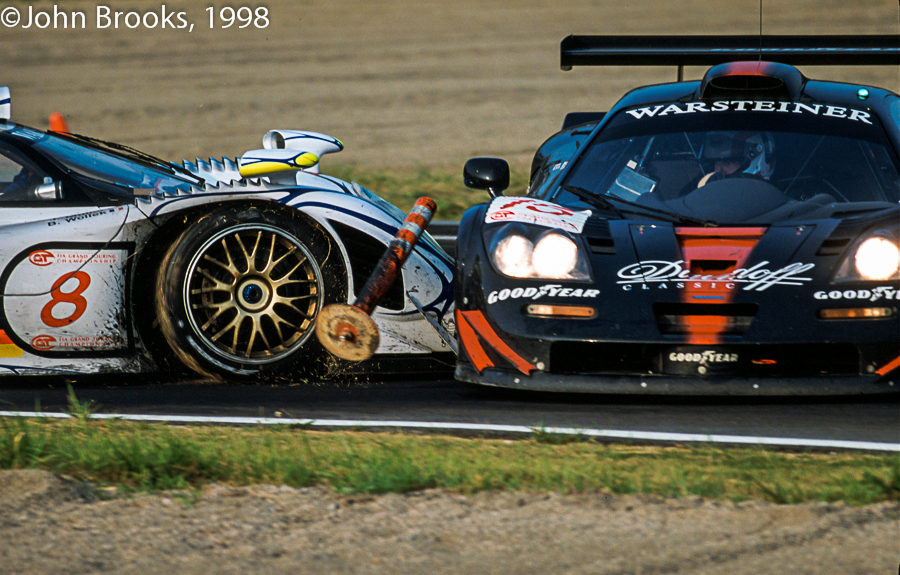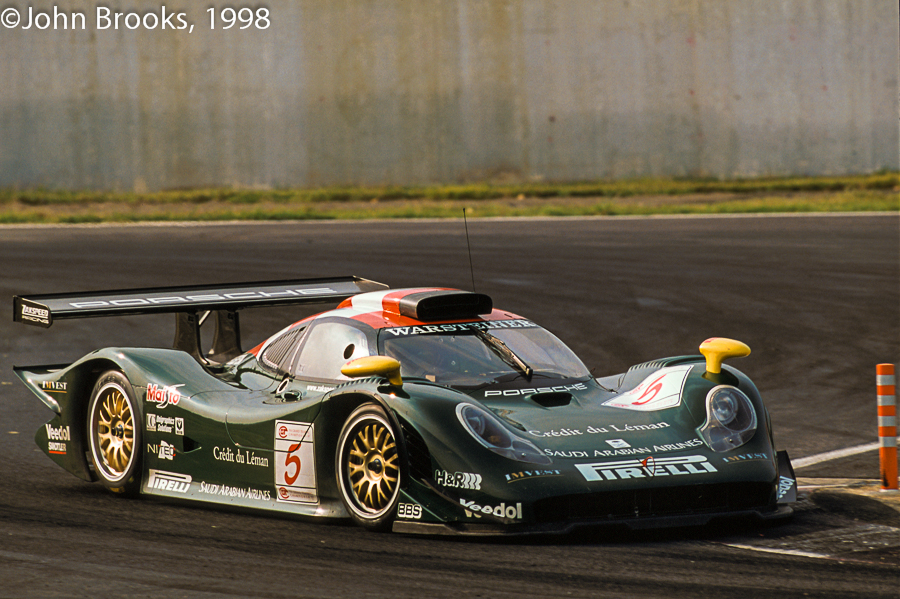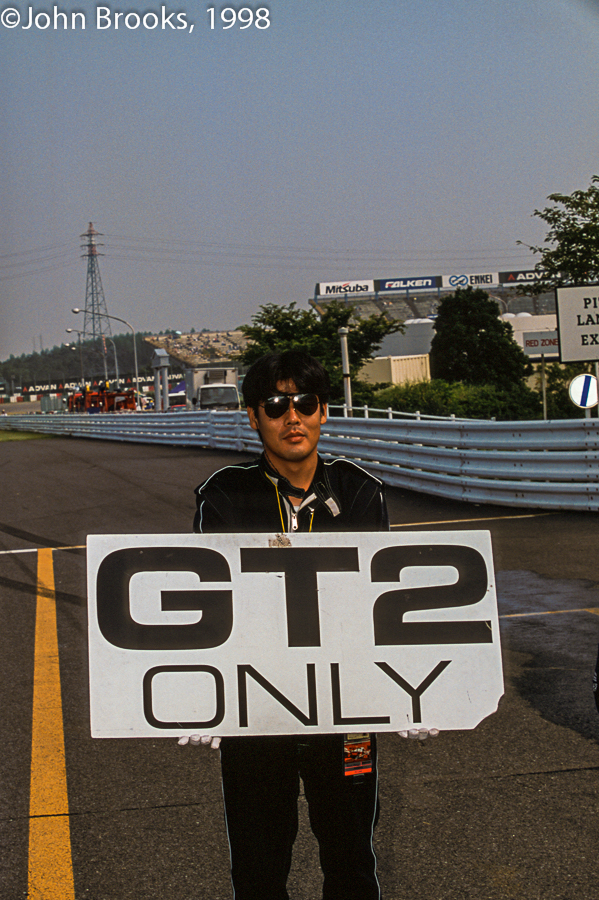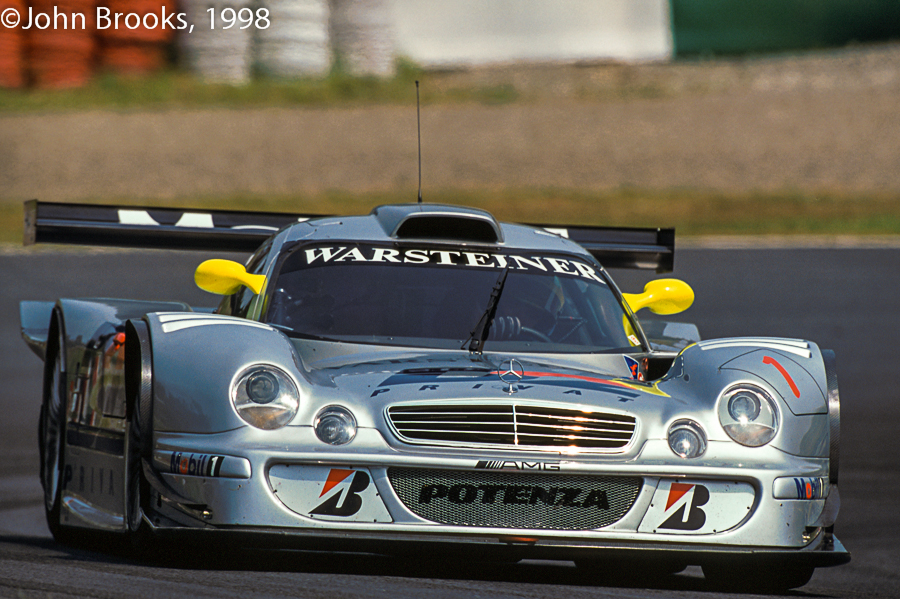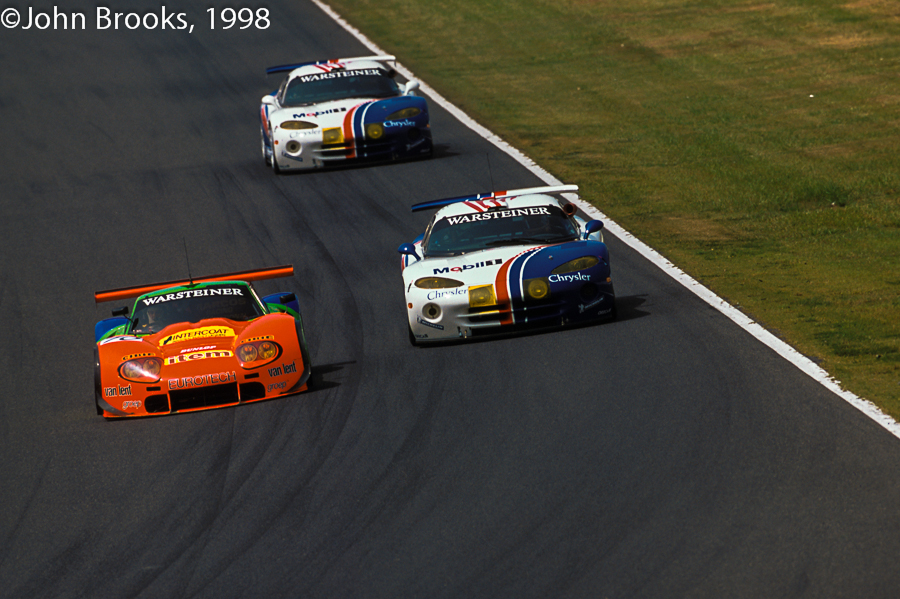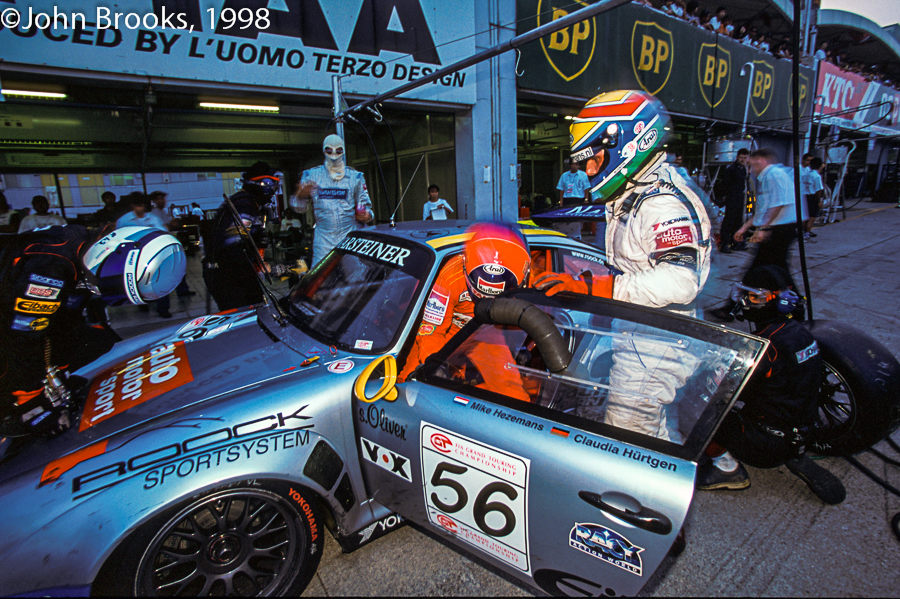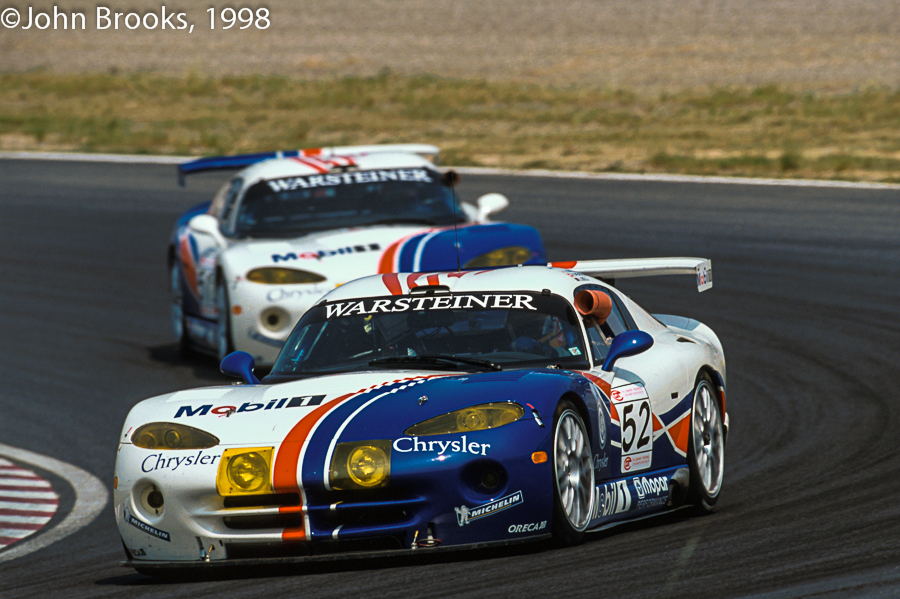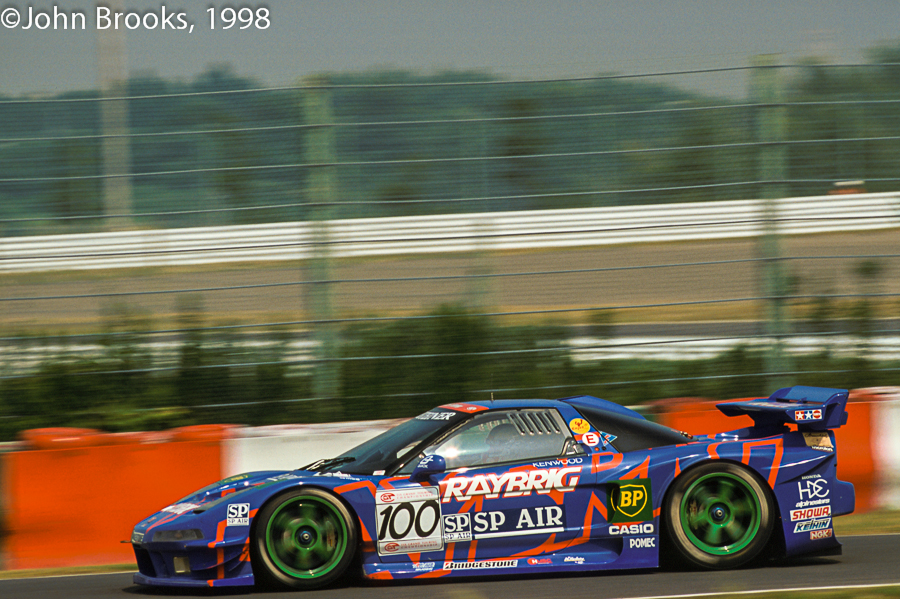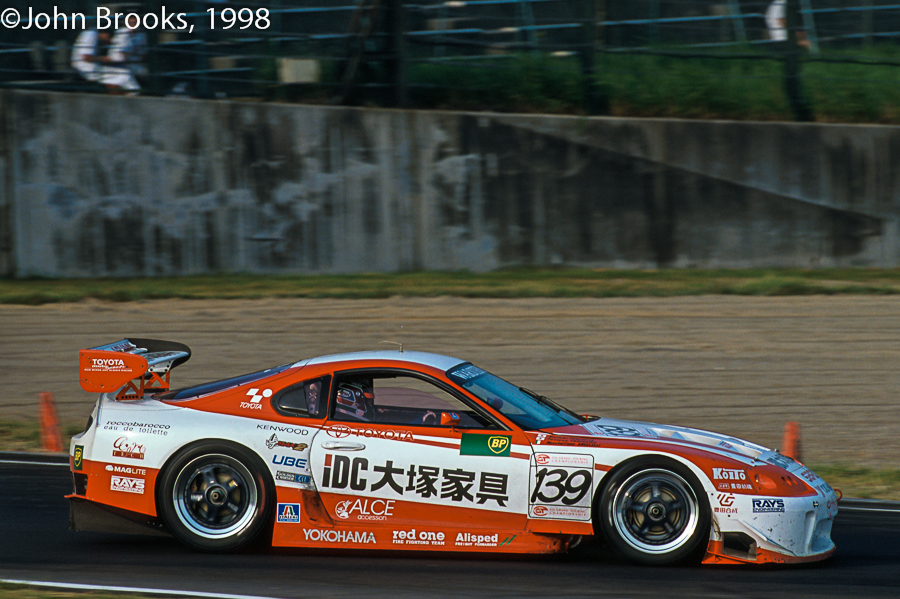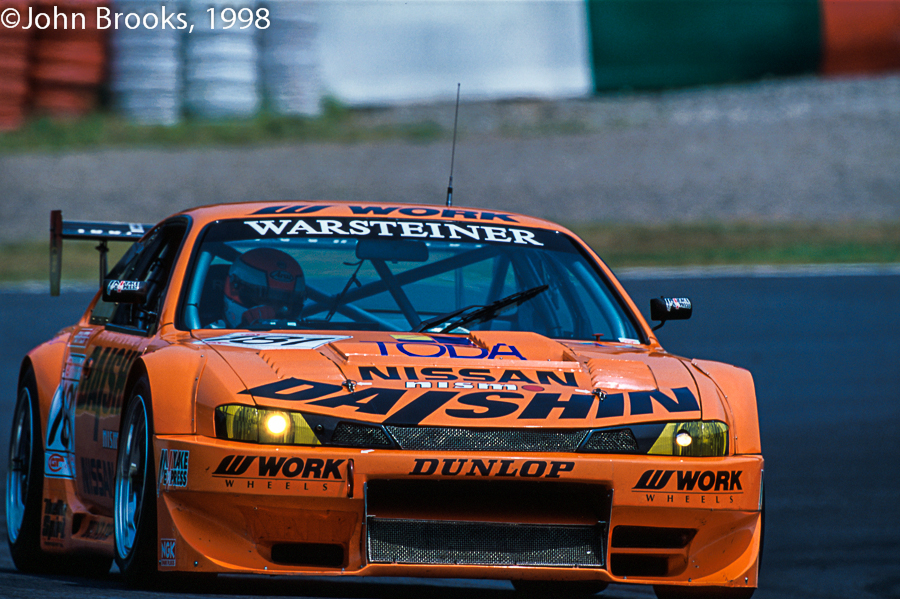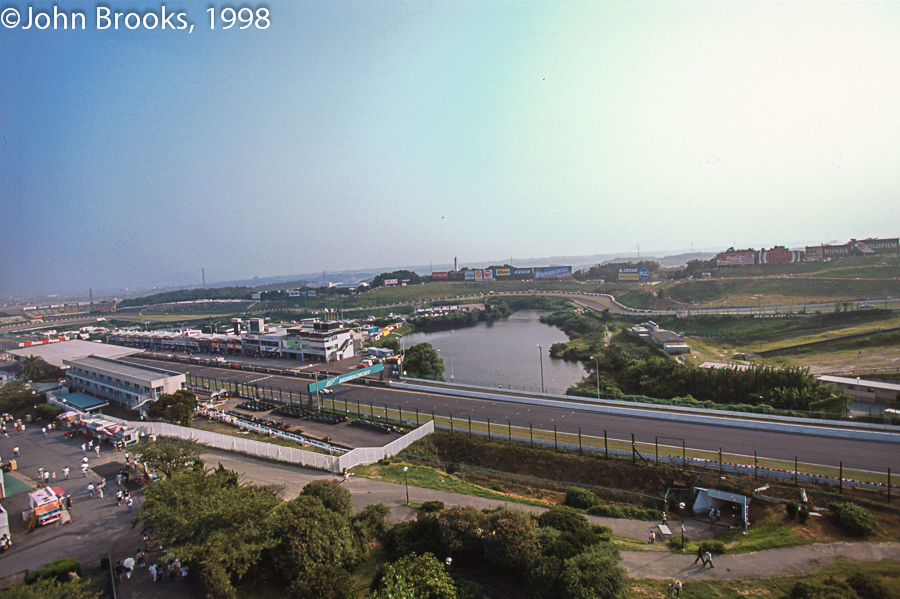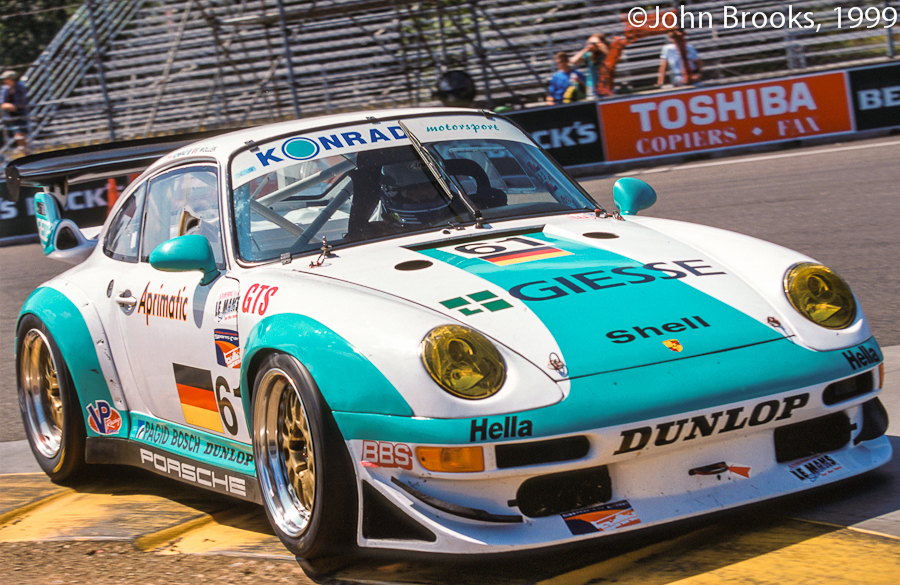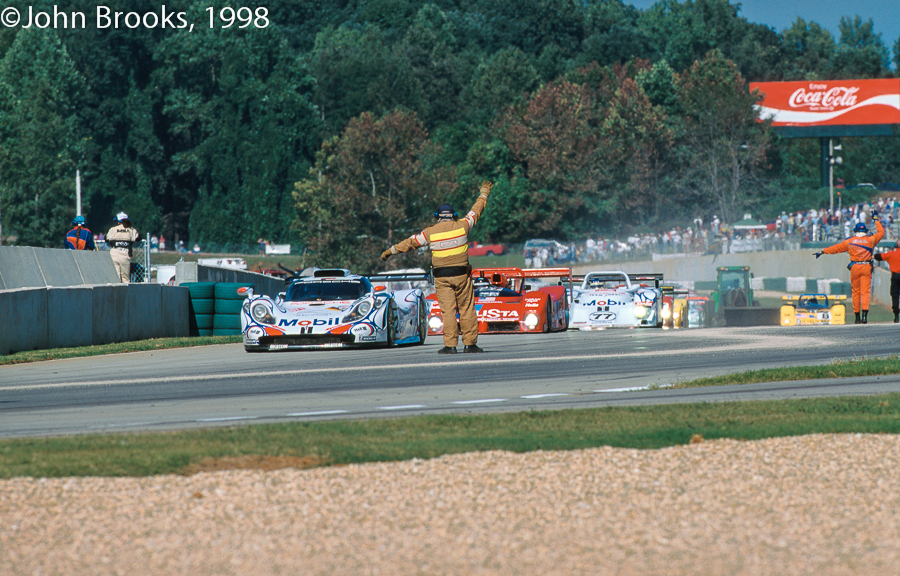
Last month, the news came down the Mojo wire that Doctor Don had sold the whole American Le Mans Series shebang, lock, stock and barrel, to the Good ‘Ole Boys on West International Speedway Boulevard. Predictably this transaction was spun as a merger with NASCAR, but the money went in one direction, the control in the opposite. Well all things must pass, and this unification has been a long time coming and certainly makes commercial sense. That is one area that you can be sure that the France family will have done their homework on, the deal will make money.
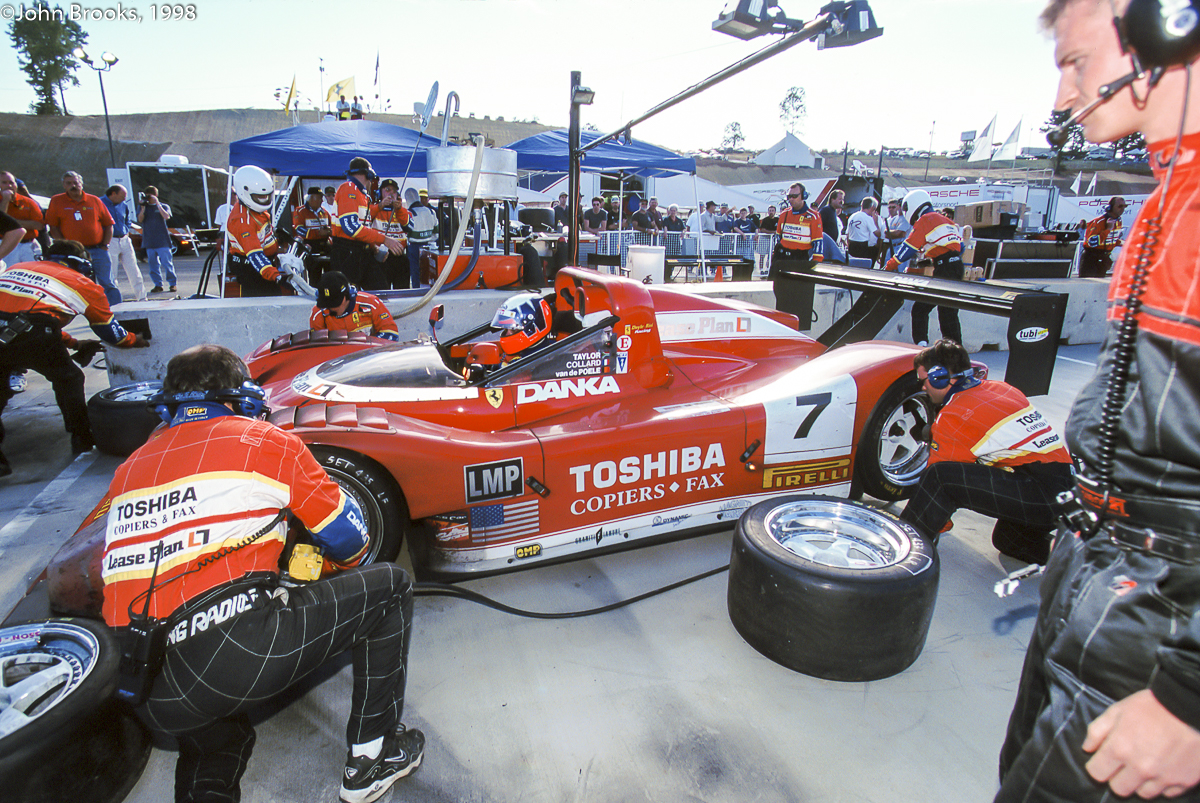
There have been the predictable howls from the ALMS/IMSA crowd, the true believers, the Jedi Warriors of sportscar racing in North America, that the Force has deserted them and the Empire aka NASCAR/GrandAm has triumphed and maybe that is so. From my distant perch, and no longer chasing the circus, as I had done ten years or more ago, I am perhaps less concerned with the future. Considering the present situation my thoughts drifted back to the beginning of the adventure, when the possibilities seemed boundless.
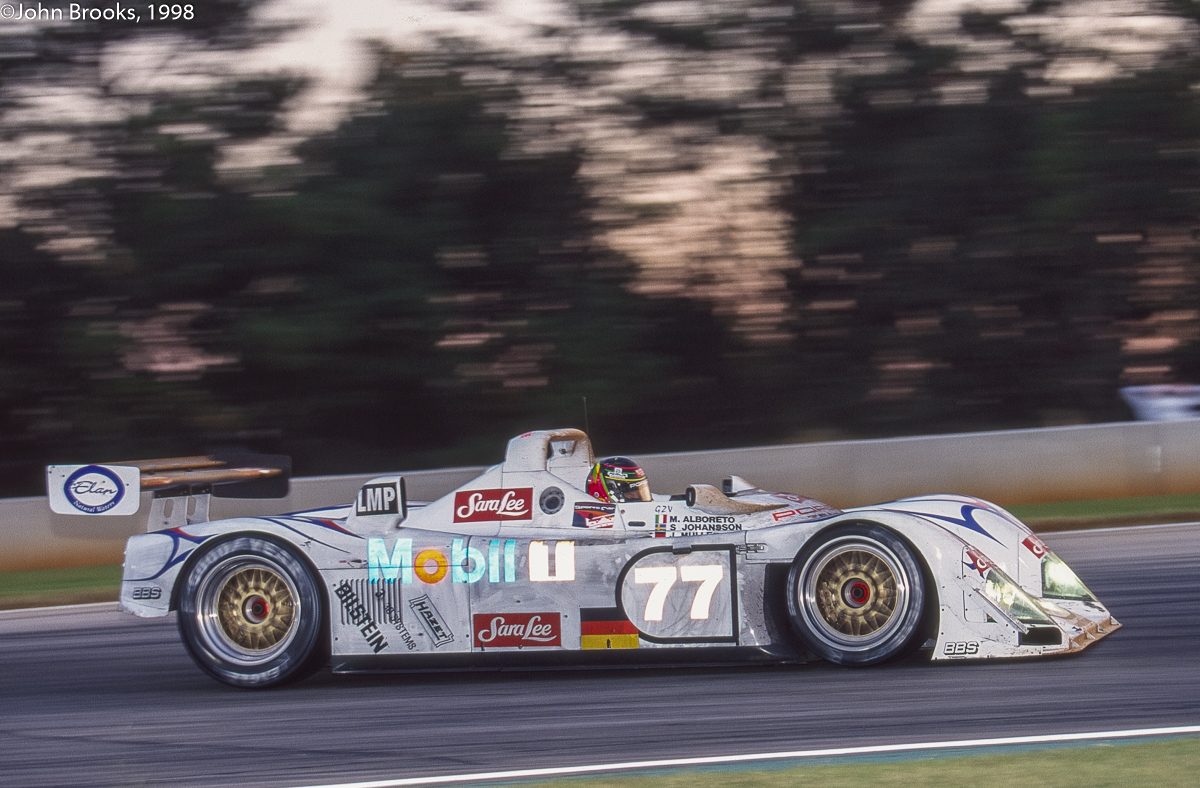 George Canning, a British statesman back in the time when we had such ministers in power, famously said “I called the New World into existence, to redress the balance of the Old.” And so it seemed with the birth of the ALMS in 1999. We had somehow stood by and allowed the odious FIA politicians and money men to destroy the World Endurance Championship and Group C at the turn of the ’80s.
George Canning, a British statesman back in the time when we had such ministers in power, famously said “I called the New World into existence, to redress the balance of the Old.” And so it seemed with the birth of the ALMS in 1999. We had somehow stood by and allowed the odious FIA politicians and money men to destroy the World Endurance Championship and Group C at the turn of the ’80s.
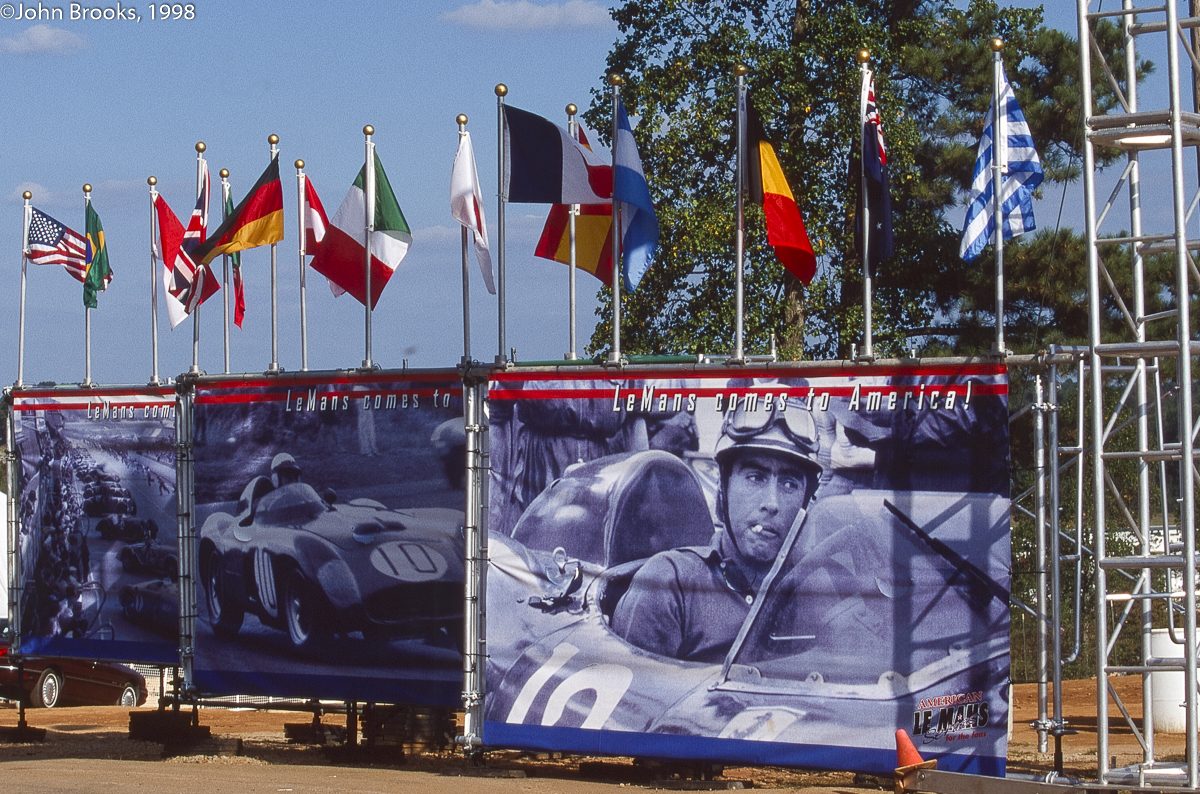
The great GT revival that was the BPR Global GT Series ’94 to ’96 morphed into FIA GT Championship, burned briefly and brightly in 1997. History repeated itself and the usual suspects were rounded up for another hatchet job. The whole edifice crashed back to Earth in 1998, why and how is a story is for another time and place. We were in the final stages of that fall, on the US trail leading us to Homestead and Laguna Seca, that was a contrast.
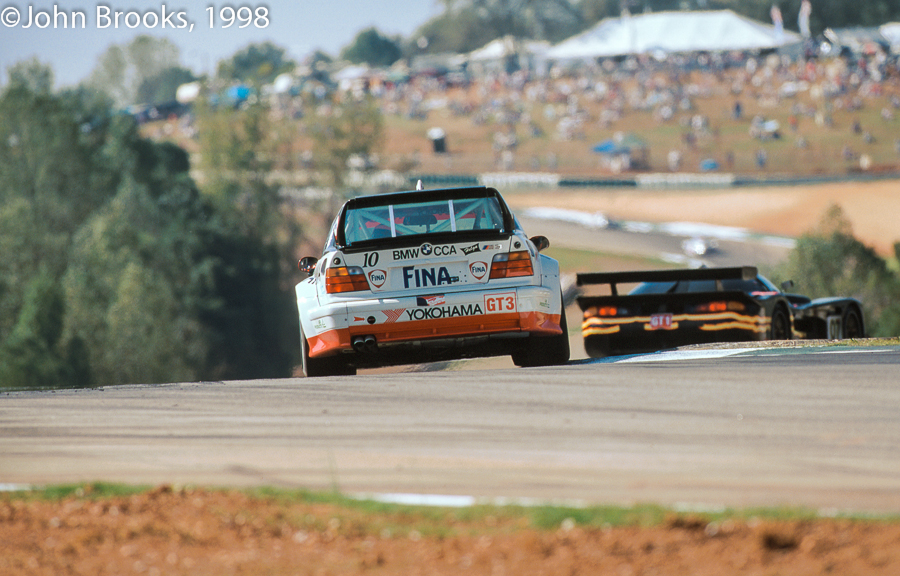
The week before we were presented with a vision of the future when we rocked up to a charming, if somewhat rustic, Road Atlanta. The event was billed as Petit Le Mans and was run on October 10th 1998, over a distance of 1,000 miles or 10 hours, whichever came first. For those of us who loved this aspect of the sport it was to be the beginning of a beautiful friendship.
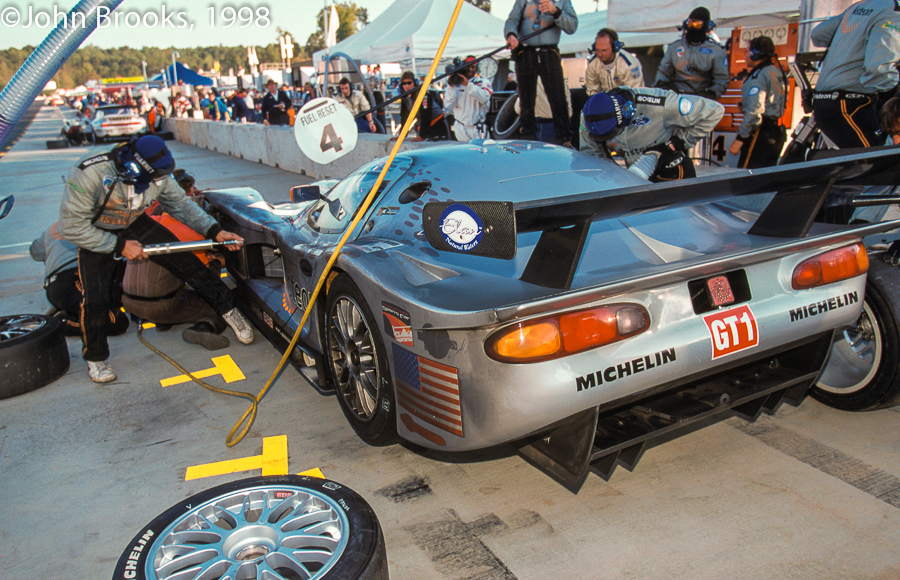
Those of us arriving from Europe were in for a real culture shock, veterans of Le Mans we may have been but the rules, though apparently the same, were interpreted in a completely different way. A bit like the difference between English as spoken in the Mother Country and how it is mangled on the other side of the Atlantic. Then throw in the antics of the ACO trying to infuse their singularly Gallic approach to motorsport into this already spicy mix and a rare old carambolage was in prospect, And yet, right from day one, when the first engine coughed into life, the whole thing just gelled, this mix of New World and Old World turned out to be something special.
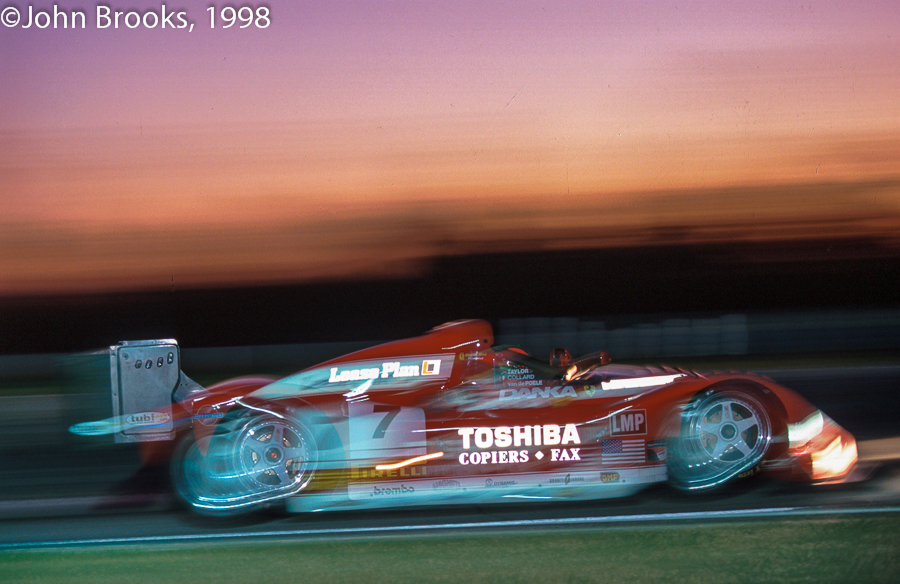
Today, sitting on a flight bound for Maynard Hartsfield International, I look back and give thanks that I had a small walk on part as an extra at the birth of this great adventure. Sure, like most folks in the business who are realists, I think that this weekend coming will see the penultimate Petit Le Mans and that this instant classic will disappear in the 2014 DP-fest, when we will engage in a form of automotive time travel back to the latter part of the last century, still we are all dead in the long run.
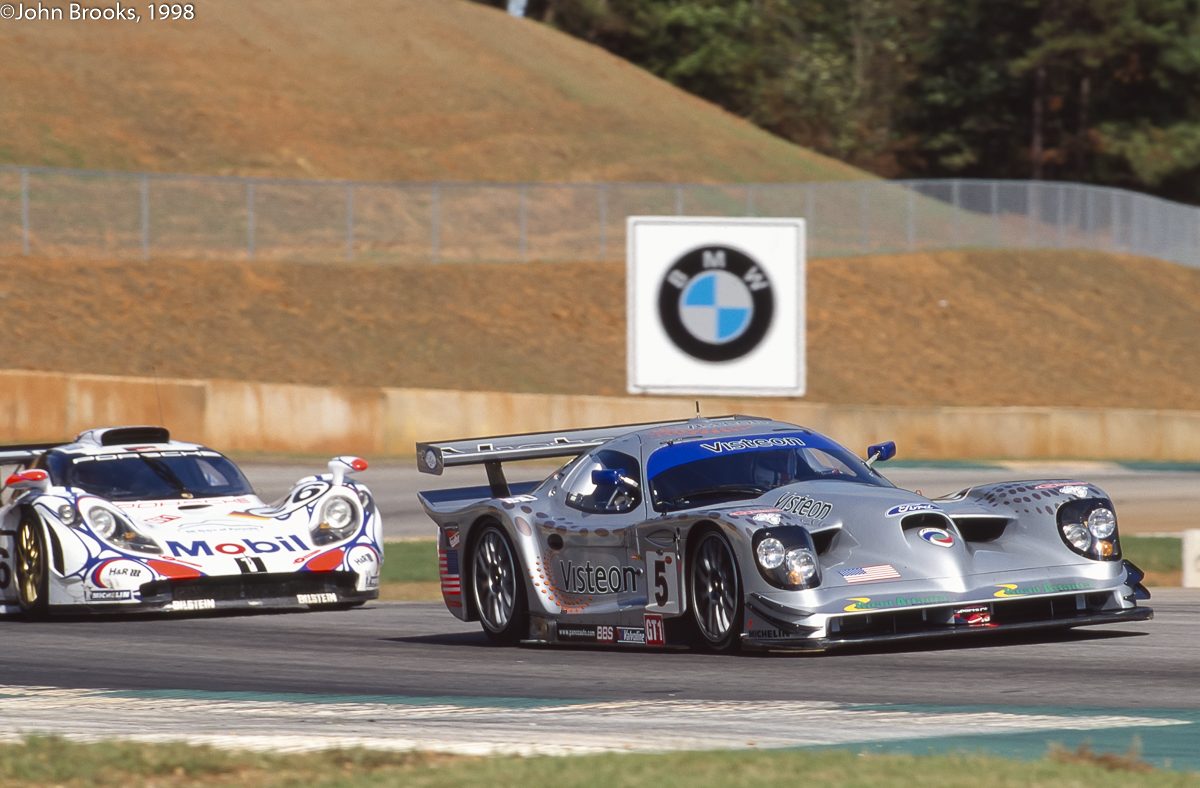
Road Atlanta in the fall of 1998 was a very special time and place to be in, I doubt that I recognised it at the time, but a week later, when down at Miami-Homestead Speedway the contrast was all too evident. I knew which one I preferred. There was a prospect of hope, the promise of of titanic battles in the years to follow of the automotive greats. Brands such as Audi, BMW, Corvette, Ferrari, Mercedes-Benz, Nissan, Porsche, Toyota and Viper were all whispered as being just round the corner, some actually were, and did eventually show up.
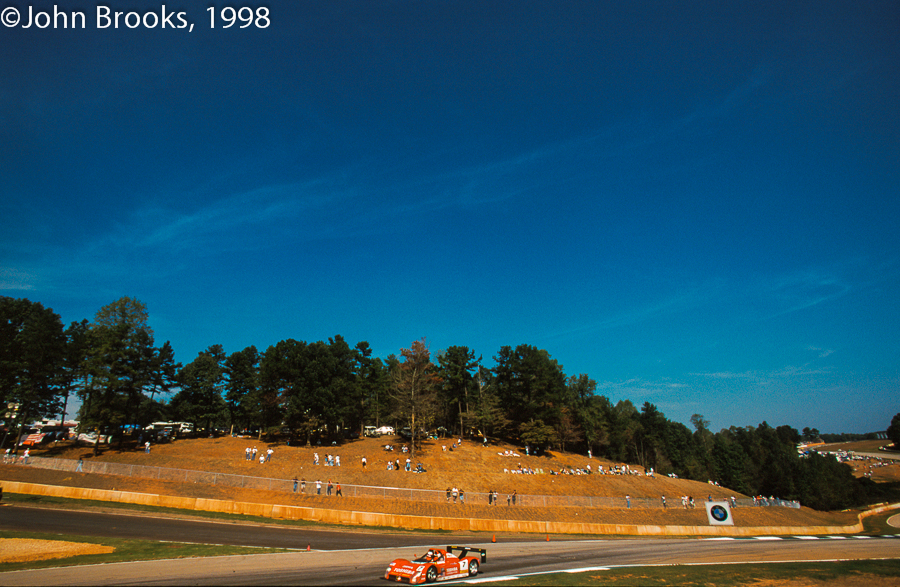
Dynamite was in the air as Panoz’s men blasted away a huge area to create the new pit lane on driver’s right, opposite the traditional spot. Of course, like all major infrastructure projects this one ran a bit late, so things were not quite finished. The major effect of this was for us all to be tinged reddish brown from the Georgia clay, it never did come out of my boots or firesuit. The media centre was a huge tent, probably dating from the Civil War, it was hot and noisy during the day and cold and damp first thing in the morning, the condensation fell on to our heads like the first heavy drops of the monsoon in Bombay. The phone lines that we connected our modems to worked intermittently, if at all, but that was par for the course back then. On the other hand the track was perhaps at its annual best, with the fall colours complimenting the ubiquitous mud and the whole place having a healthy glow about it.
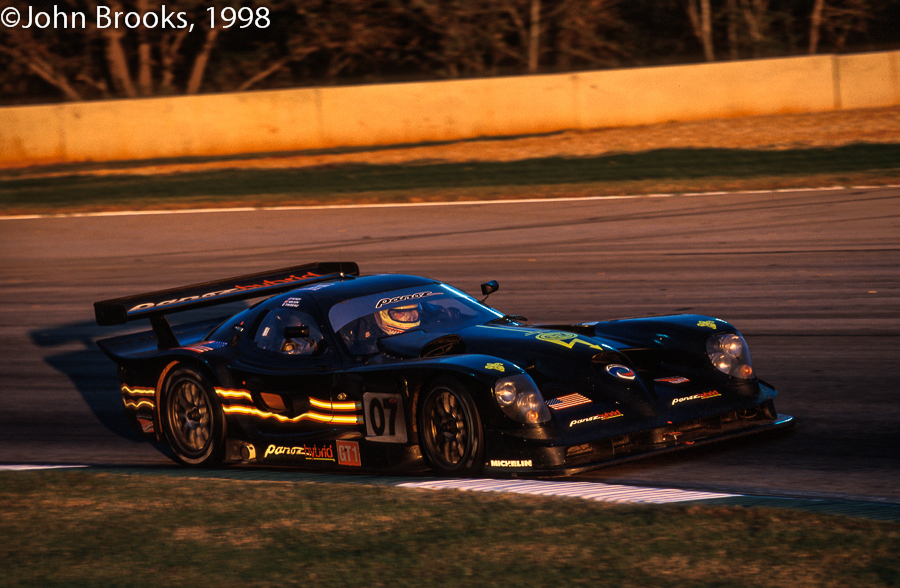
Down off the junction with I-85, Chateau Elan had recently been unveiled and certainly looked impressive, though a lunch there one day revealed that the local vintage was not Grand Cru. It might have been better applied to remove rust from old trenching tools but that meant there would be no glugging the stuff, and at the price on the menu that was a good thing. One bright star on the estate was the Irish Bar, Paddy’s, but more of that later. I was booked in with David Price Racing at a local Braselton hotel, next to the Interstate it was noisy, and on the first night a continuously faulty fire alarm scared the bejaysus out of me. I was convinced that the locals were taking random shots at the hotel, and only the absence of banjo music prevented me from fleeing into the night. Of course in the cold light of dawn I merely looked foolish……plus ça change.
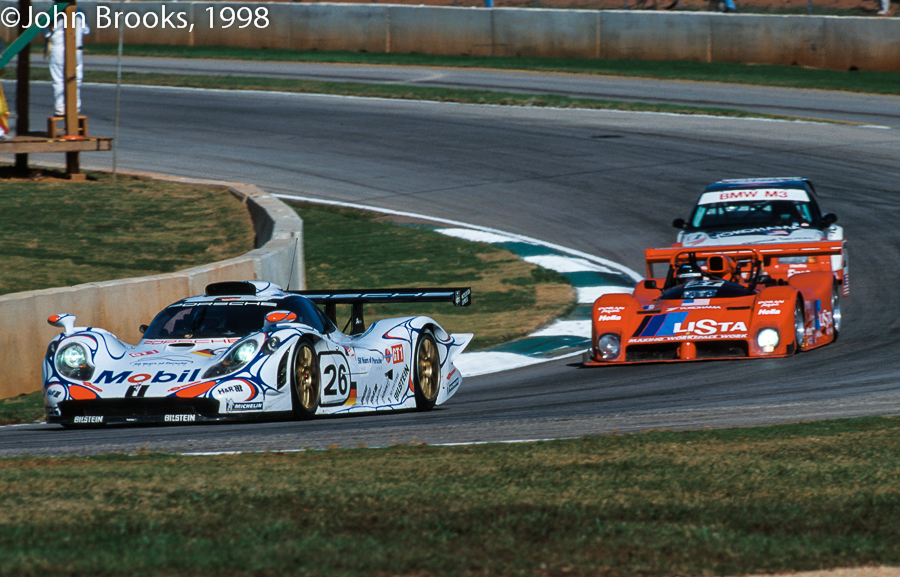
The entry for the first Petit Le Mans should have been mega, the winners in each class would receive automatic invitations to the 1999 Le Mans 24 Hours, the pinnacle of endurance racing. Add that to the fact that the FIA GT circus was in Florida, a hop over the State line and the grid should have been bursting. Of course this being sportscar racing things are never as simple as they seem, politics are always just around the corner. The story was that the planned FIA International Prototype Championship would not appreciate the competition in 1999 that a strong North American endurance series, the ALMS, would bring. All those dollars chasing the biggest market on the planet, particularly for the luxury brands involved, would certainly made the ALMS an inviting choice. So the word came down from the FIA GT to avoid the opening event, or so the conspiracy theorists amongst us believed. To be fair, a contract had been drawn up between the FIA GT and the promoters at the two final events, so a demolition derby in the backwoods, North of Atlanta, would have been a major headache, especially financially. Maybe it was more a case of Deep Pockets rather than Deep Throat.
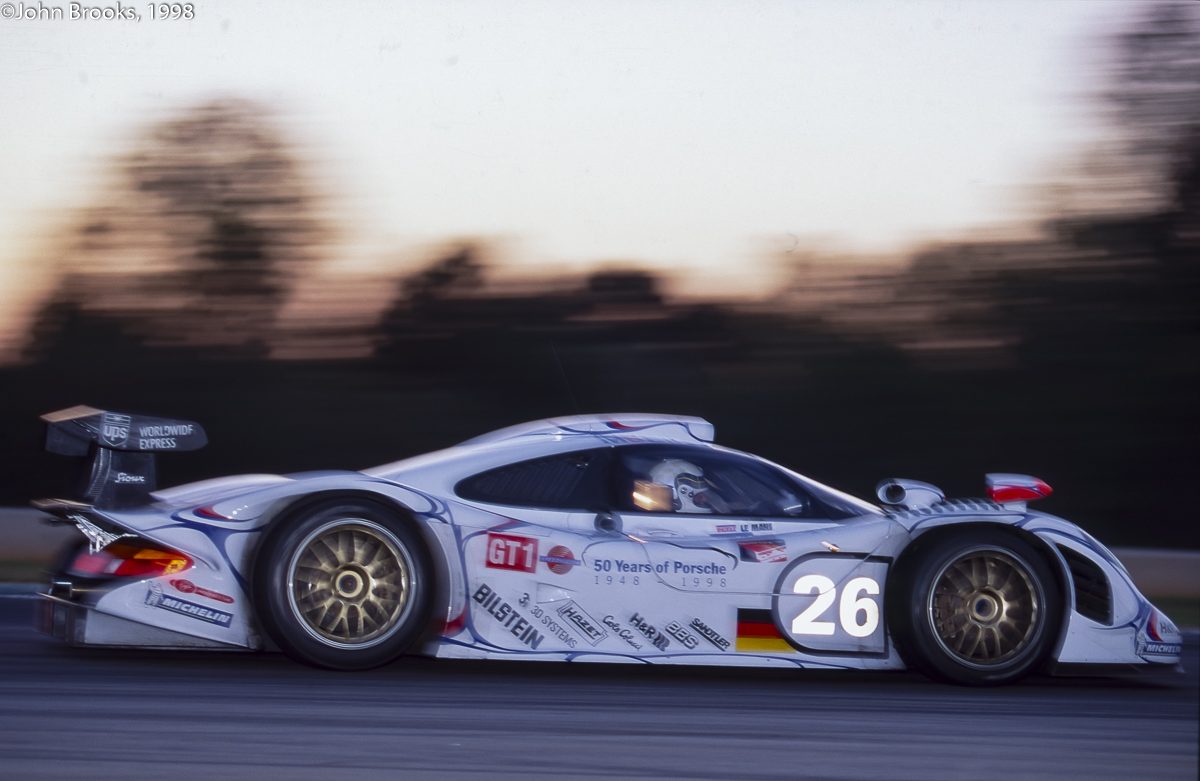 Porsche AG ignored these entreaties, sending one of their 1998 Le Mans-winning type 911 GT1/98 rockets, with Allan McNish, Yannick Dalmas and Uwe Alzen on duty in the cockpit.
Porsche AG ignored these entreaties, sending one of their 1998 Le Mans-winning type 911 GT1/98 rockets, with Allan McNish, Yannick Dalmas and Uwe Alzen on duty in the cockpit.
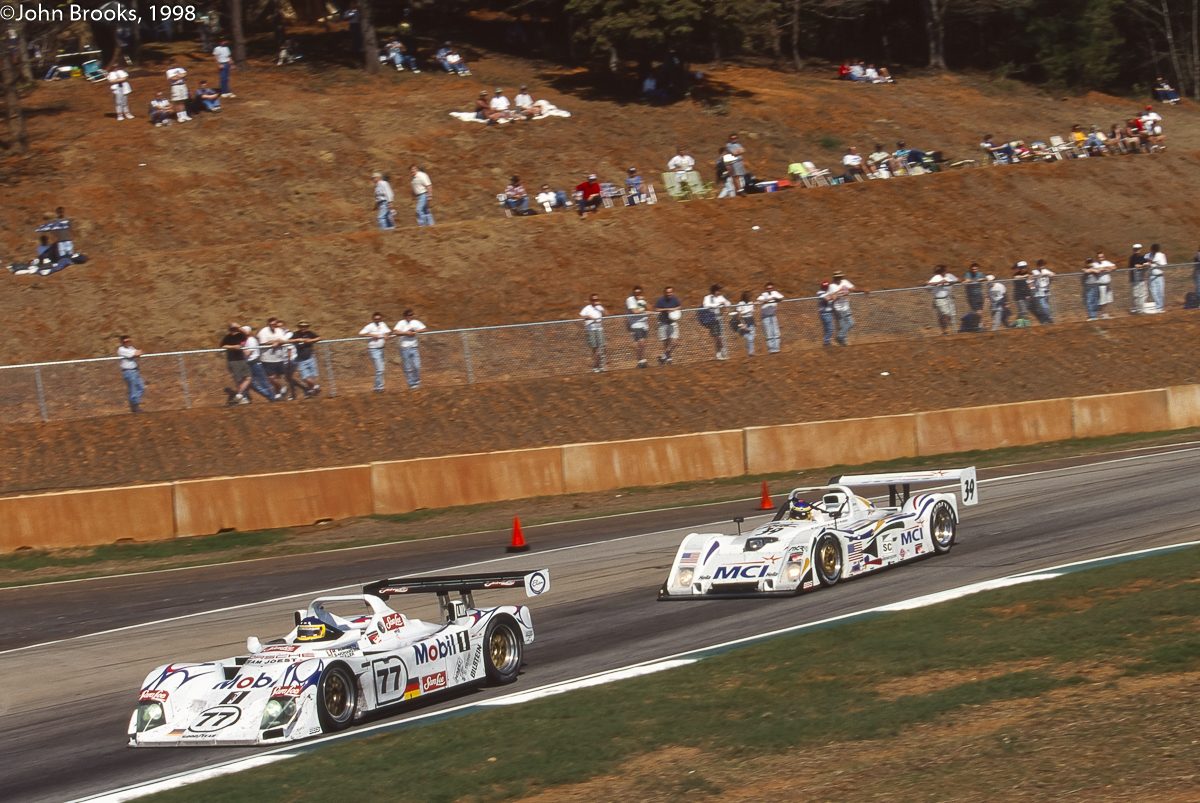 Another Le Mans winner (’96 and’97), the Porsche LMP1/98 was on hand as back up to the GT1 racer, Michele Alboreto, Stefan Johansson and Jörg Müller were the crew.
Another Le Mans winner (’96 and’97), the Porsche LMP1/98 was on hand as back up to the GT1 racer, Michele Alboreto, Stefan Johansson and Jörg Müller were the crew.
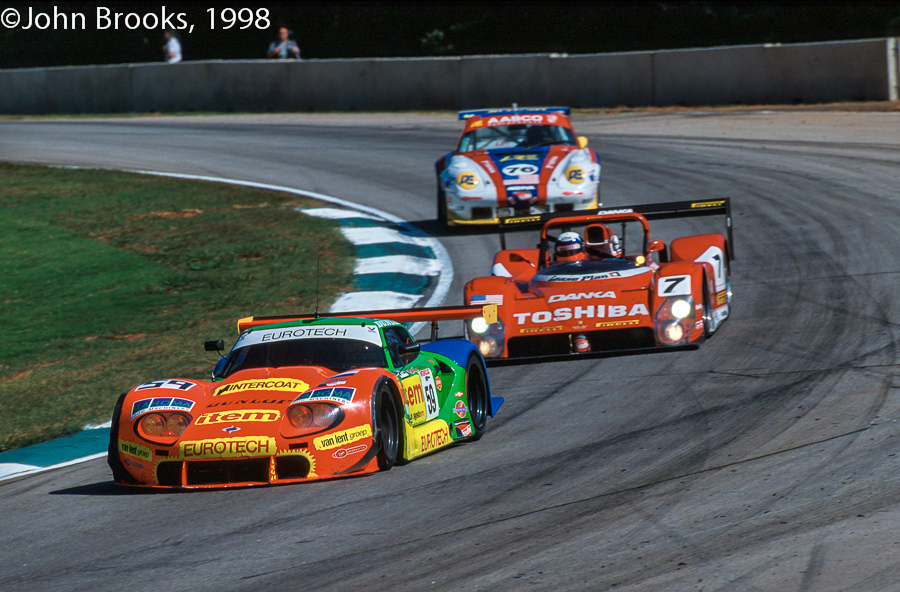
Down in GT2 Larbre Compétition and Freisinger also broke ranks with their Porsche 993 GT2Rs plus Cor Euser’s Marcos LM600, but that was it from the FIA GT Championship.
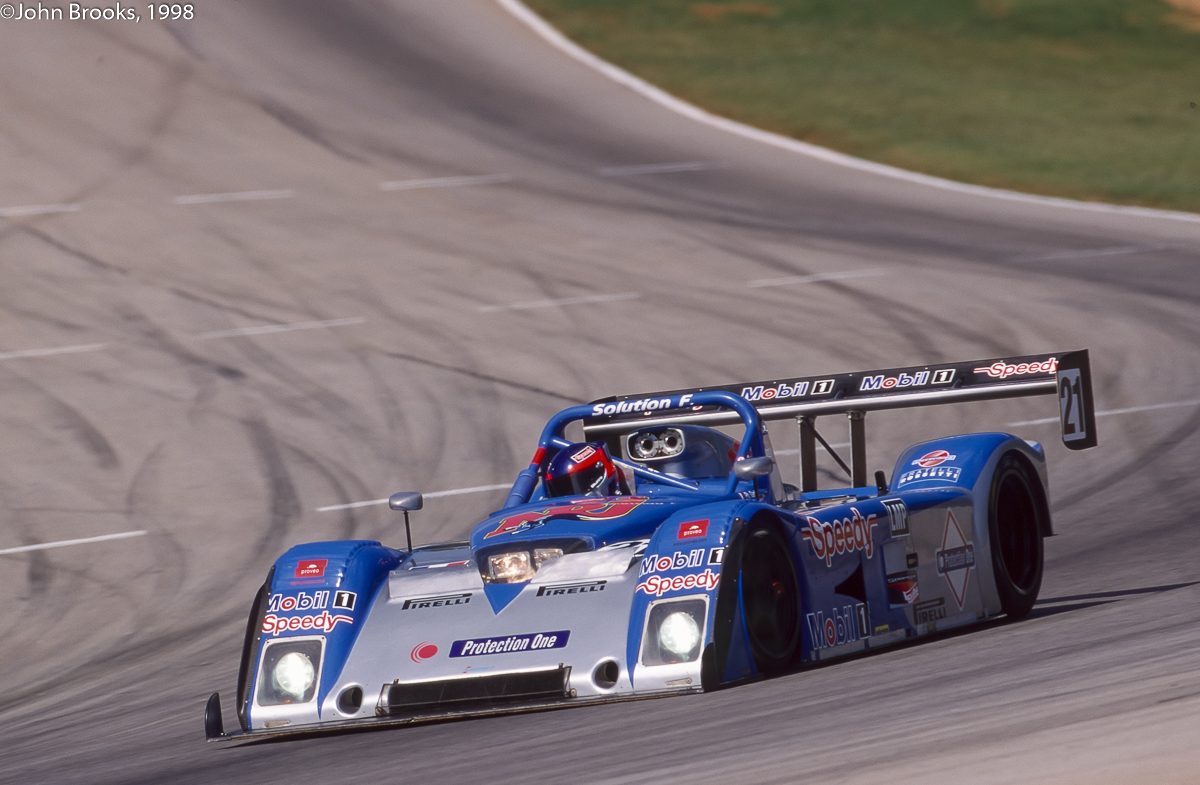
There had been anticipation that some of prototypes from the International Sports Racing Series might make the trip, but at the last minute the factory-backed BMW Riley & Scott pair withdrew, following a string of catastrophic engine failures. The project would be quietly throttled following a surprise win at Laguna Seca later in the month, not BMW’s finest hour. In the end Solution 24 sent their Riley & Scott but the engine went bang in the warm up, their race was over before it began. Mangoletsi’s Barmy Army had a date in Kyalami the following month so most of the rest of his grid opted for that course.
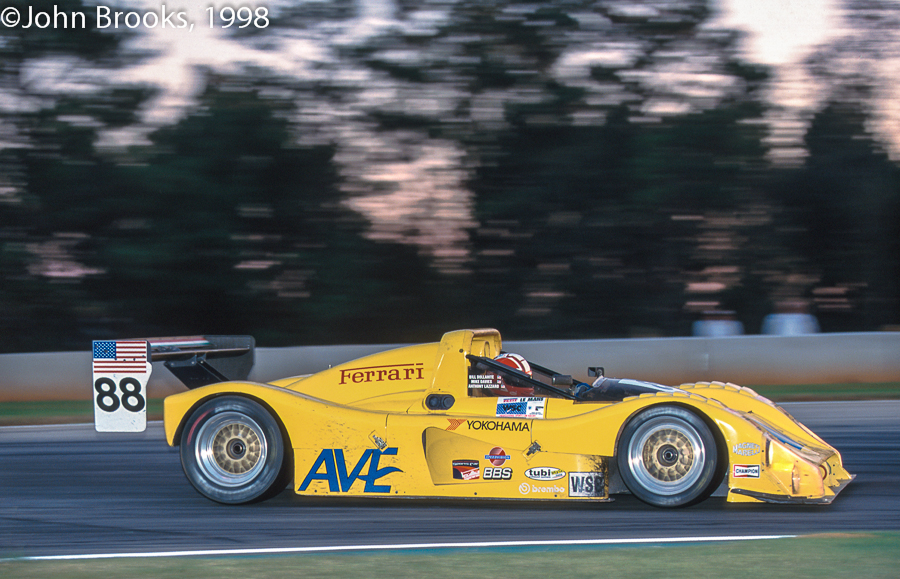
The native prototype entry was led by a trio of Ferrari 333 SPs entered by Doyle/Risi, Fredy Lienhard and Bill Dollahite.
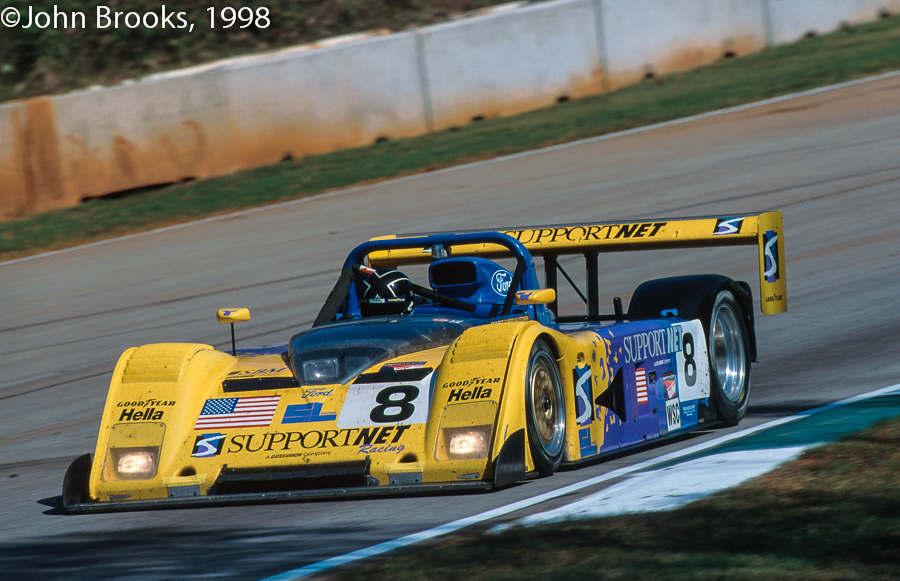
Absent as a result of a squabble with the organisers was the pair of Dyson Riley & Scotts, they surfaced later at the ISRS Kyalami event. Four other Riley & Scott entries took the start (Henry Camferdam, Jim Matthews and Intersport (x2)).
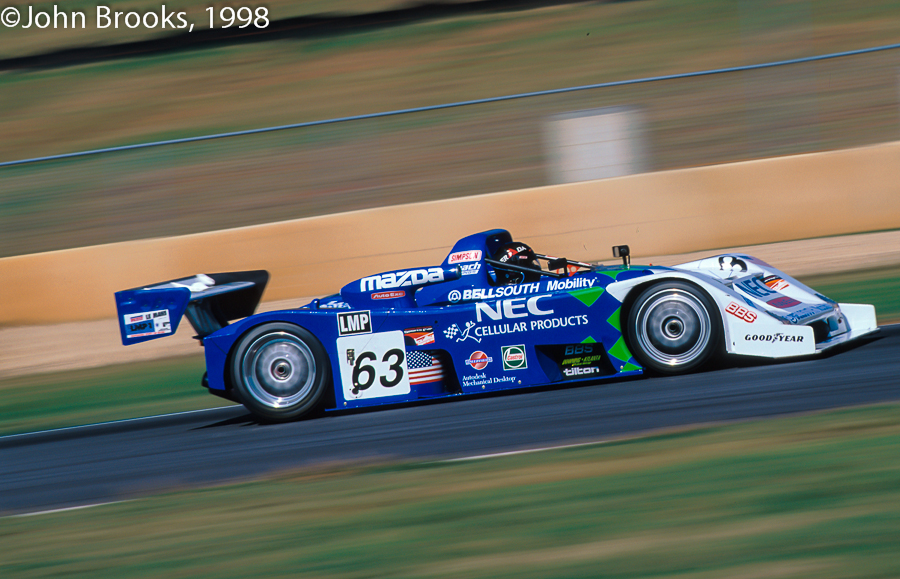
A brand new four-rotor Kudzu was finished in the paddock for Jim Downing to swell the numbers.
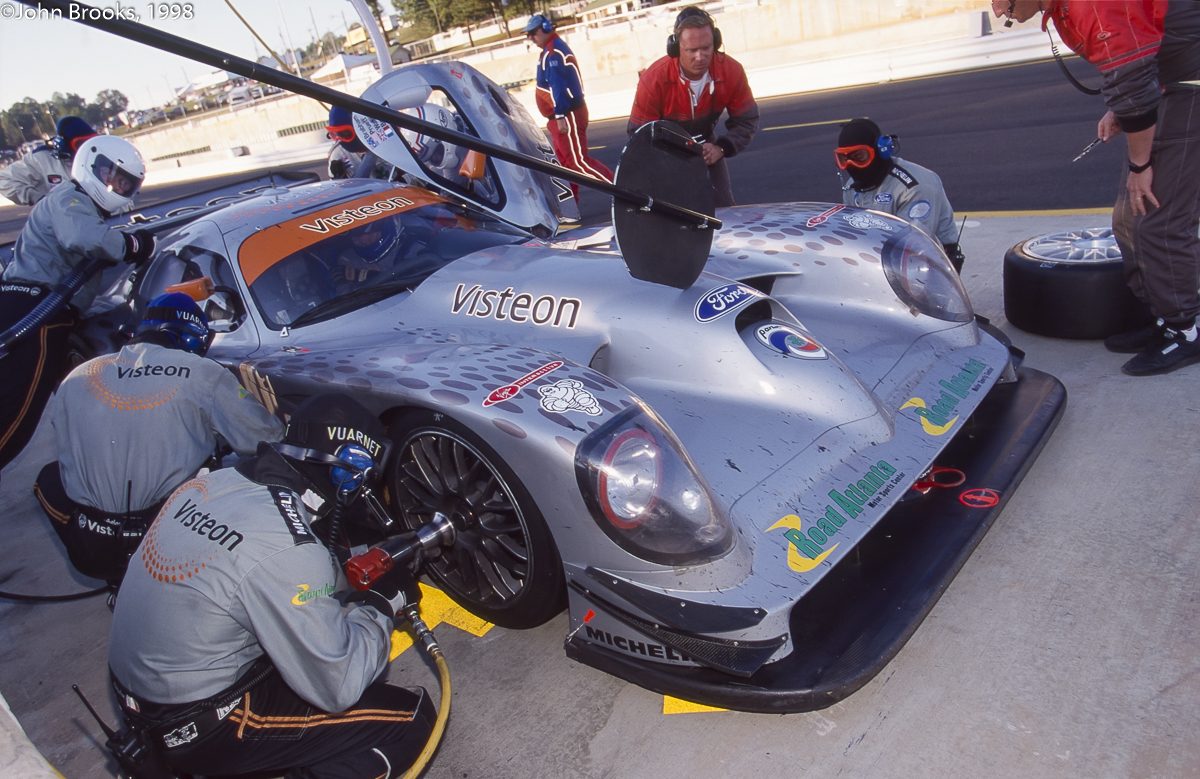 Then there were the pair of factory Panoz GTR-1s, reduced to one, after Jamie Davies clouted the wall in practice, damaging the tub beyond immediate repair.
Then there were the pair of factory Panoz GTR-1s, reduced to one, after Jamie Davies clouted the wall in practice, damaging the tub beyond immediate repair.
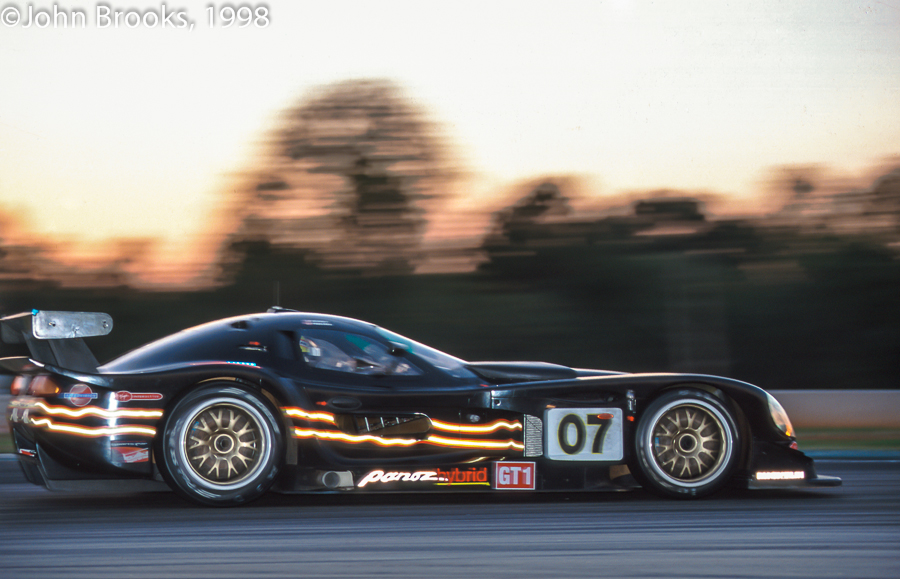
Perhaps the most interesting, and ultimately significant entry, was the Panoz Q9, this being the racing debut of “Sparky”, the electric hybrid car. An attempt to run at Le Mans foundered during the preliminary practice, the car was too new to be competitive, six months of development would make all the difference.
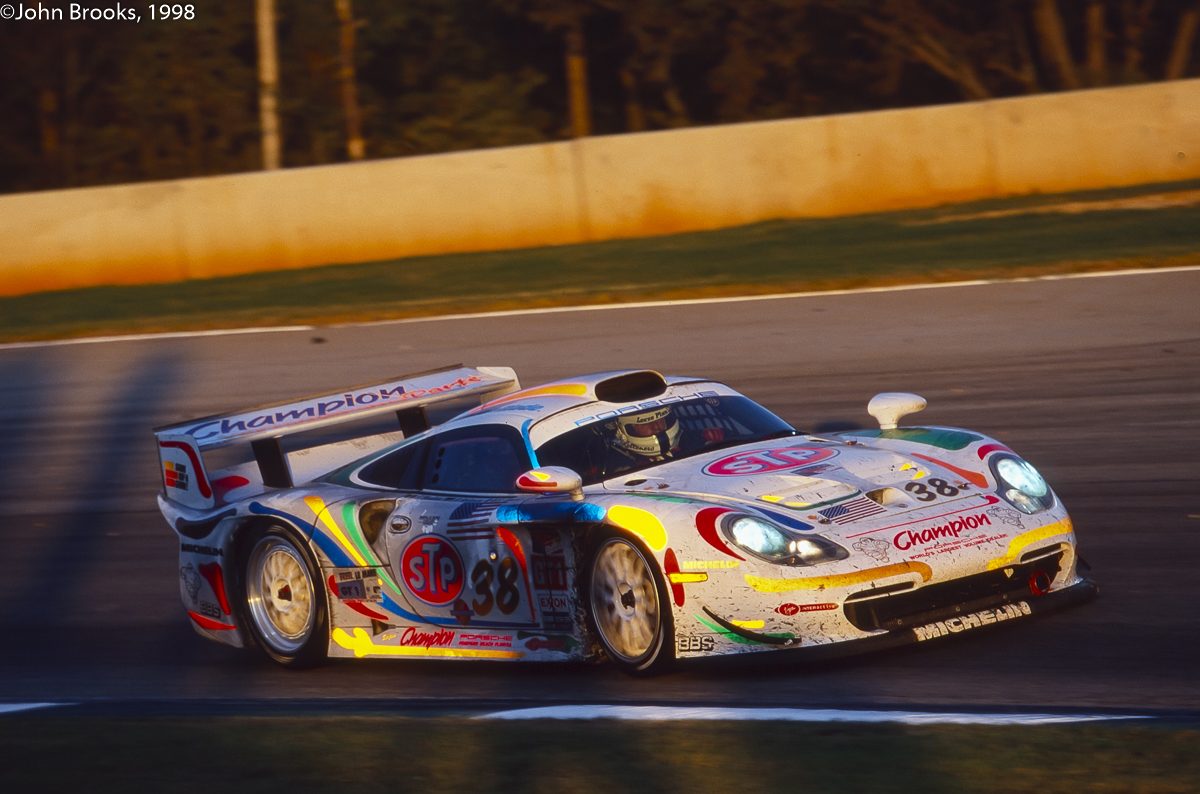 Also in the GT1 contingent was the Champion Racing Porsche 911 GT1 Evo, with Porsche stalwarts, Bob Wollek and Thierry Boutsen, joined by Ralf Kelleners on driving duties.
Also in the GT1 contingent was the Champion Racing Porsche 911 GT1 Evo, with Porsche stalwarts, Bob Wollek and Thierry Boutsen, joined by Ralf Kelleners on driving duties.
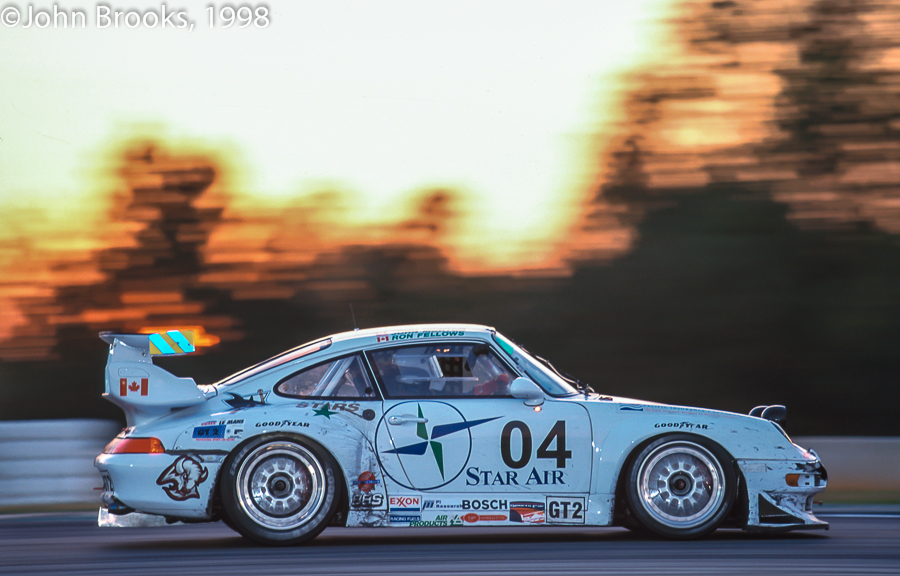
The local GT battle was largely a Porsche v BMW affair. So the final score card showed 33 entries, 31 Qualified and 29 to actually take the Green Flag, the quantity and quality would be enough to ensure the future of the American Le Mans Series.
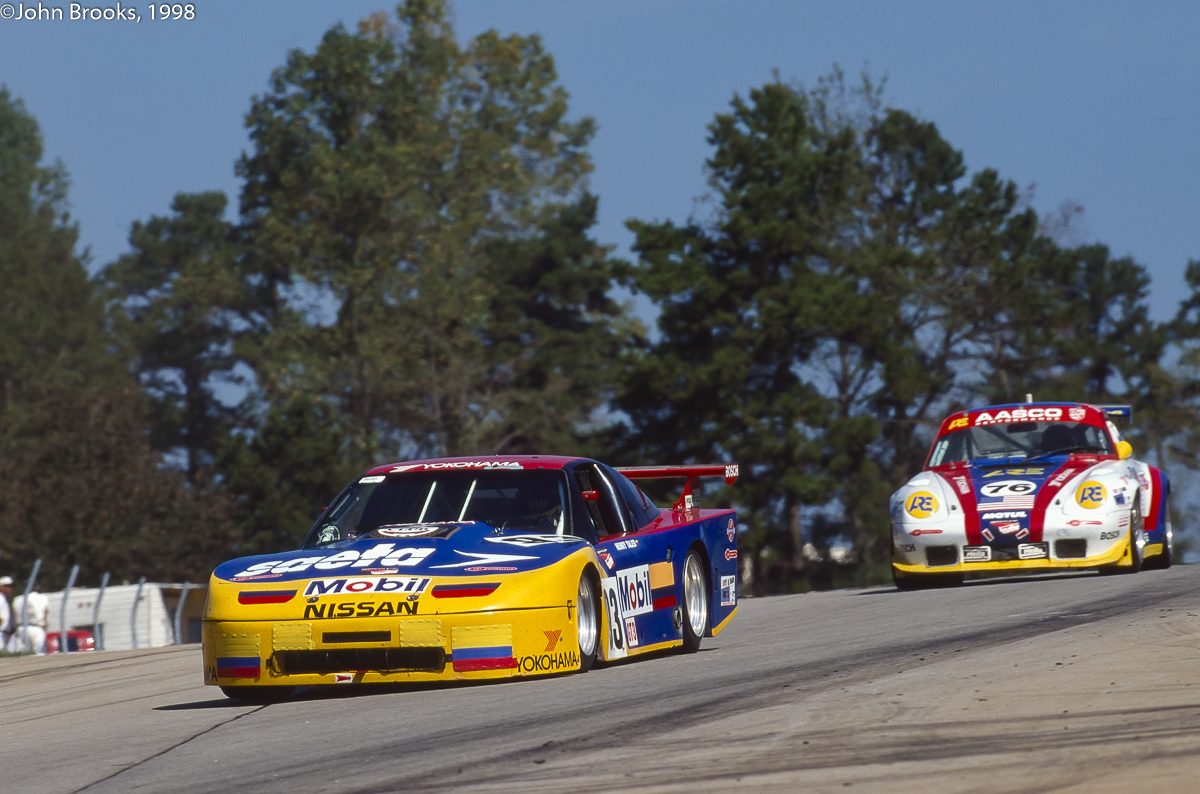 There were a few oddities in GT, at least to this European eye, the Nissan 240SX being a typical member of “run what you brung” genre. Whatever floats your boat….
There were a few oddities in GT, at least to this European eye, the Nissan 240SX being a typical member of “run what you brung” genre. Whatever floats your boat….
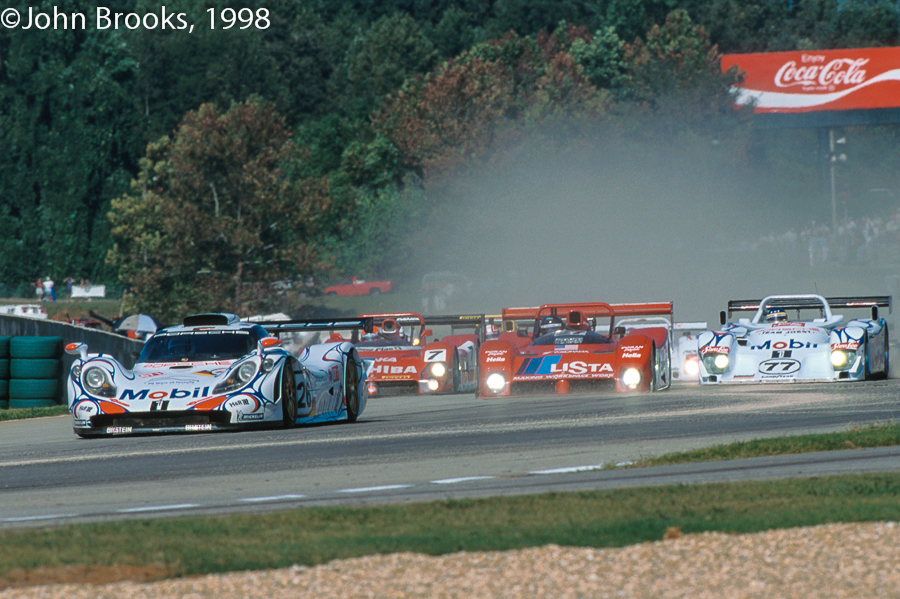
The race had an unsteady start after Kelly Collins’s Porsche dumped all its engine oil on to the first corner during the pace lap, so eventually after much spreading of cement dust or whatever they use in Atlanta, the mad rush for the lead commenced. The McNish GT1 Porsche ran away from the field, being way faster than the Ferraris plus it had the Wee Scot at the wheel.
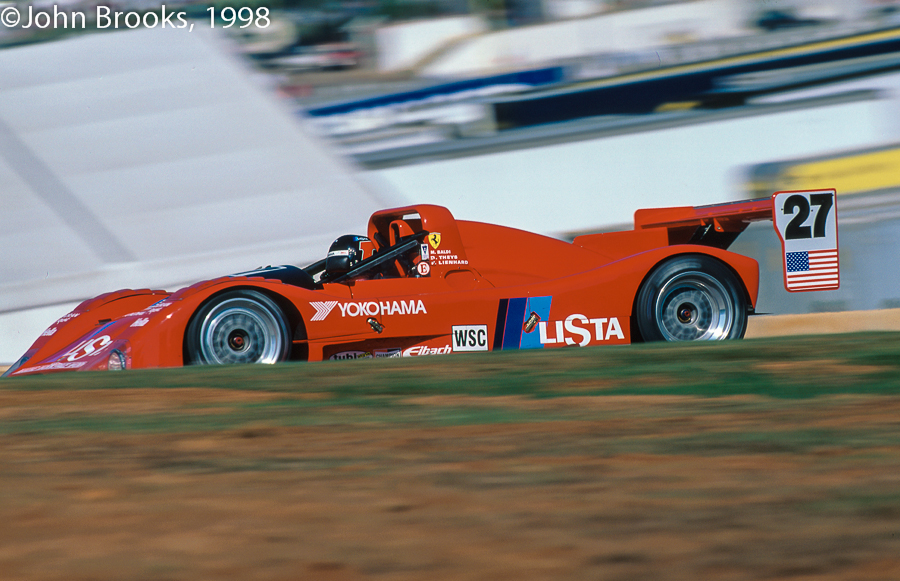 The first significant casualty was the Lienhard Ferrari 333 SP after running out of fuel. The race settled down to being a battle for second between the Doyle/Risi Ferrari and the sole surviving Panoz, with the delayed Porsche LMP1/98 a lap or so down.
The first significant casualty was the Lienhard Ferrari 333 SP after running out of fuel. The race settled down to being a battle for second between the Doyle/Risi Ferrari and the sole surviving Panoz, with the delayed Porsche LMP1/98 a lap or so down.
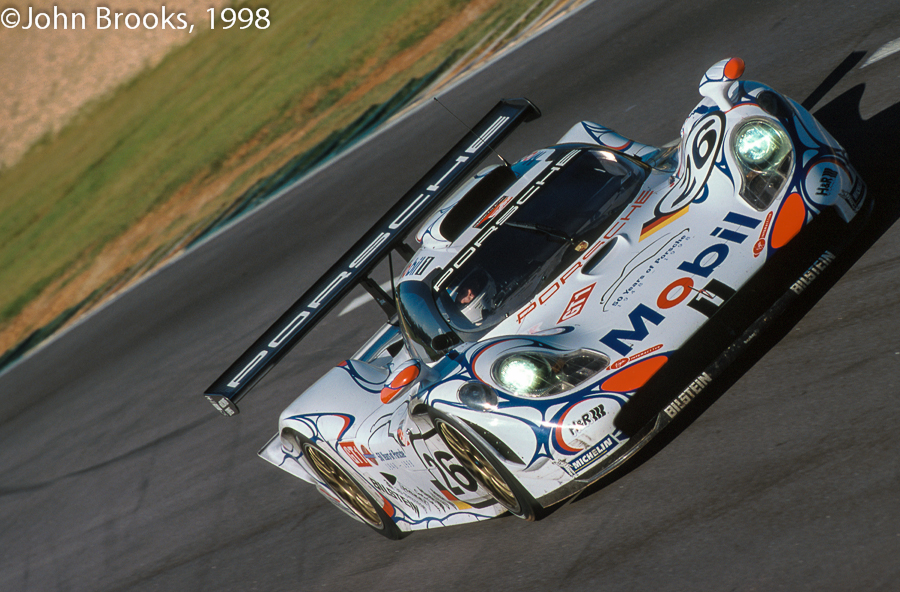
McNish completed his stint with a commanding lead, Dalmas jumped in and continued the strong pace and just before the conclusion of his spell at the wheel came the moment that crashed You Tube’s servers, metaphorically speaking. Following the other ‘werks’ Porsche closely over the notorious back straight hump, the GT1/98 suffered a total loss of downforce in the turbulence and the Frenchman joined the ranks of the Road Atlanta Aviators’ Club.
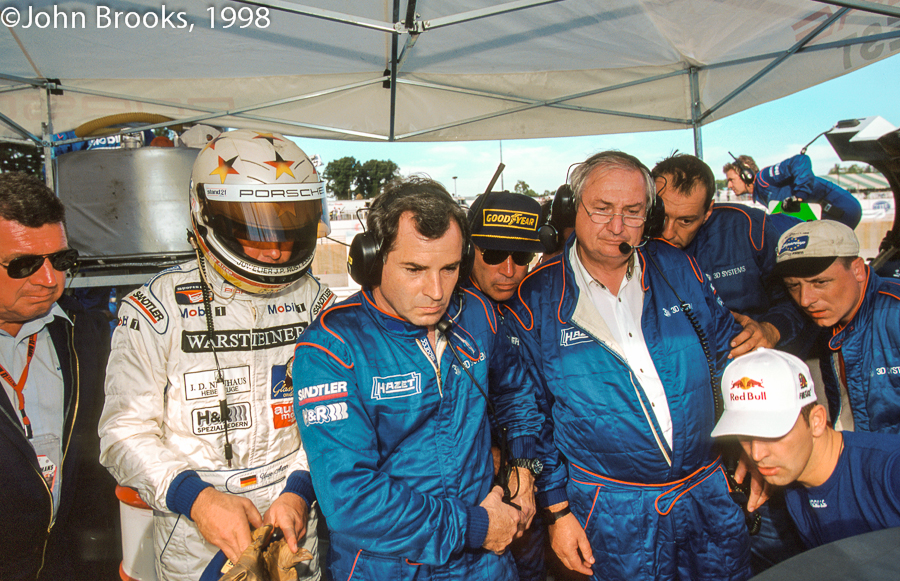
I was in Porsche’s pit awaiting the impending stop, next to a suited and booted Uwe Alzen. Pandemonium descended as the ancient television set that acted as a monitor showed endless slow motion re-runs of the Porsche’s flight. Norbert Singer and the other Porsche crew and management struggled to make contact with the stricken car but soon word filtered through the driver was OK.
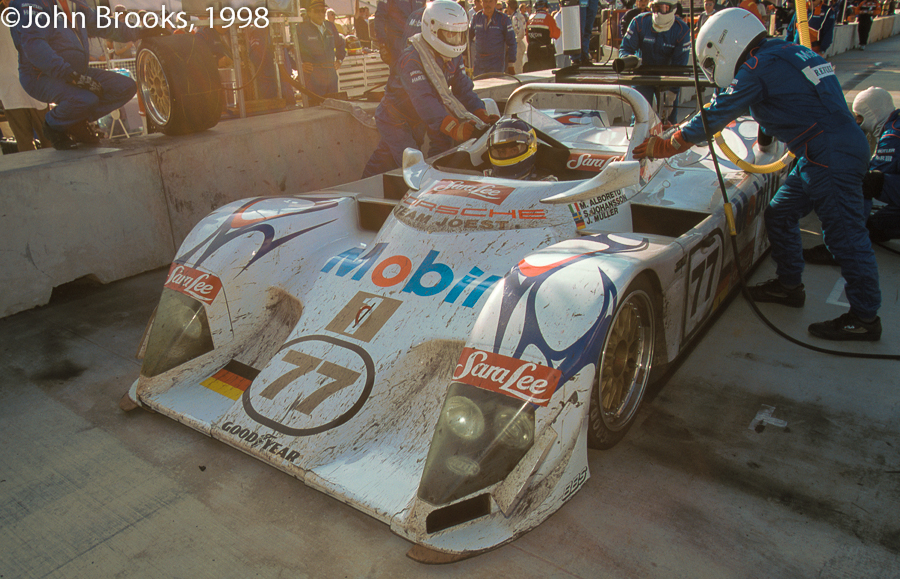
That was quite enough excitement for one race but this event still had a few twists and turns both on and off the track. During a stop to change brake pads on the surviving factory Porsche, I was over the wall snapping away furiously when I became aware of a voice yelling at me to get clear of the car as it was going to leave, Given that the mechanics were still struggling with the red hot smoking pads and the car was on the jacks I shouted back that this machine was going nowhere fast. The yelling had come from Dick Martin, who ran the pit lane for IMSA, a man unaccustomed to having to debate his calls, particularly with a gobby Brit. Next thing I know he is having me chucked out of the pit lane, much to my amazement. A swift intervention from the then hirsute Regis Lefebure, the famous small, but perfectly formed, photographer and world class pffafer calmed us both down. Peace was restored and apologies, mainly from me, were proffered. Later I came to appreciate the efforts that Mr Martin and his officials would make on our behalf, despite the overwhelming evidence that most, if not all, photographers were a bit slow when it came to self preservation. Now retired, he will be missed this weekend coming, not least by me. I have to say that IMSA Officials set the bar high when it comes to working with the media, especially the PITA snappers, others might watch and learn with profit.
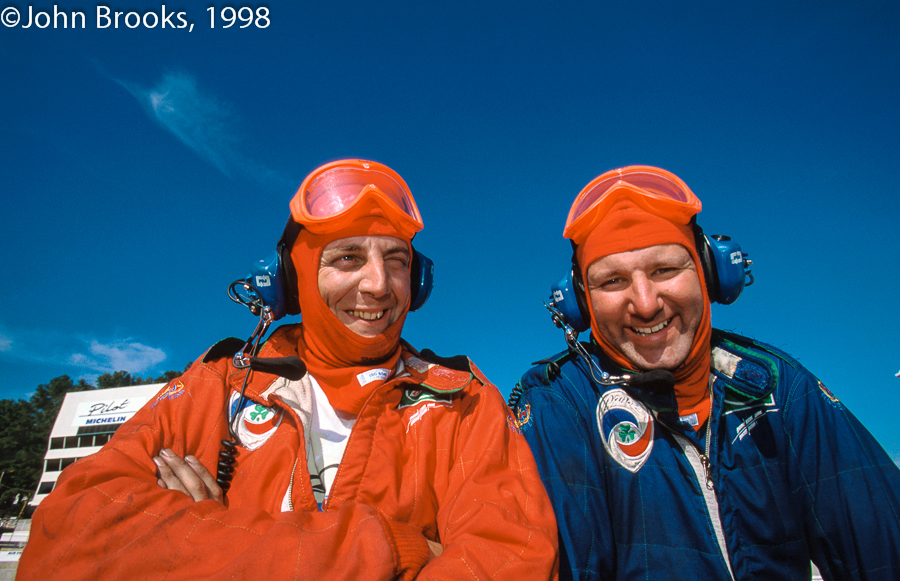
One of the features of the first PLM was getting to know the band of American photographers. These guys would become my companions in the next four seasons as I tramped around from track to track in the USA and Canada, a camp follower of the ALMS circus. Some are still friends, some have left the scene, and some I still don’t want to think about; so Regis, Rick, Mike, Pete, Hal, Bob, Rich, Tim, Martin, Andy, Richard and Dennis take a bow. I am sure there were plenty of others but these guys were around that fall of ‘98 and my memory is getting a little hazy.
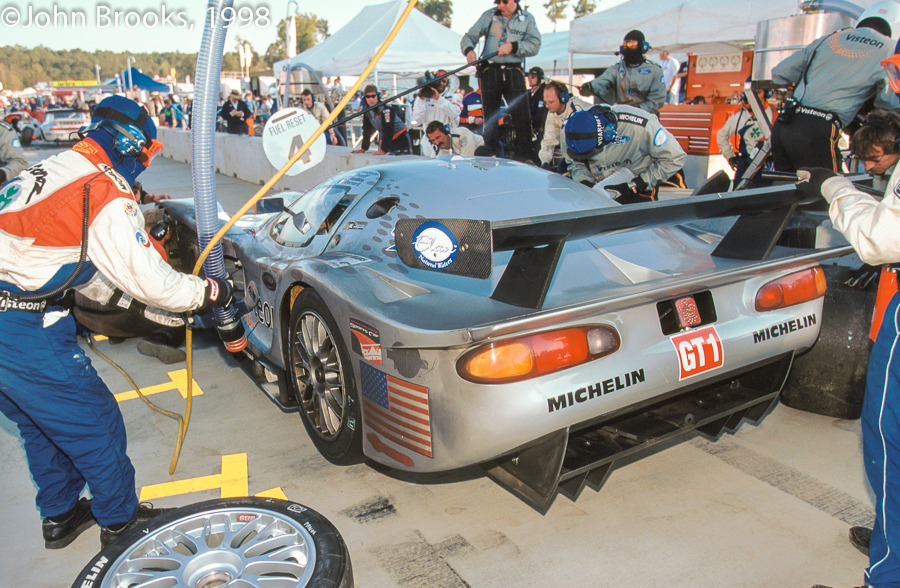
Back on track it looked as if Doctor Don would celebrate a famous victory for the car and team bearing his name in the race that he created, however the engine went bang with the chequered flag almost in sight. Motorsport is often a cruel past time and this was almost too much to bear for Tony Dowe’s crew.
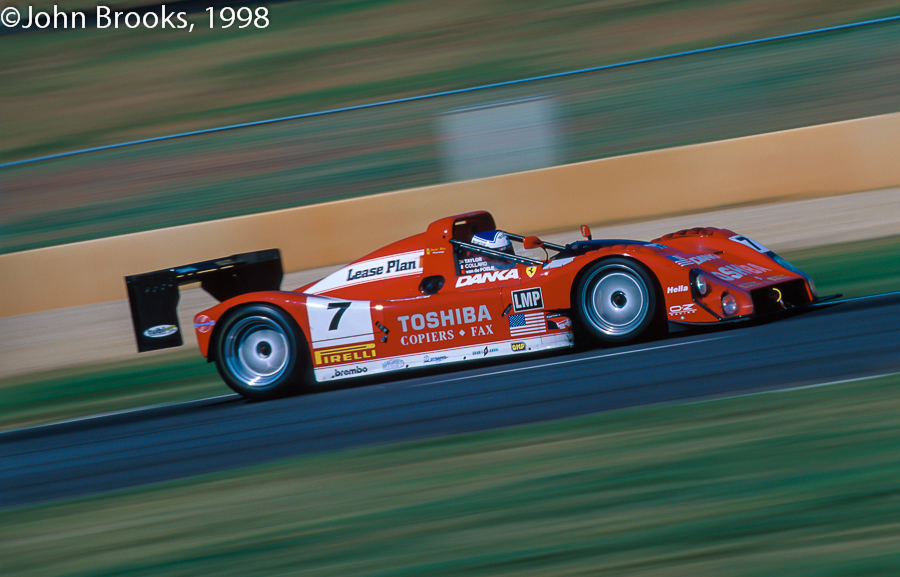
After 9 hours 48 minutes of track action the Doyle/Risi Ferrari 333 SP, driven by Wayne Taylor, Eric van de Poele and Emmanuel Collard crossed the finish line just over a minute in front of the factory Porsche LMP1/98. Third was the Champion Racing 911 GT1 EVO.
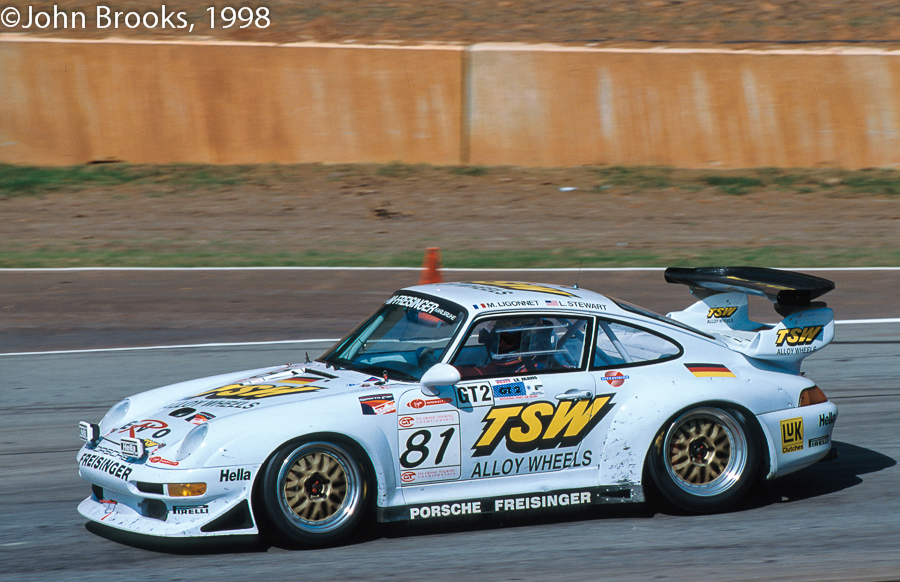
GT2 honours fell to Michel Ligonnet and Lance Stewart in the Freisinger Motorsport Porsche 993 GT2R, while the local GT title went to the Porsche of Pete Argetsinger, Richard Polidori and Angelo Cilli. It had been a race to remember and an event to celebrate.
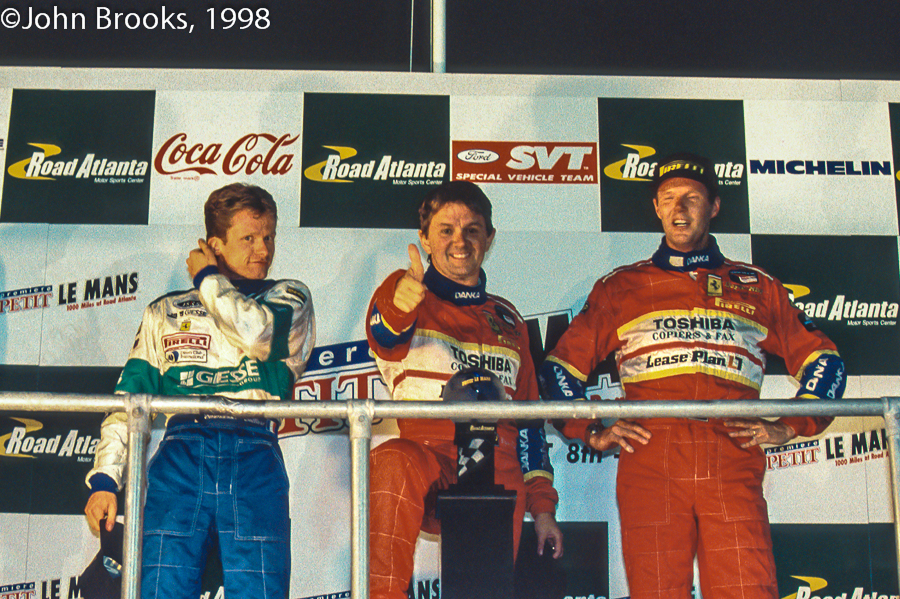
Celebrations……….yes celebrations, There was an touch of madness in the air that Saturday, the first example I observed was Luigi Dindo, the main man at Michelotto, who had built the winning car, singing, if you could call it that, after enjoying a good quantity of the victors’ Champagne. “Daaytonaa, Seeebring, Petit Le Mansss” he chanted, as pleased as punch with the 1998 record of the glorious sounding, but frankly outdated, Ferrari, we still laugh about his operatic skills. Certainly the V12 had a better tone.
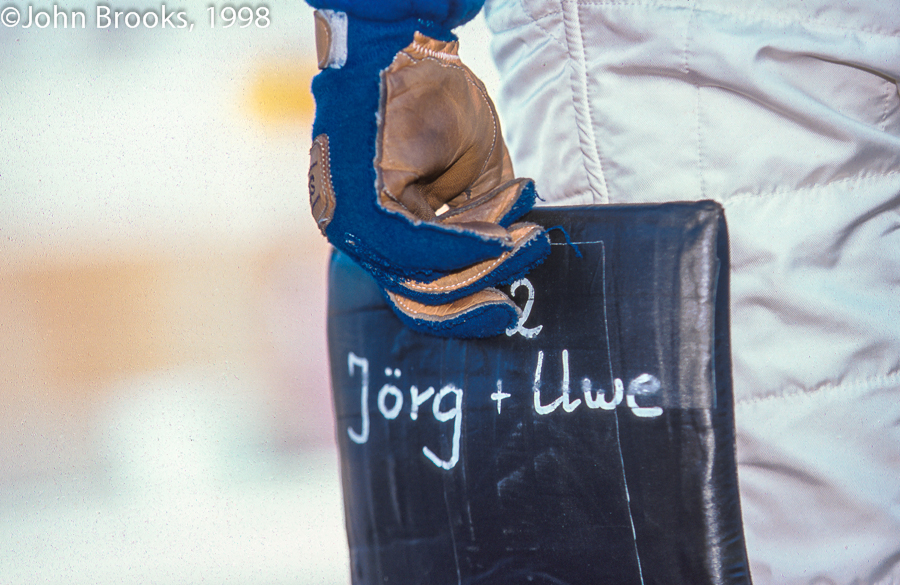
More celebrations were to be found in Paddy’s a little later. Remember this was the time before digital cameras, so no endless nights pumping out dross on to the World Wide Web, as happens these days. No, we packed up our gear, threw the film canisters into a bag and headed out to the bar, oh happy days!
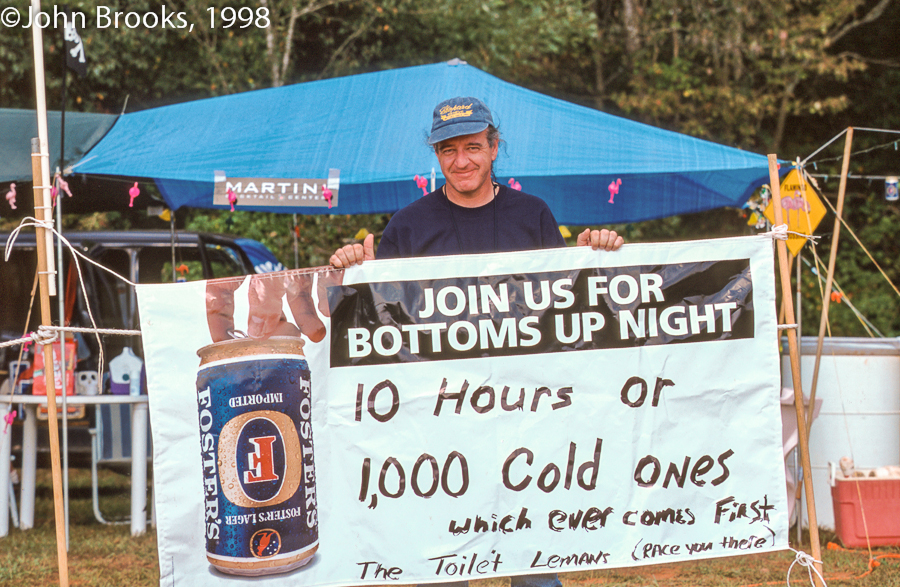
I spent a considerable amount of time while in Atlanta in the company of Porsche guru, writer and historian, Kerry Morse, so much so that we developed something of a reputation for…..well I’ll leave that to your imagination but we usually inspired a reaction from the other denizens of the Paddock. Somehow, as if by magic, we ended up after the race at Paddy’s with the DPR crew led by Dave Price himself. I recall much tall tales and laughter and the bloody bar running out of beer, they had little experience of the British and German motorsport community and had grossly underestimated our capacity for getting refreshed. After a few hours of merriment Morse and I repaired to a local establishment called The Waffle House. It was my first encounter with this chain and certainly it was an eye opener, queuing at around 2.30 am for a breakfast with what seemed half the population of Braselton. If I recall Morse was decidedly uncool and asked the waitress for separate checks.
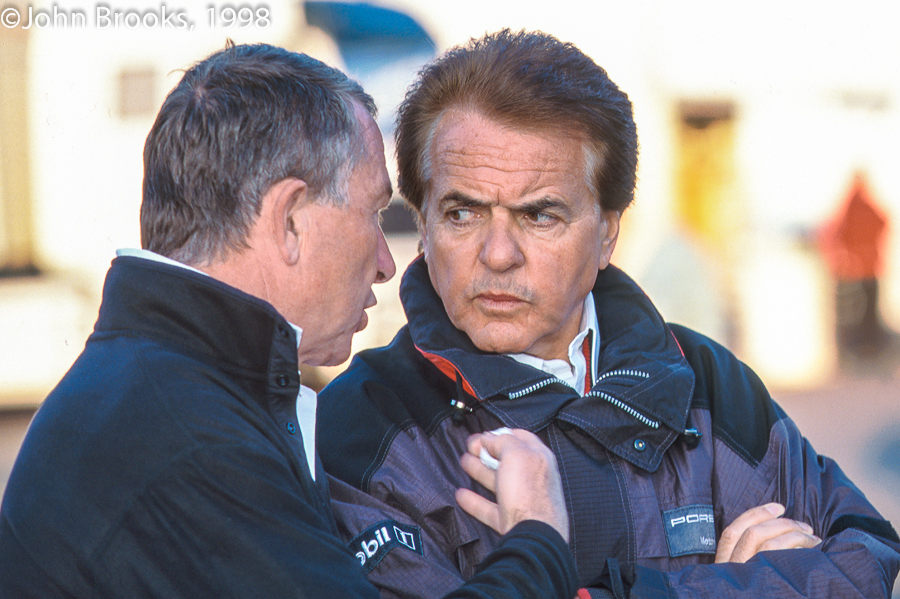
For the next day a vague plan had been hatched to roll over with McNish and a few others to Talledega to see the NASCAR race, till the locals laughed at us for thinking that we could just rock up without tickets and get in. The lateness of the hour that we got back to the hotel also contributed to our decision to change plans and take things easy. So Morse instead headed for the airport to return to SoCal, I had Homestead on the radar, to be followed a week later by the Monterey Peninsula.
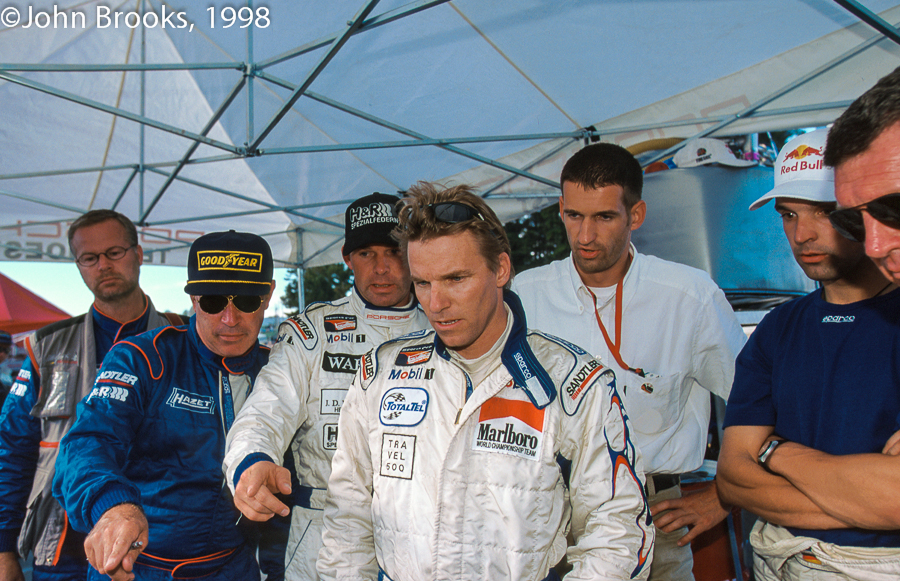
The premier Petit Le Mans had been a great event, we had witnessed a star being born. The shockwaves generated by this new kid on the block resulted in a tsunami of top quality racing down the years cresting with the 2008 ALMS season, arguably the finest motorsport on the planet that year, of any shape or size.
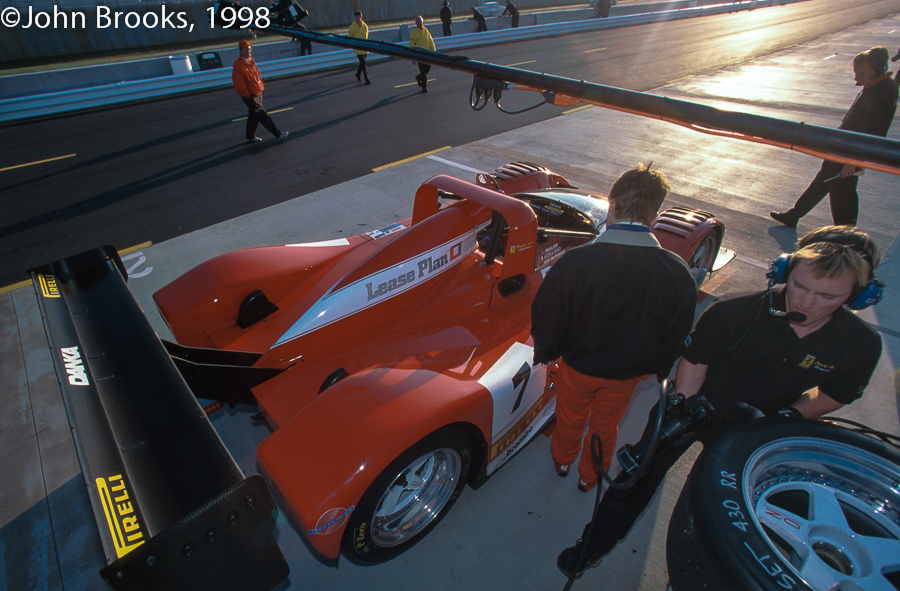
Perhaps this ramble should conclude here with a touch of class, God knows it needs it, so I leave you with this.
In a passage in his master work “Fear and Loathing in Las Vegas”, one of my literary heroes, Dr. Hunter S. Thompson, caught that sense of ache and regret in looking back and knowing that the land of lost content was gone forever. He was referring specifically to the scene surrounding San Francisco in the middle ’60s but this condition is universal amongst mankind as they follow their course from beginning to end.
“Our energy would simply prevail. There was no point in fighting—on our side or theirs. We had all the momentum; we were riding the crest of a high and beautiful wave.…So now, less than five years later, you can go up on a steep hill in Las Vegas and look West, and with the right kind of eyes you can almost see the high-water mark—that place where the wave finally broke and rolled back.”
John Brooks, October 2012
Ps Apologies for all the tilt and shift attempts at “creativity”, I put it down to prolonged exposure to Morse, that and Moonshine.
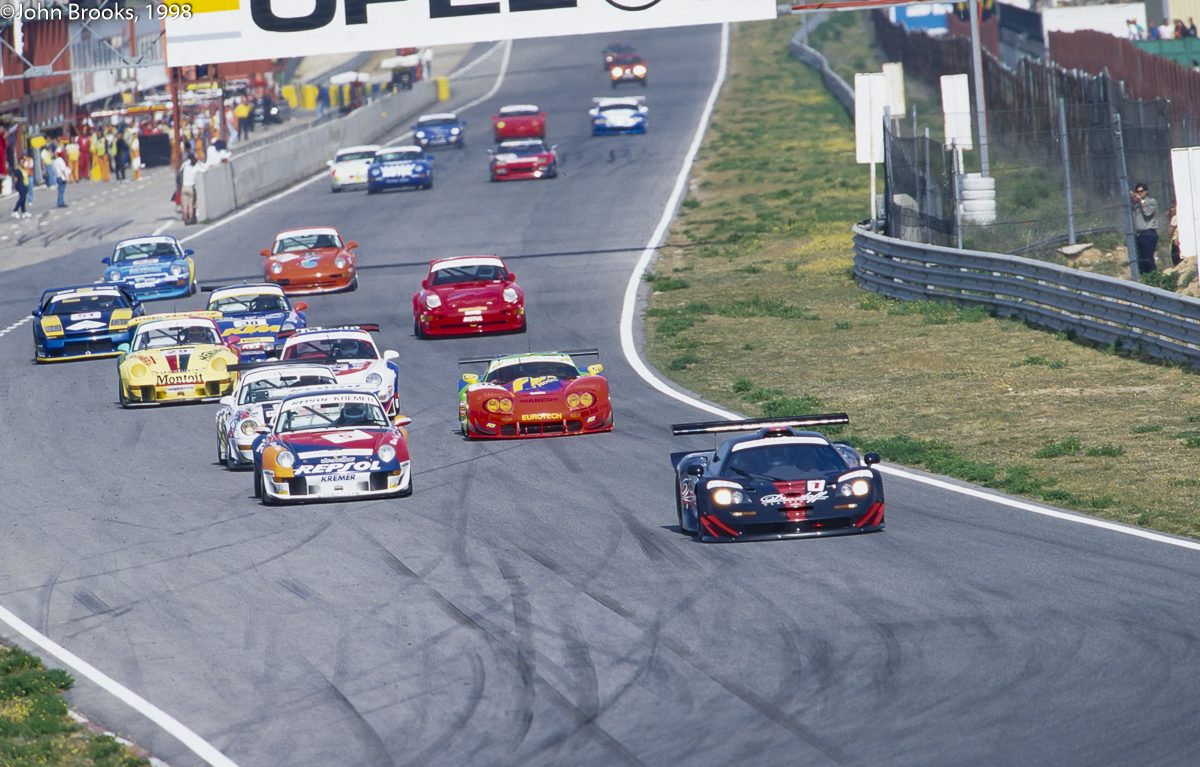
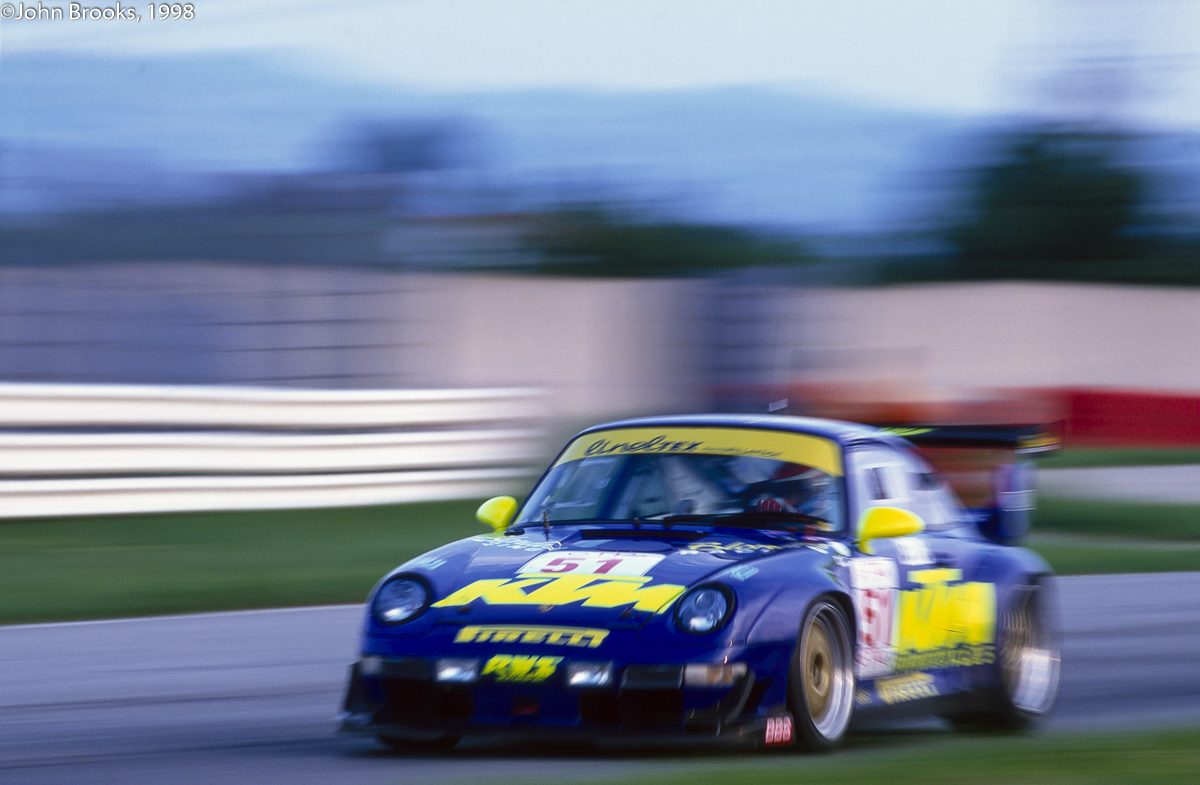
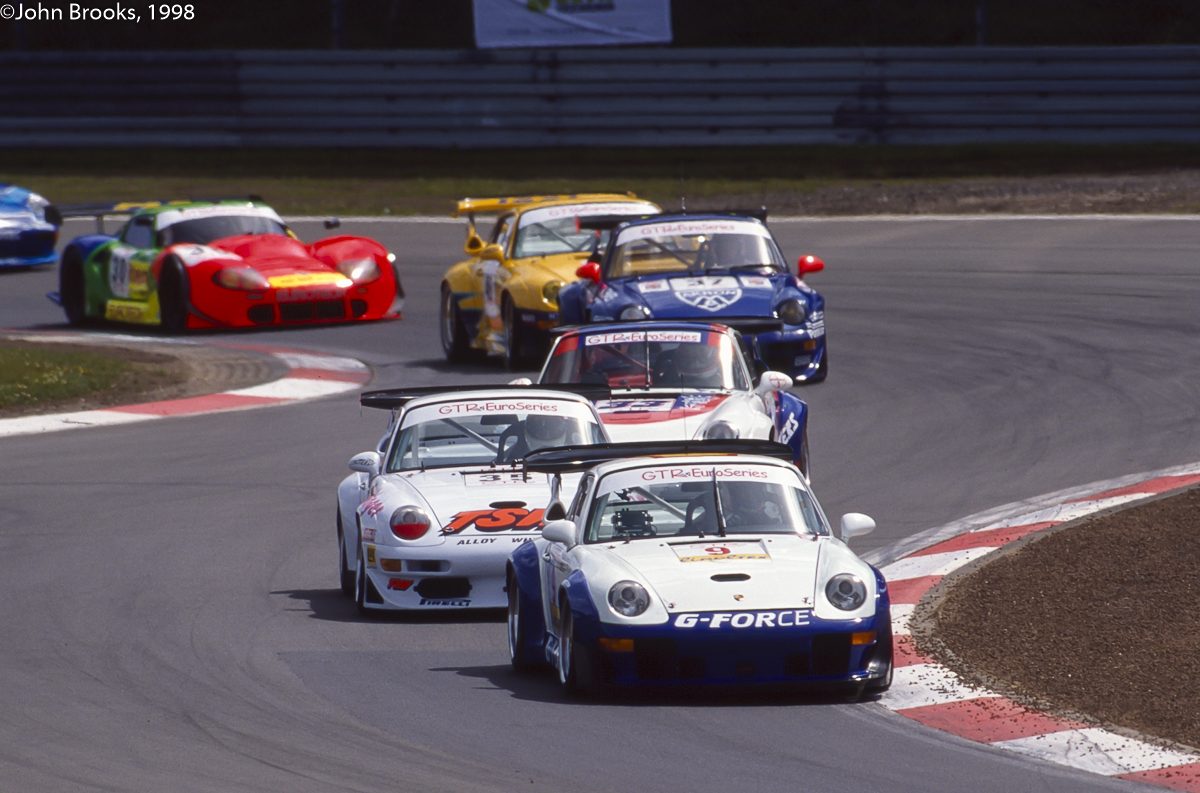
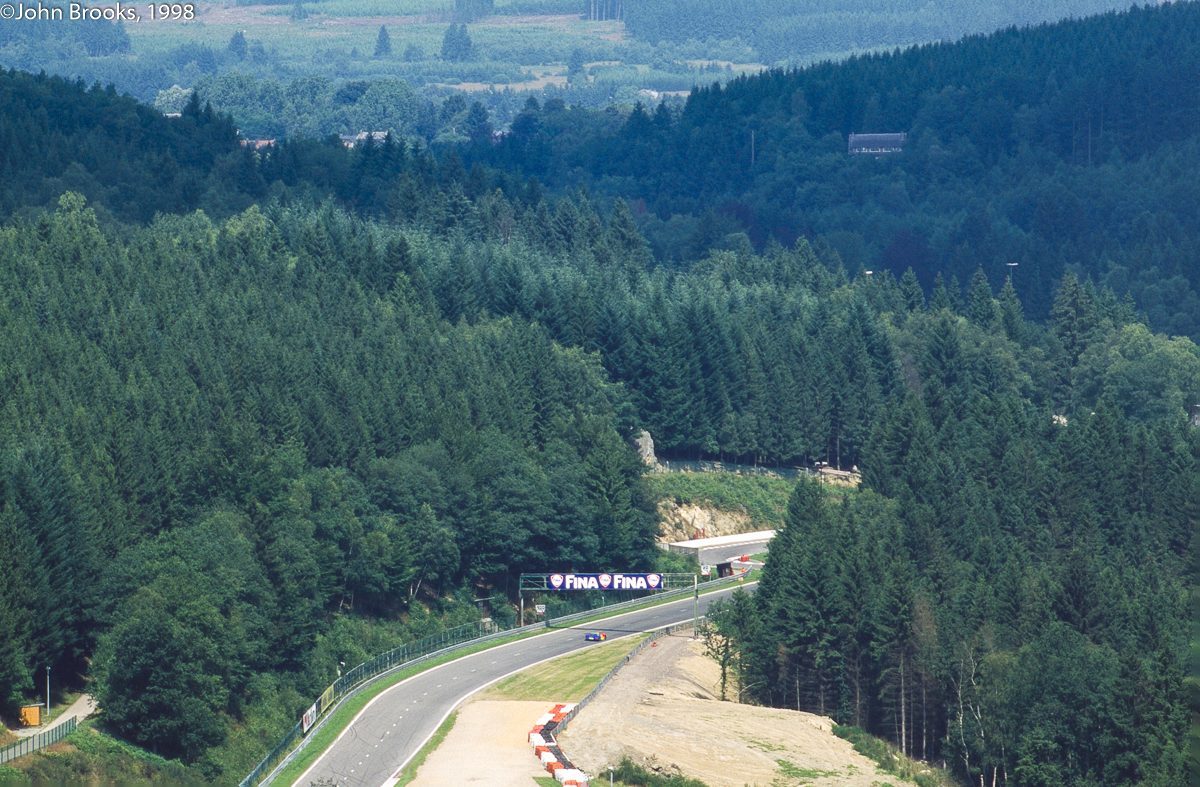
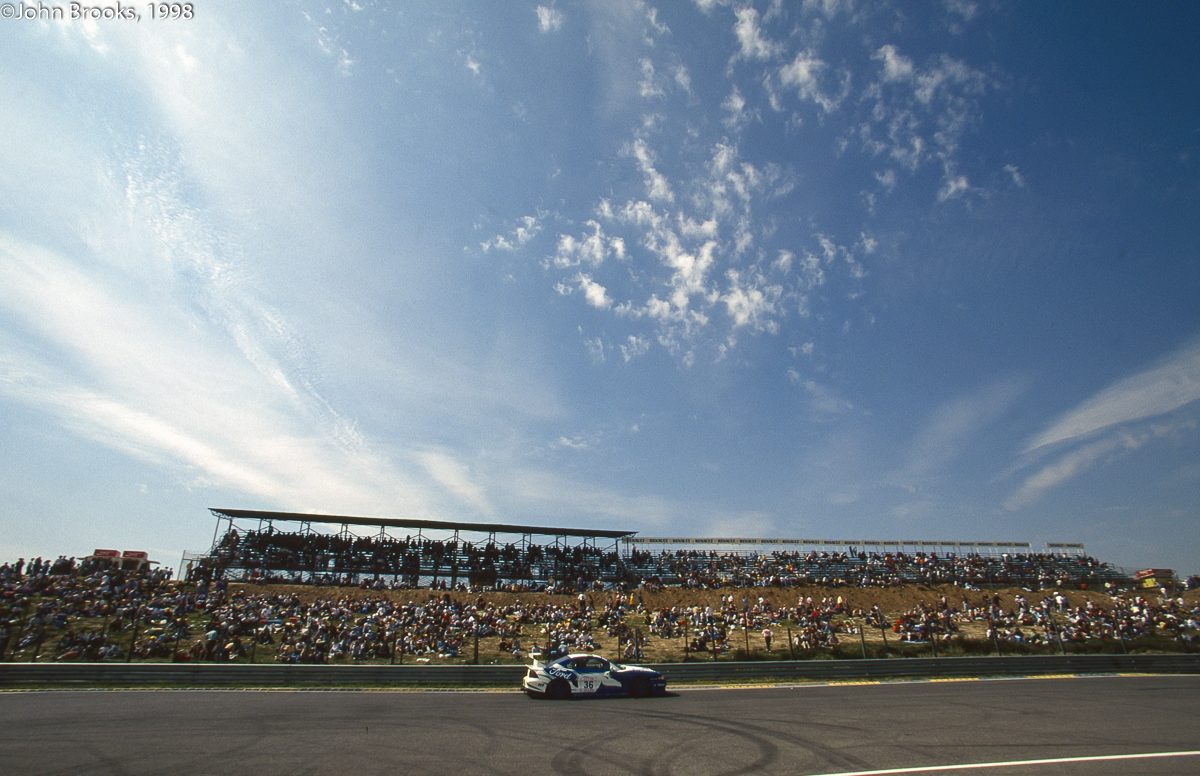
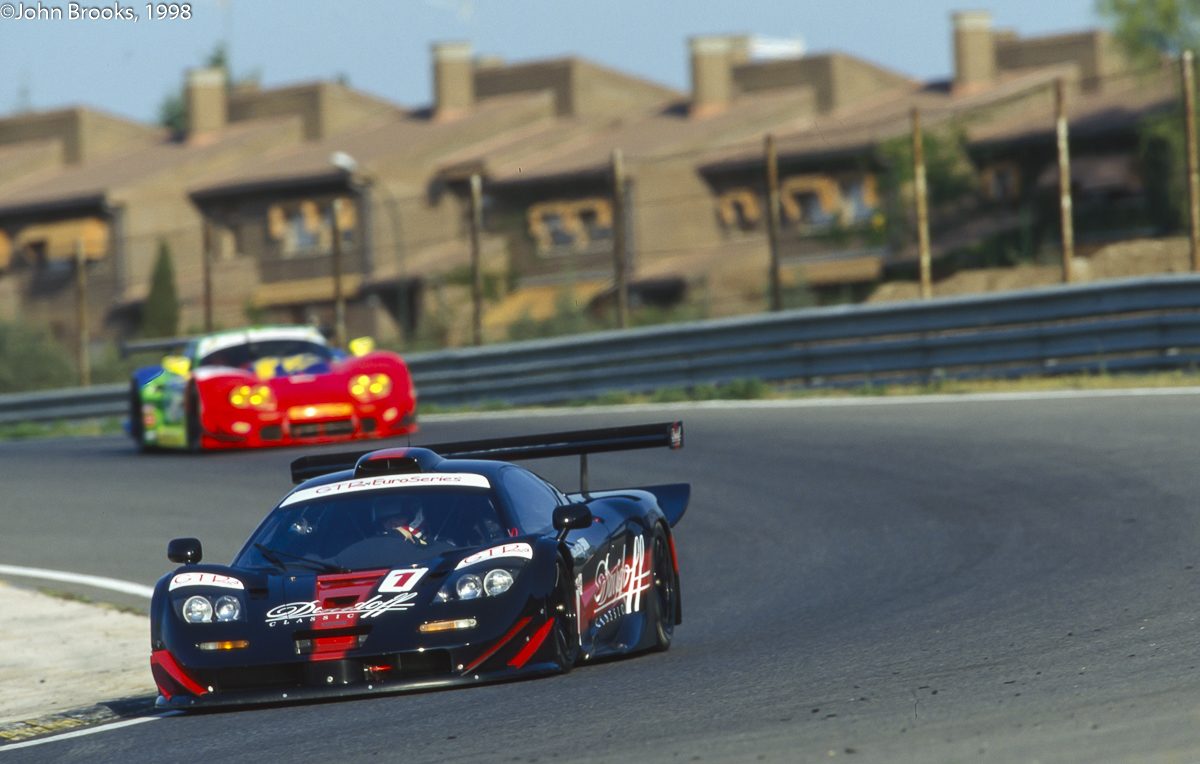
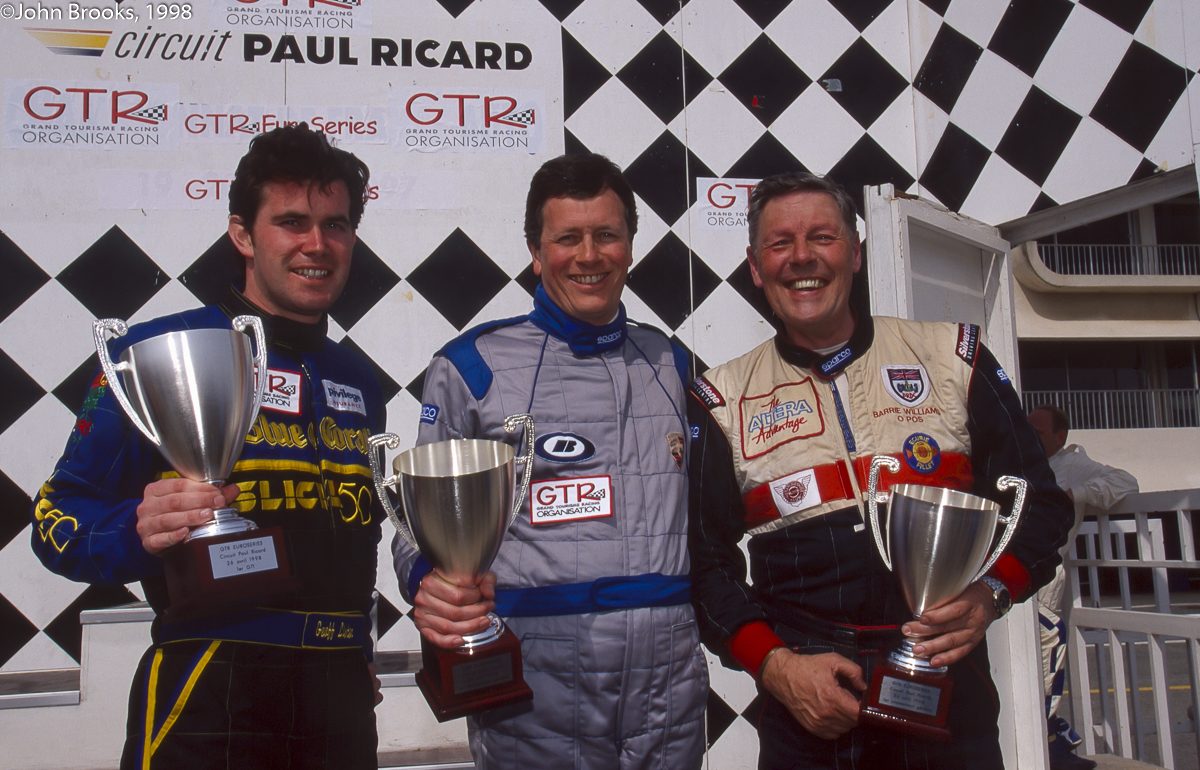

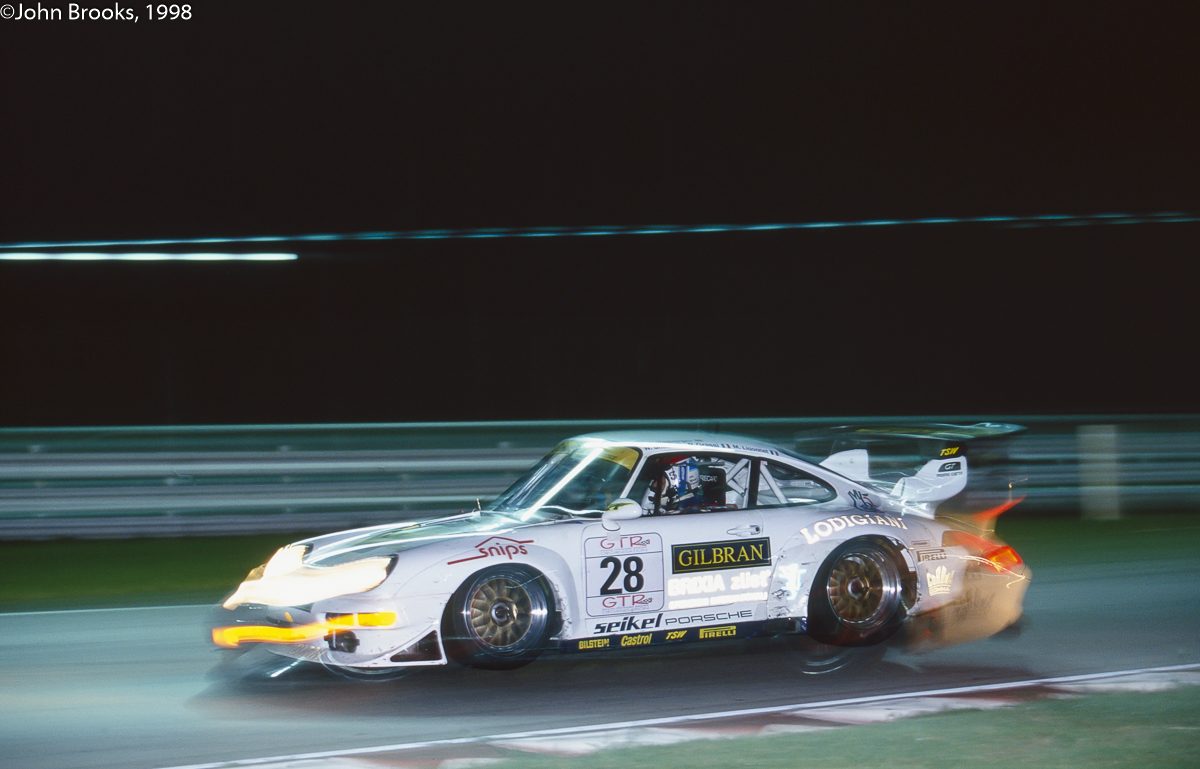
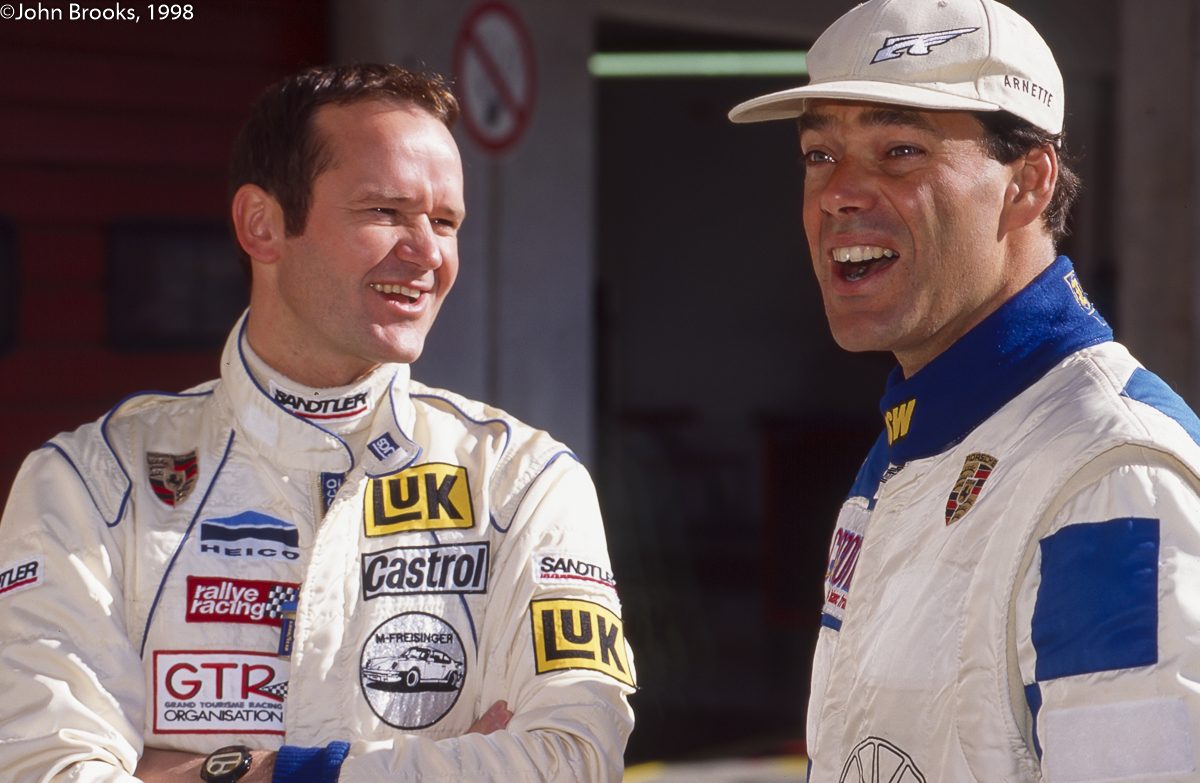
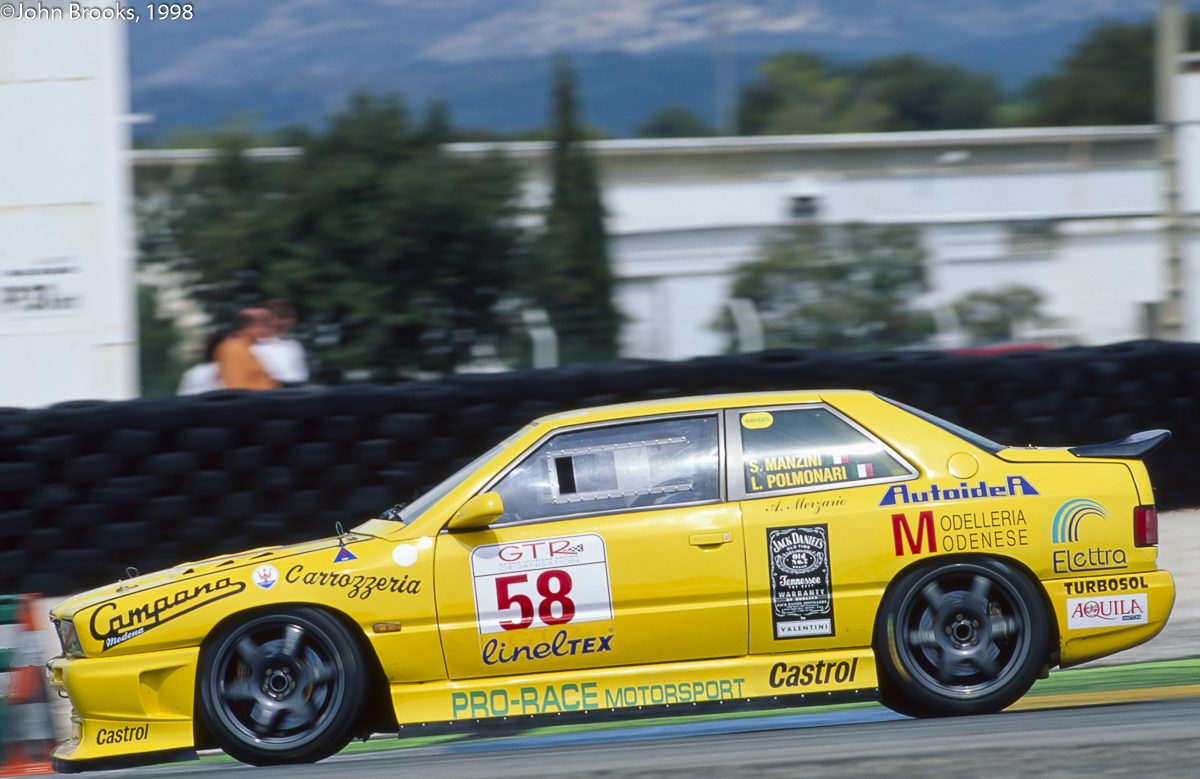
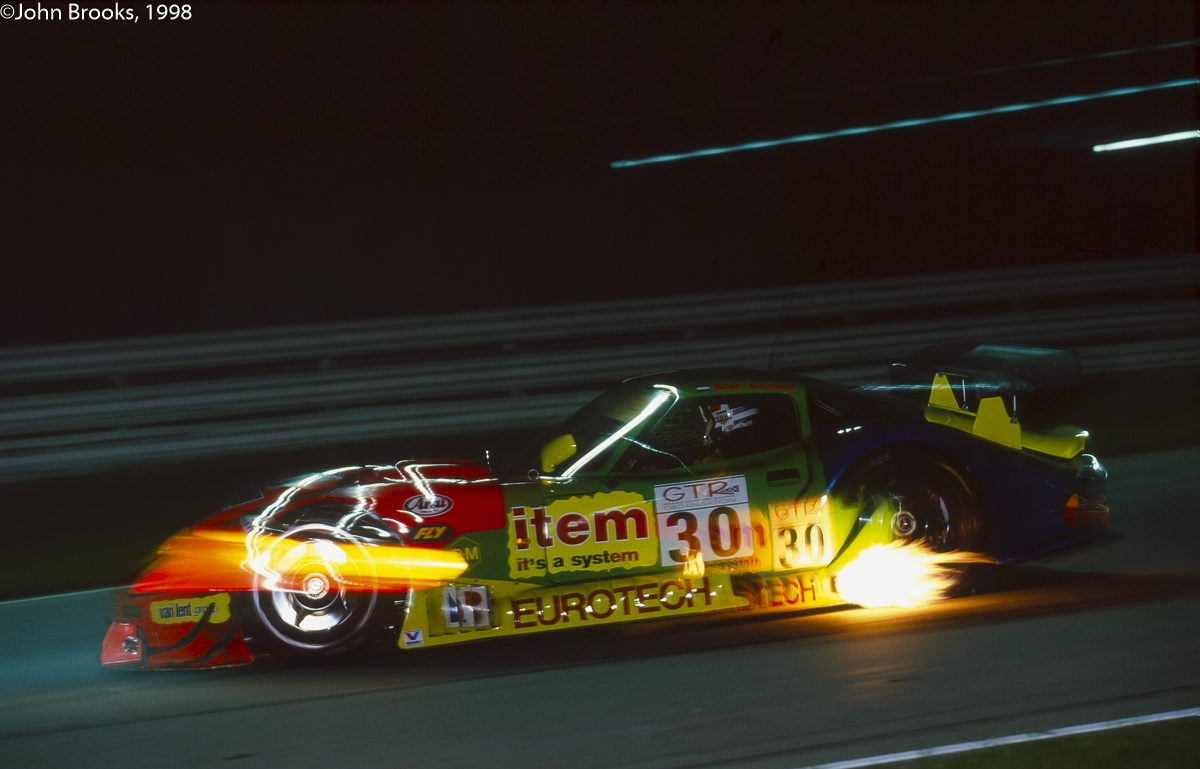
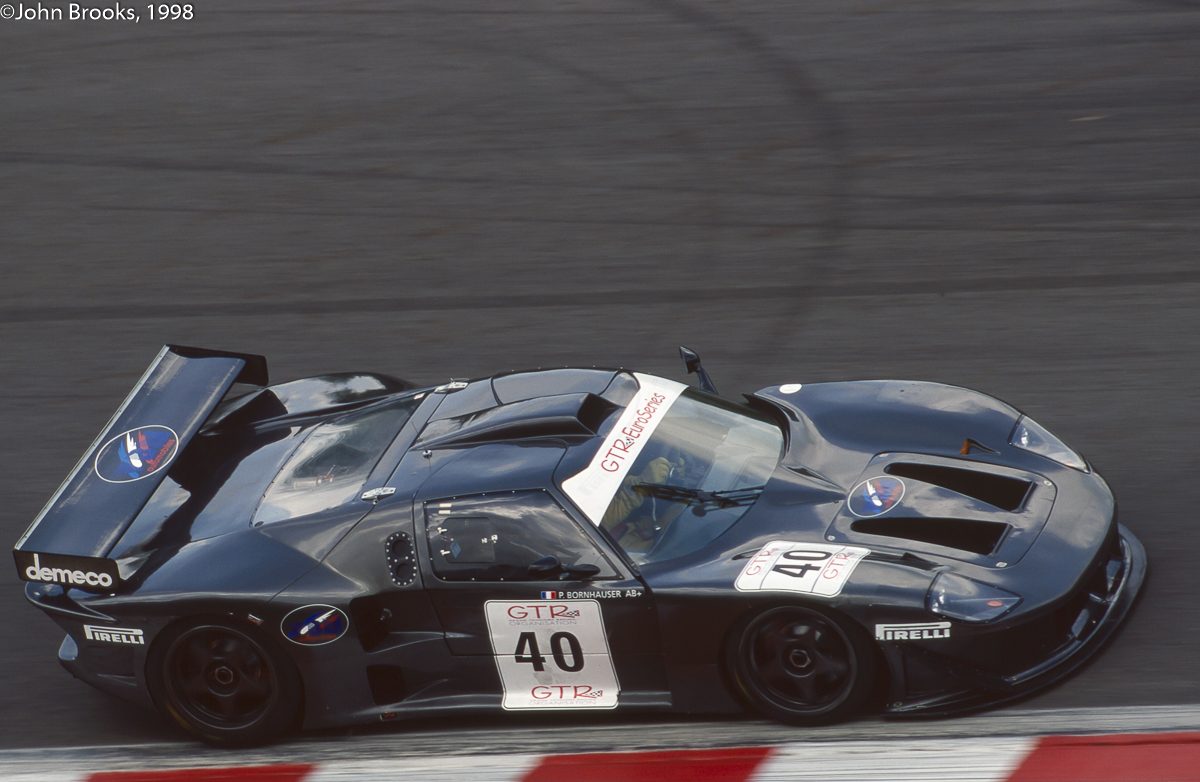
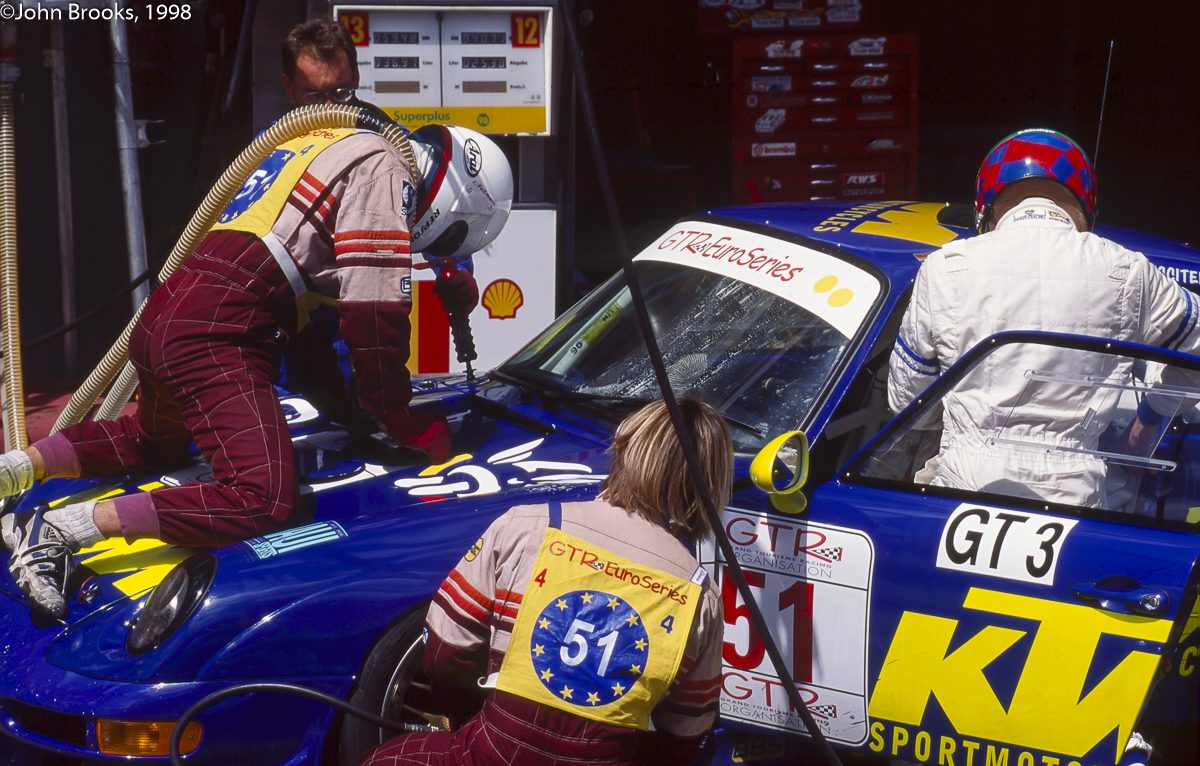
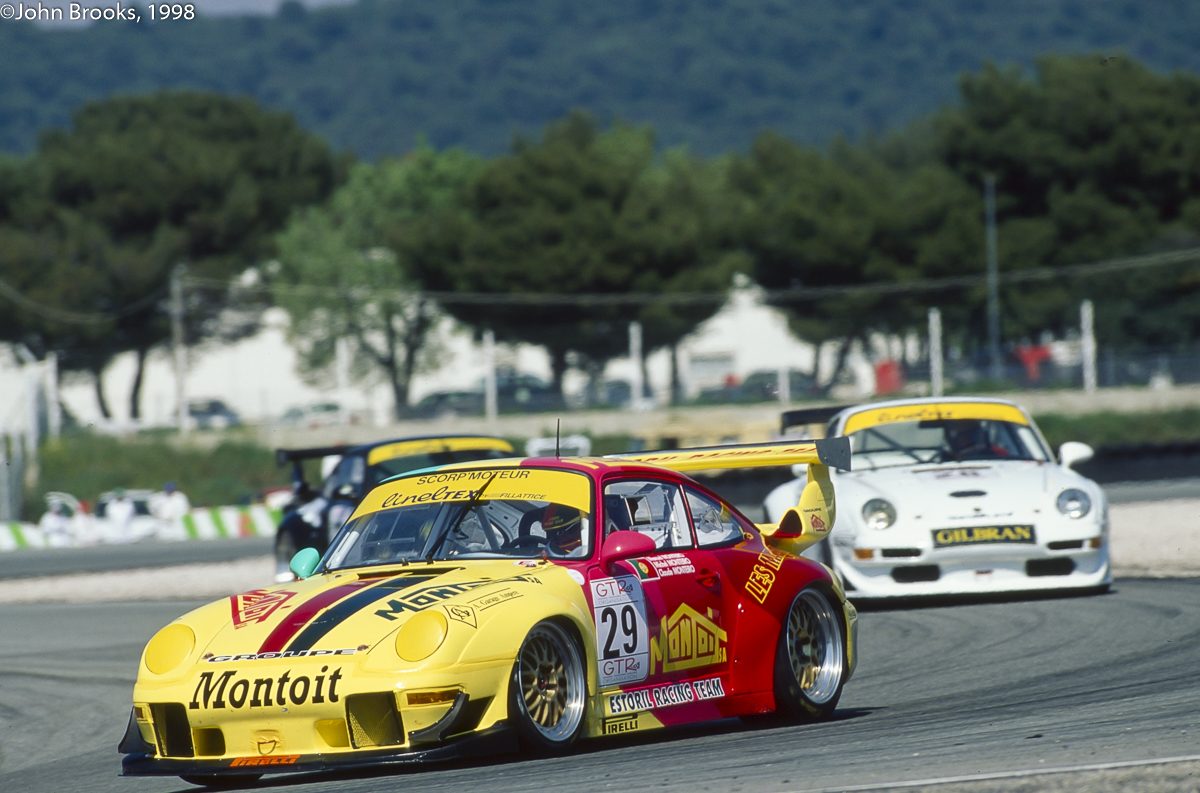
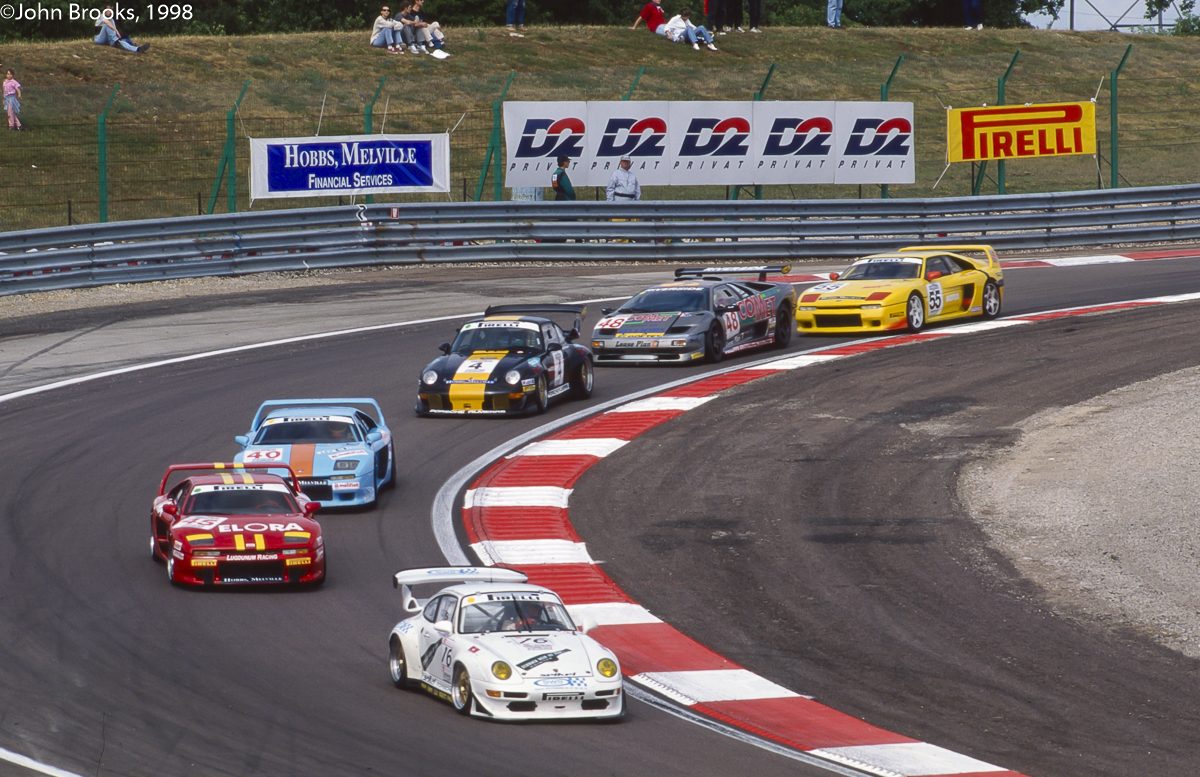
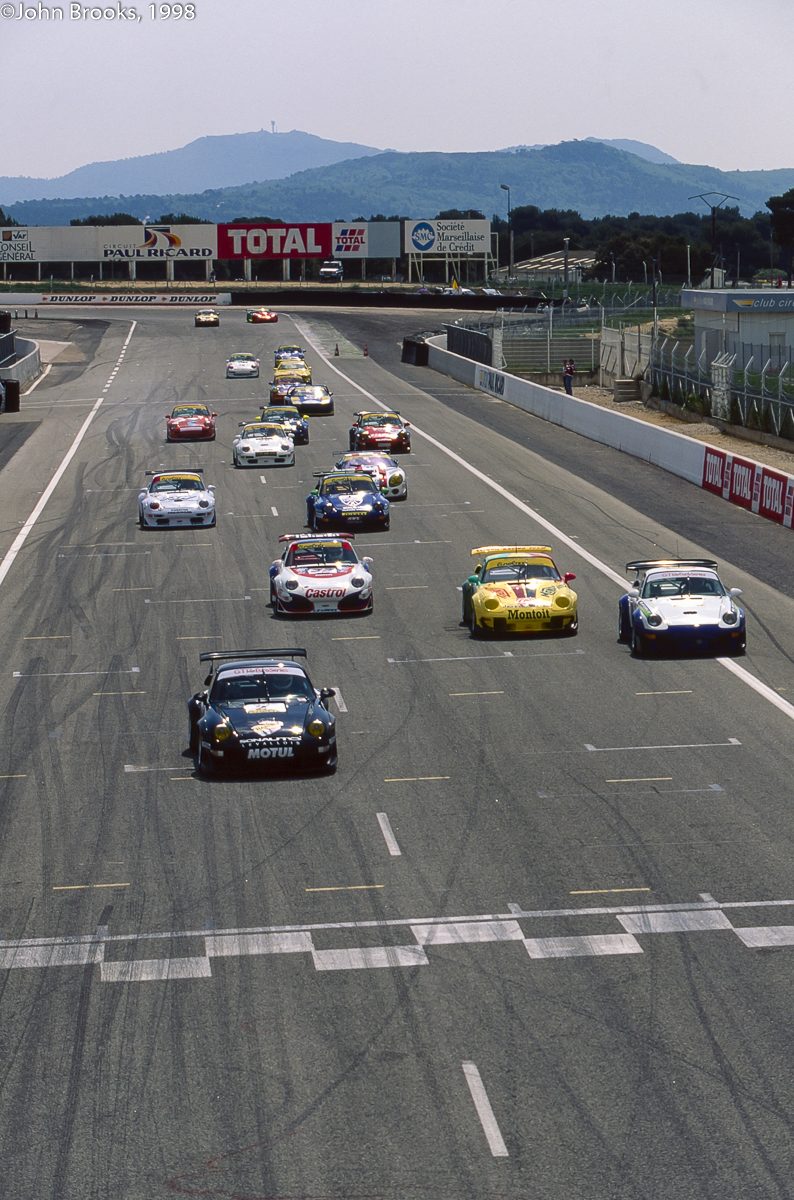
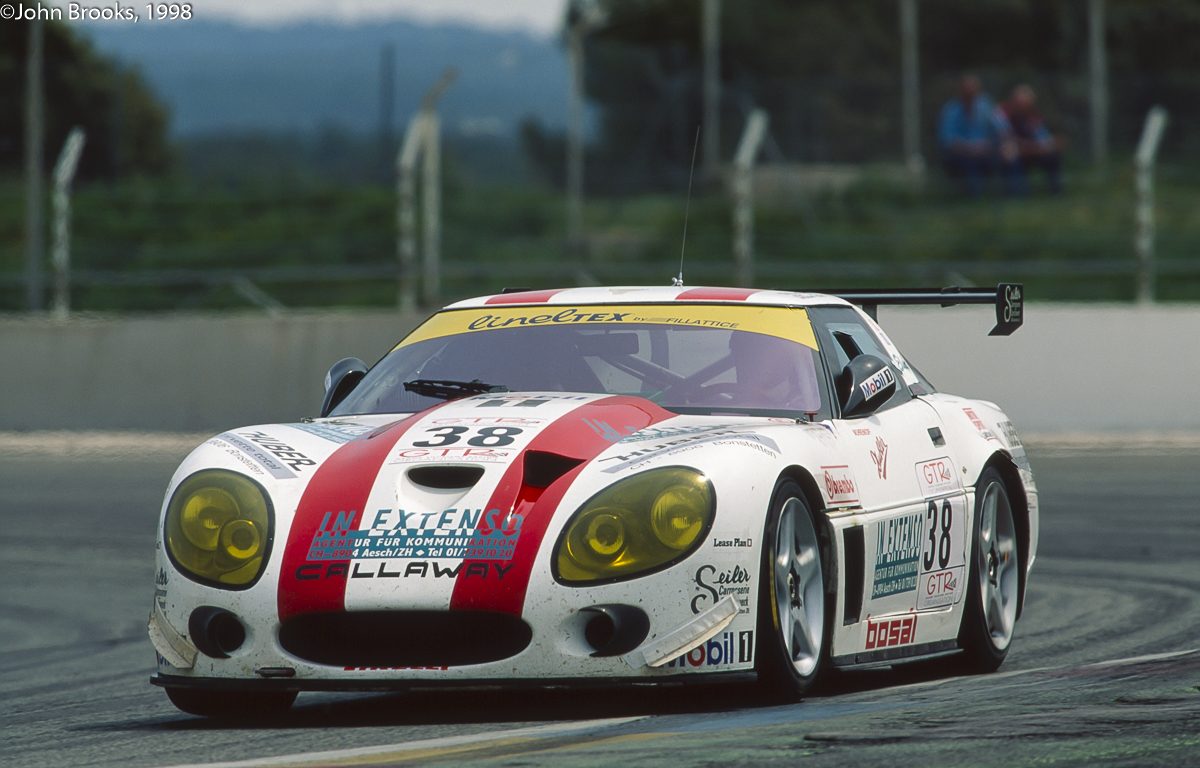
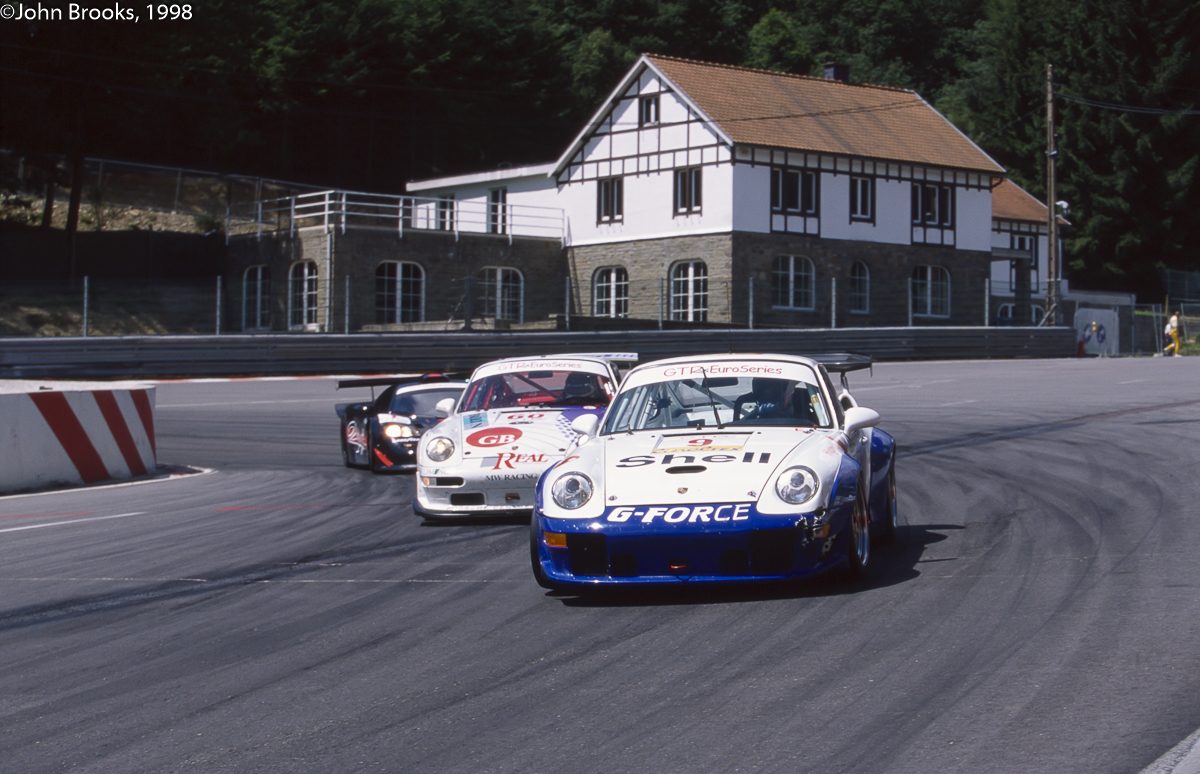
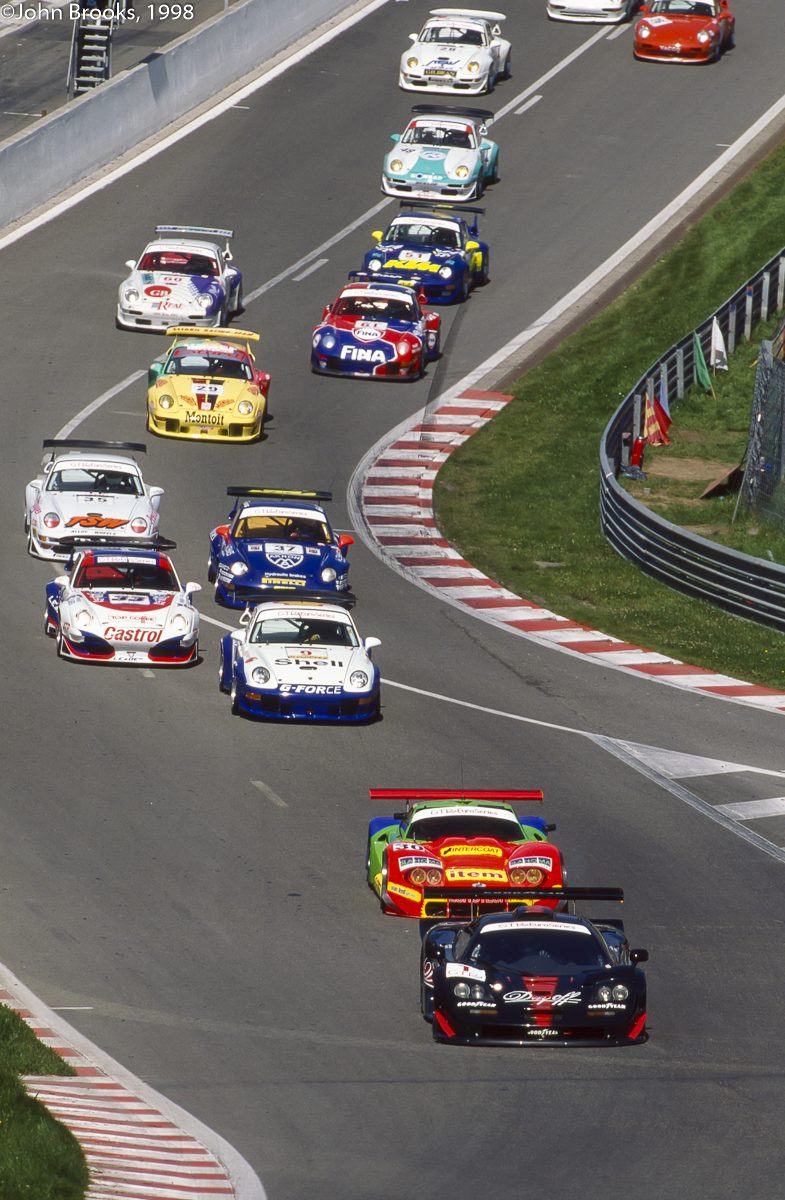

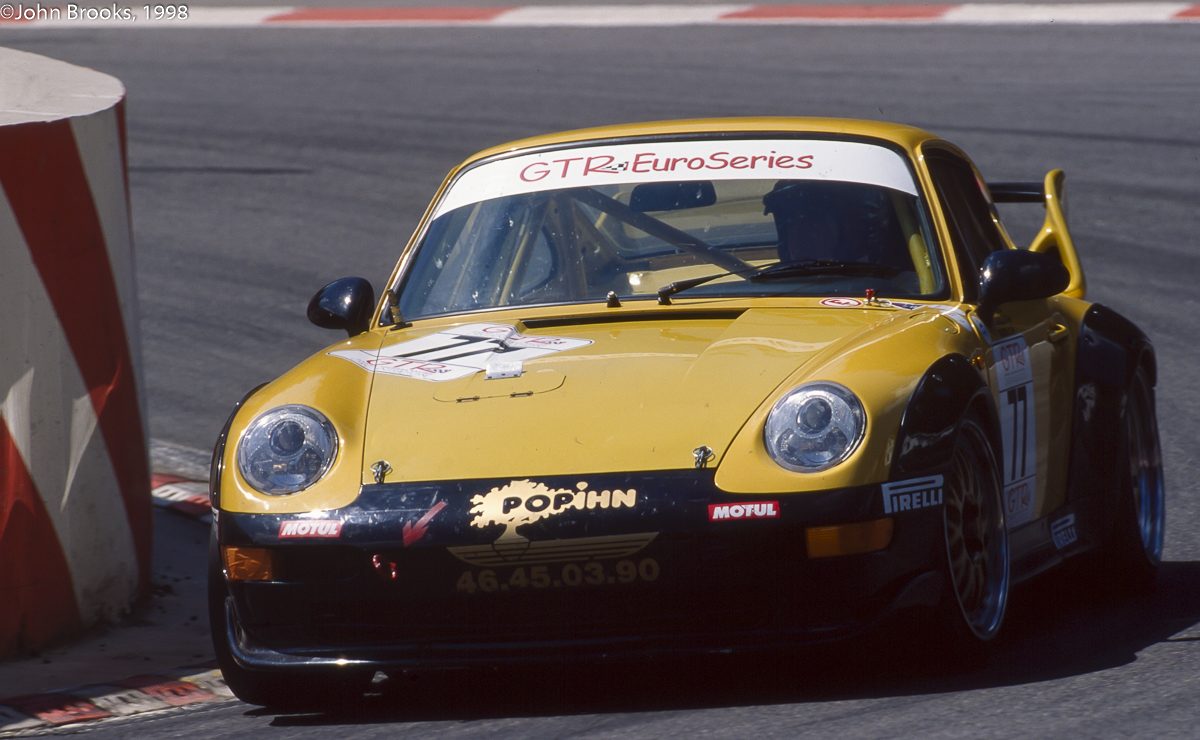
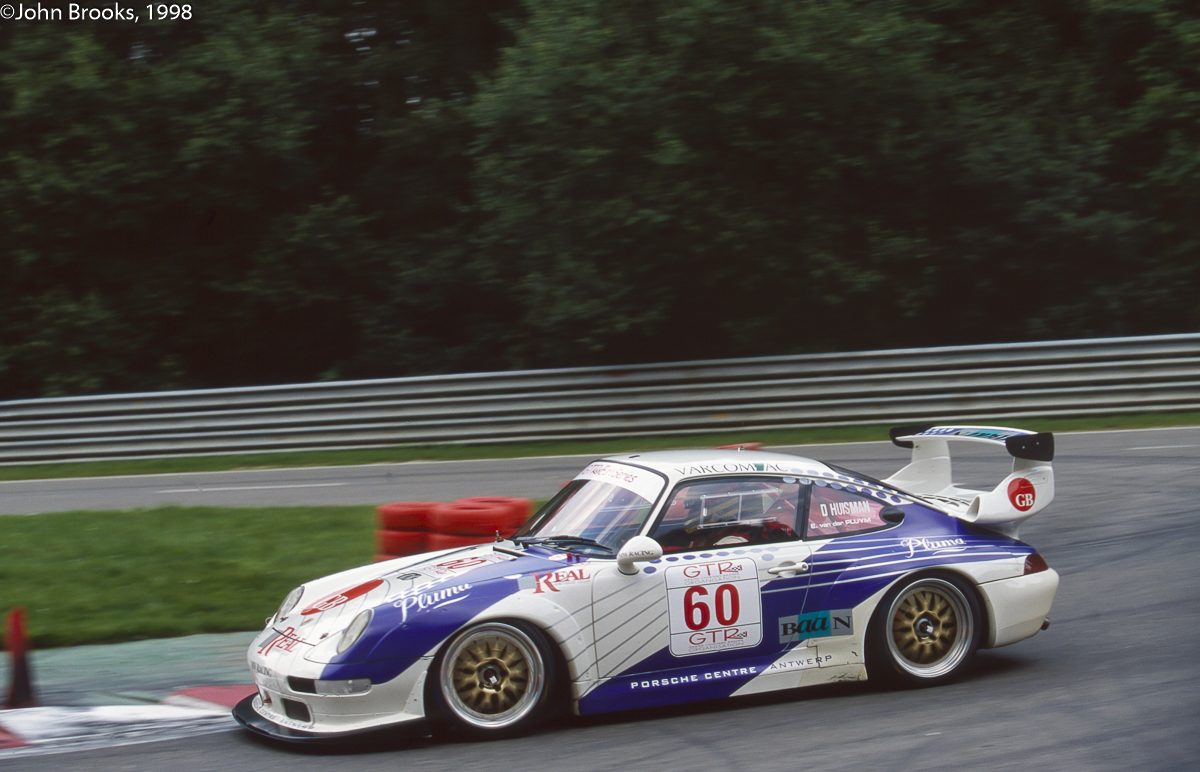
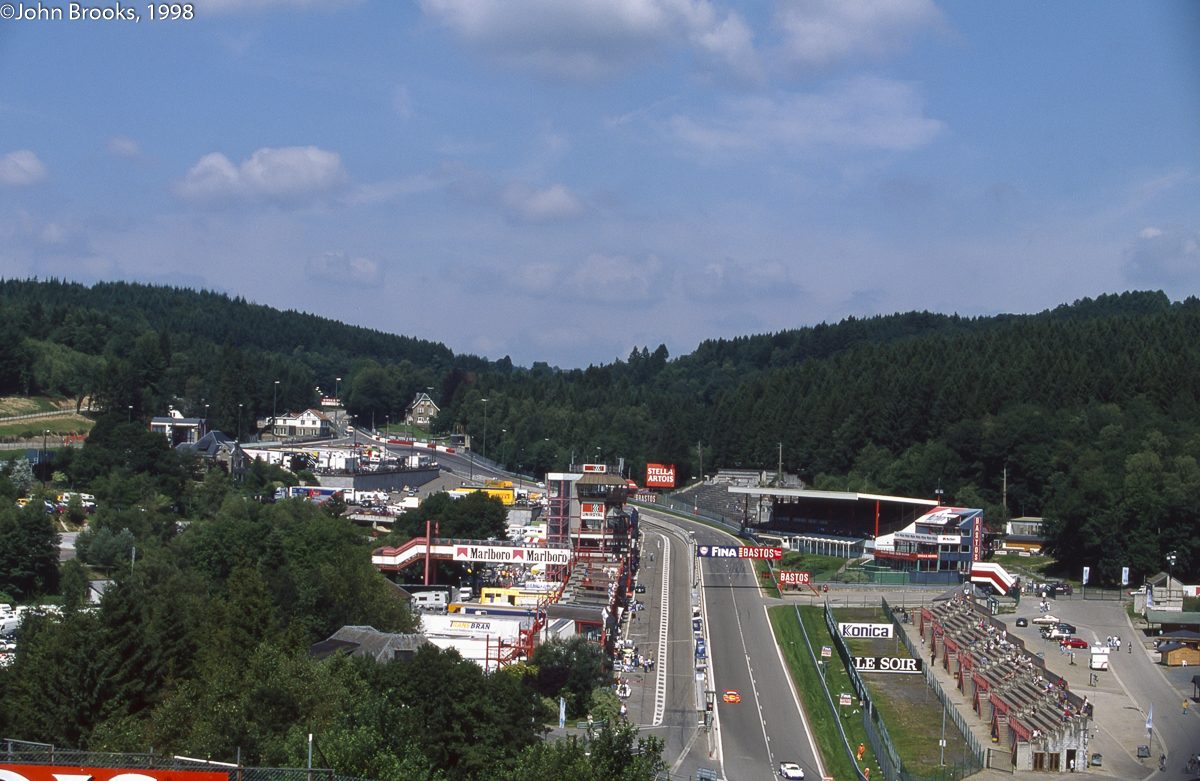
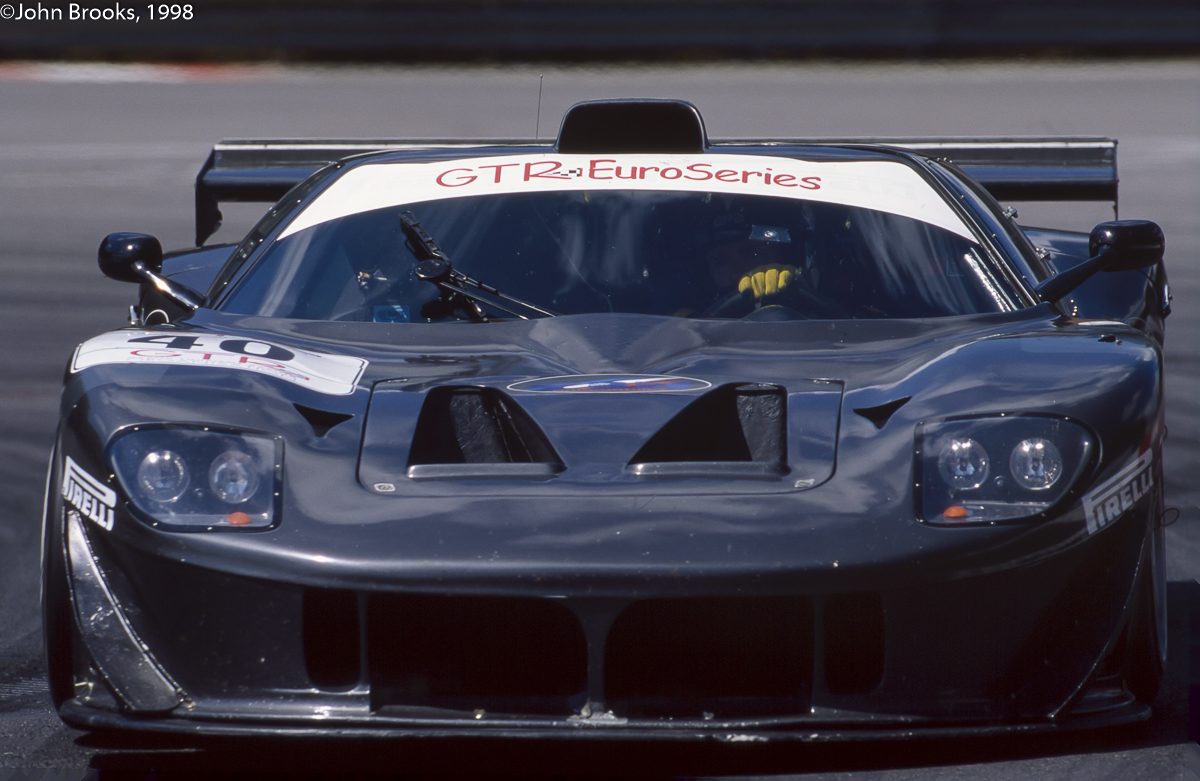
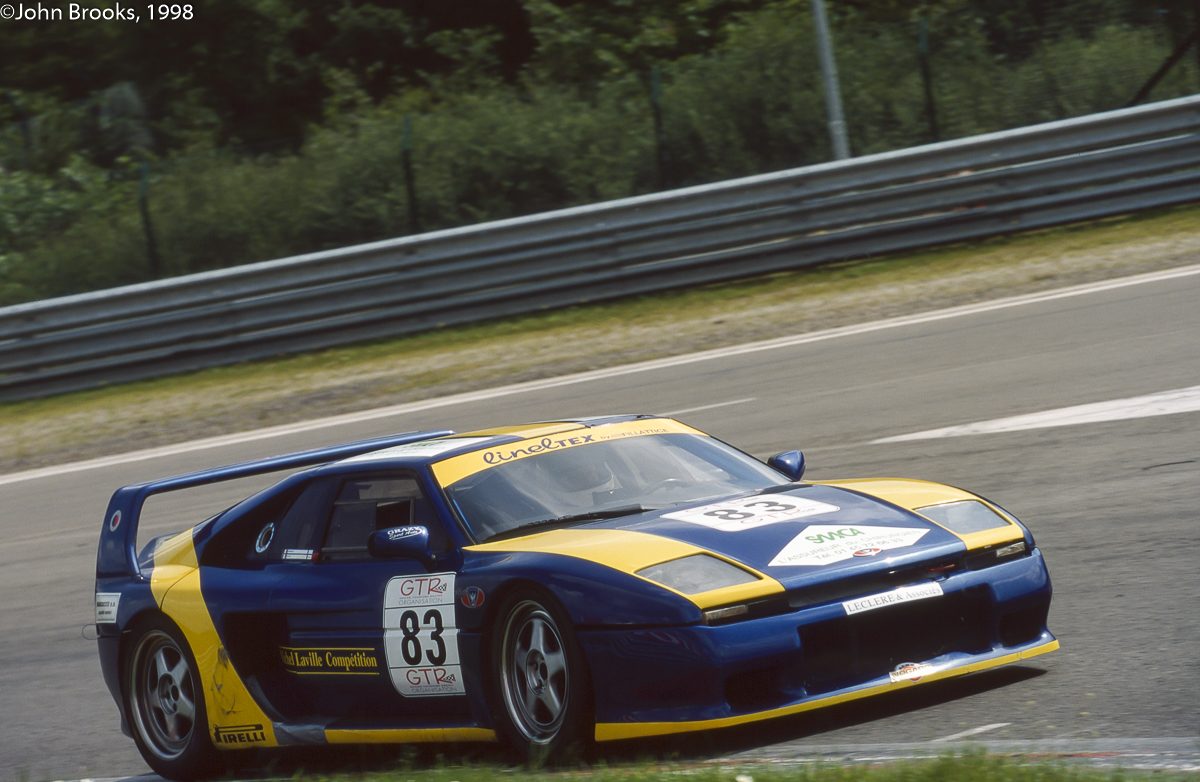
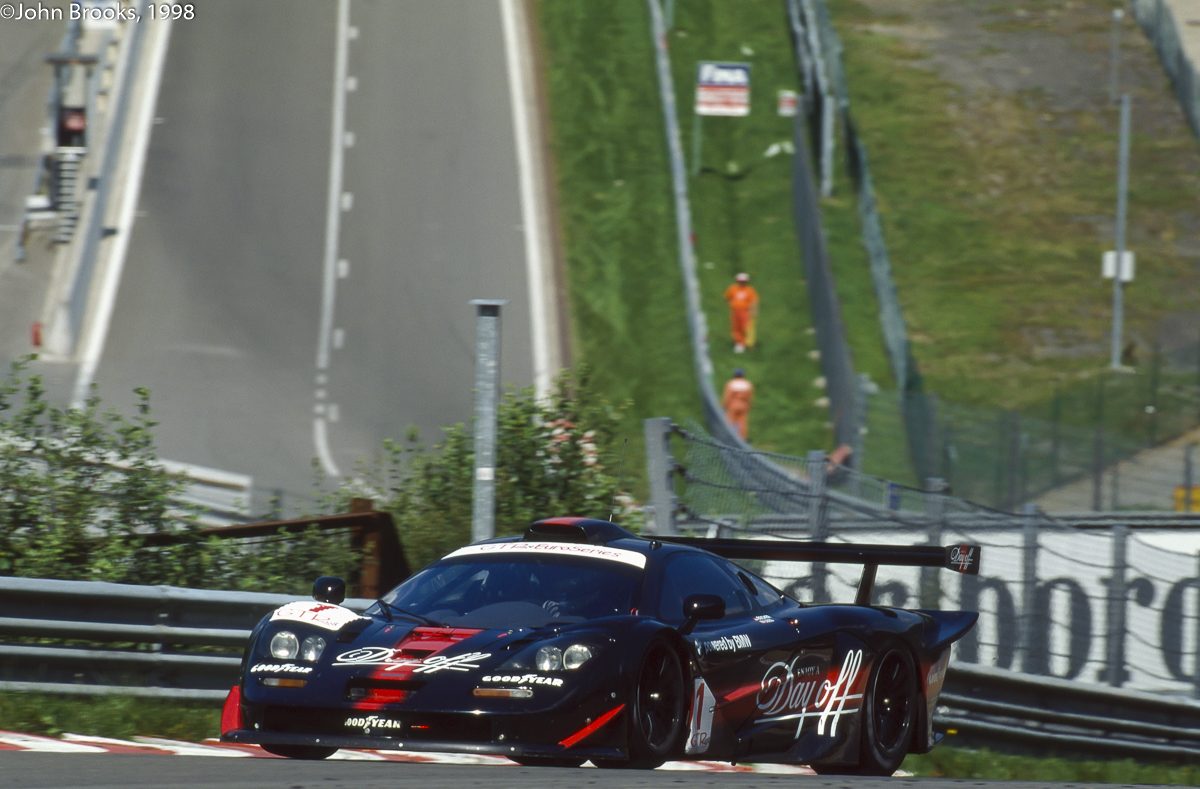
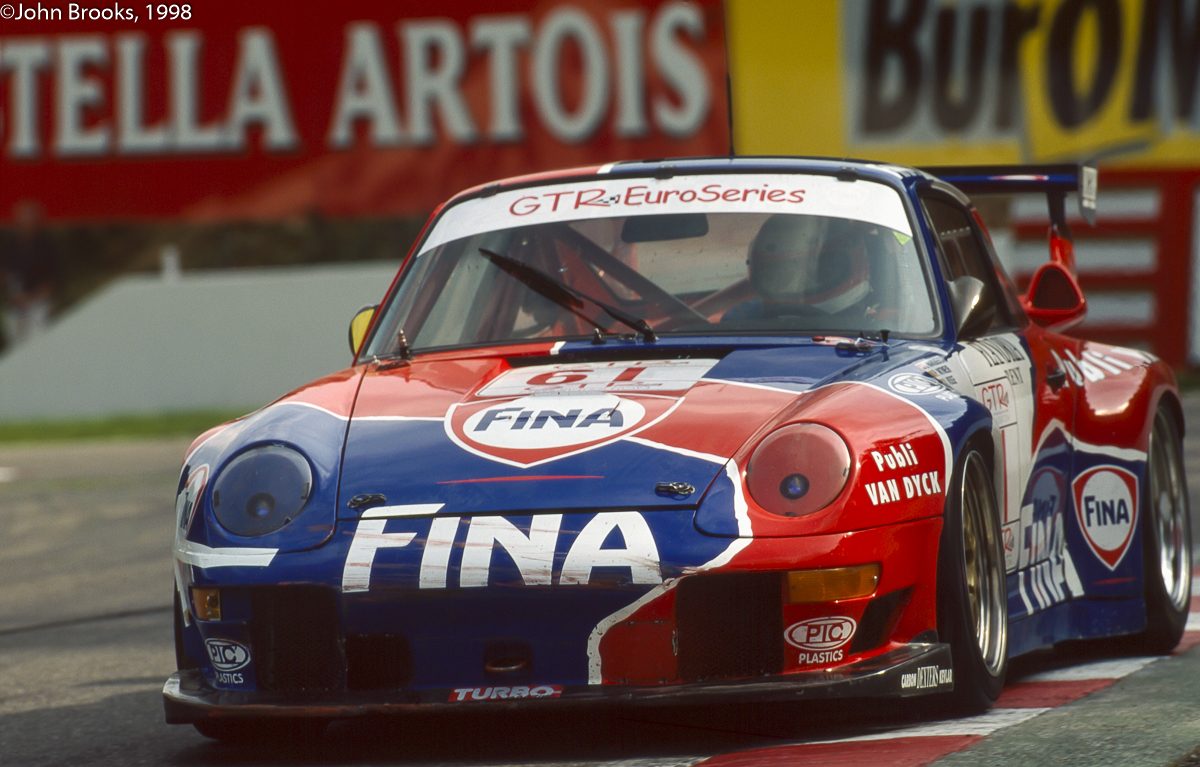
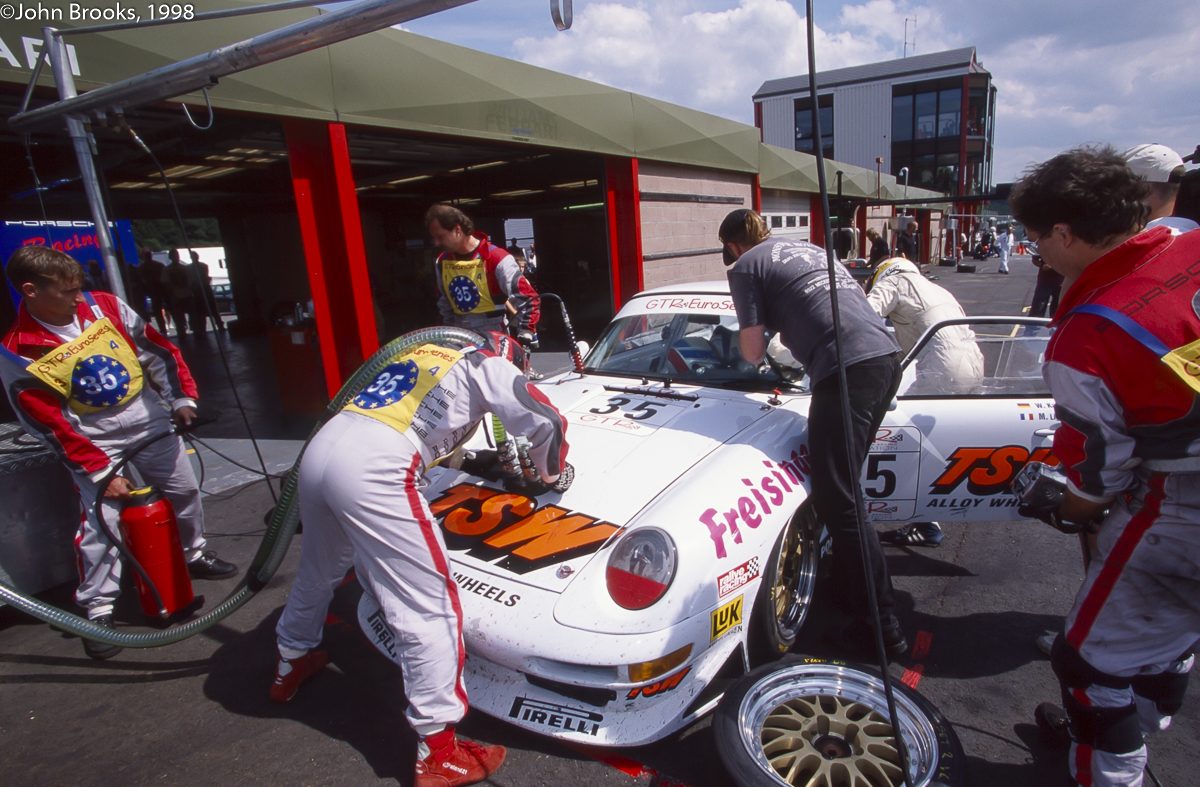
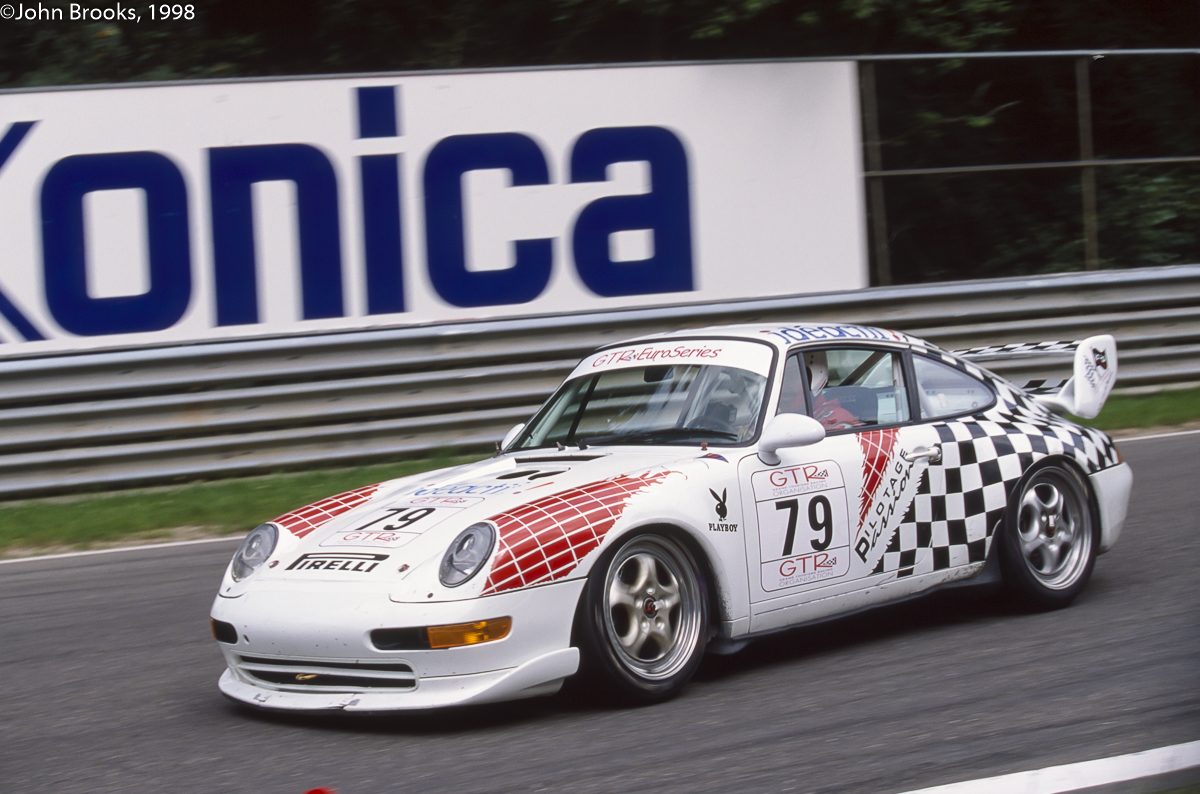
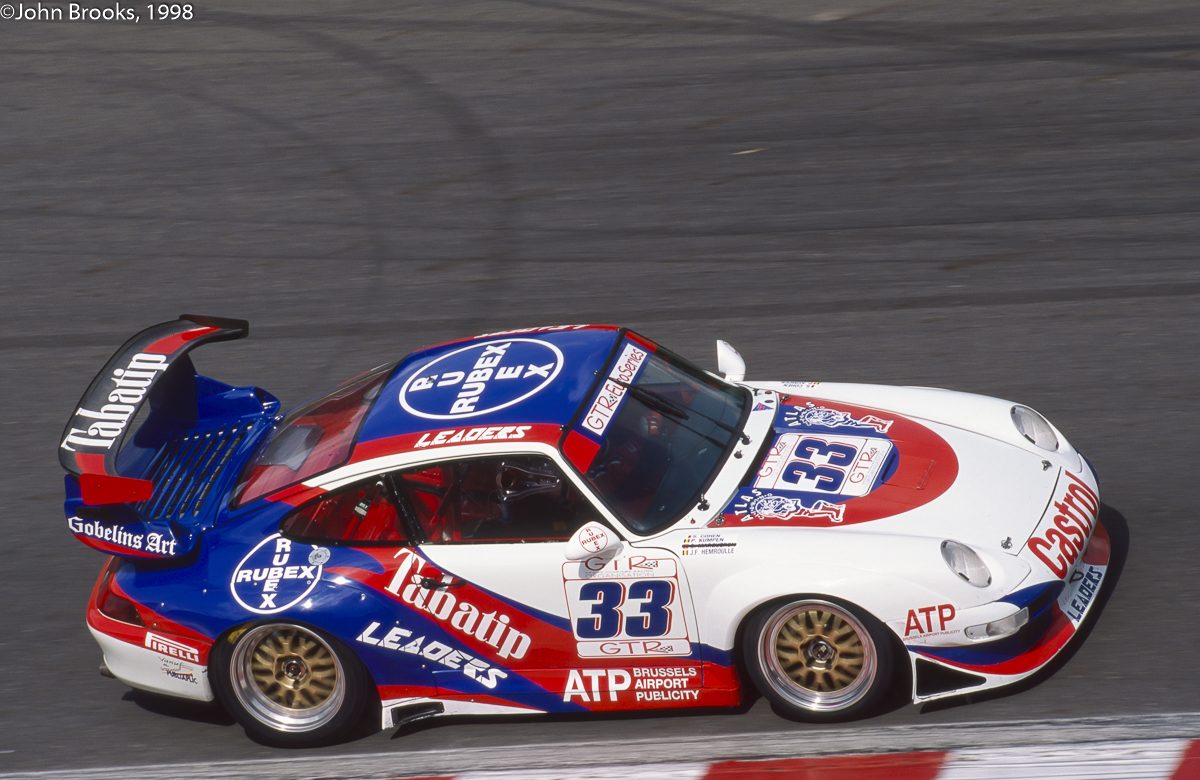
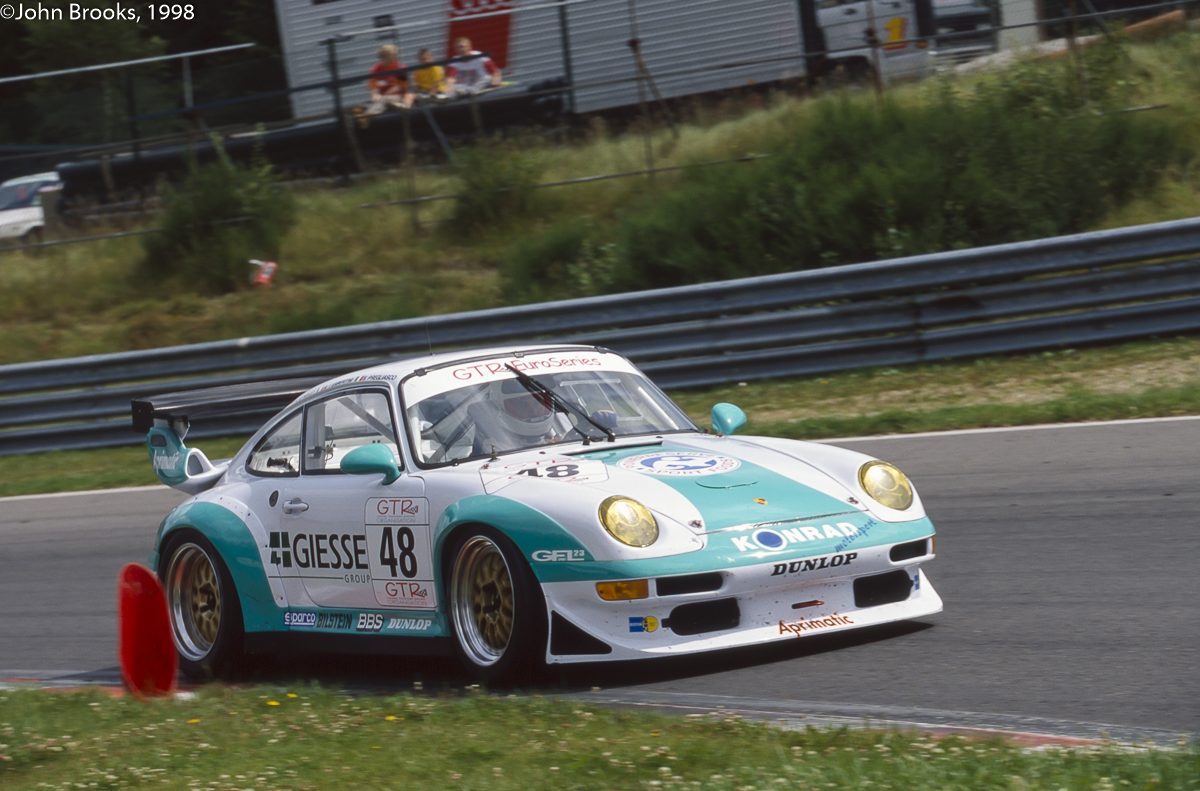
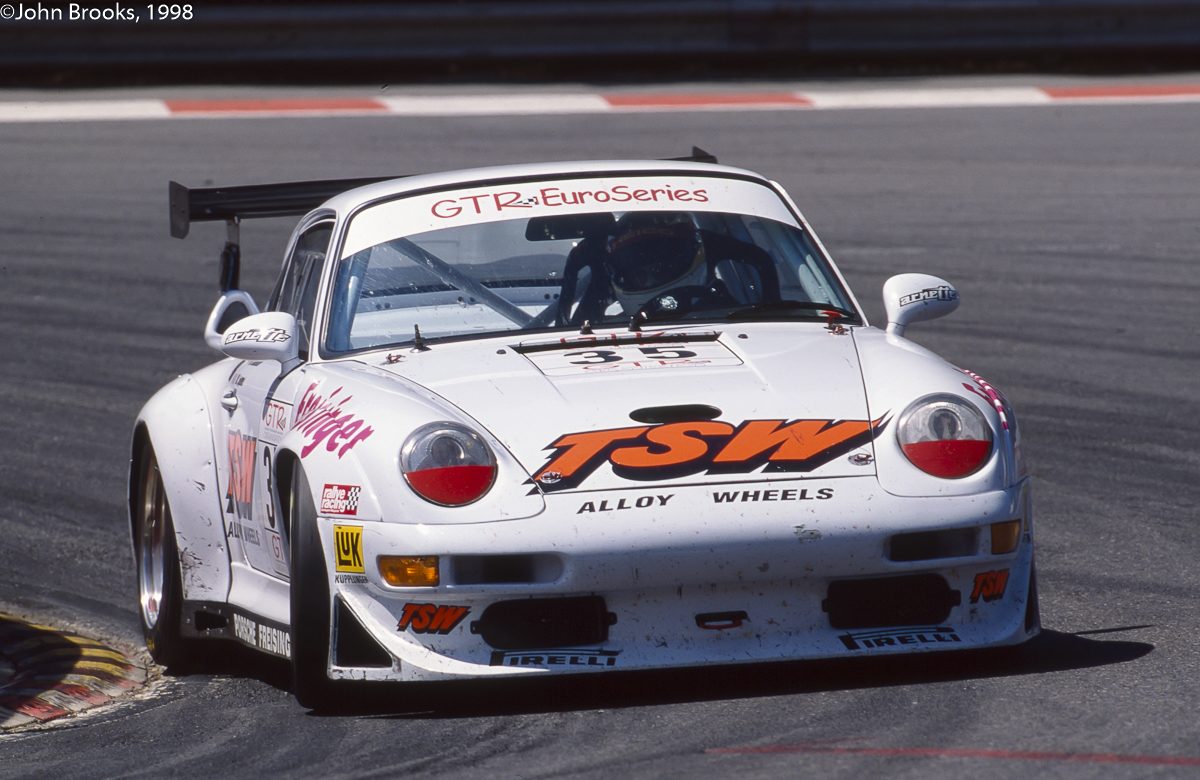
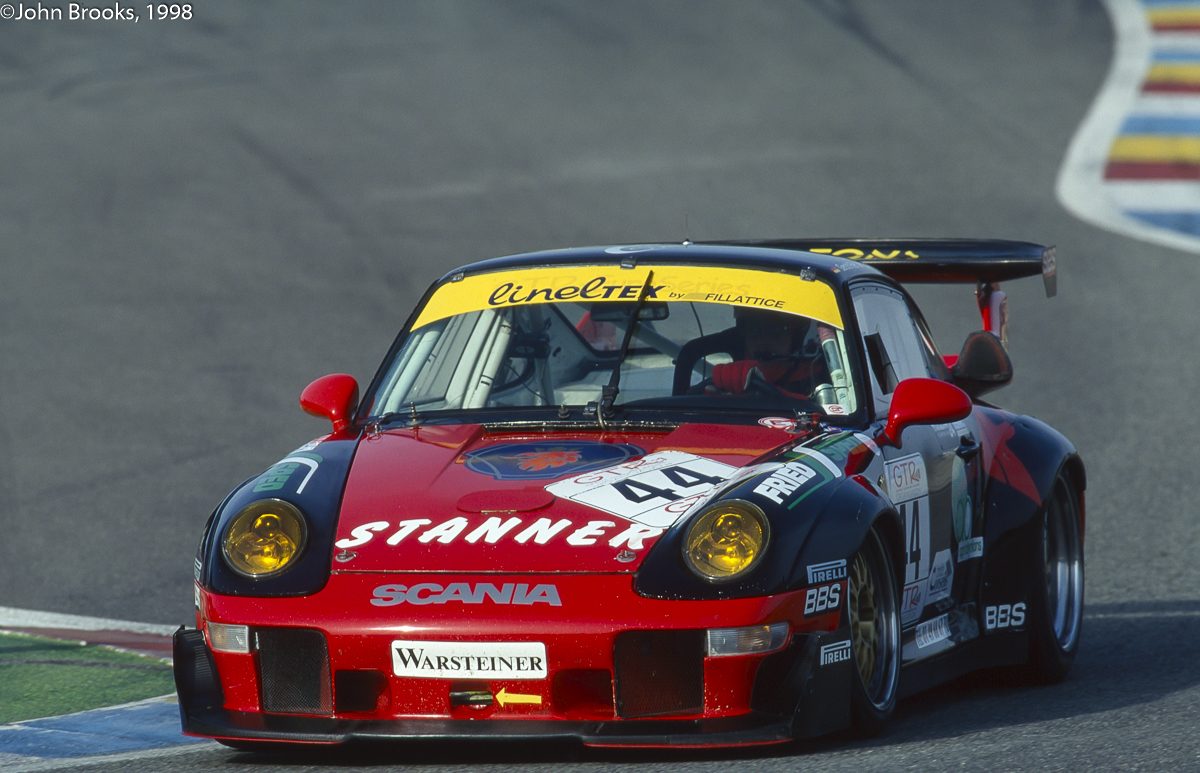
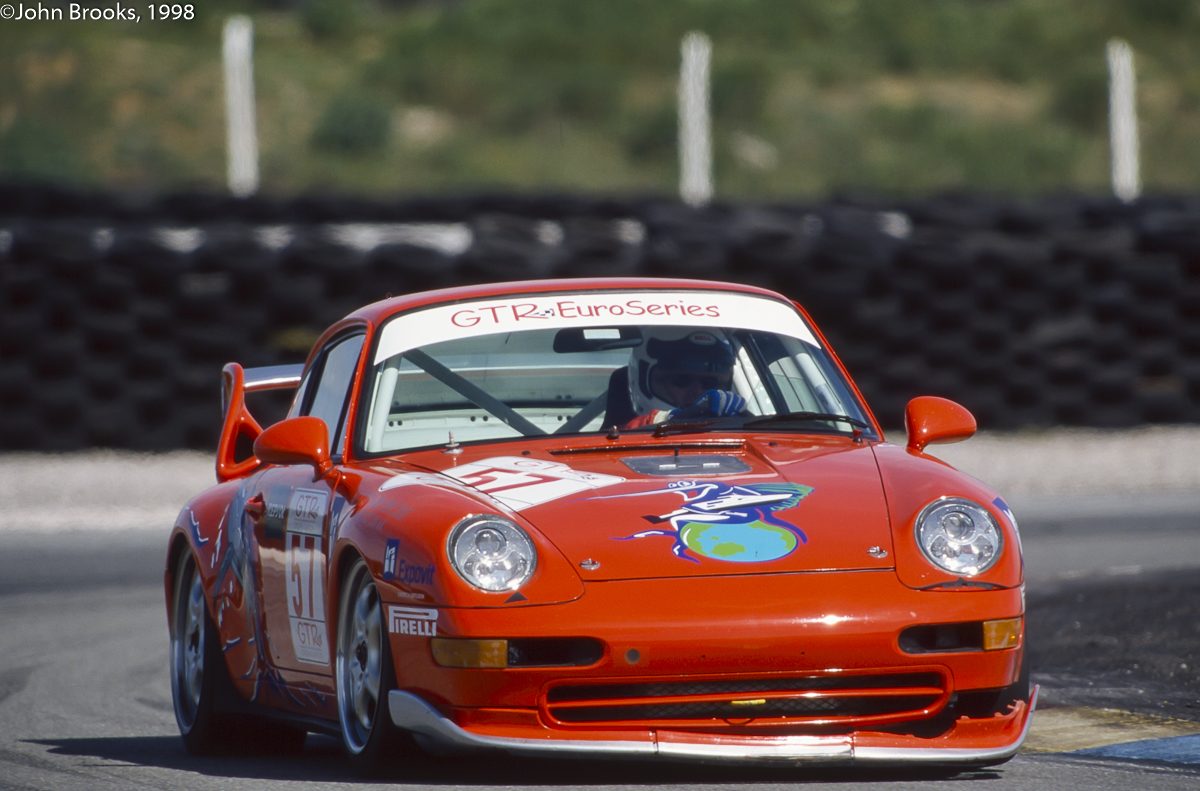
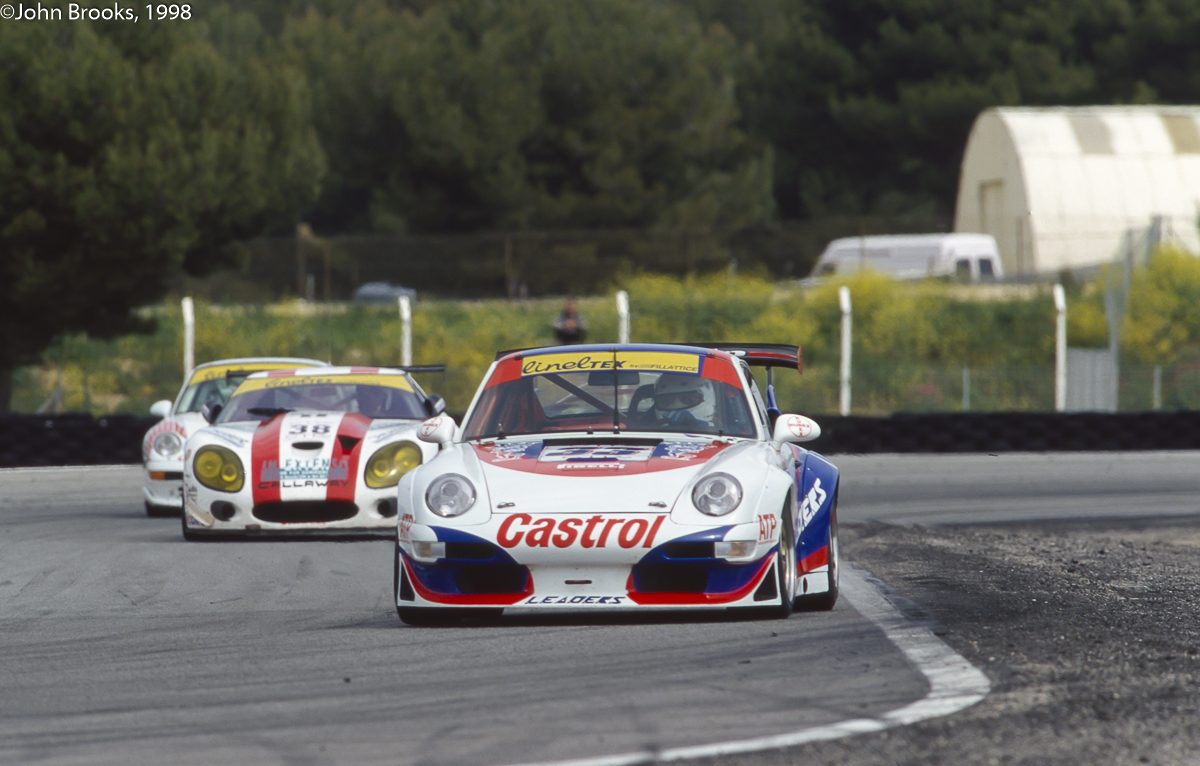
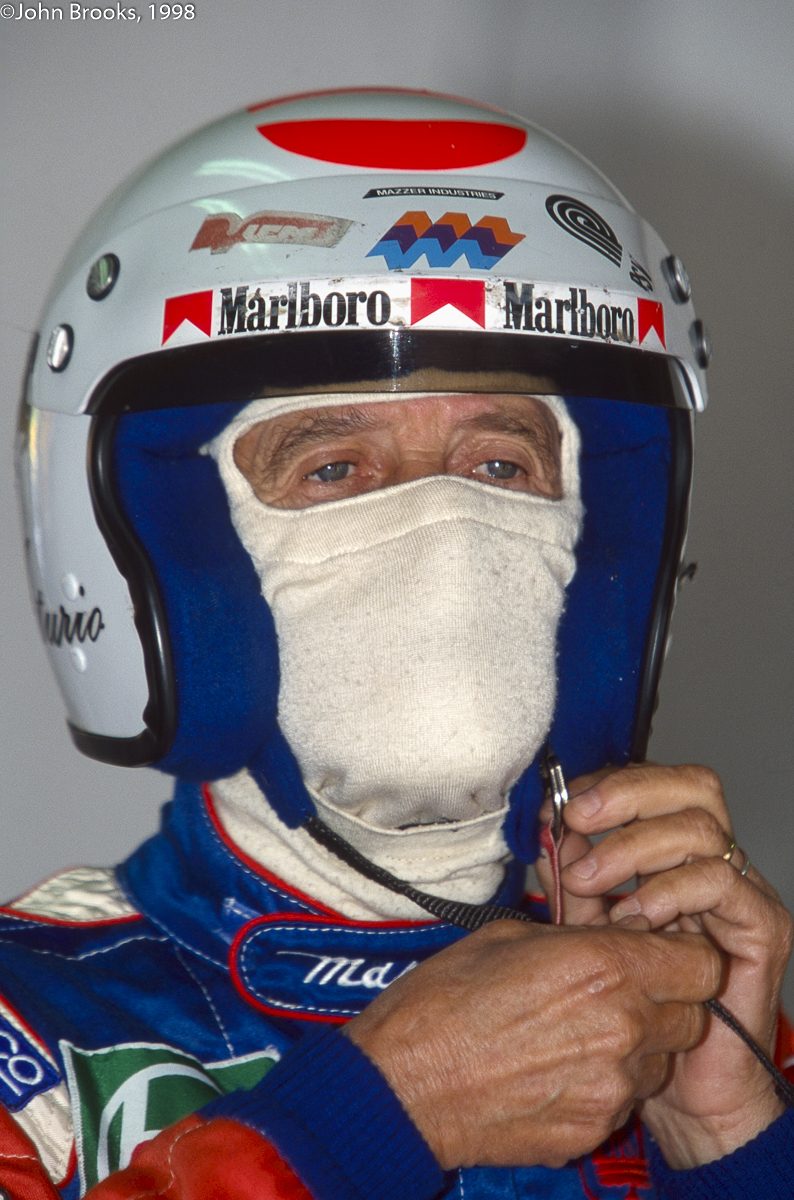
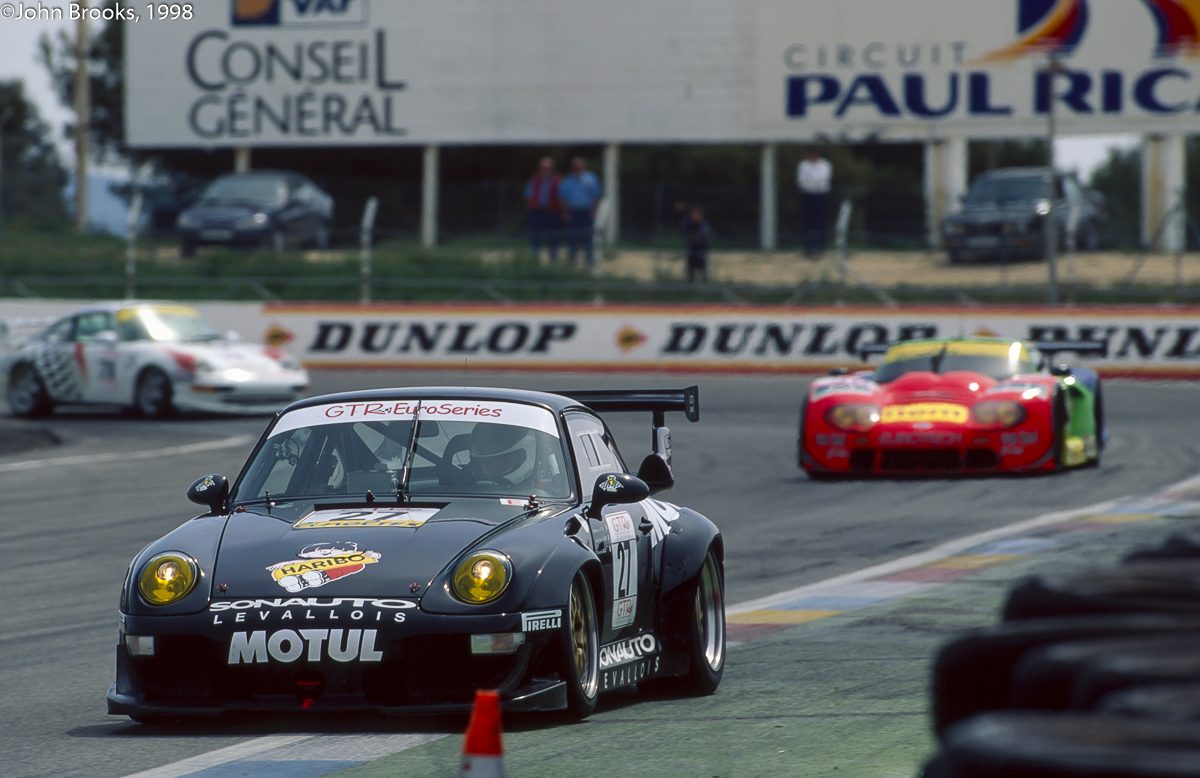
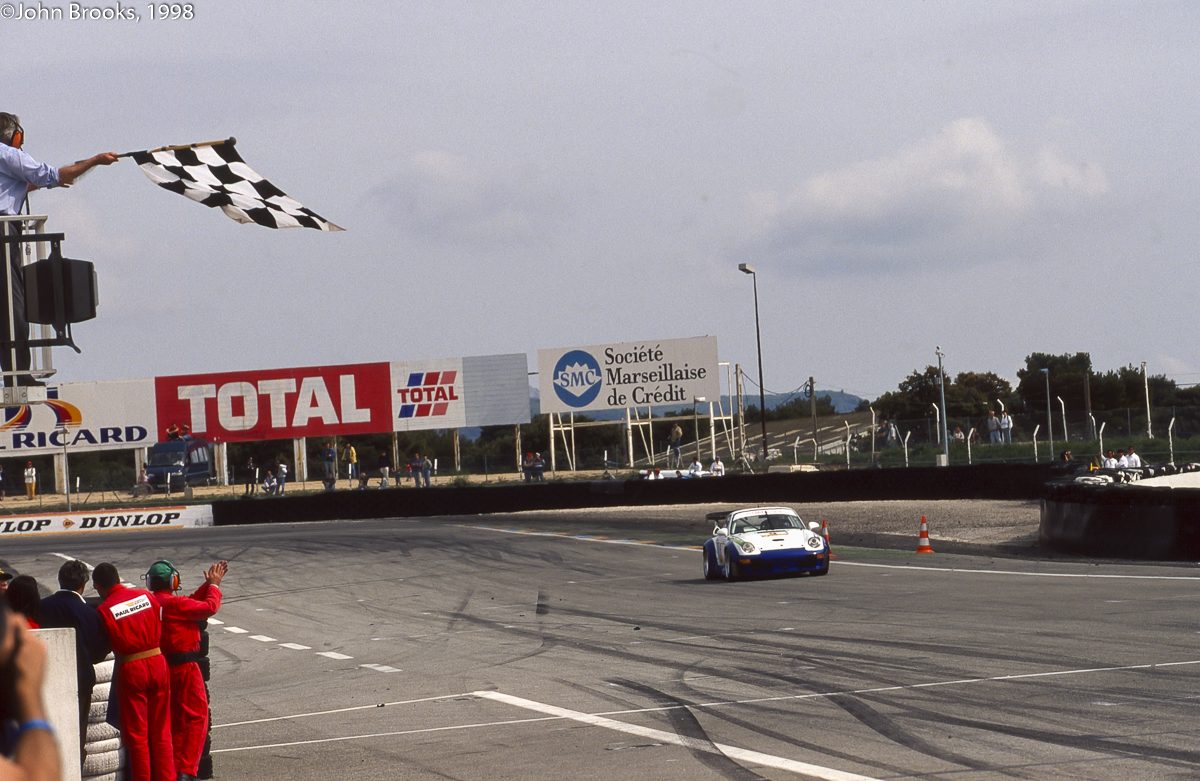
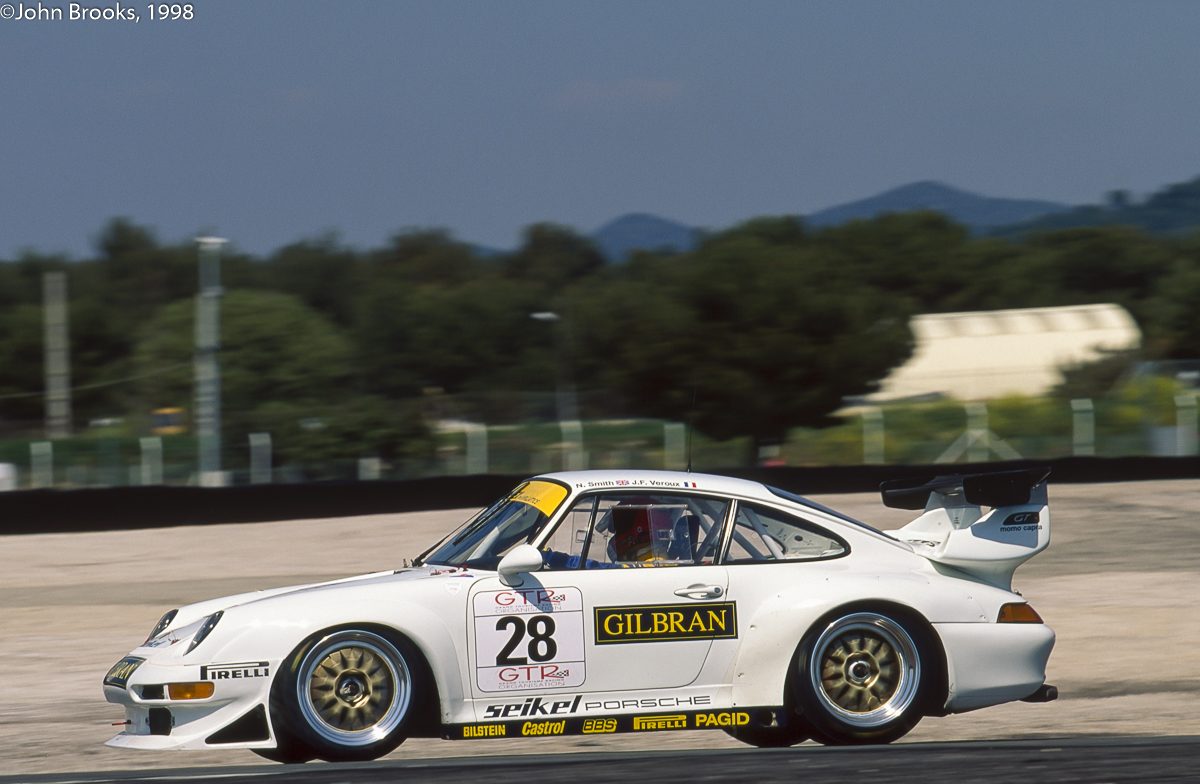
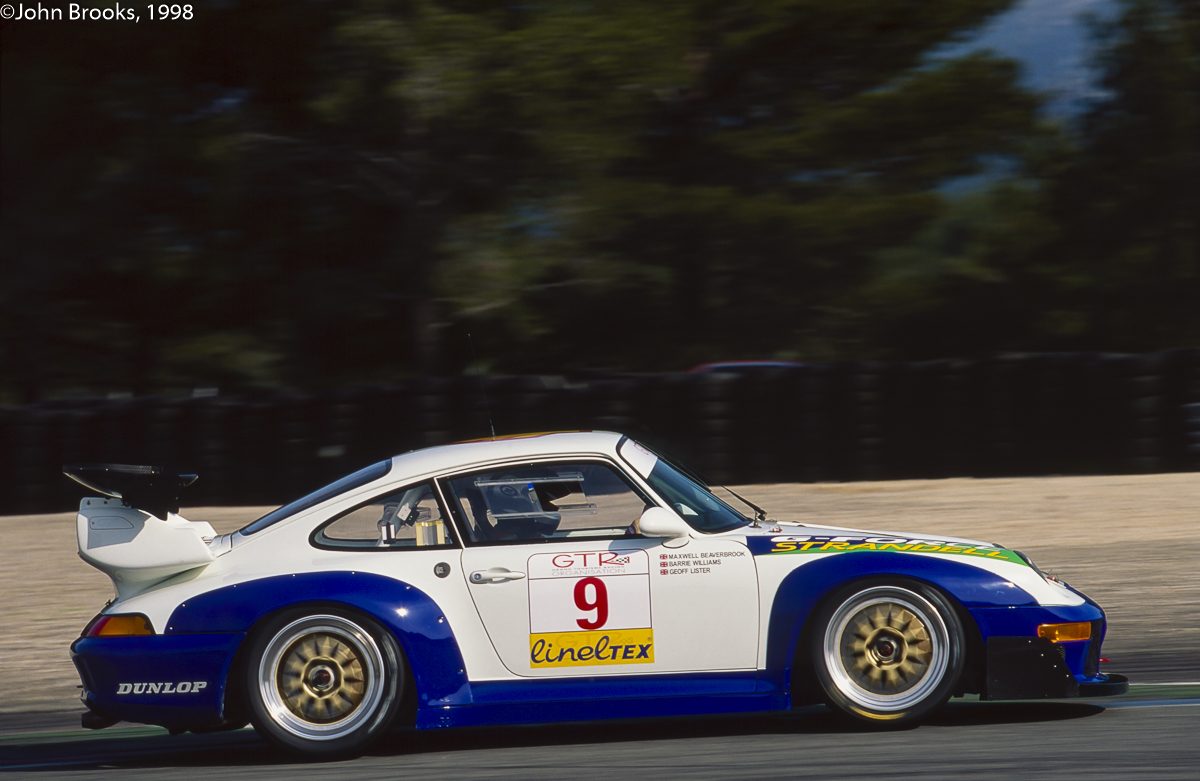
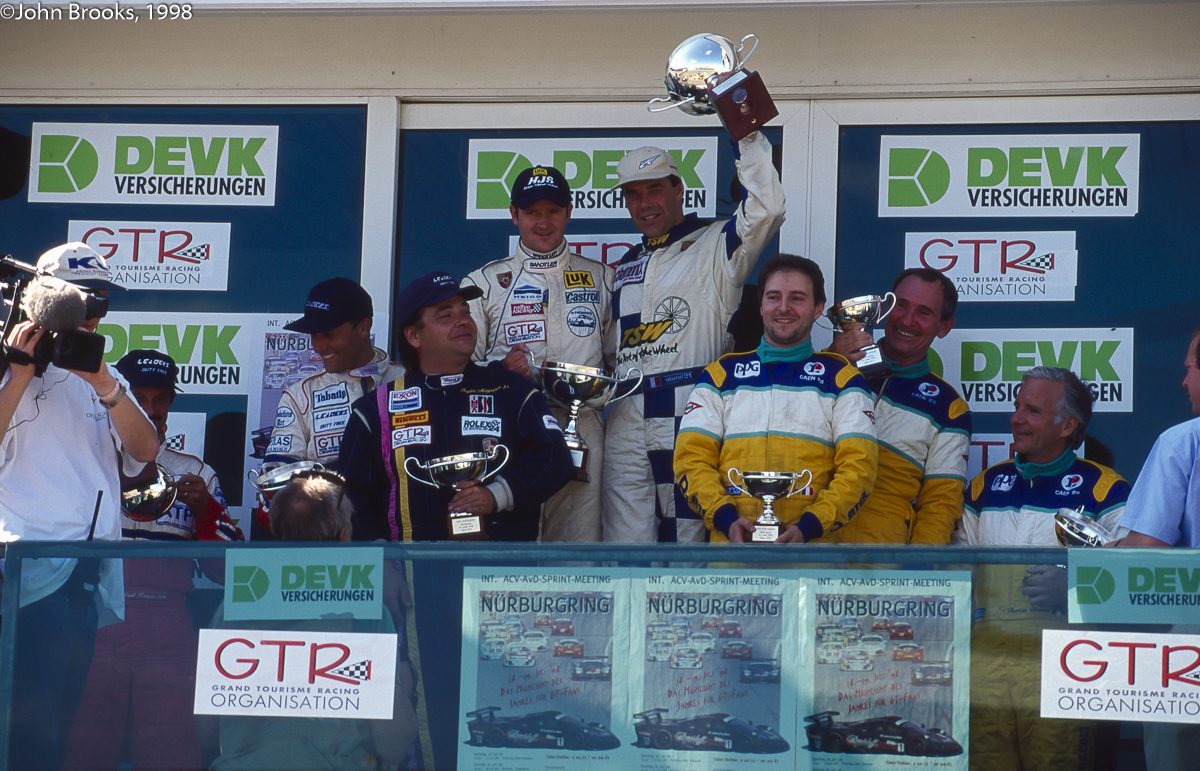
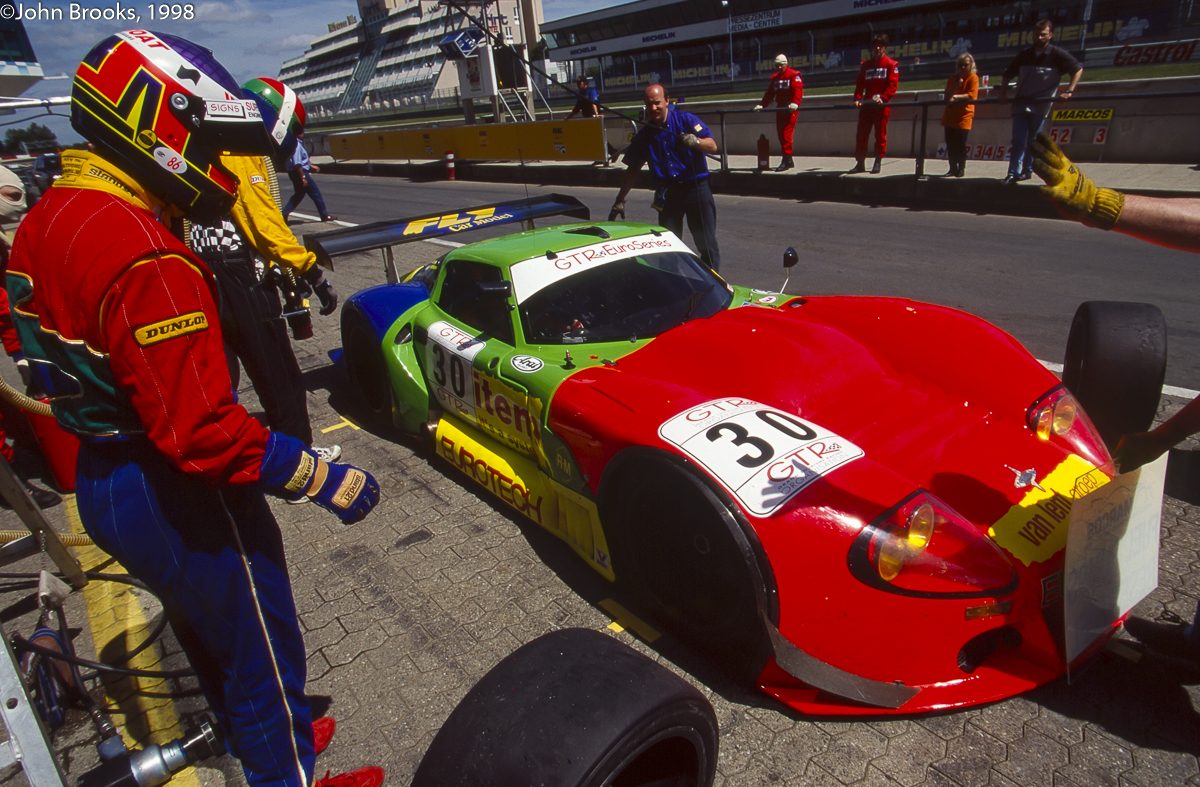
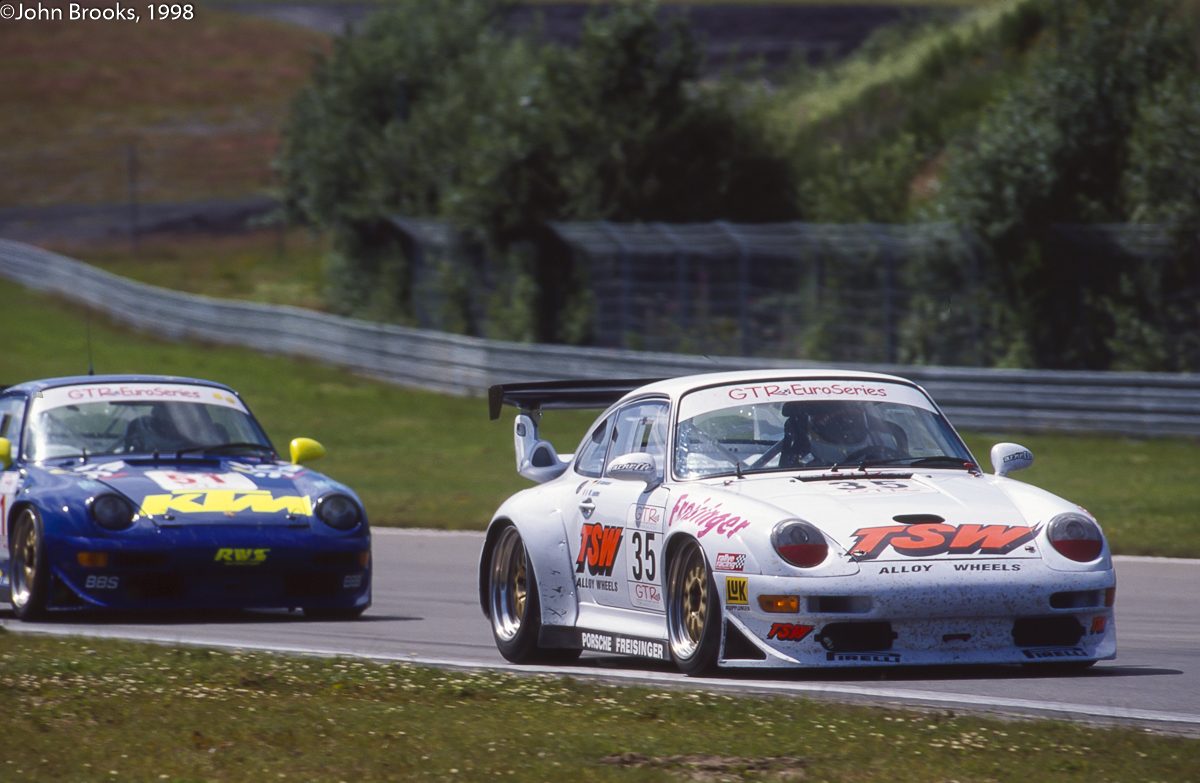
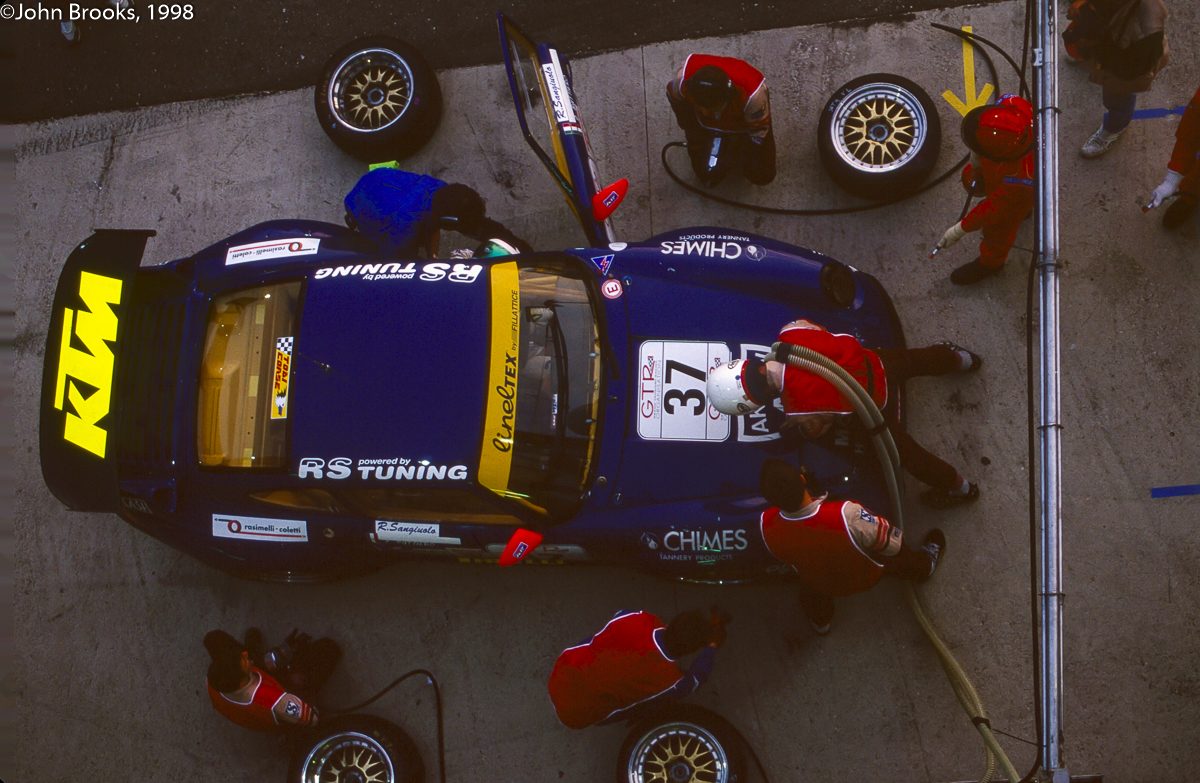
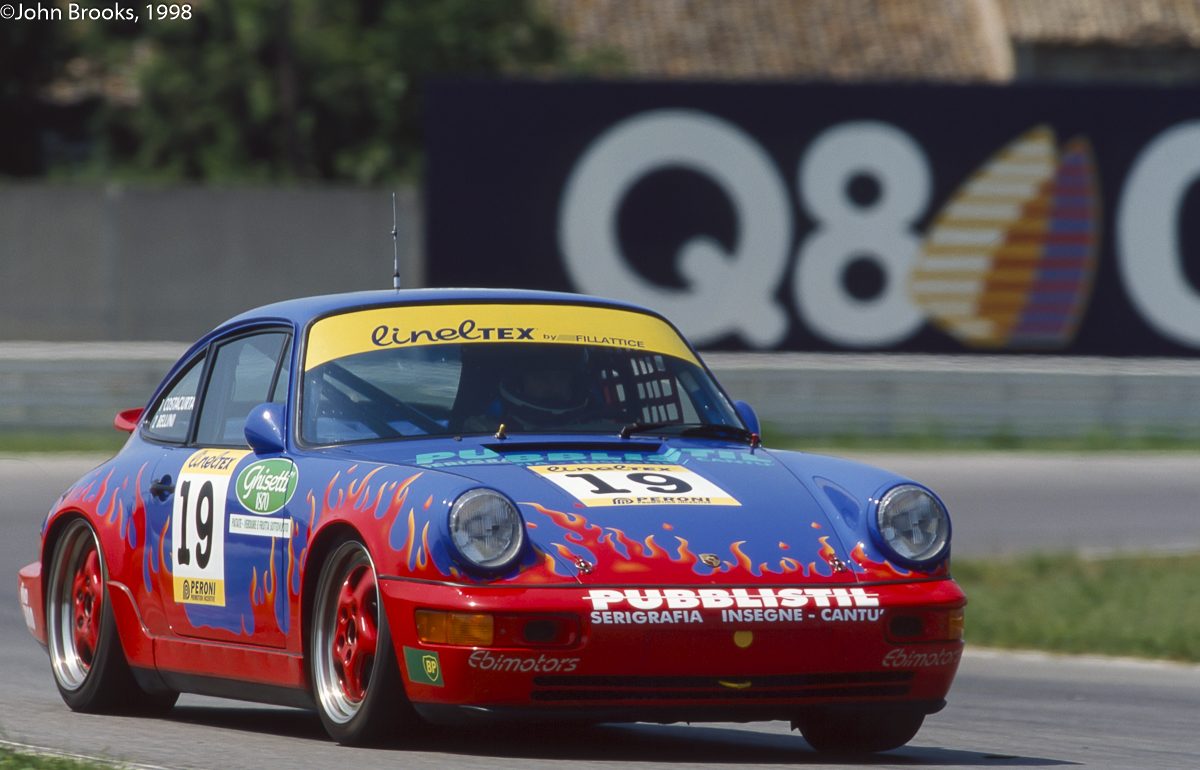
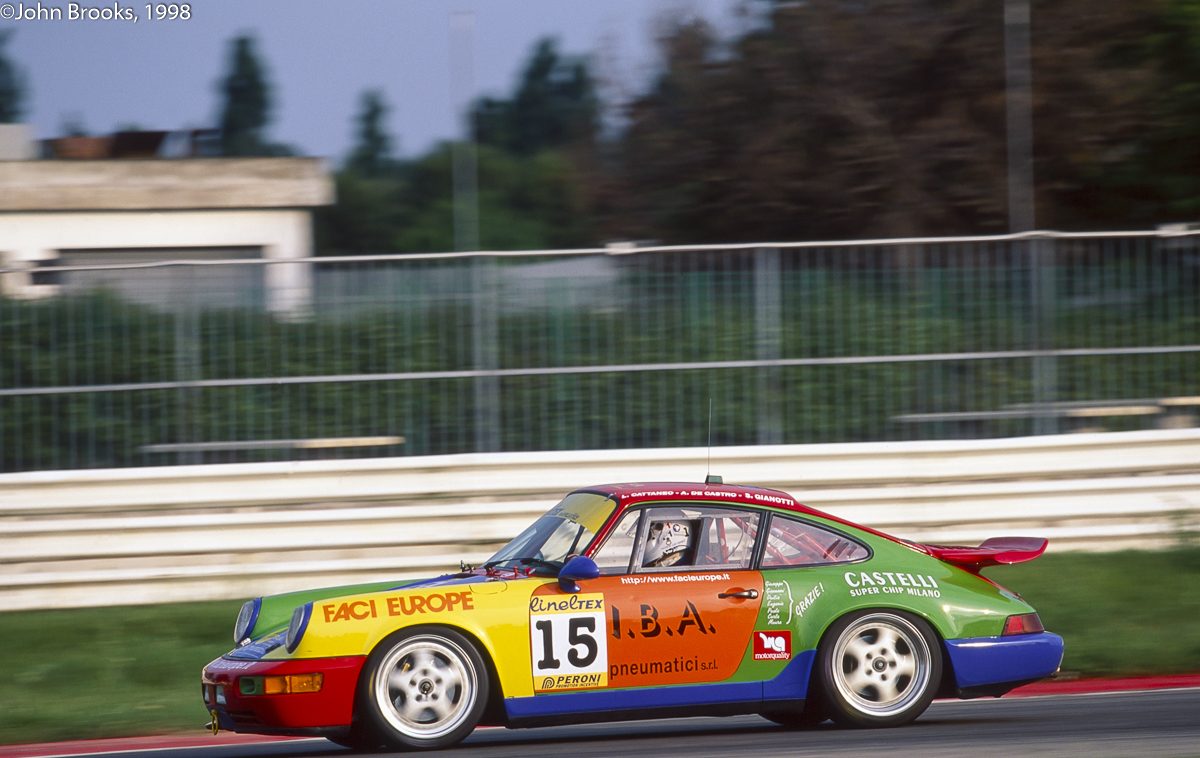
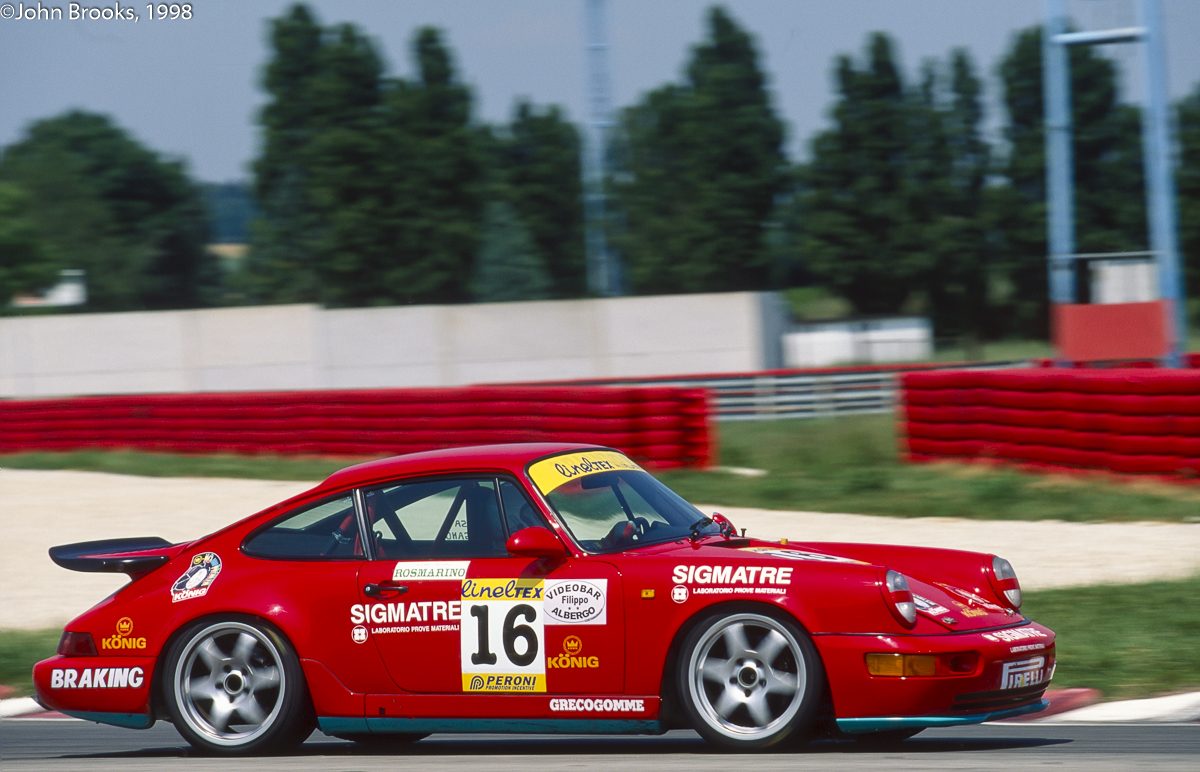
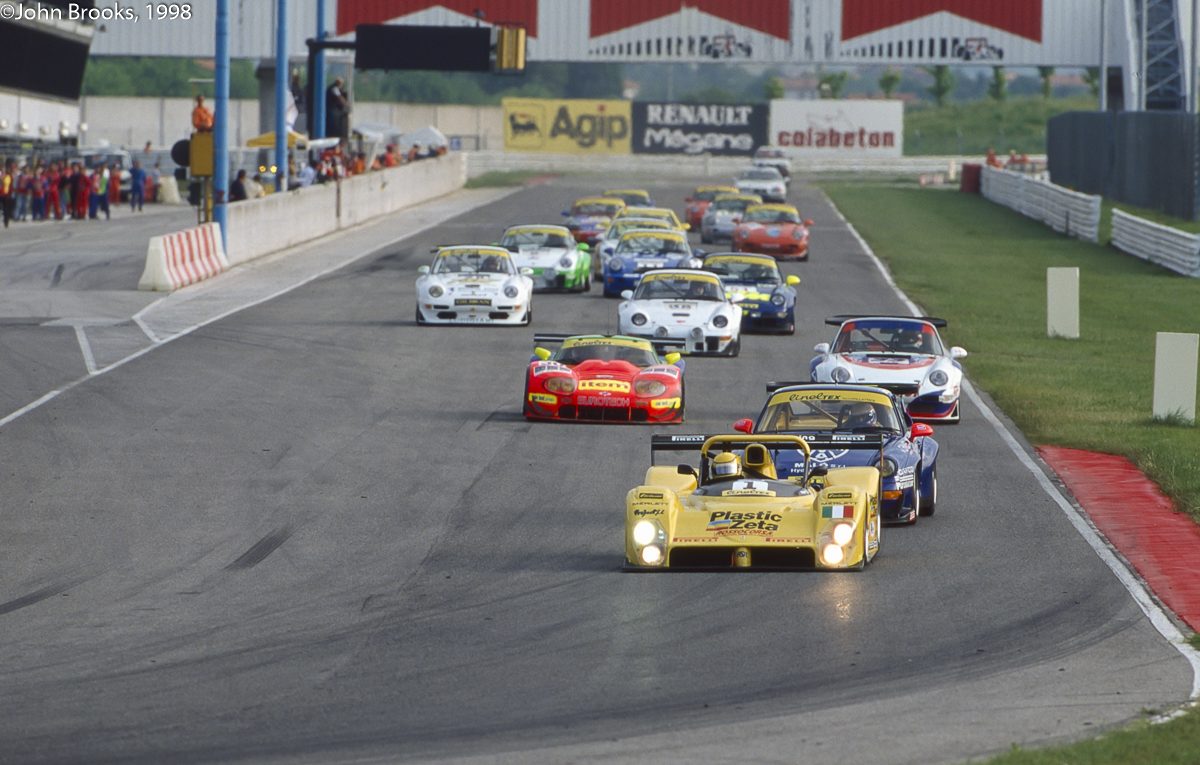
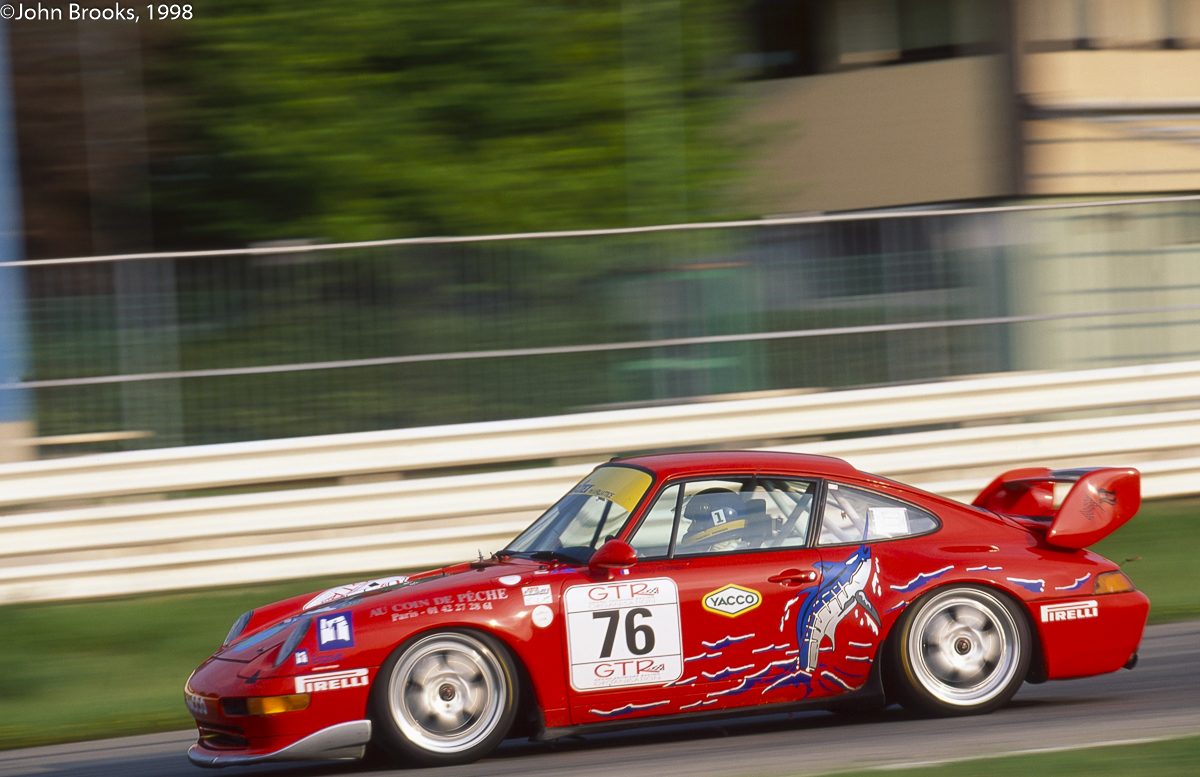
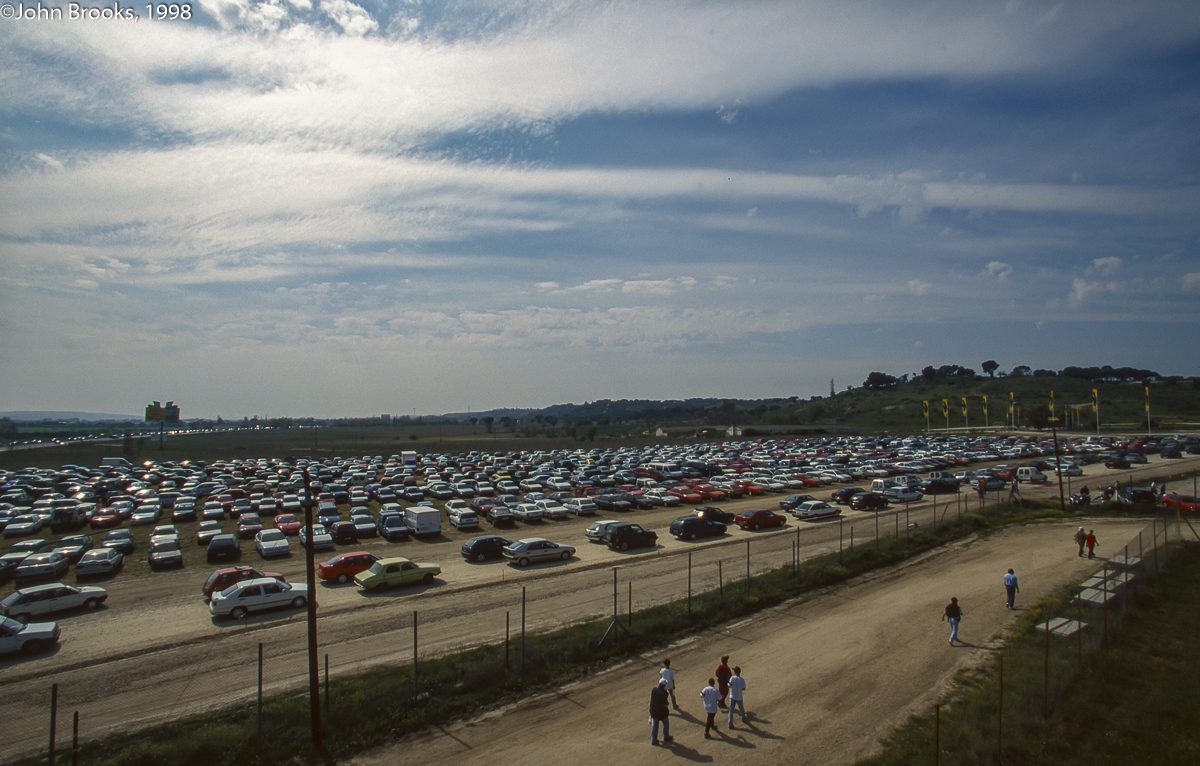
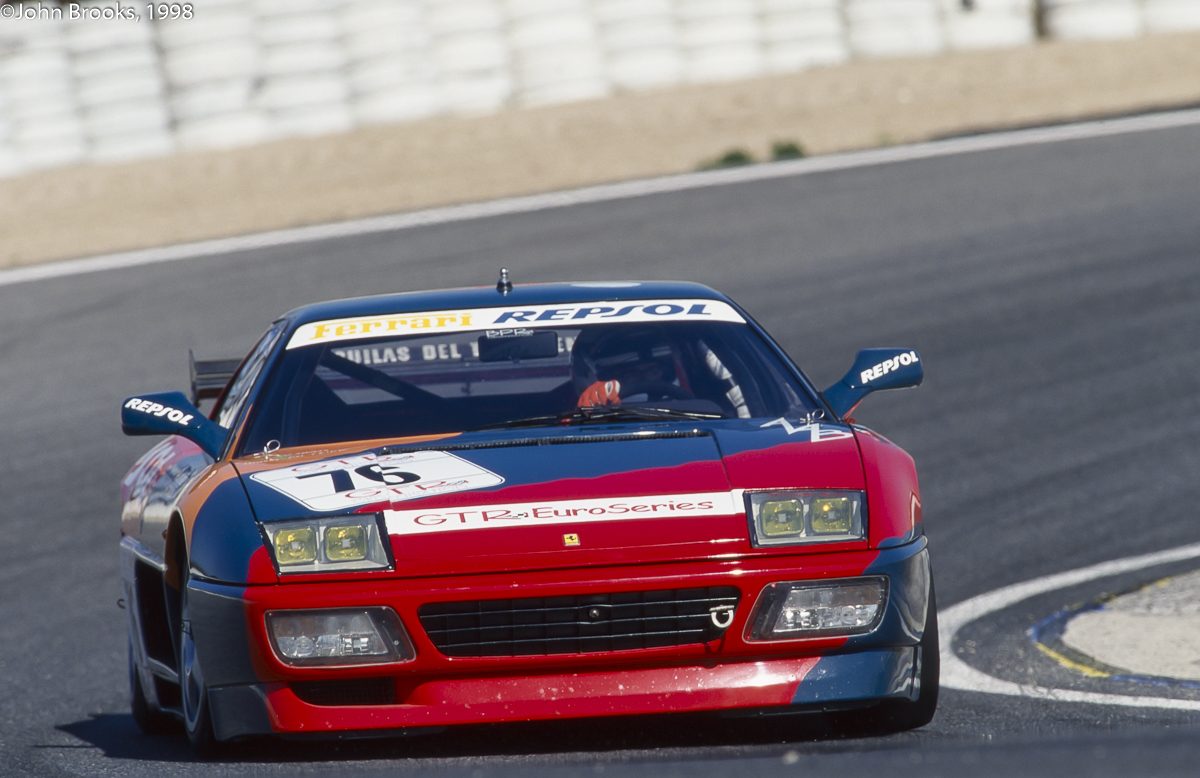
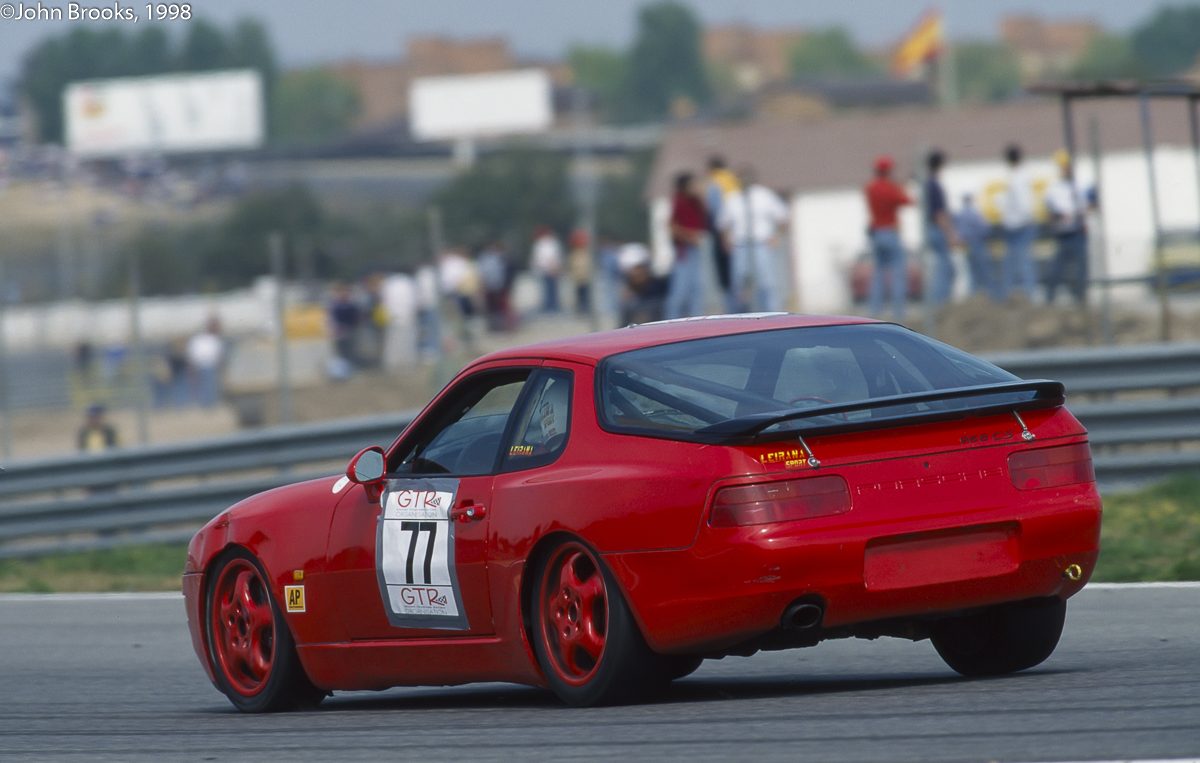
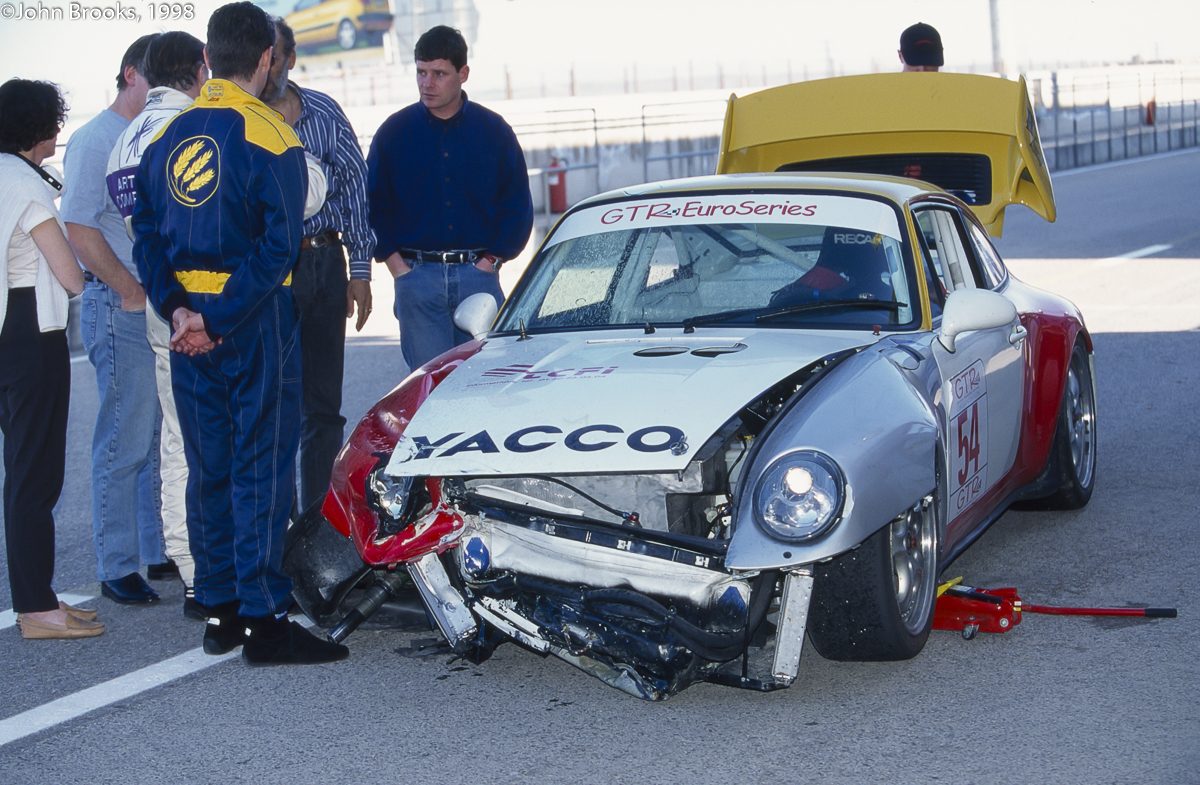
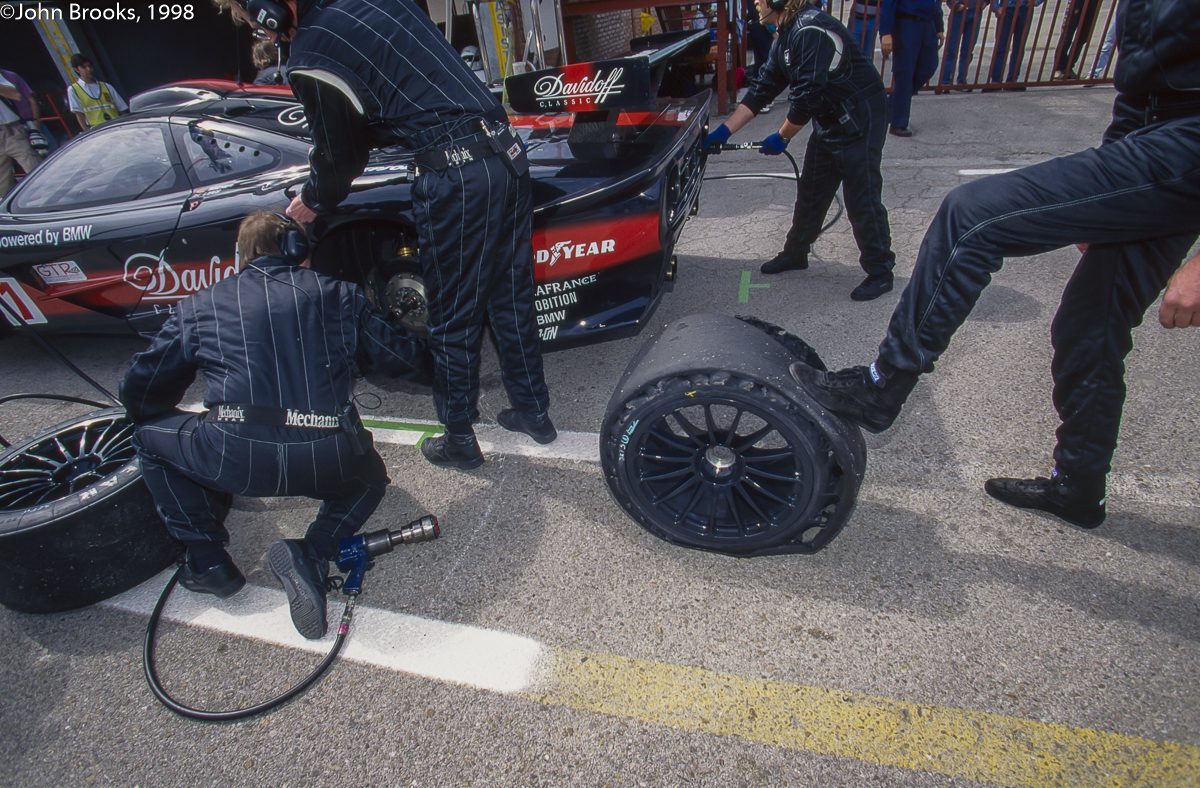
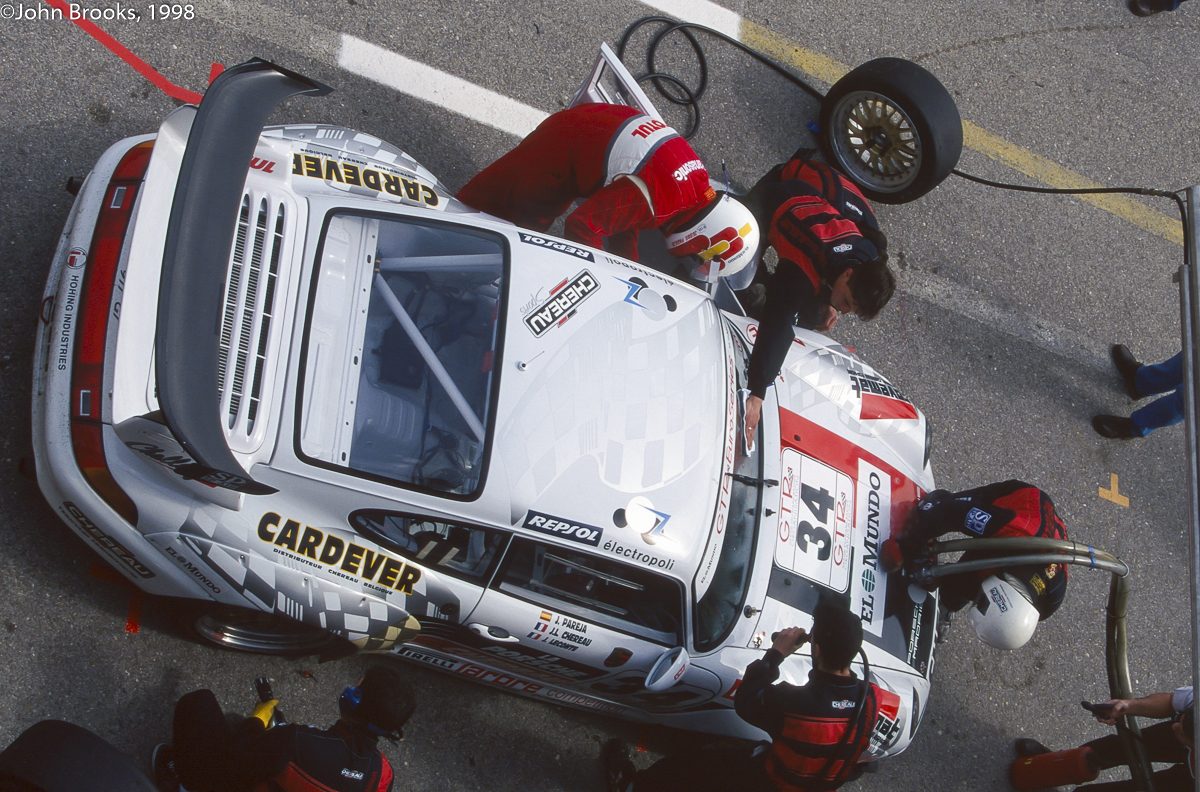
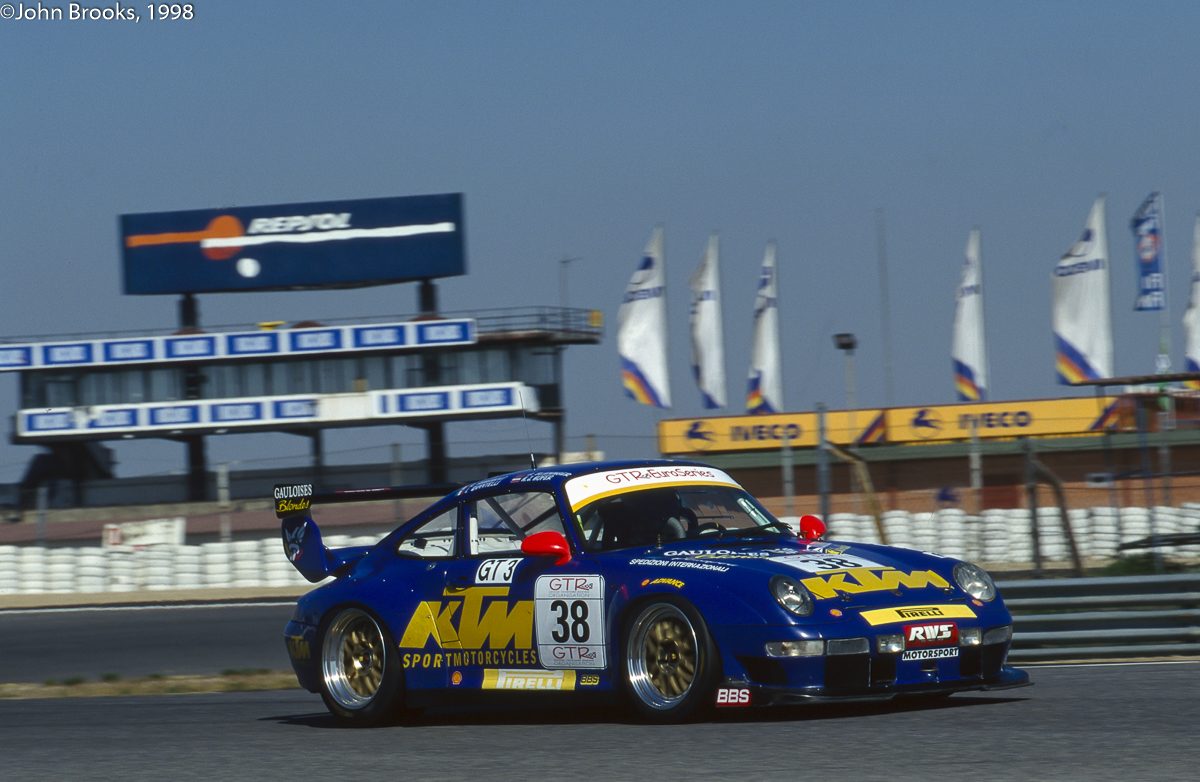
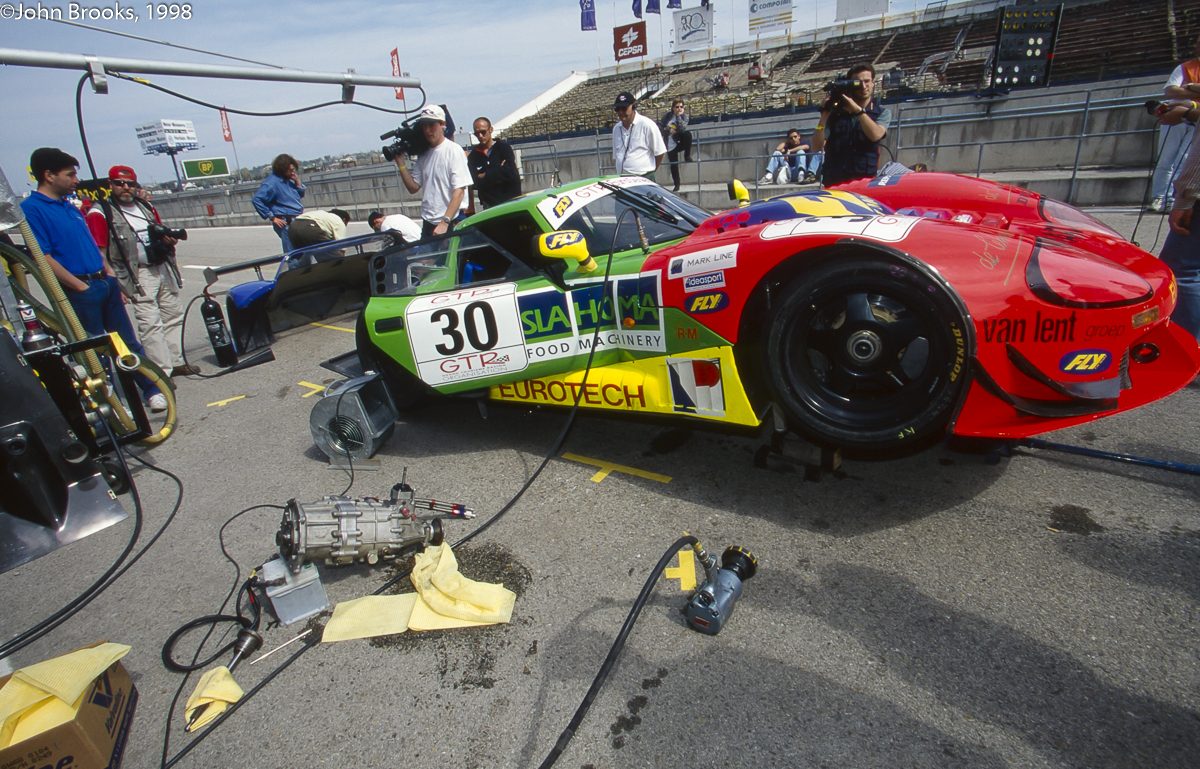
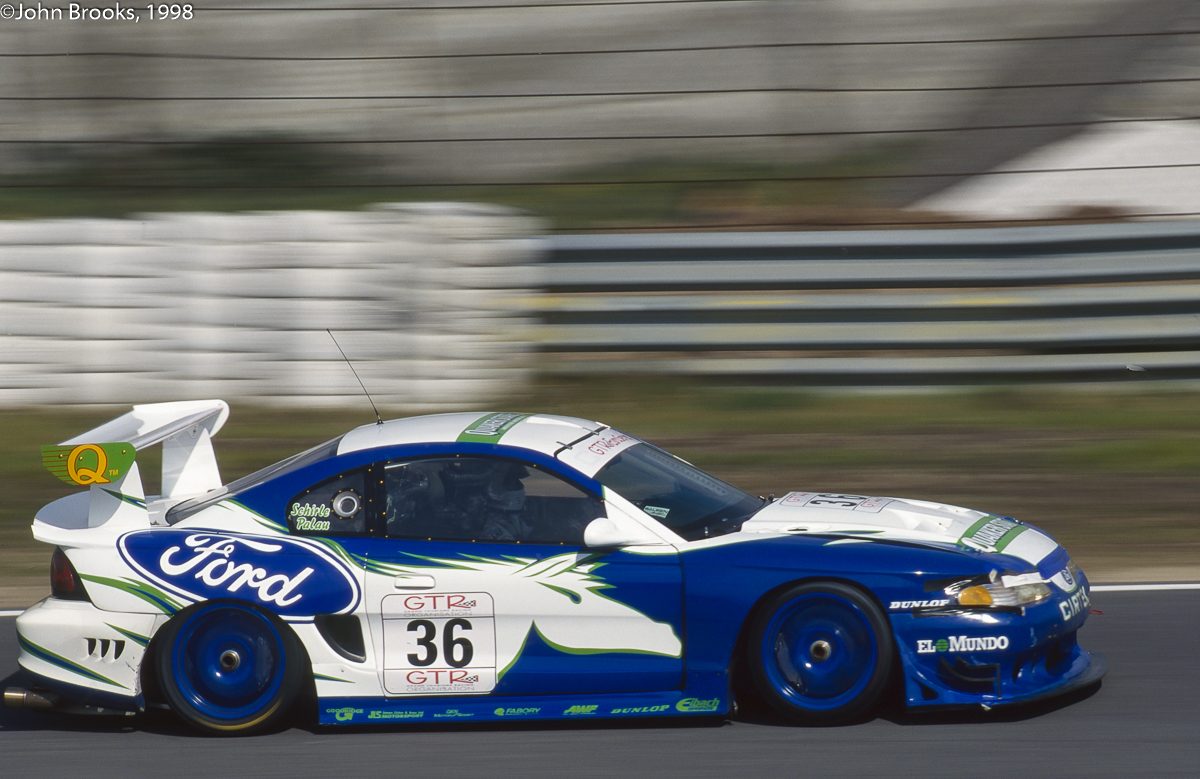
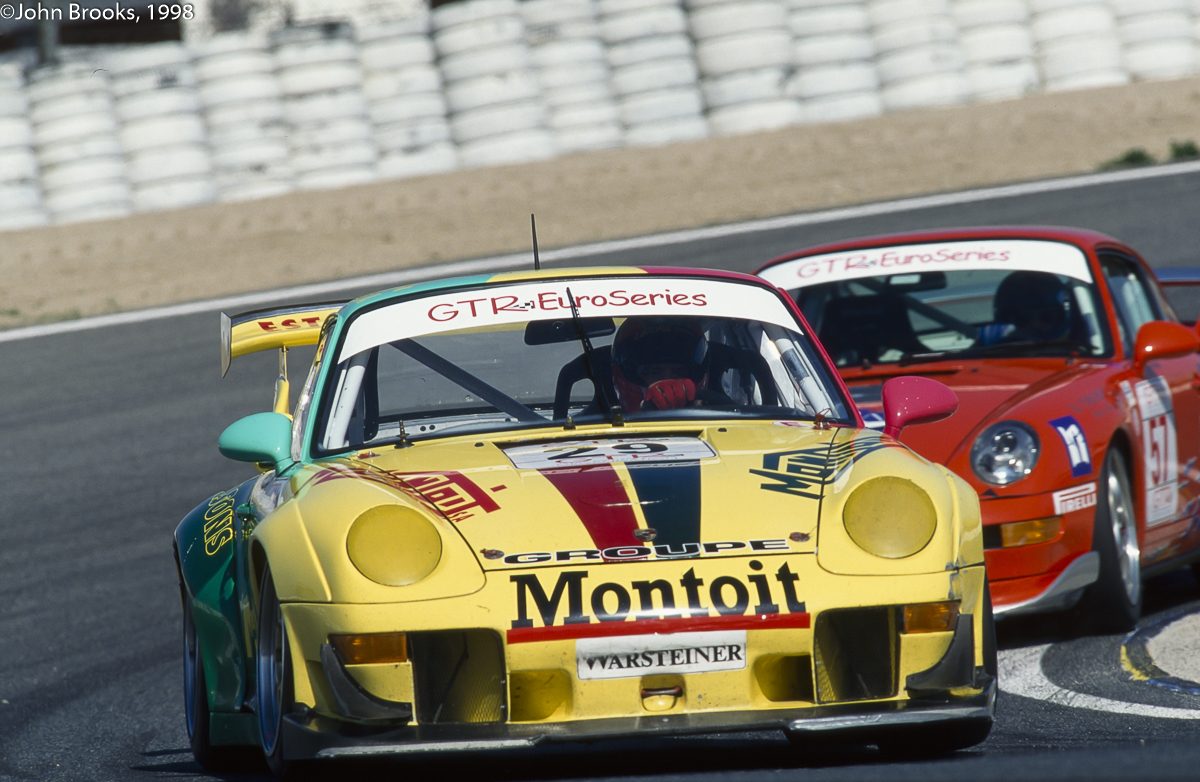
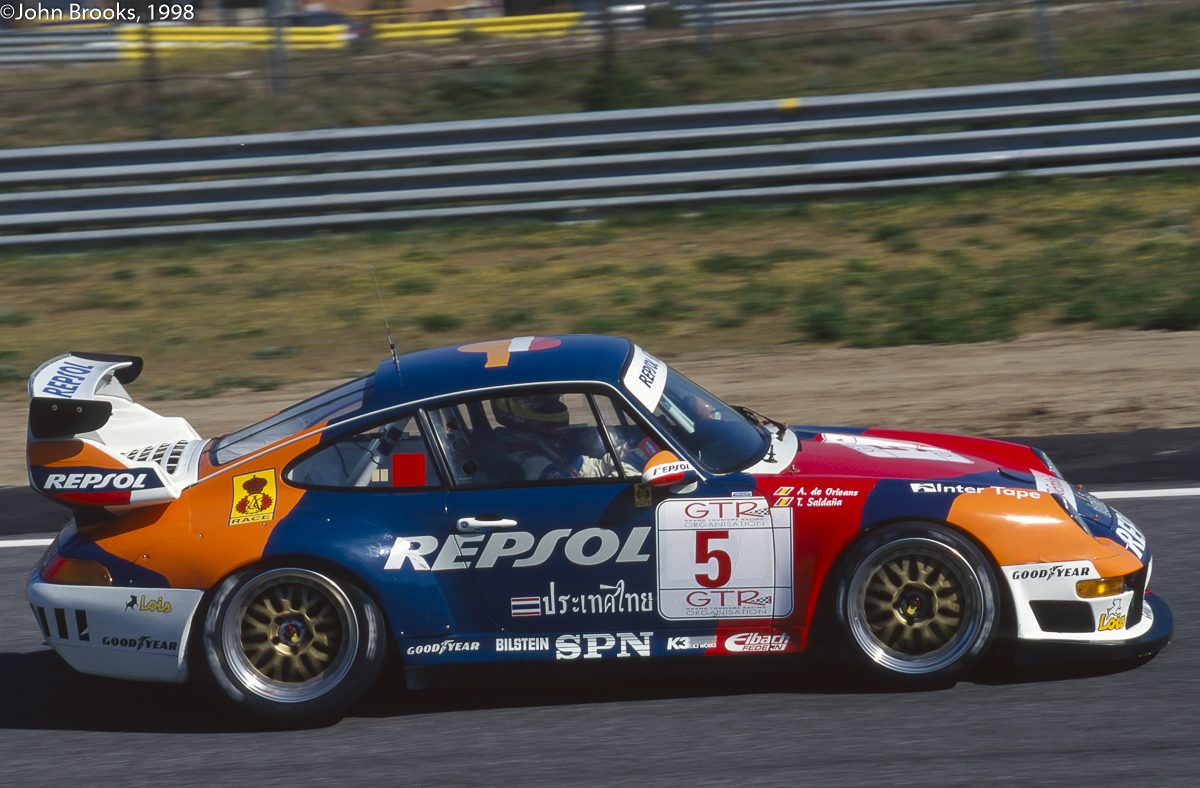
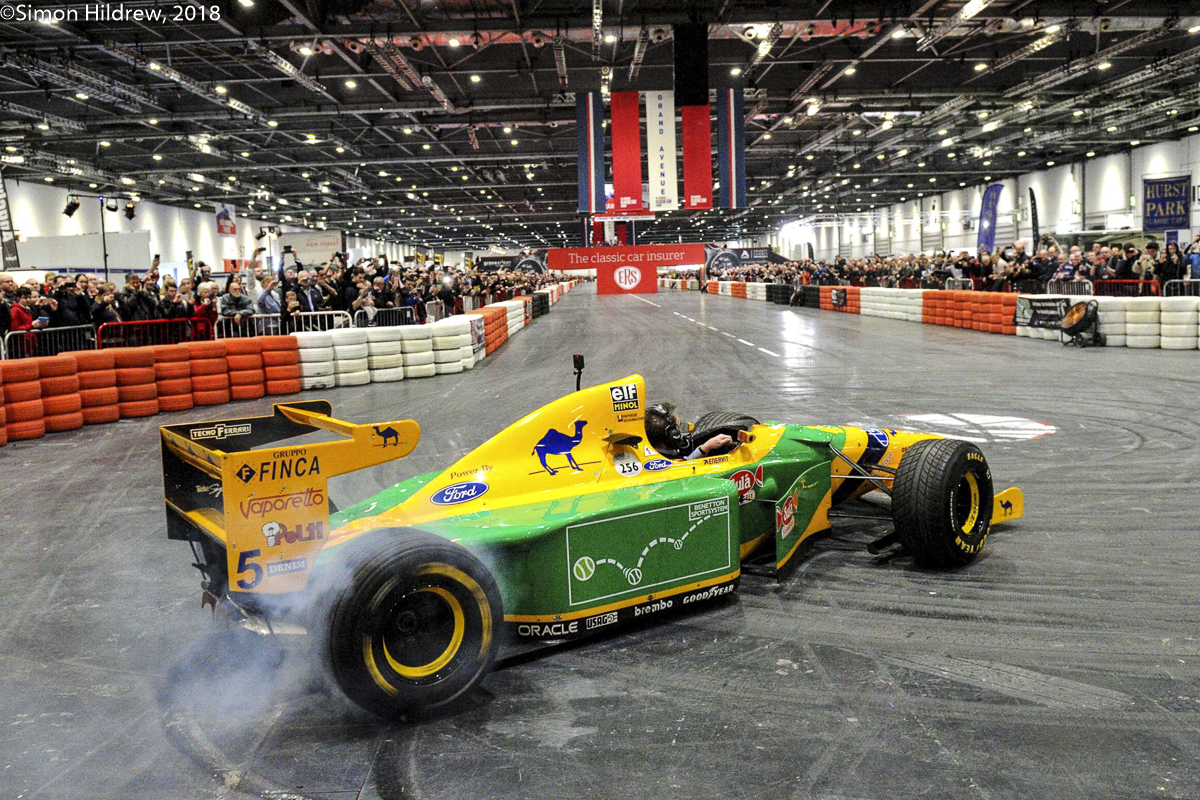
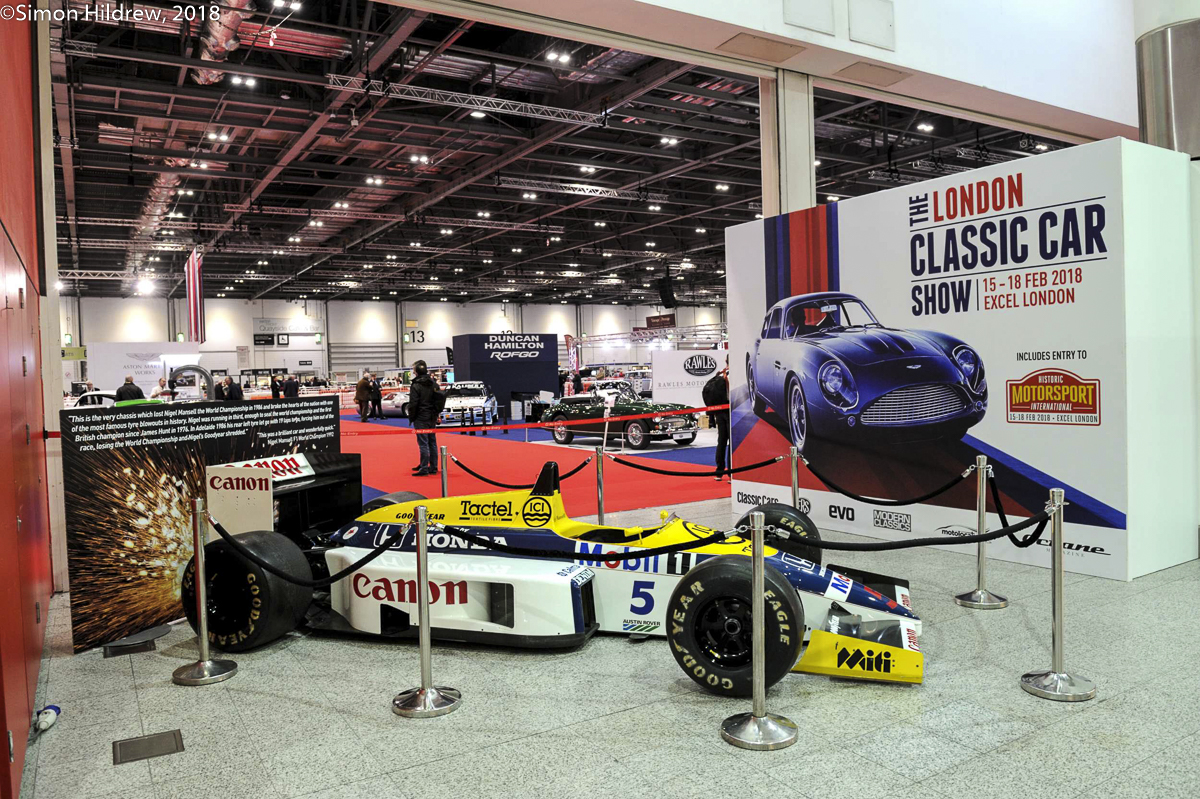
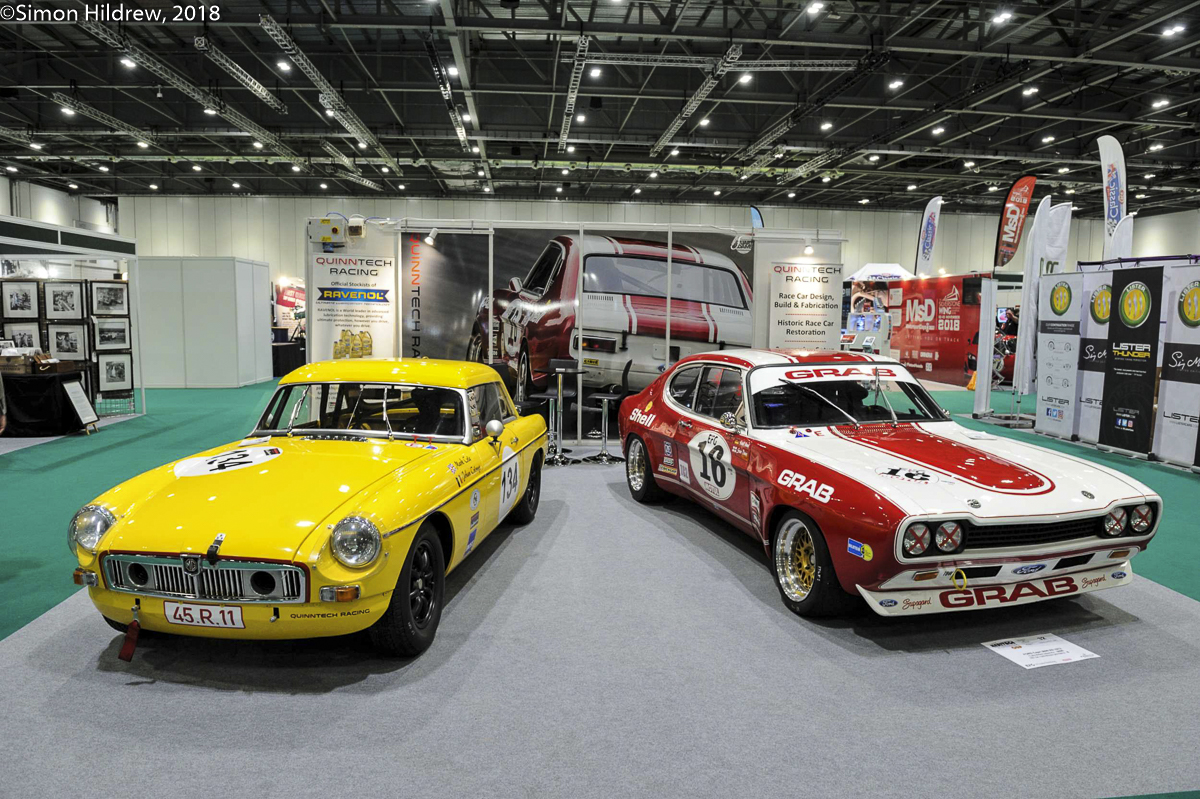
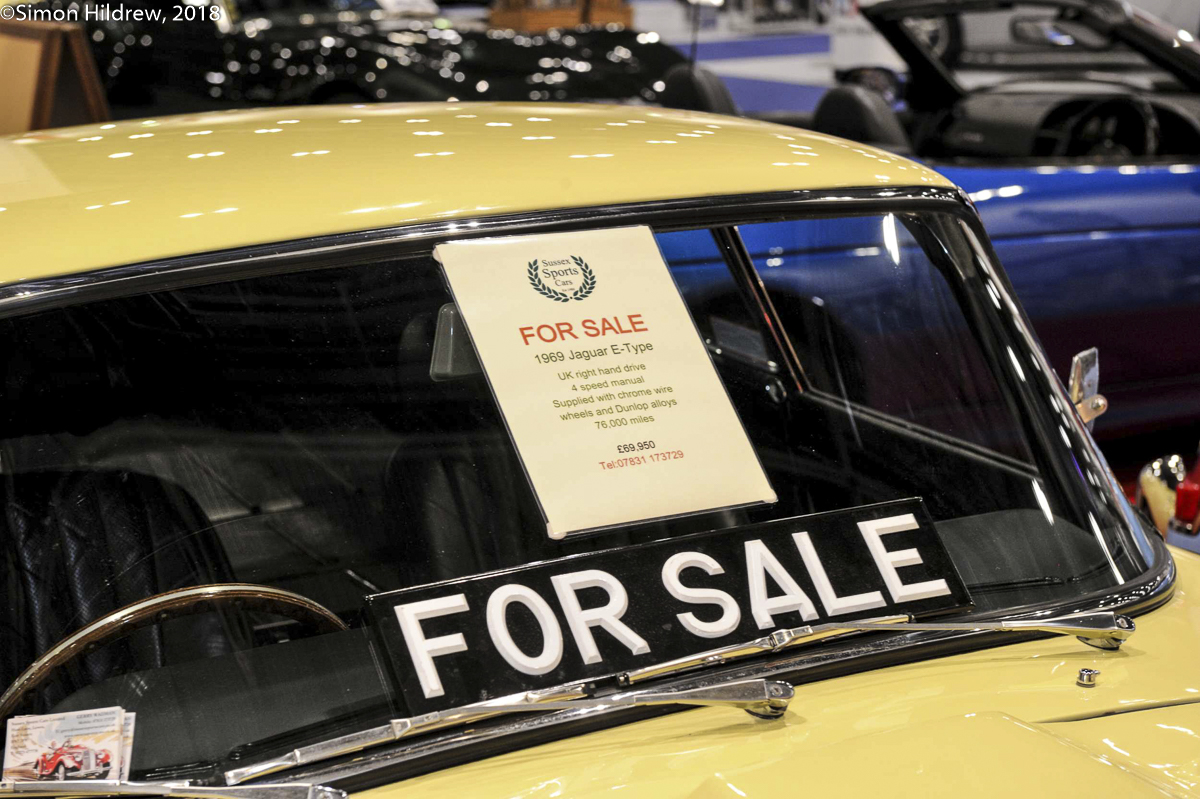
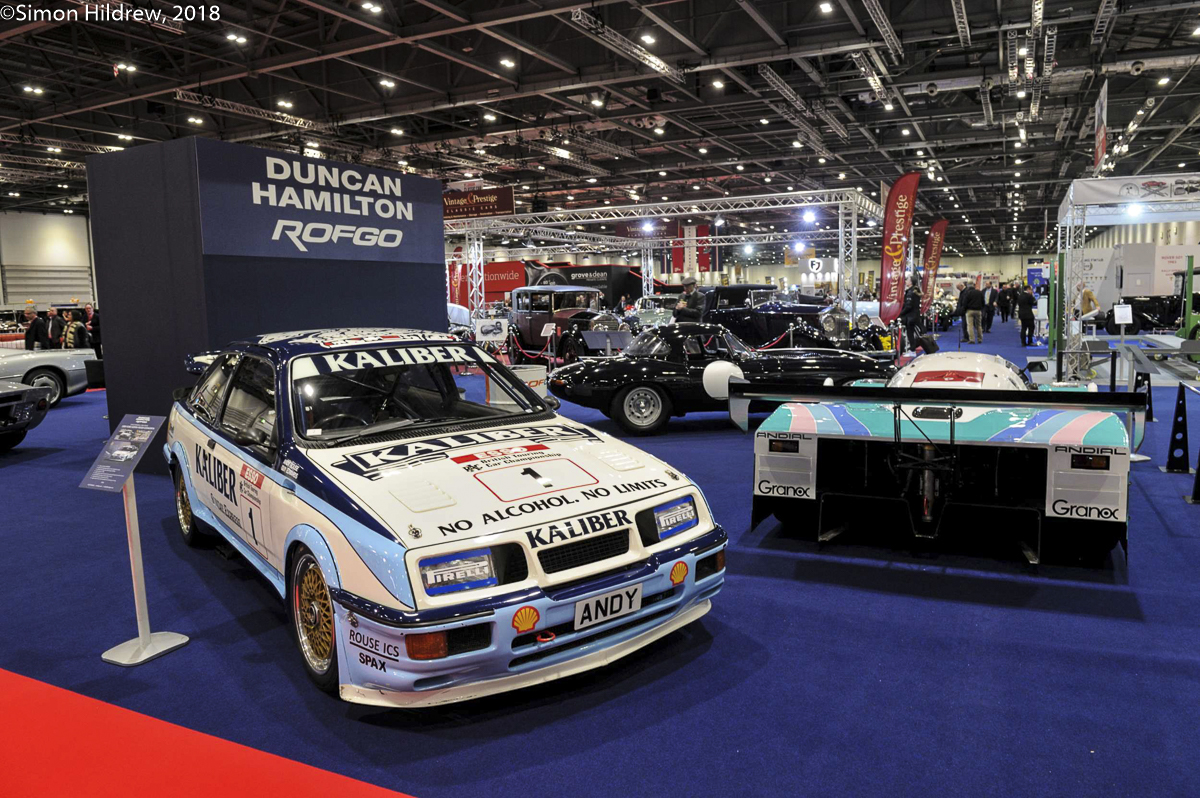
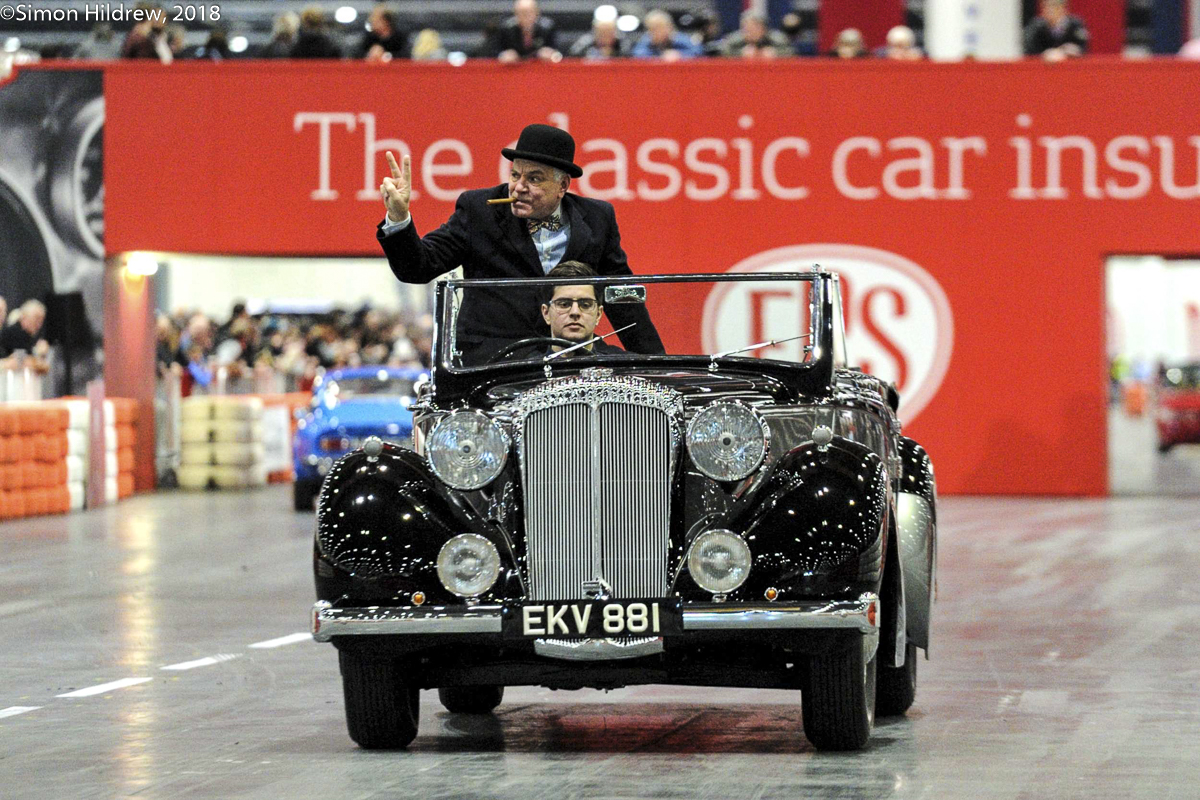
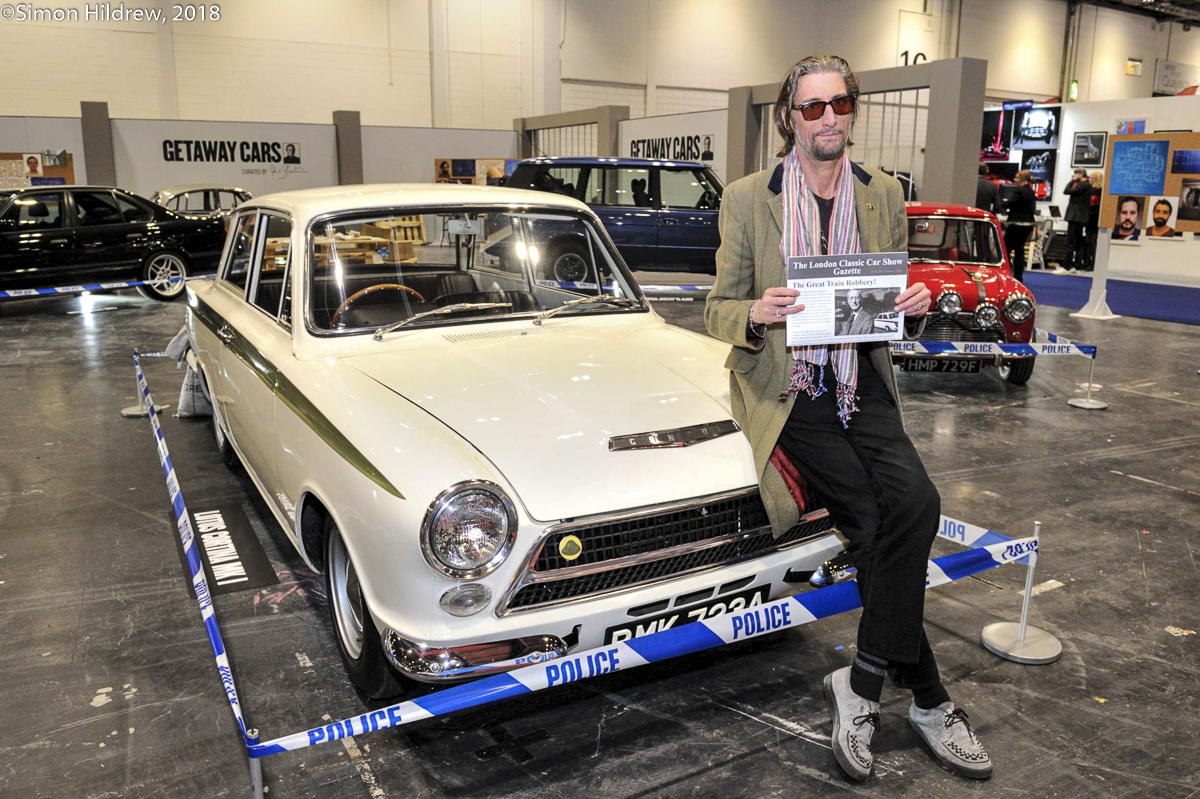
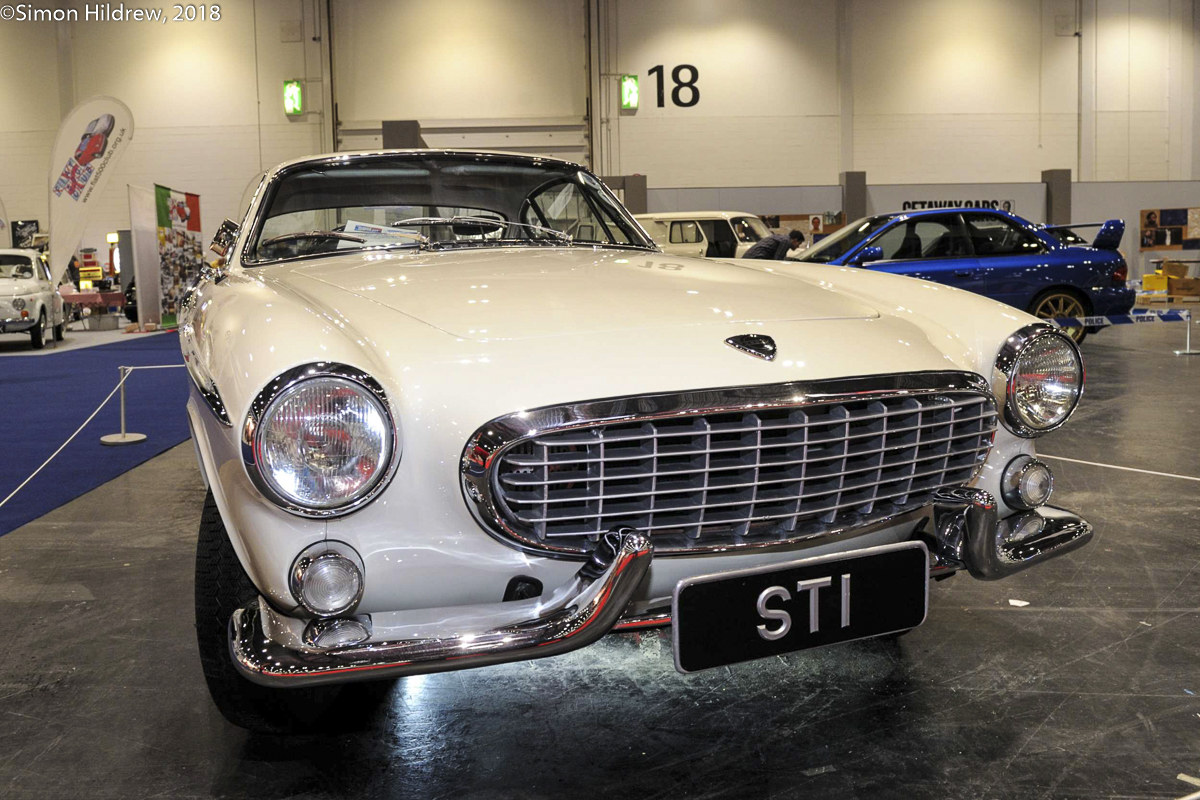
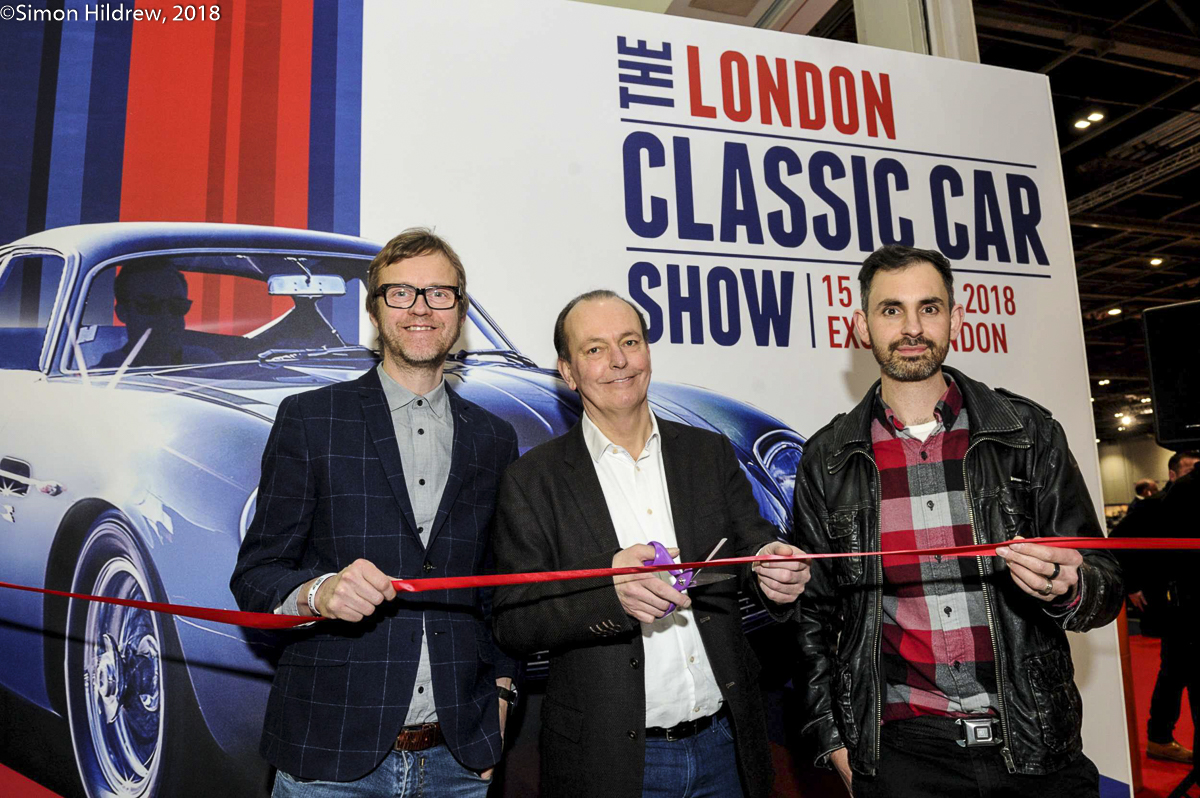
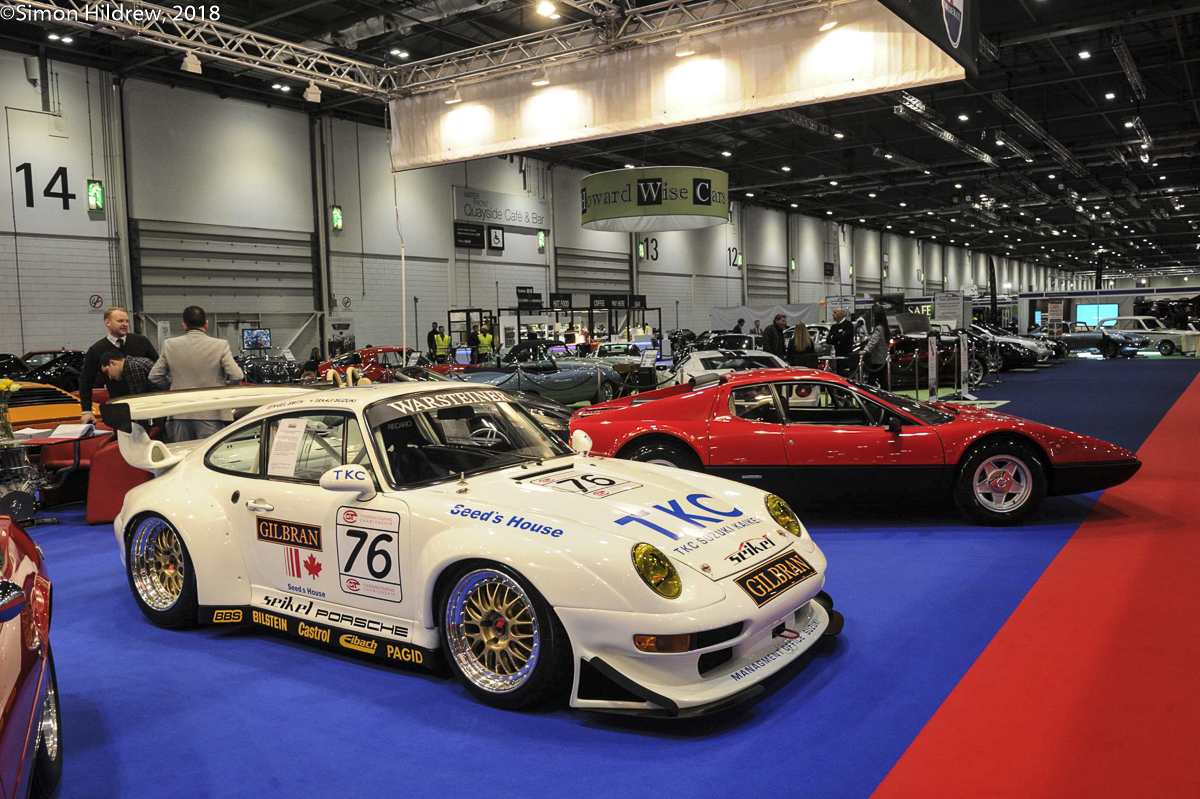
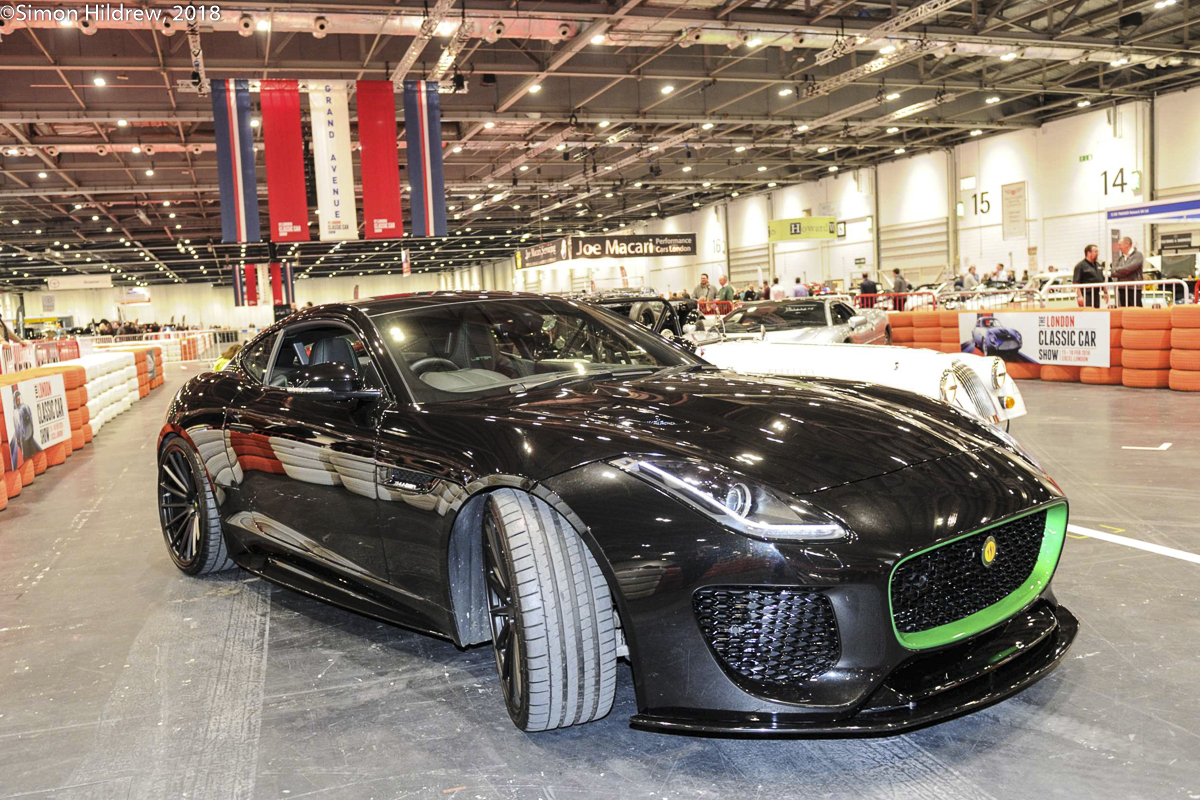
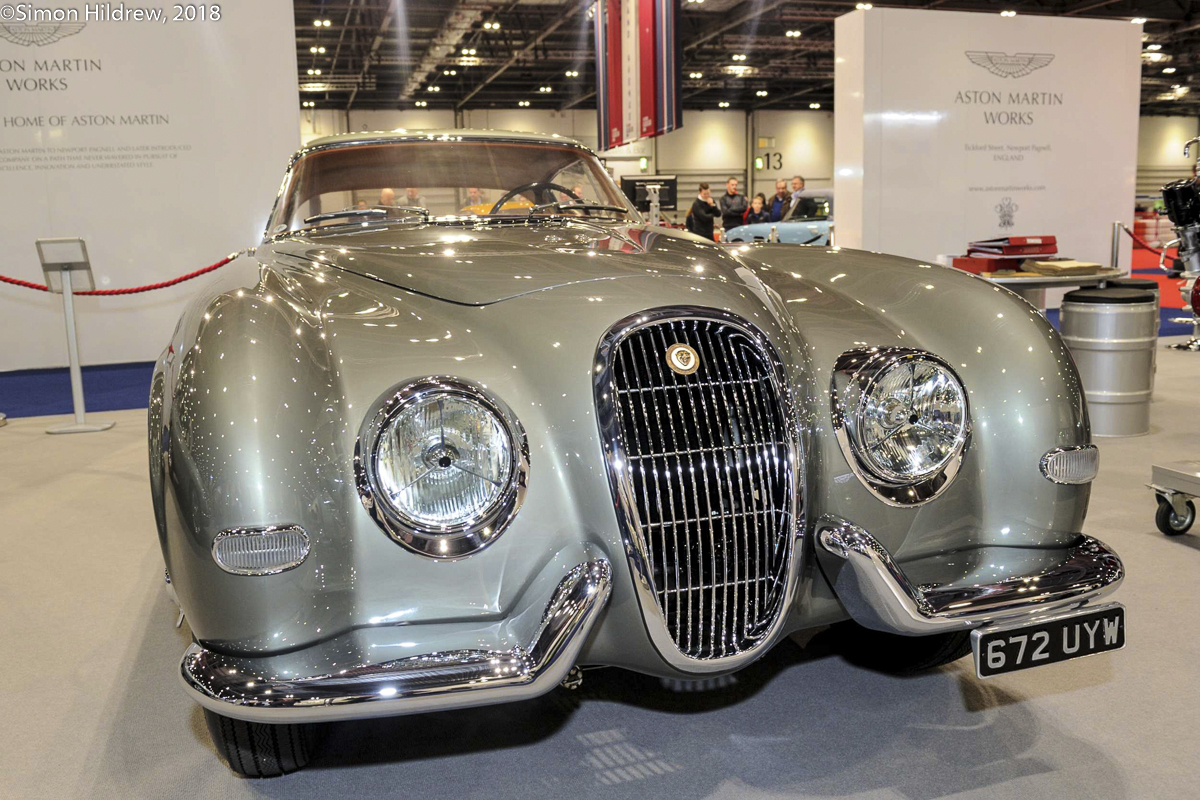
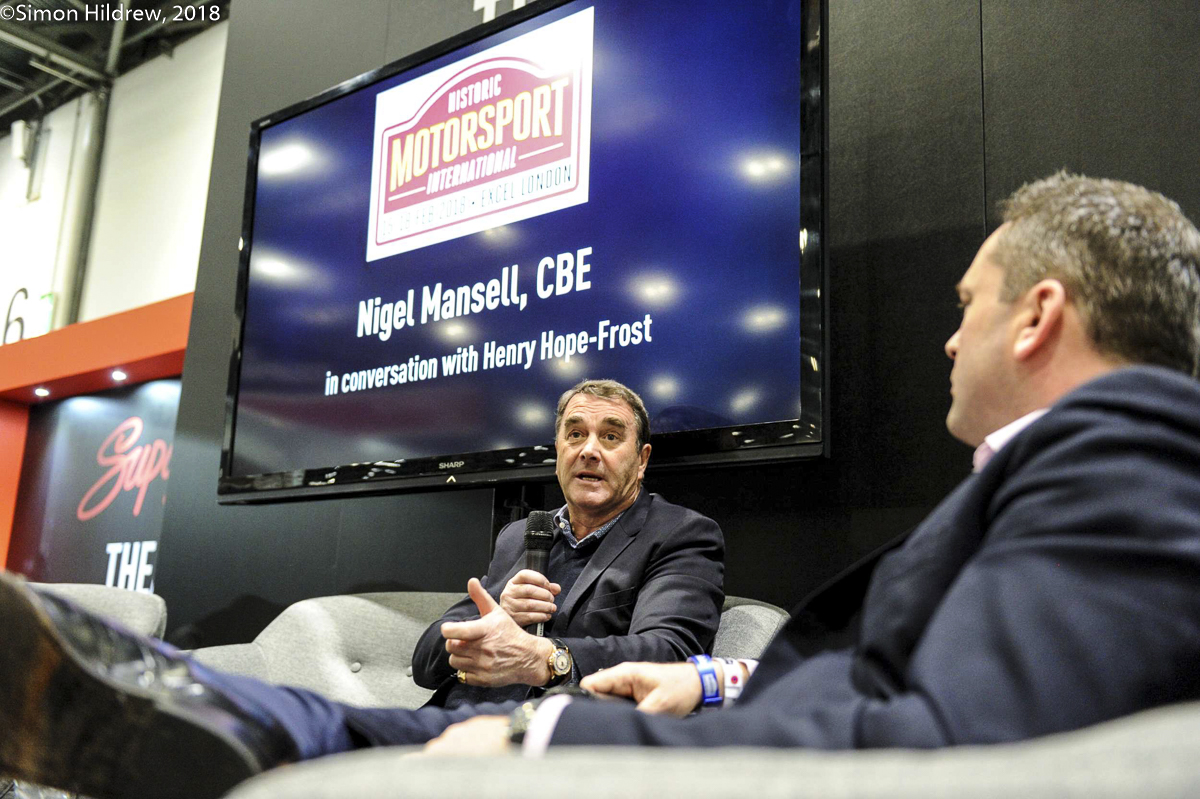
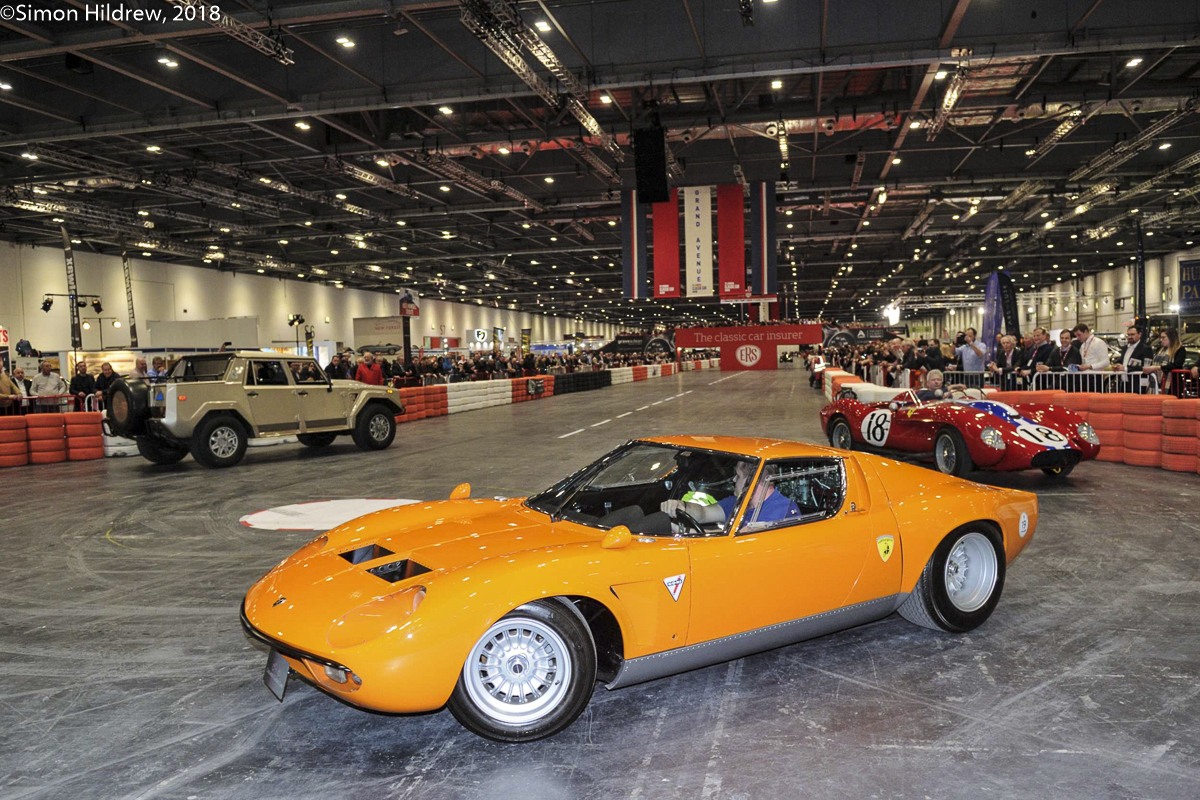
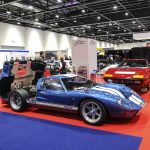
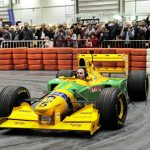

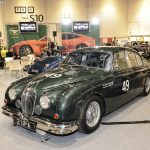

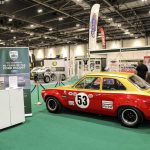

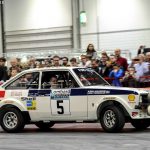



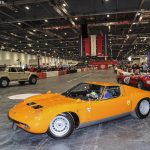
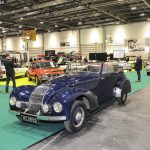
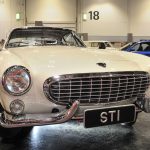

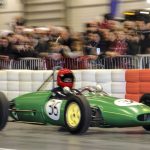
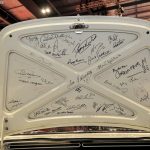
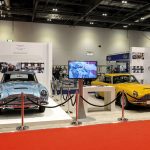
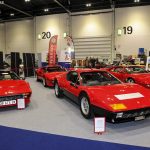
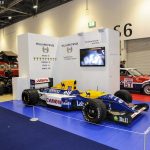

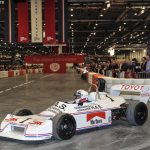
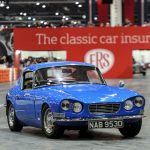
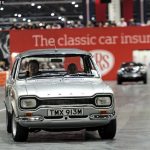

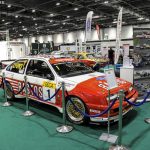
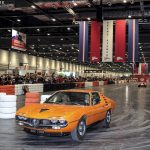
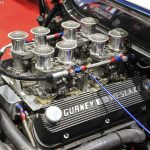

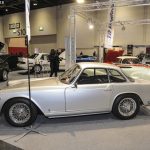
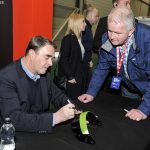
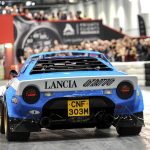

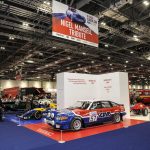
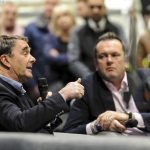
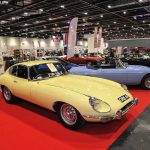

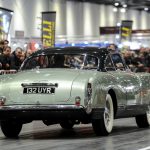
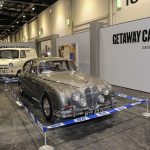
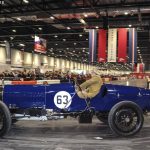
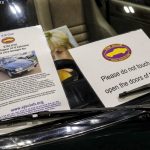
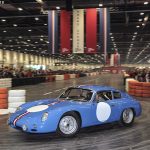

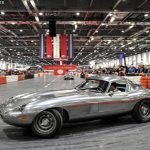
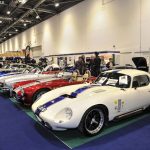
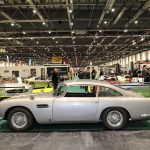
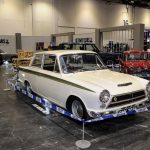
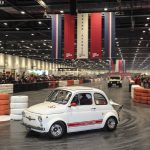
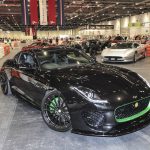
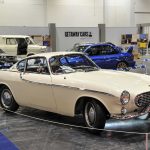
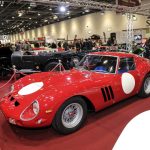
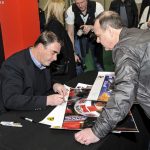
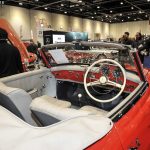
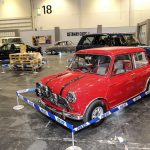
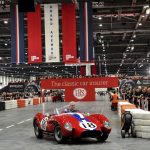
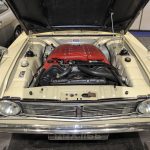
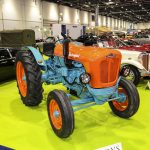

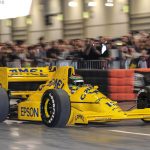
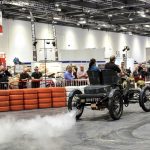
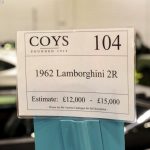
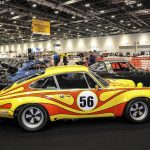
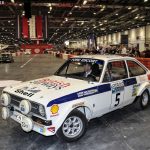
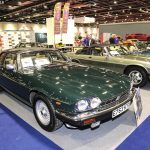
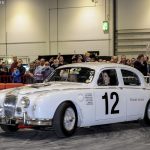
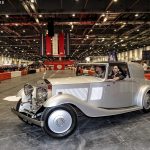
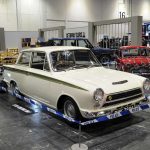
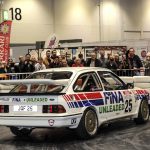
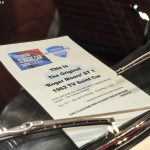
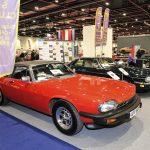
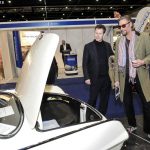

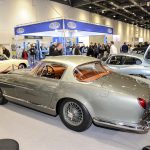
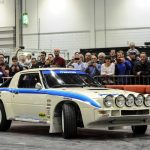
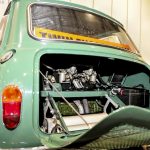



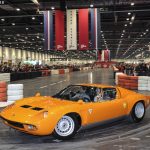

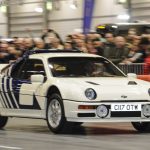

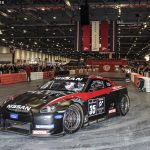
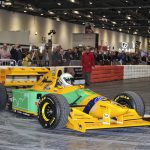


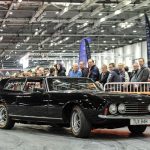
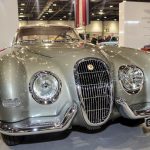
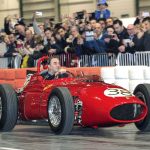
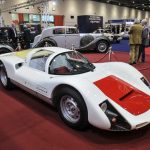
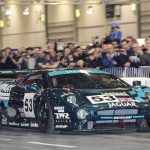
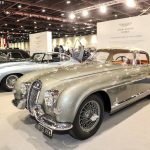
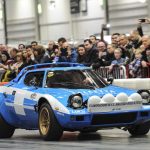
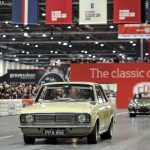
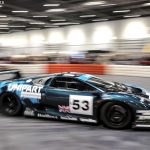
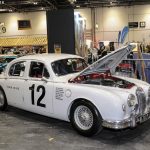
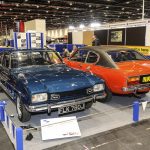

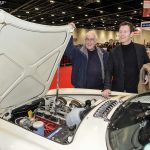


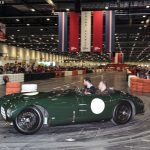
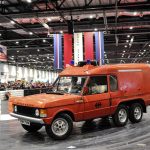
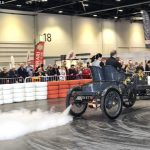
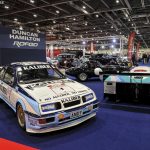
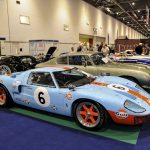
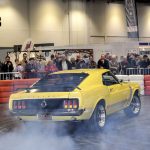
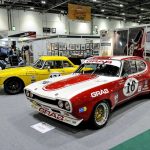
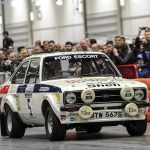
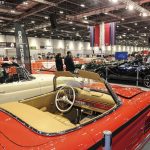
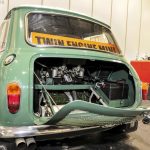
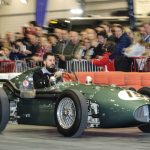
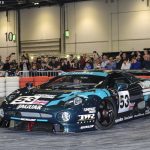
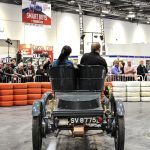
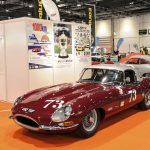
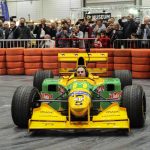
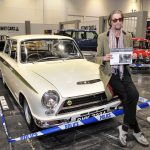
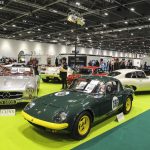
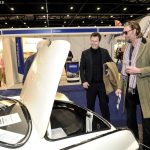
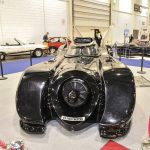
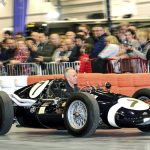


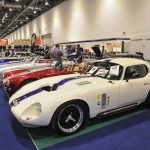

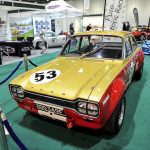
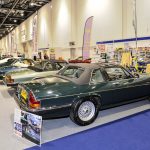
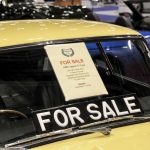
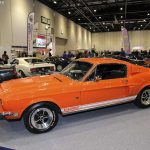
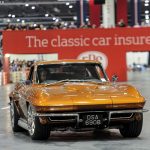
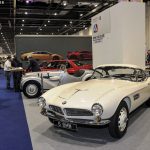
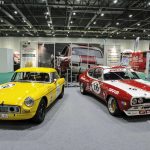
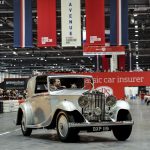
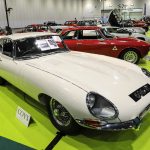
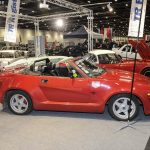

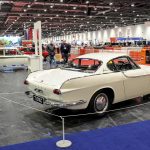


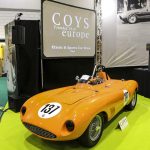
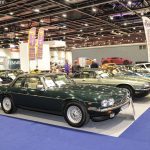
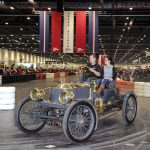

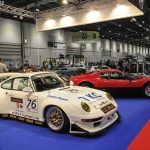
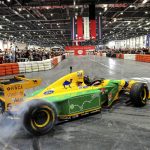
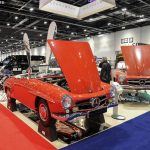
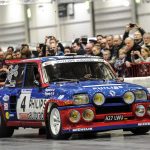

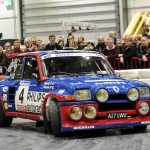
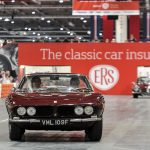
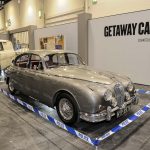
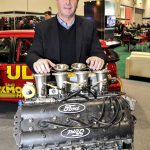

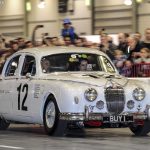
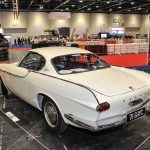
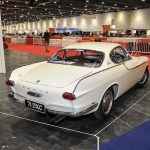
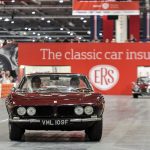
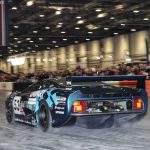
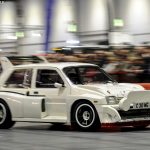
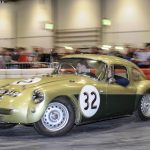
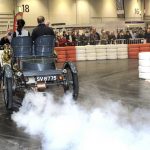
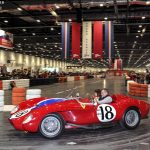
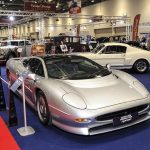
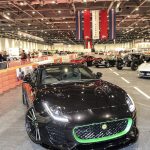
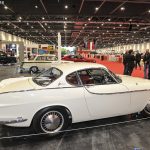
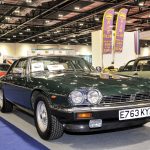
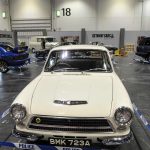

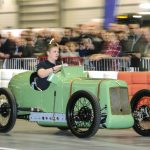
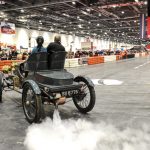
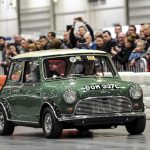
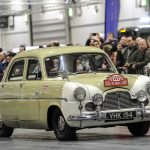
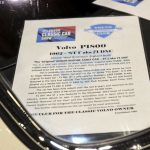
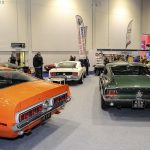
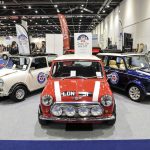
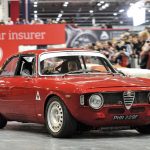
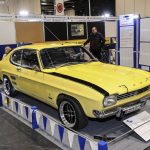

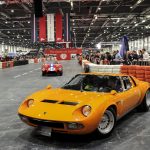
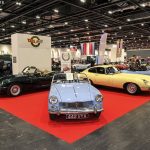
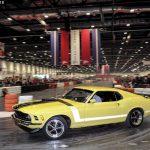
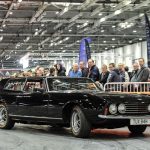
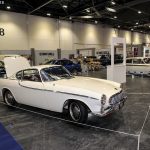

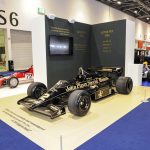
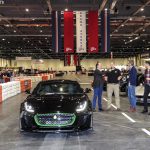
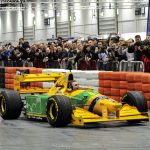
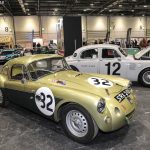

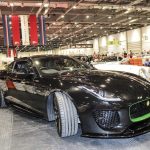

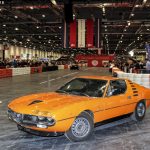
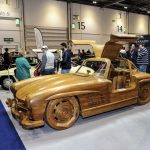

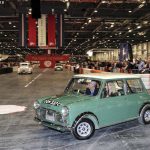
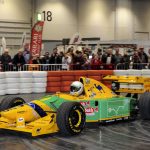
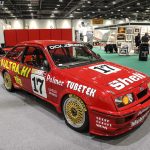
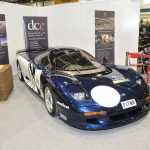
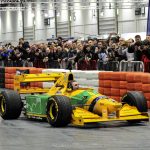
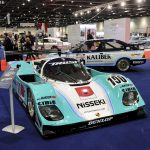

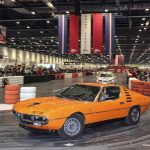
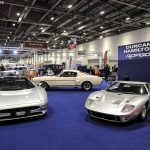
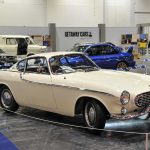
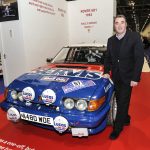
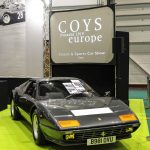
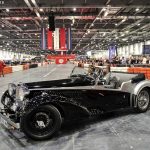
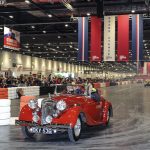
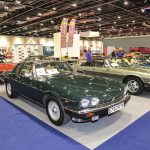


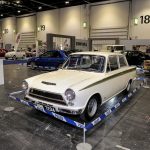
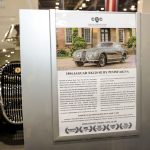
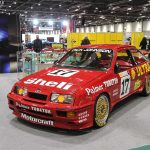
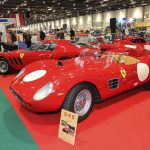
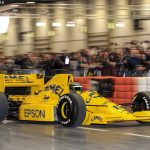
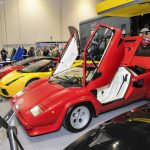
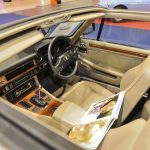
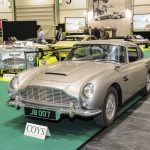
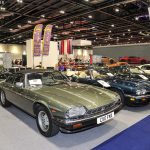
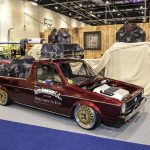
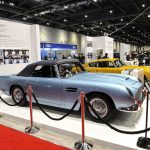
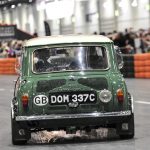
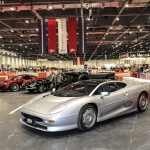
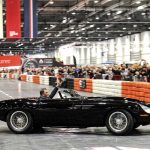
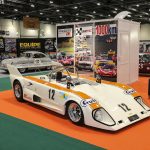
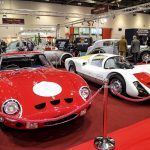
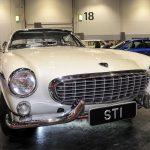
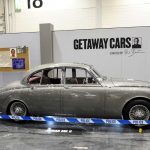

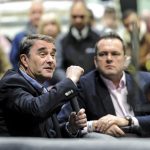
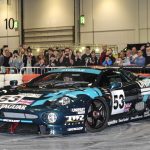
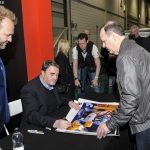
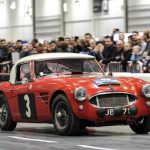
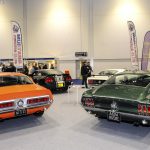

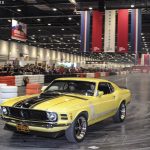
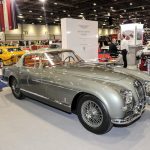
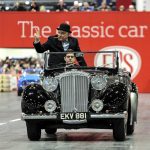
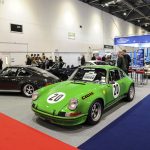
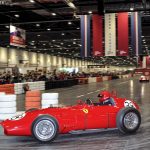


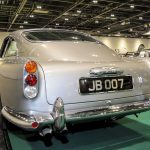
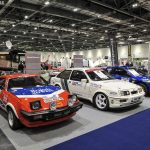
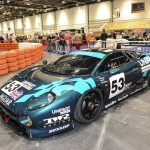
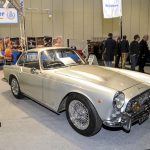

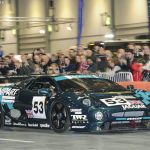
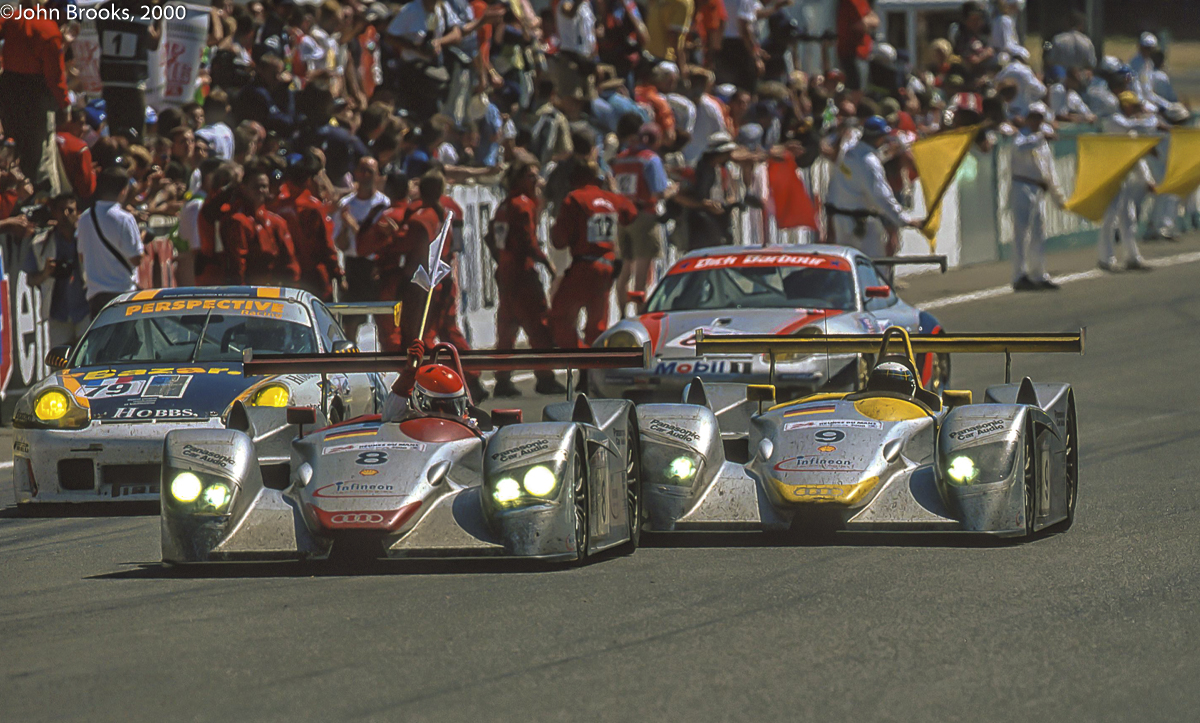
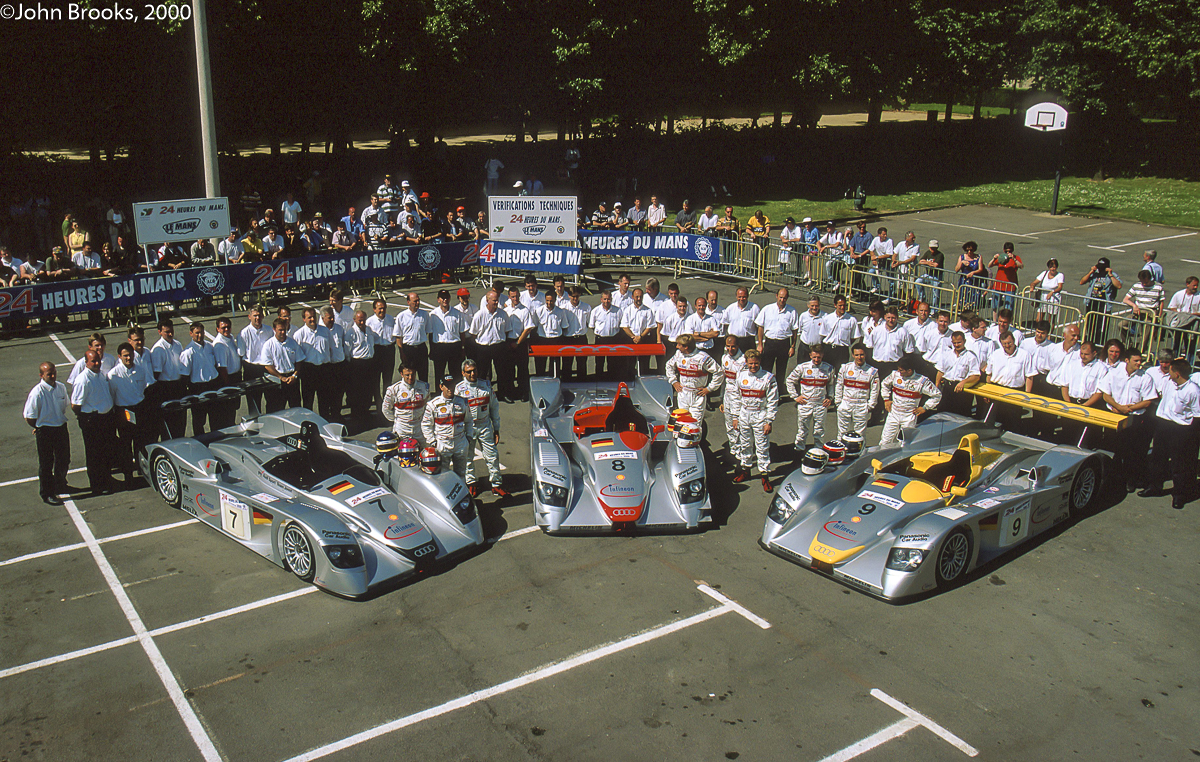
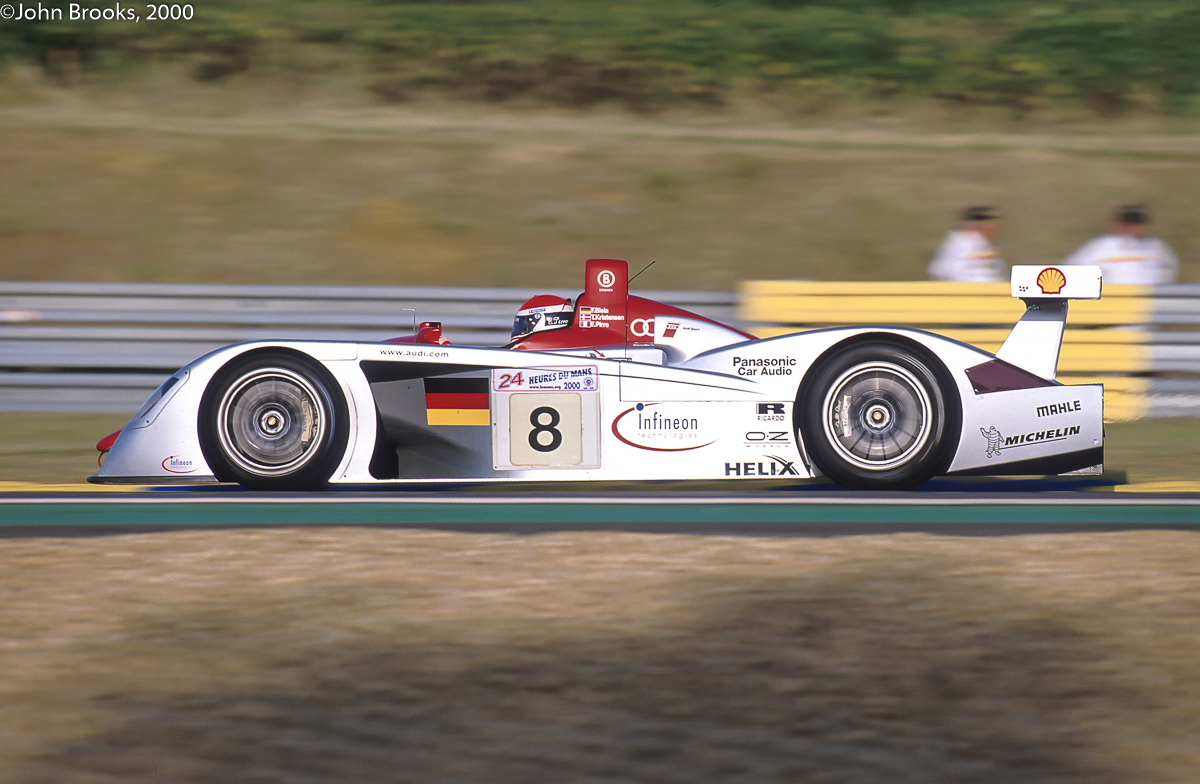
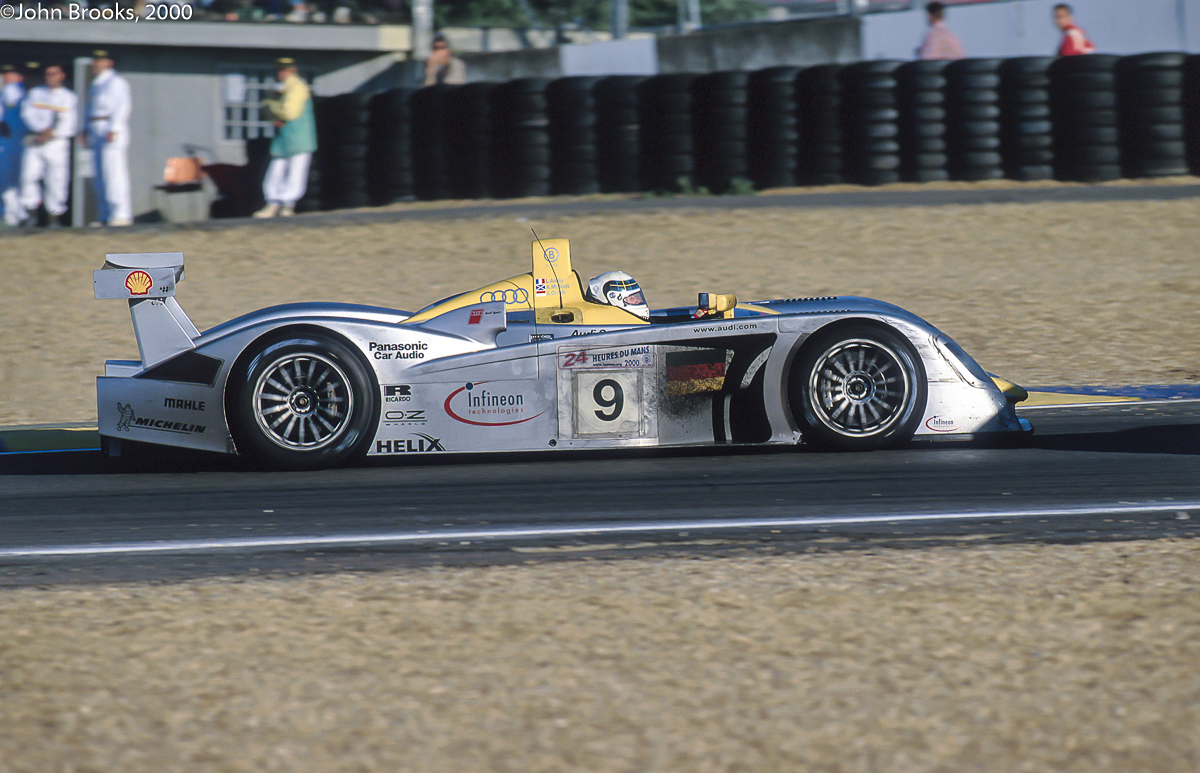
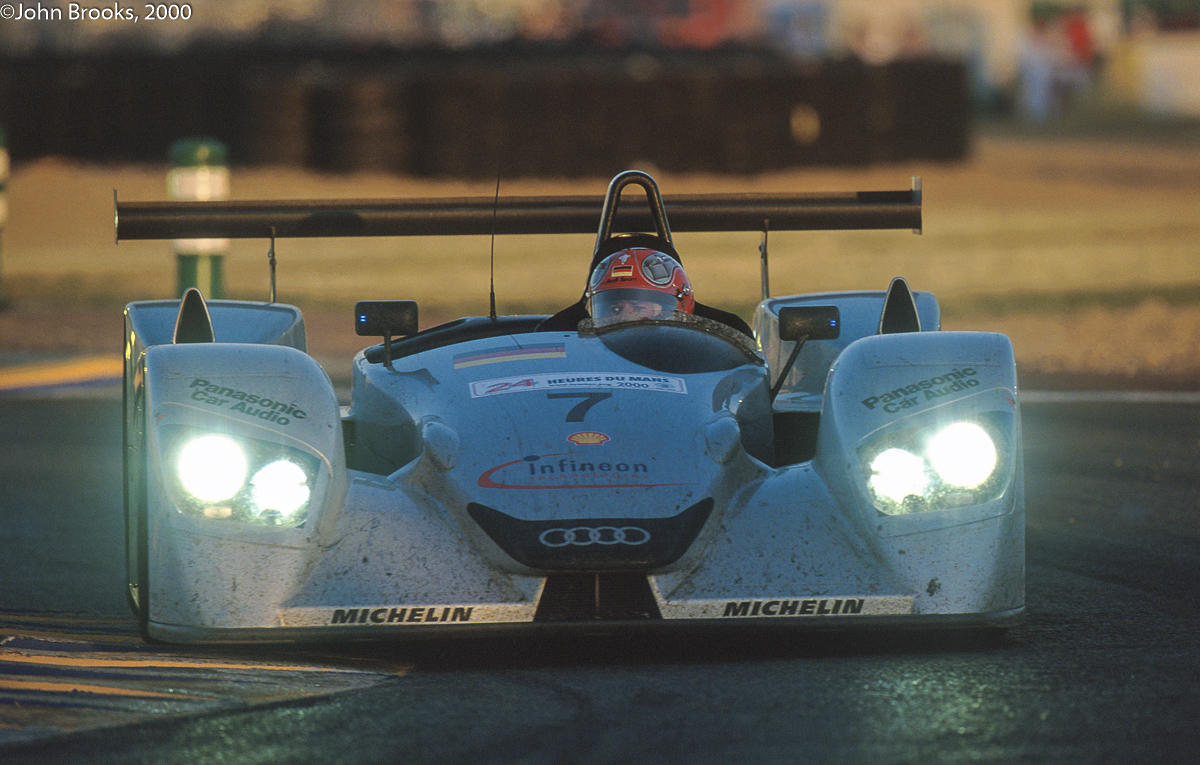
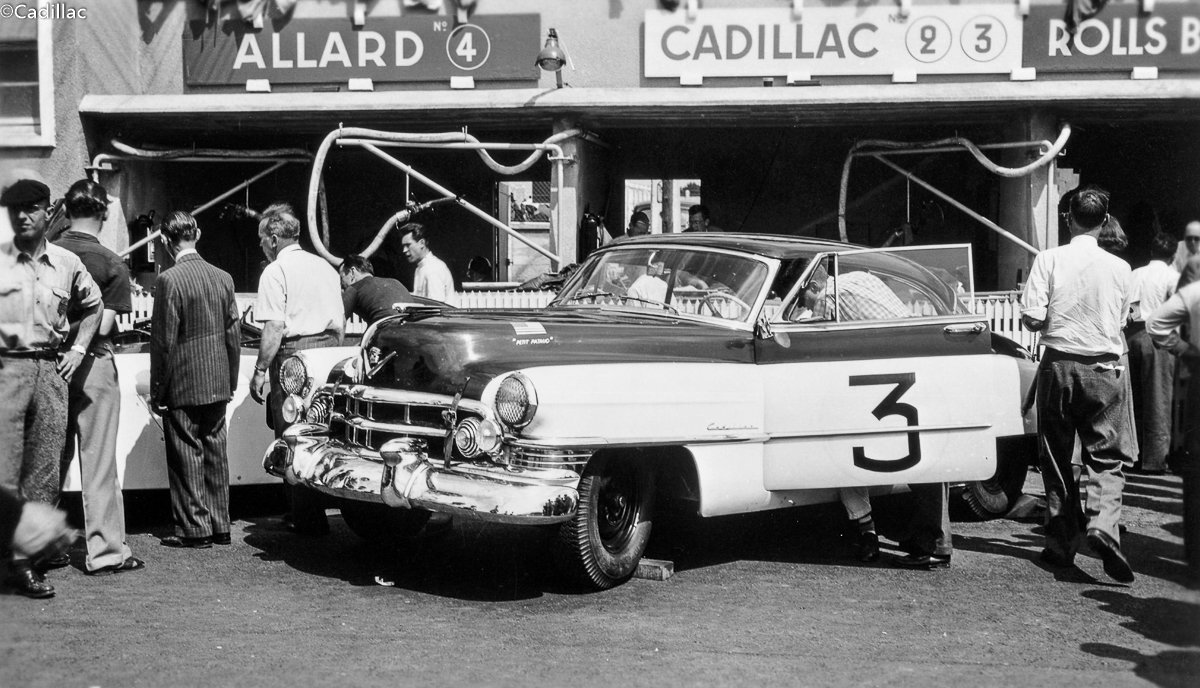
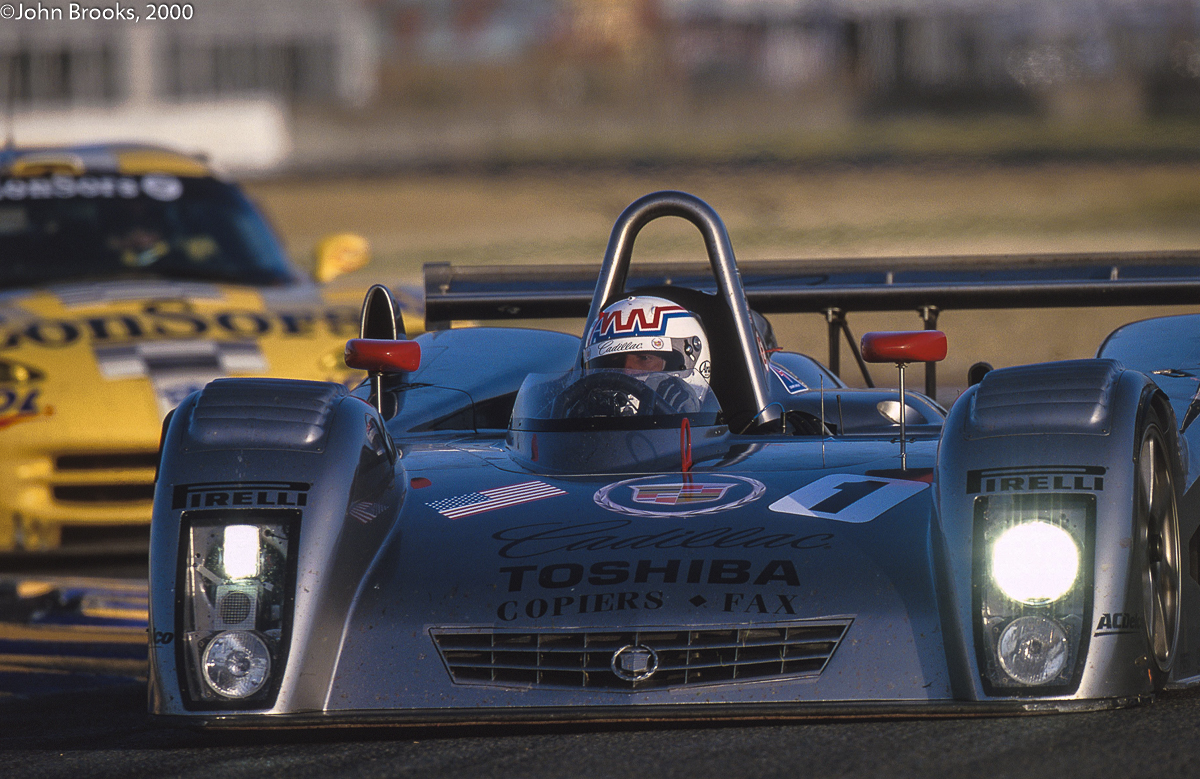
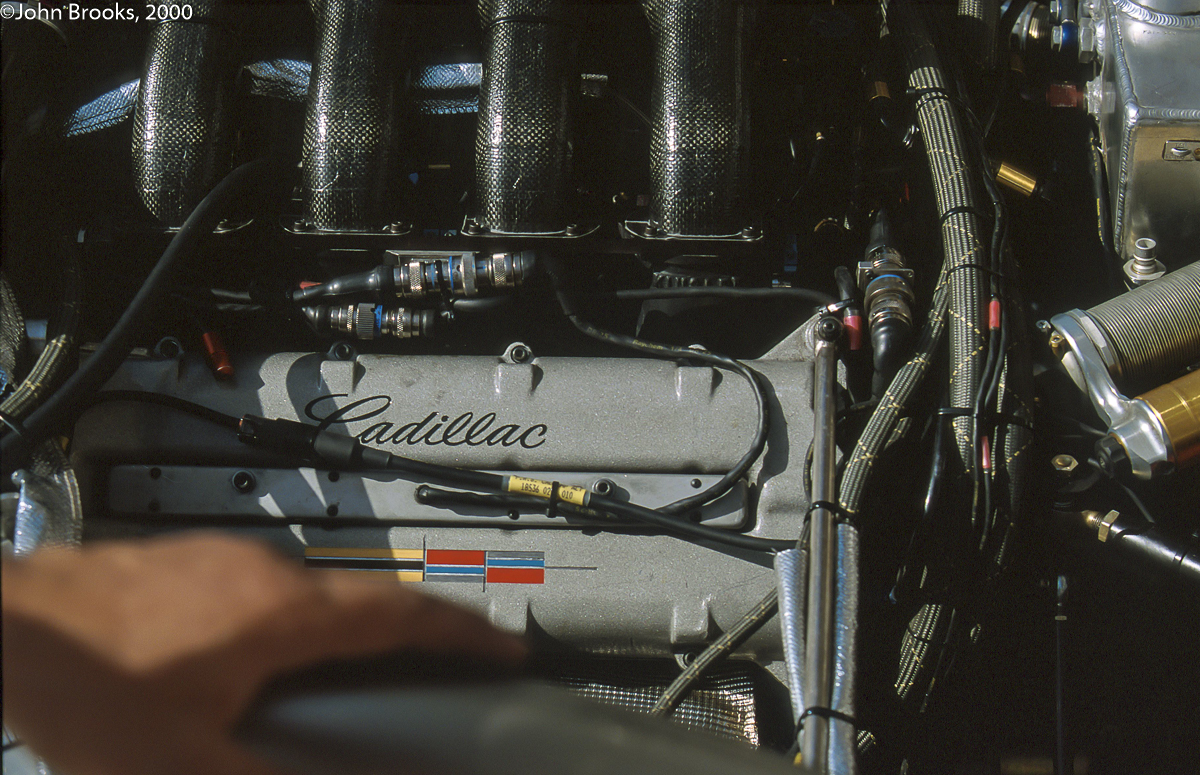
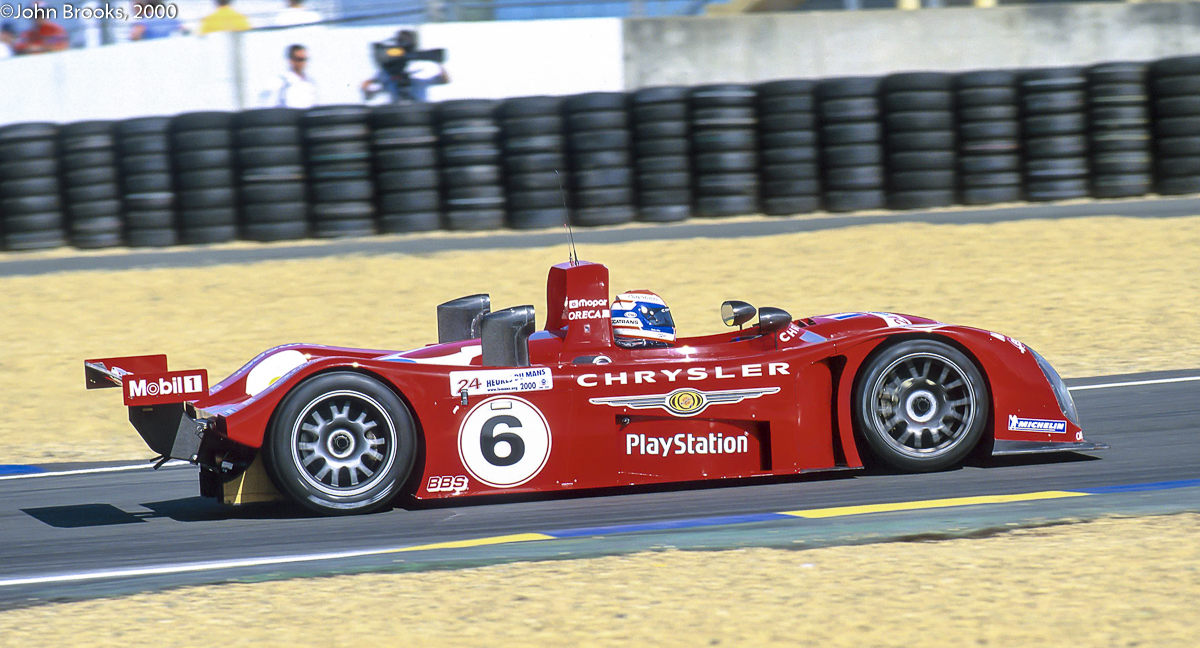
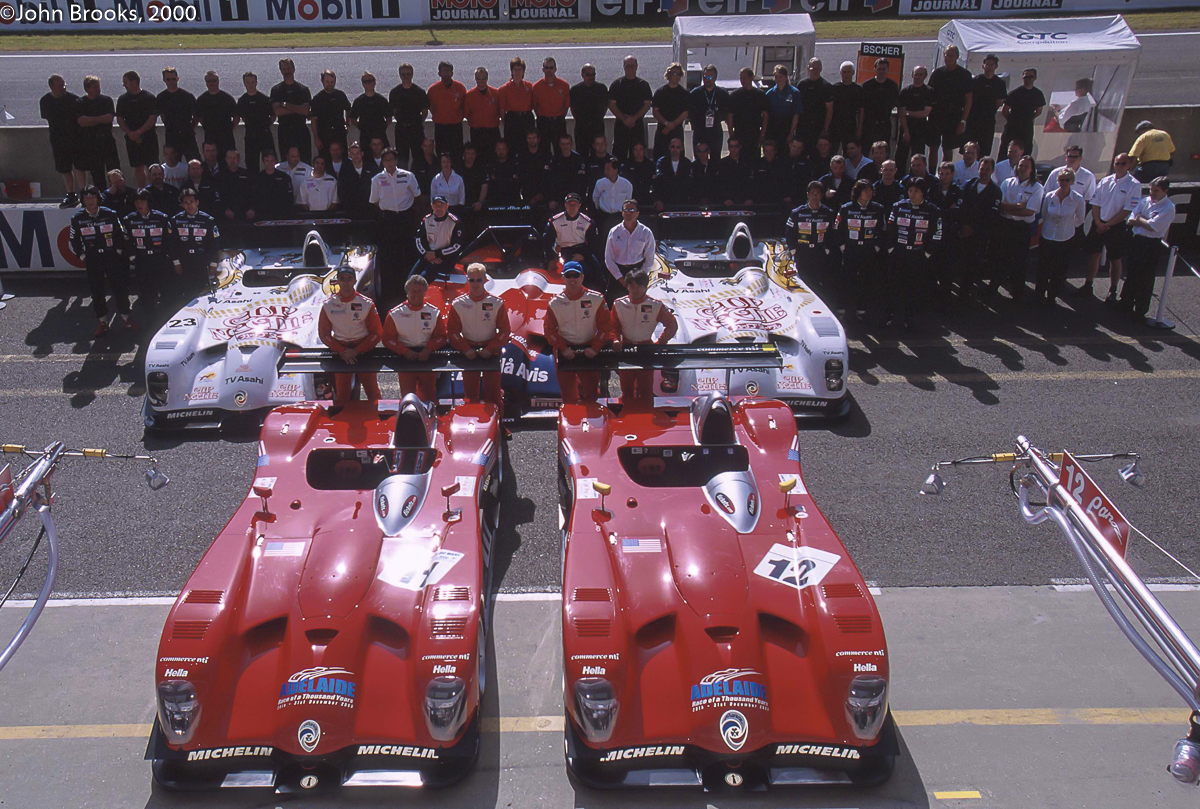
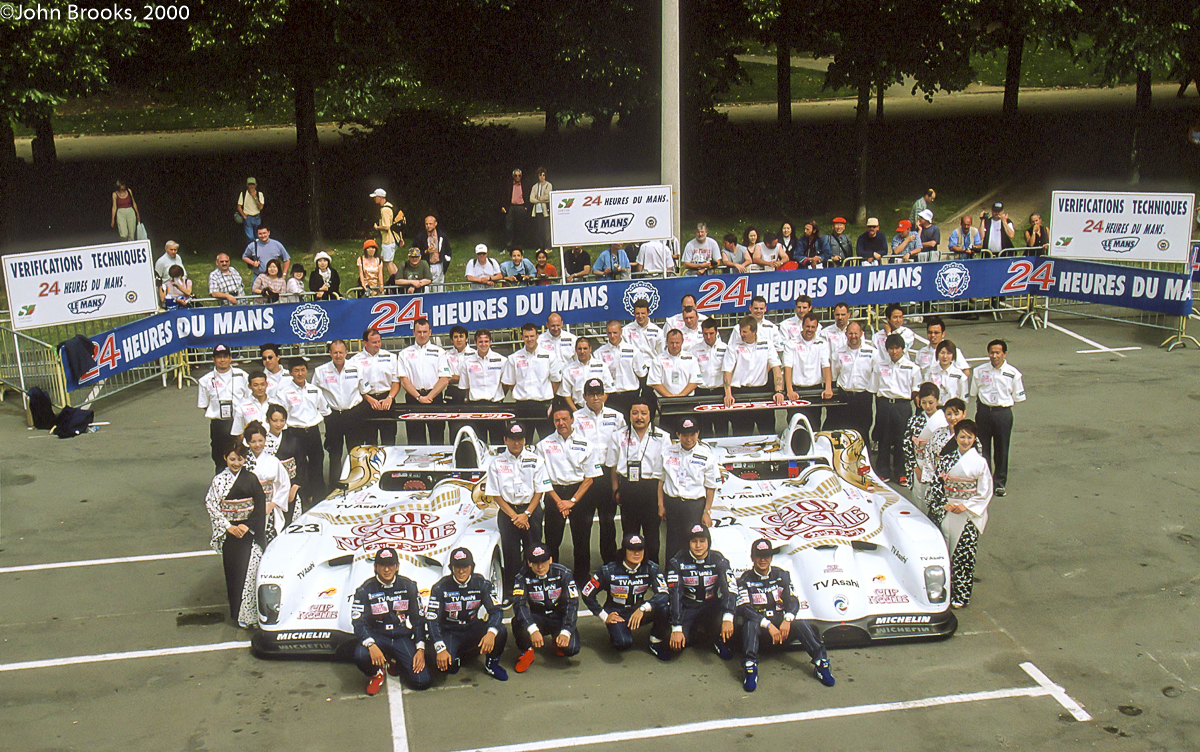
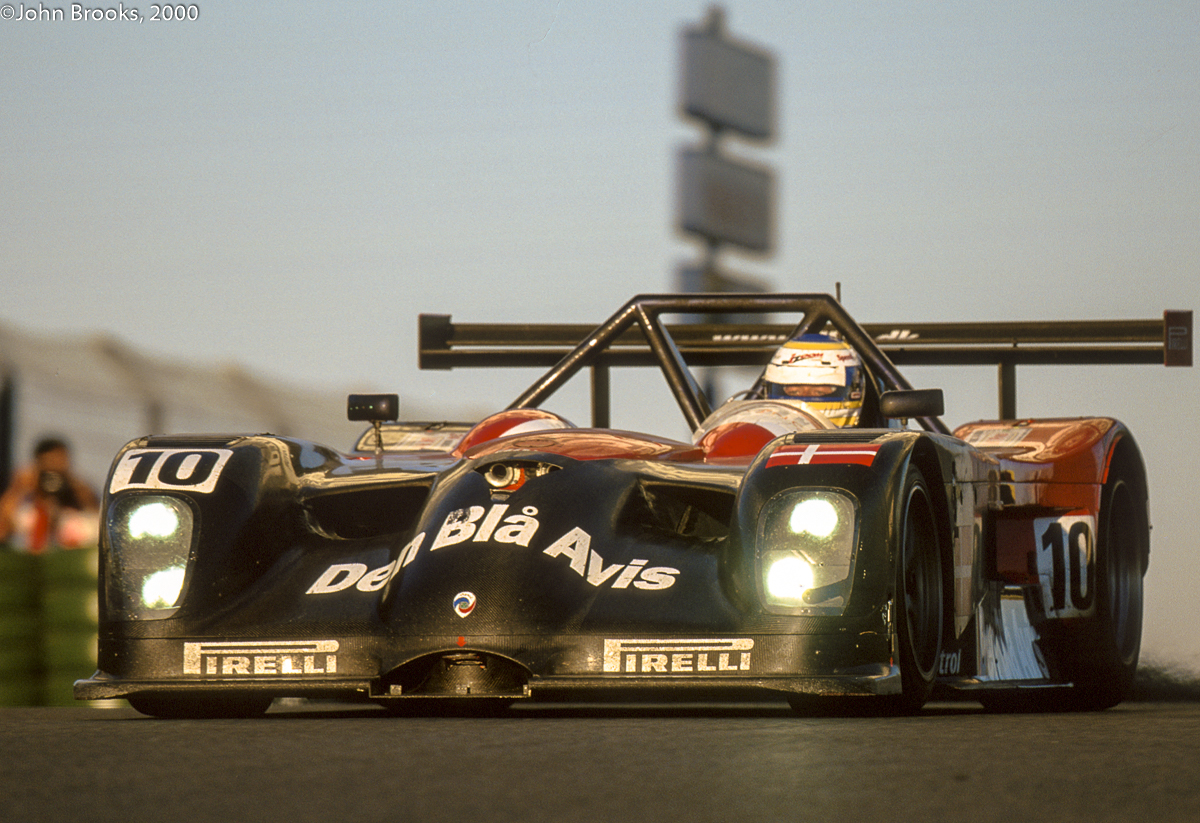
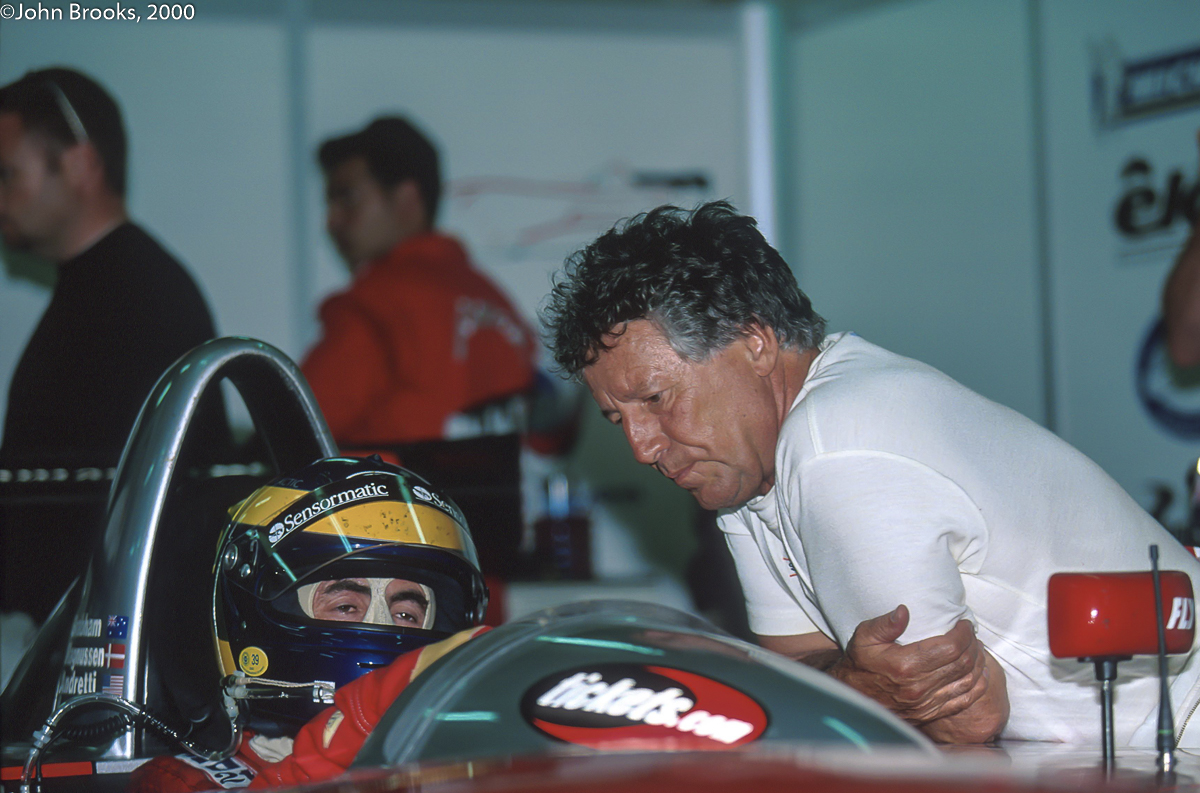
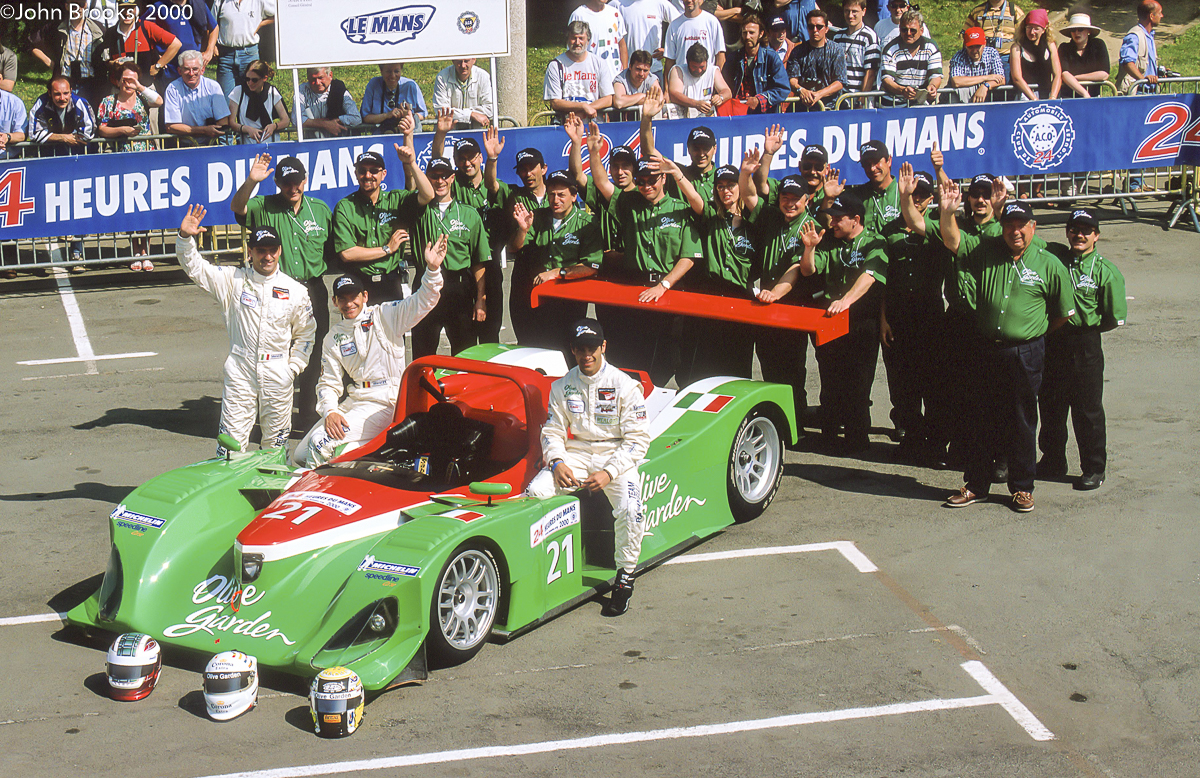
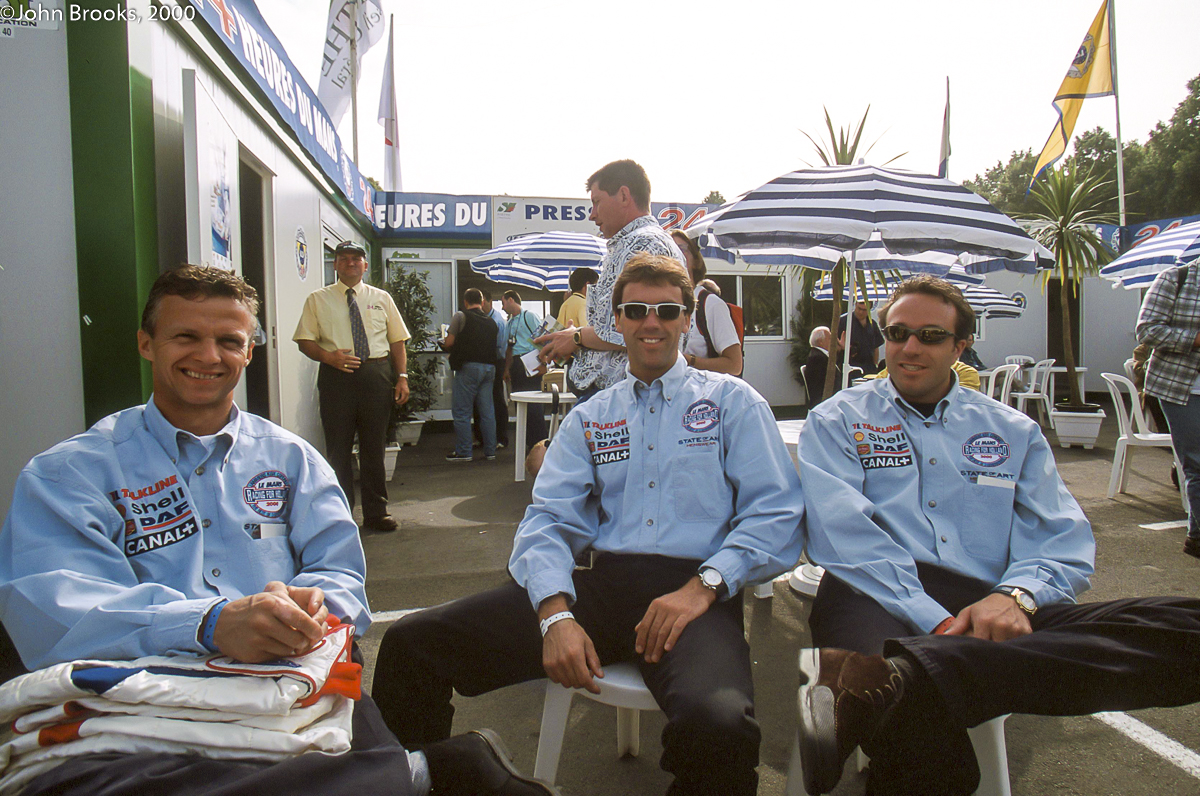
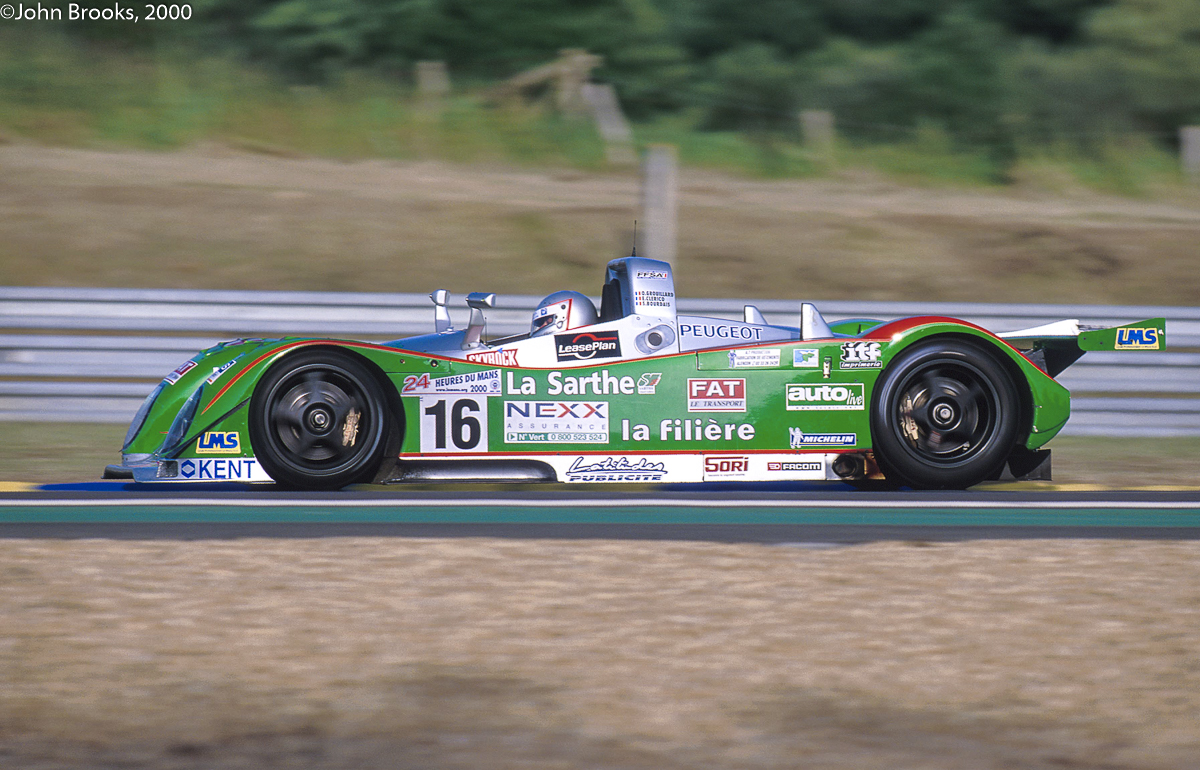
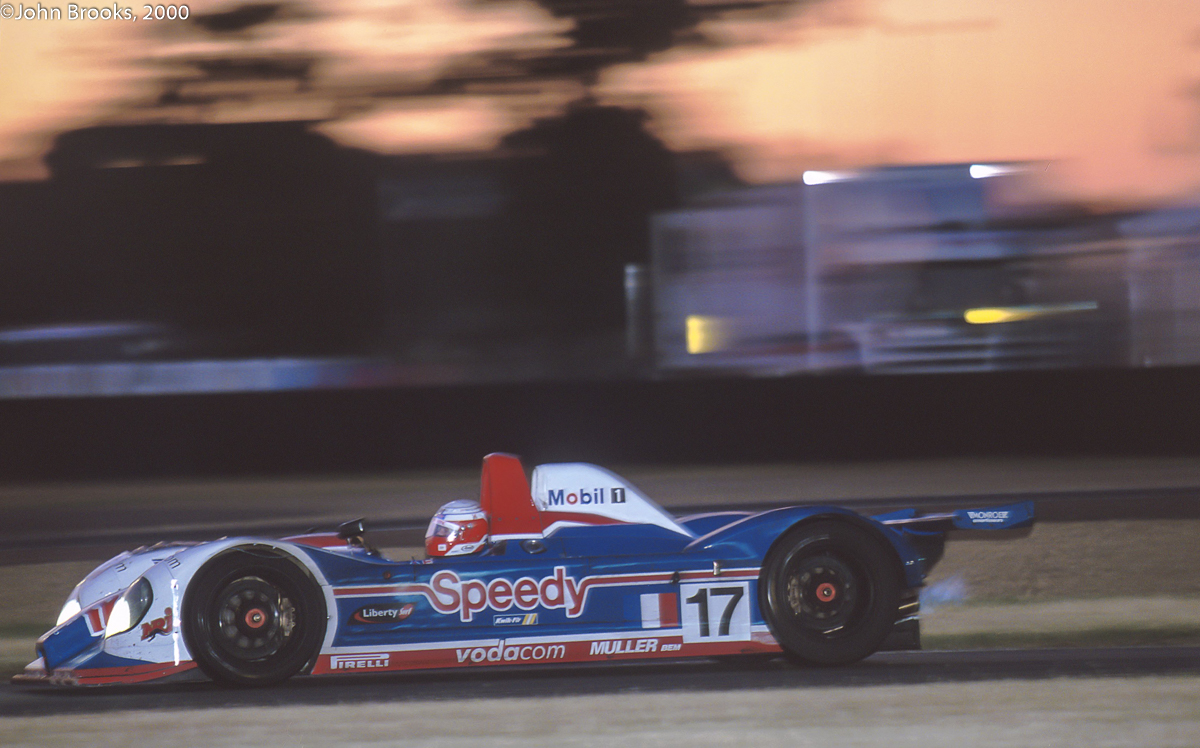
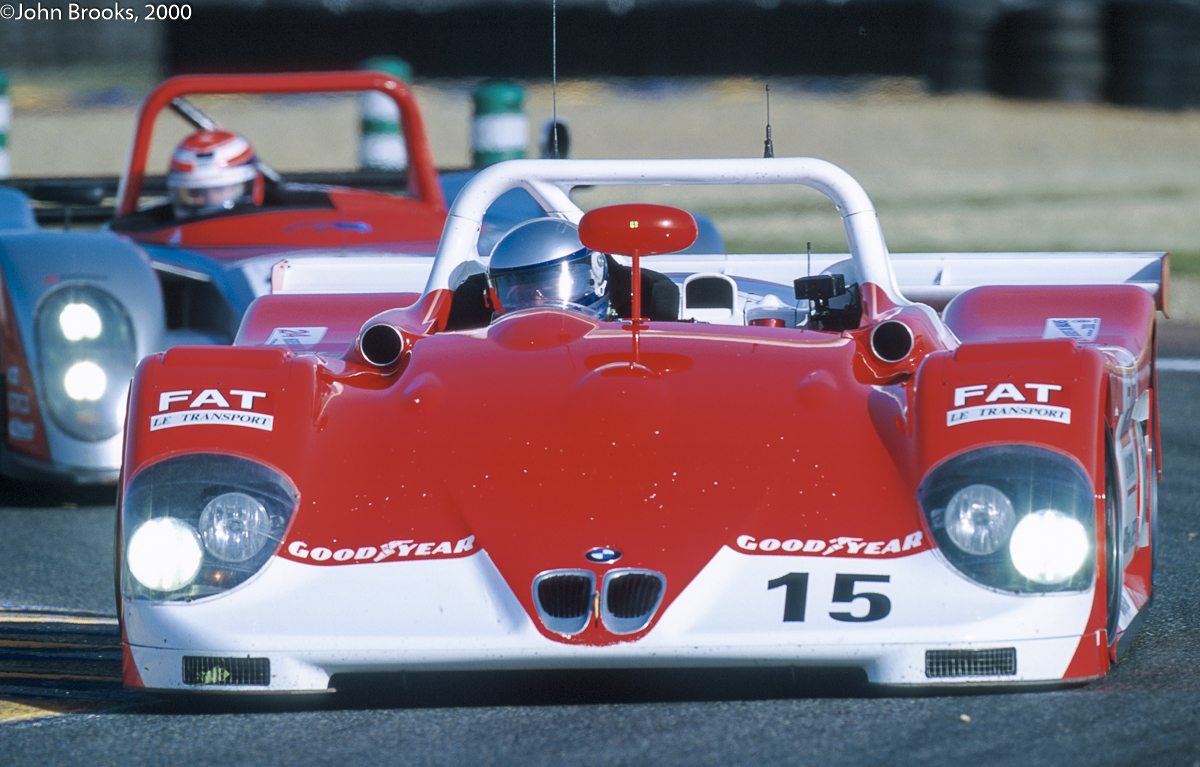
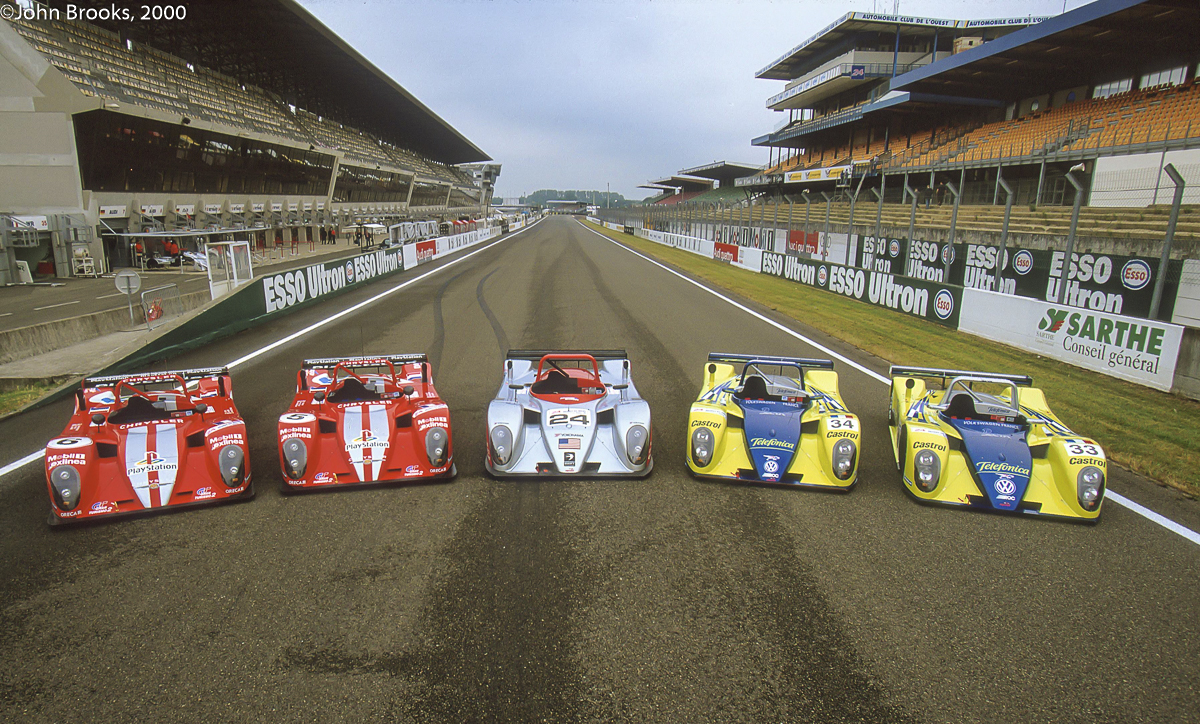
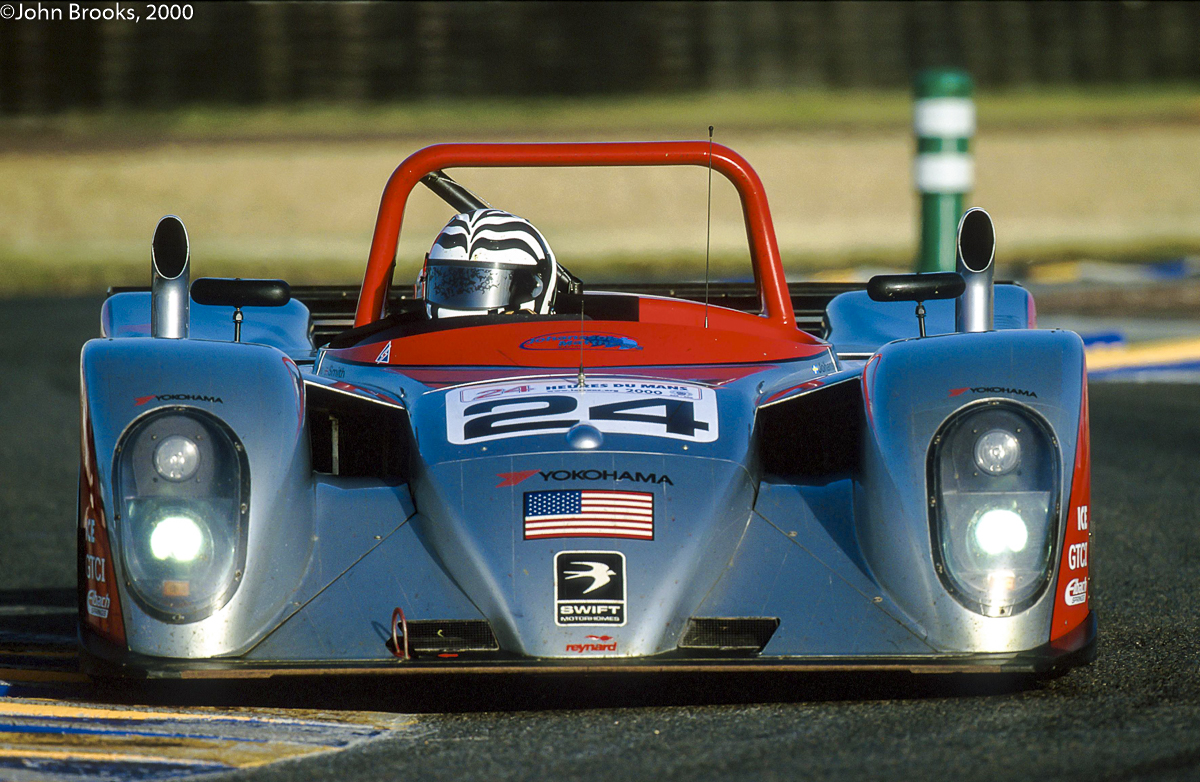
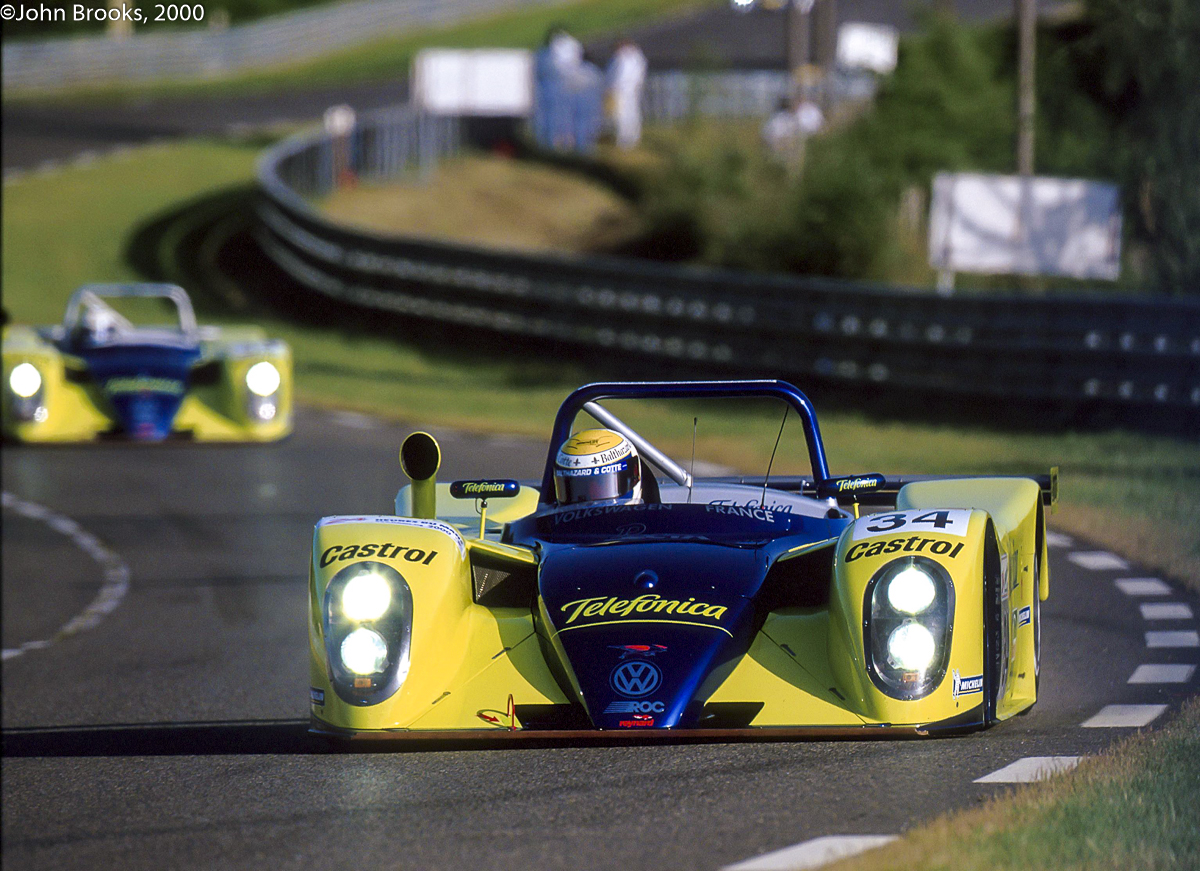
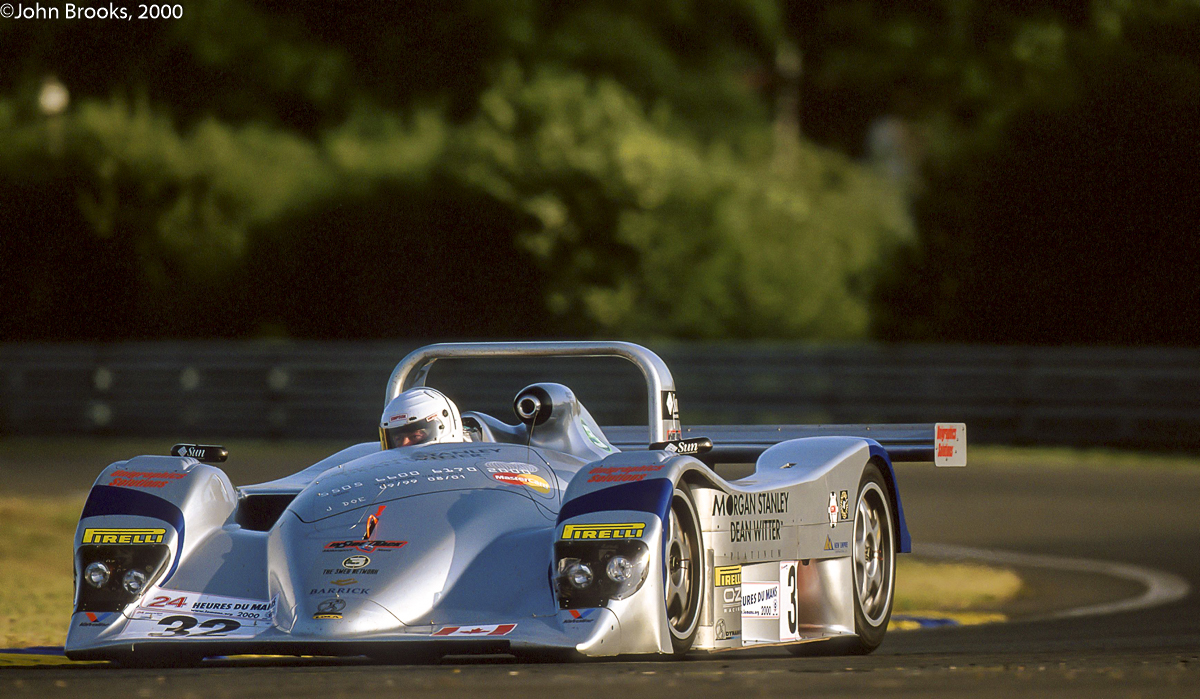
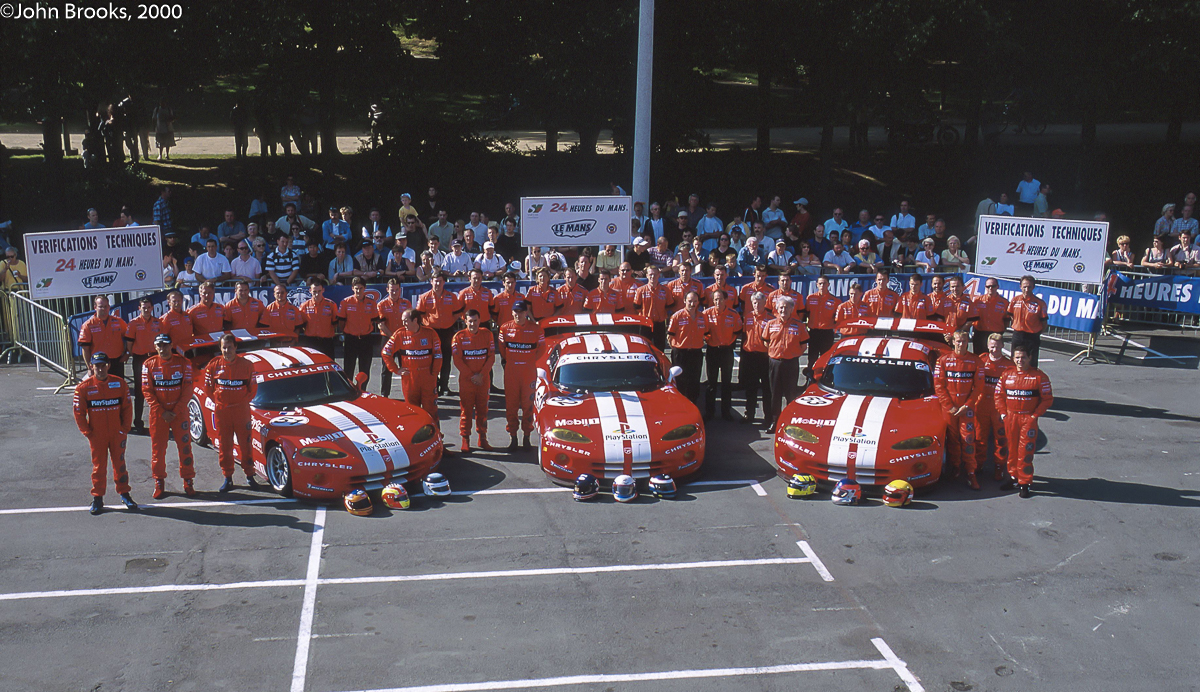
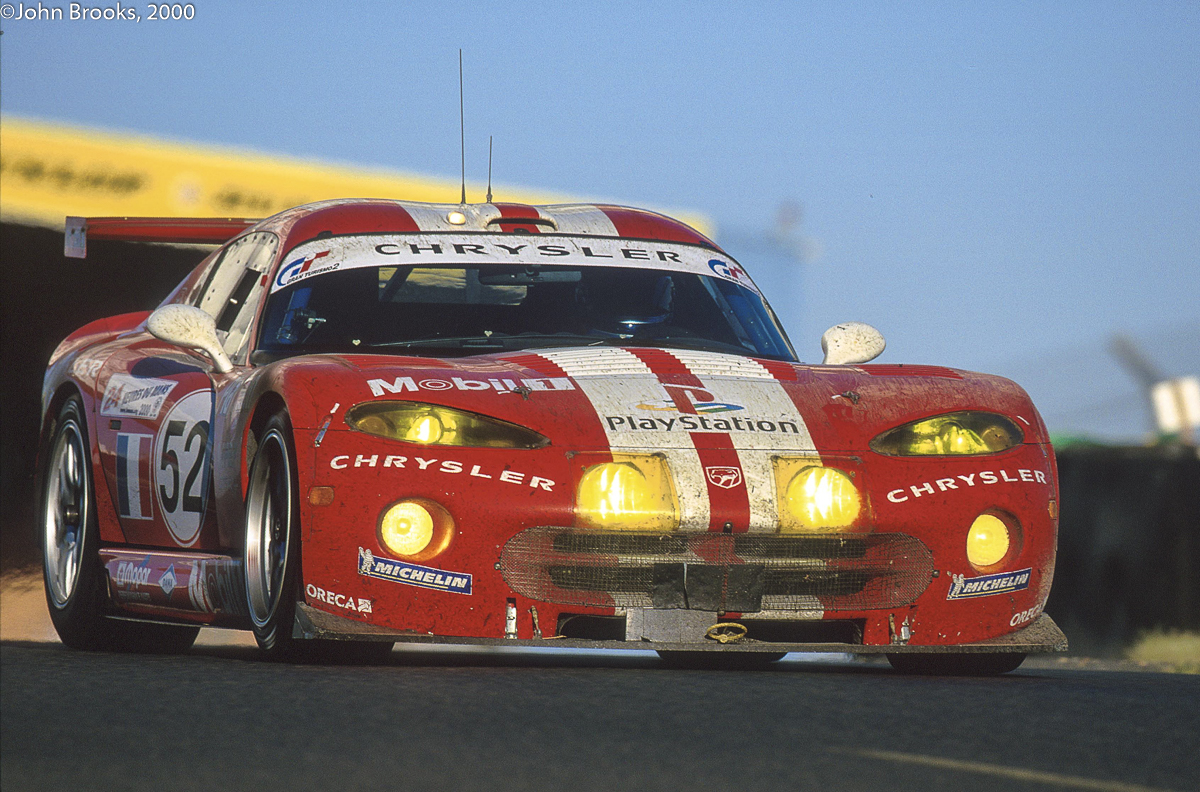
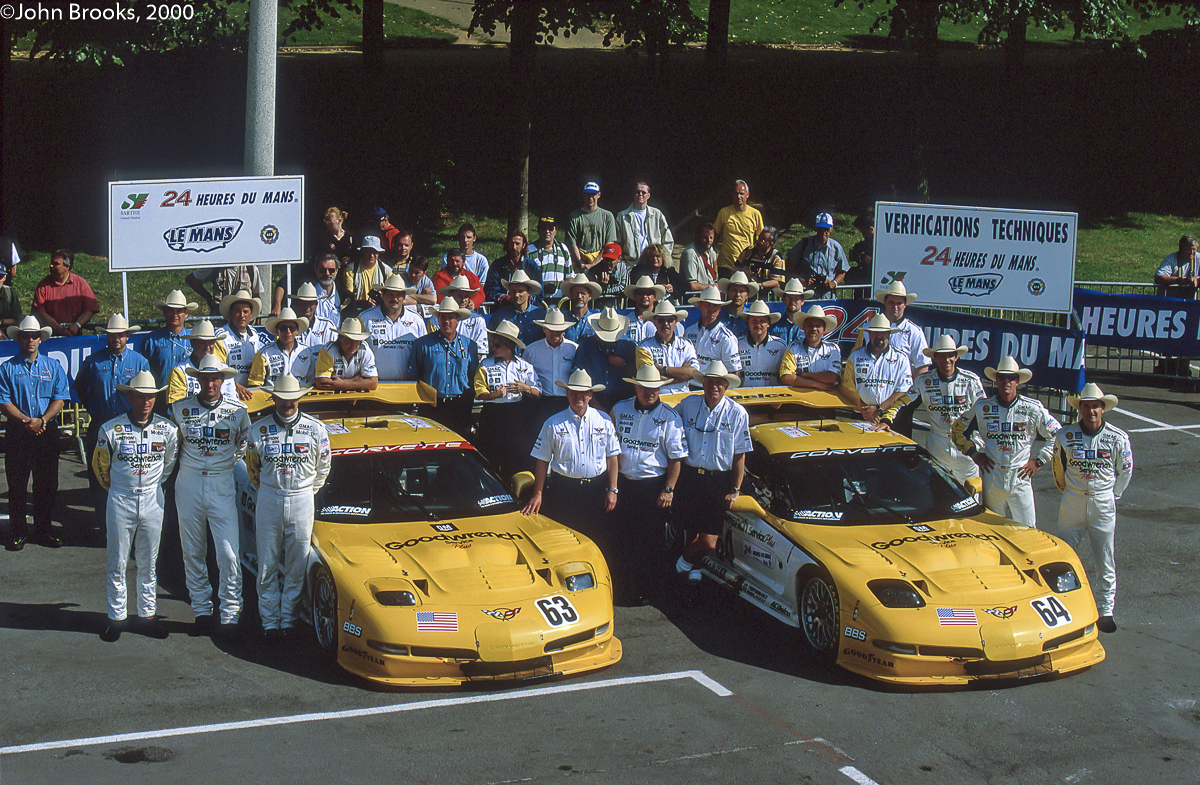
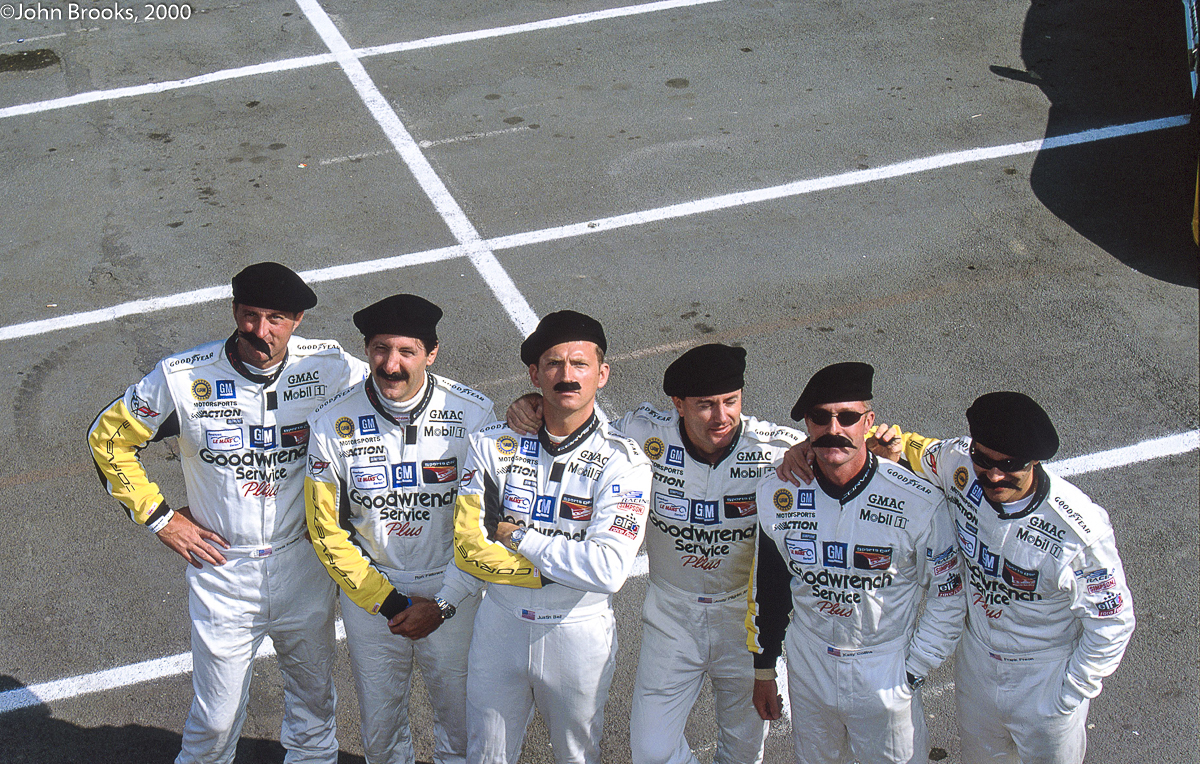
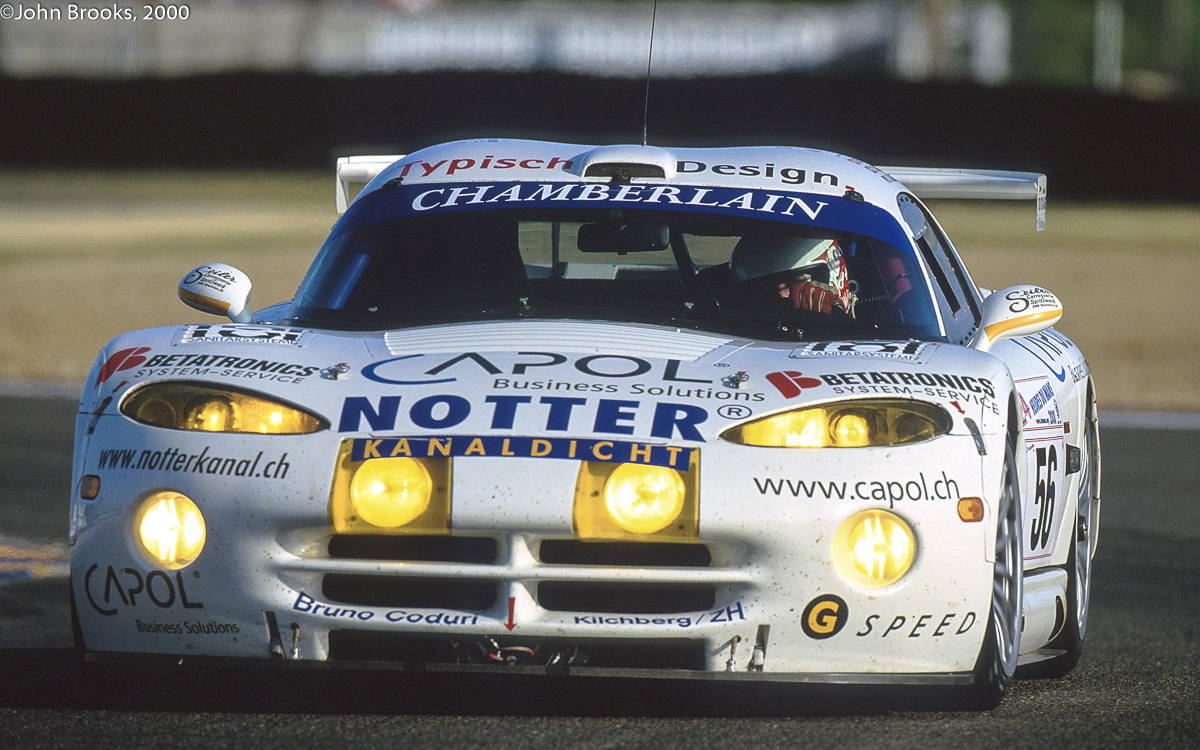
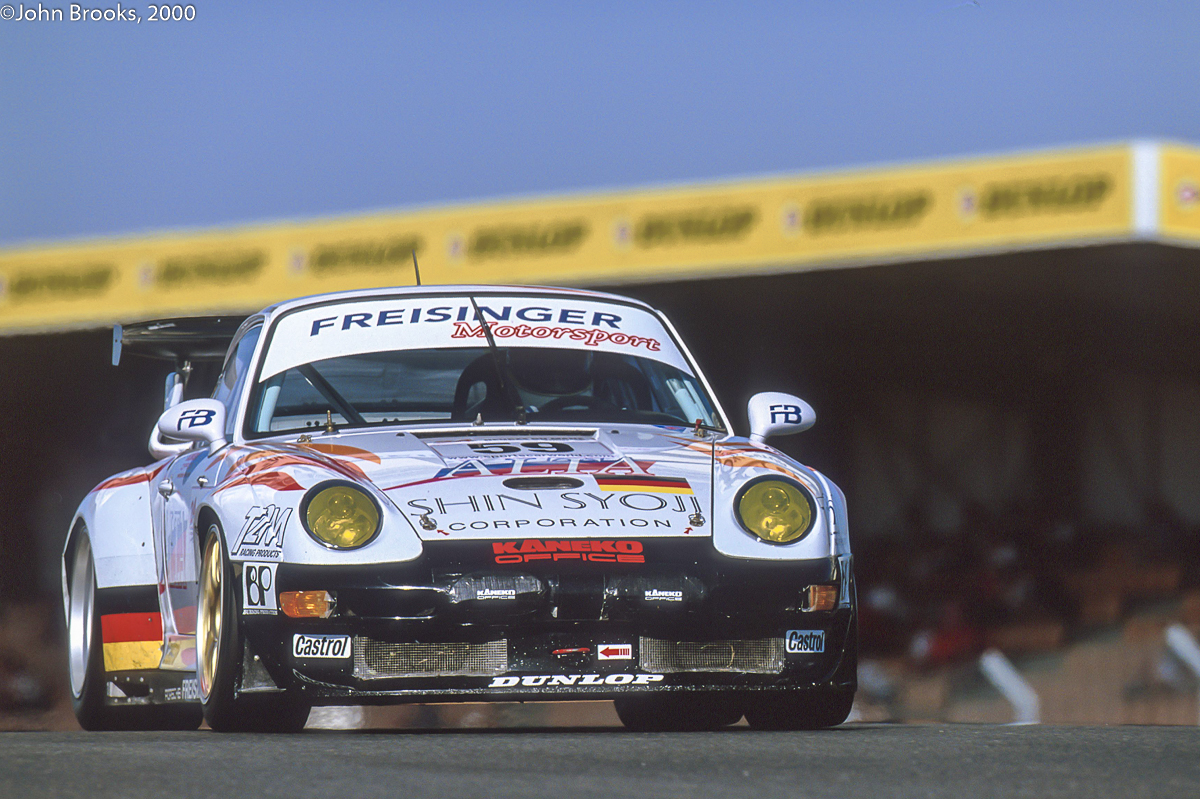
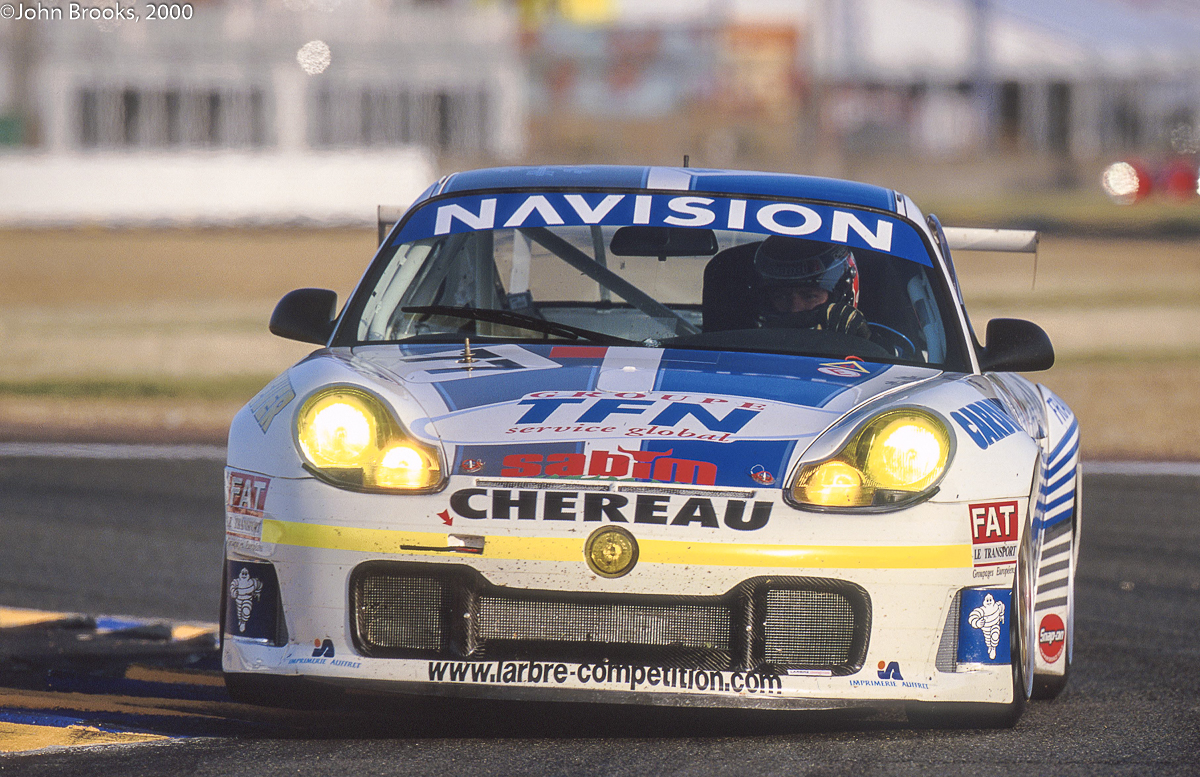
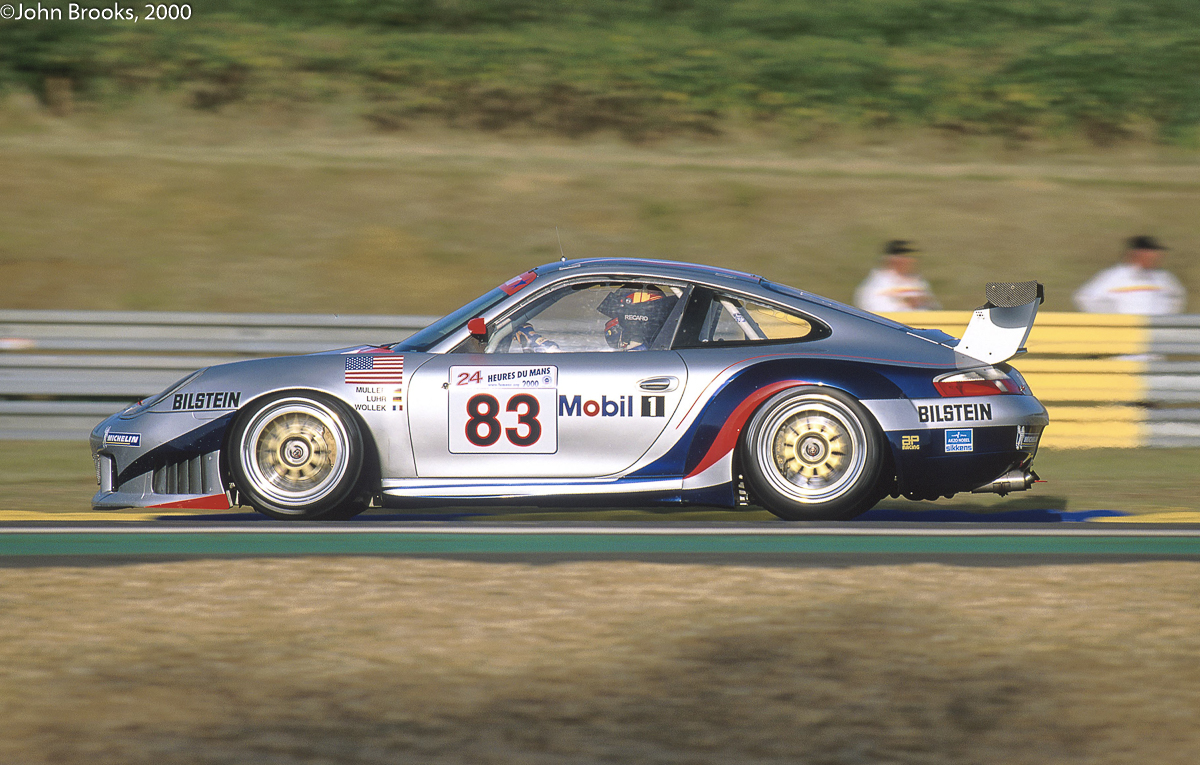
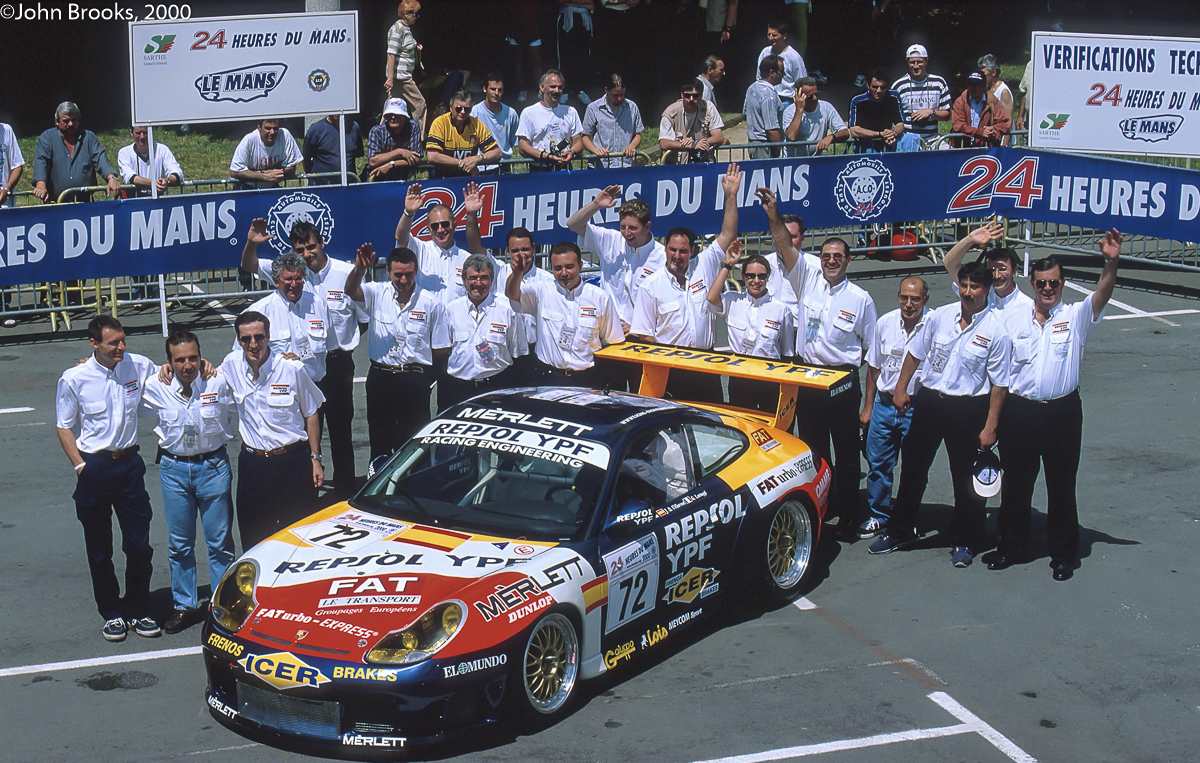
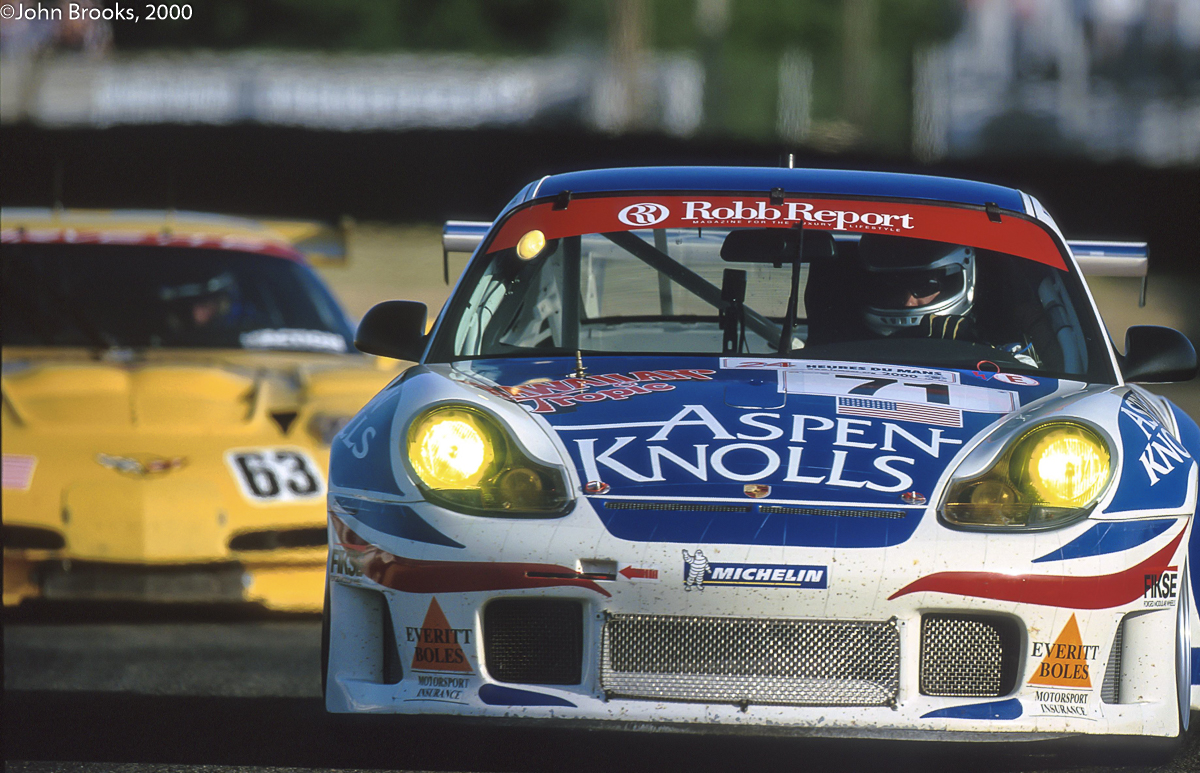
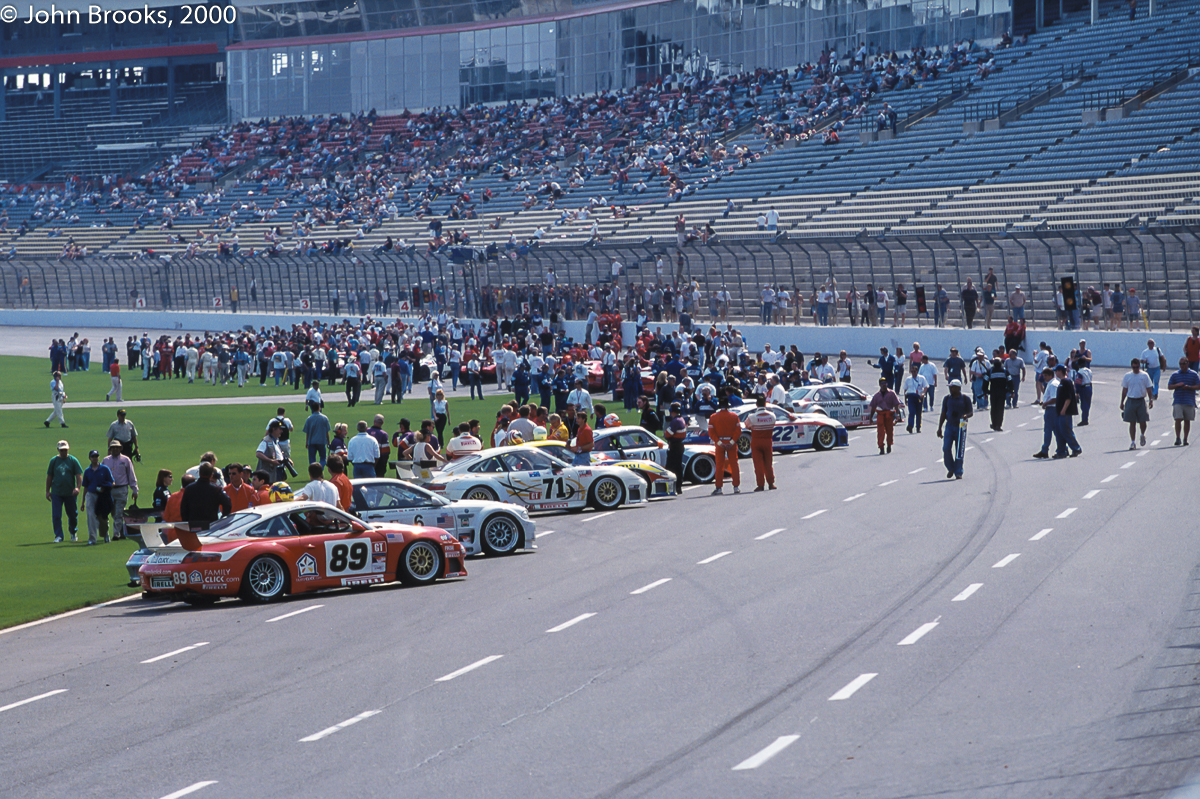
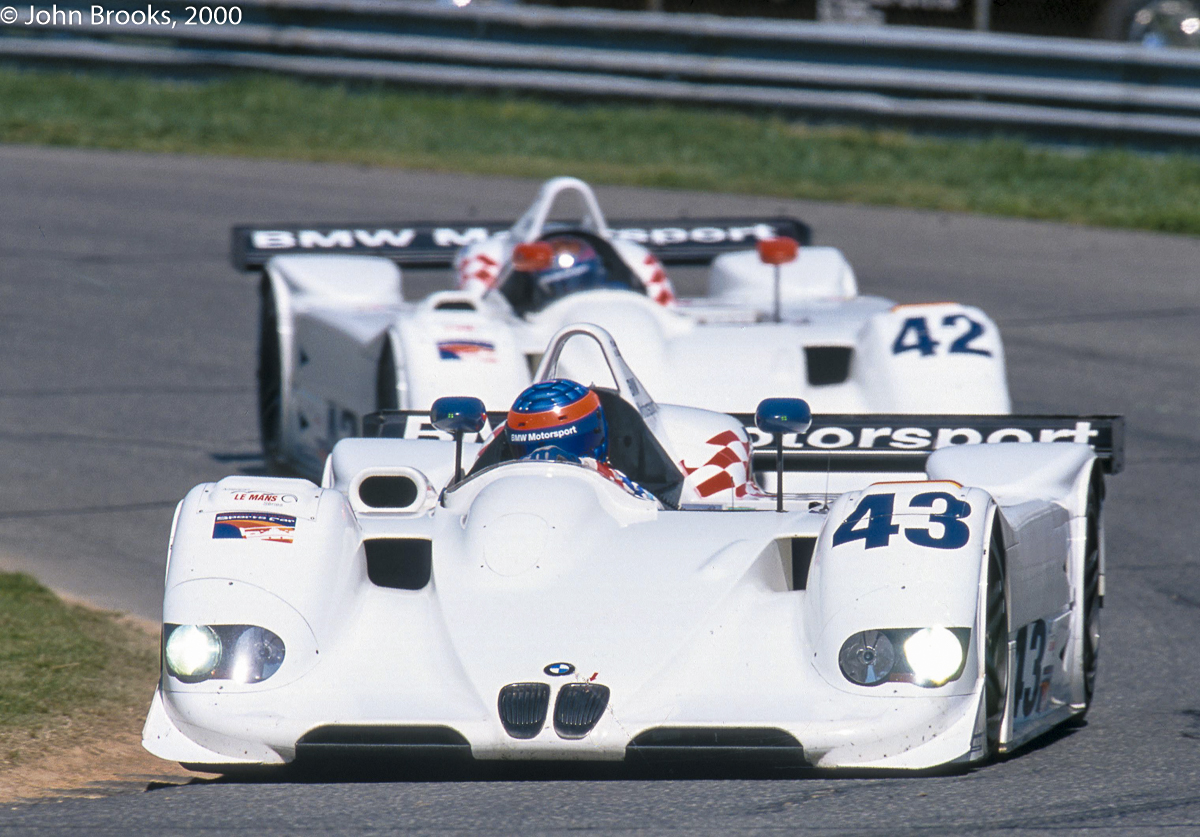
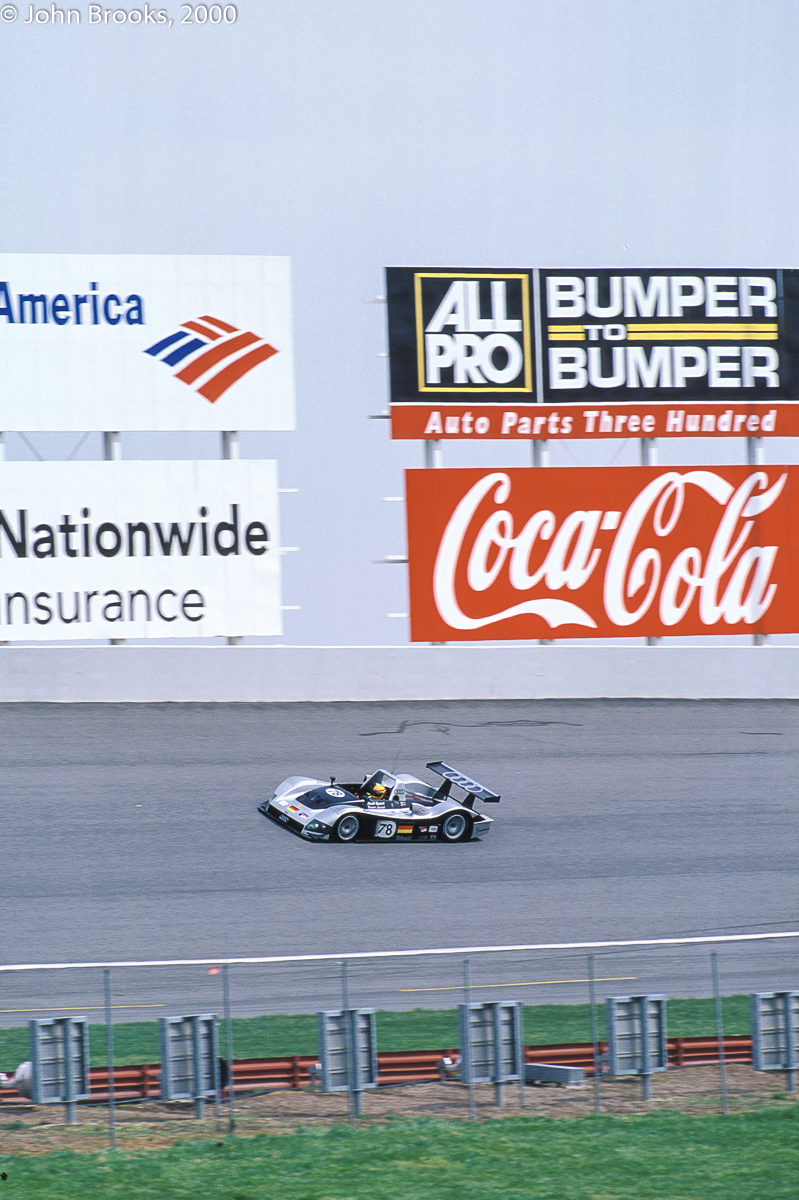
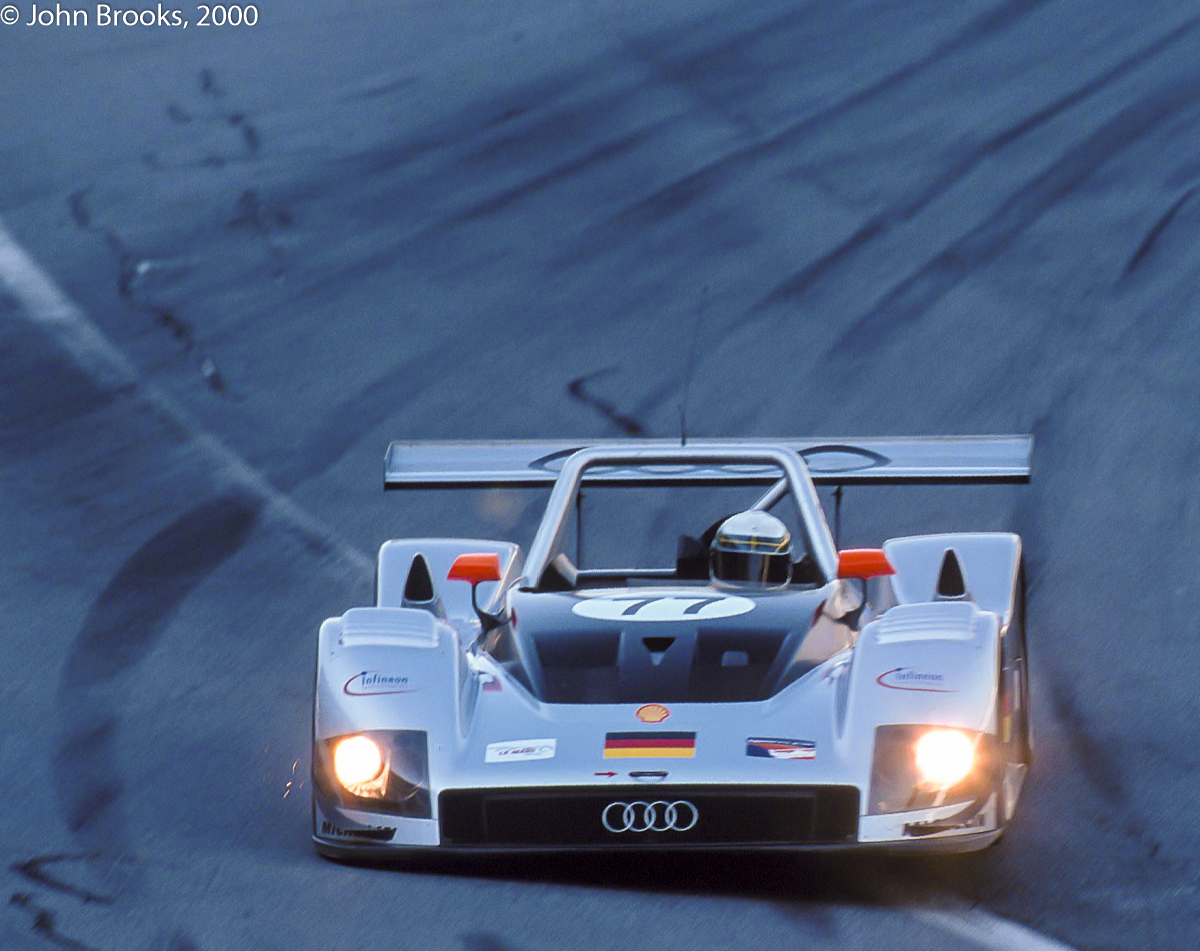
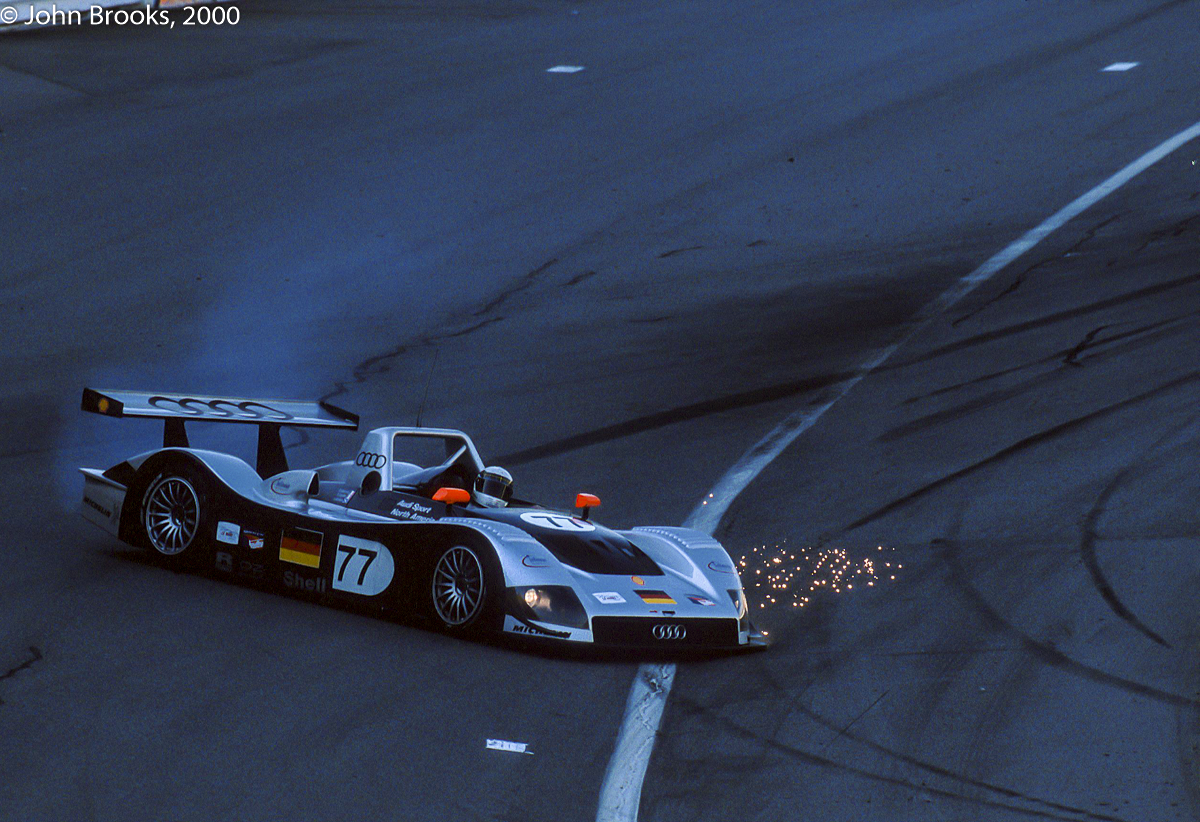
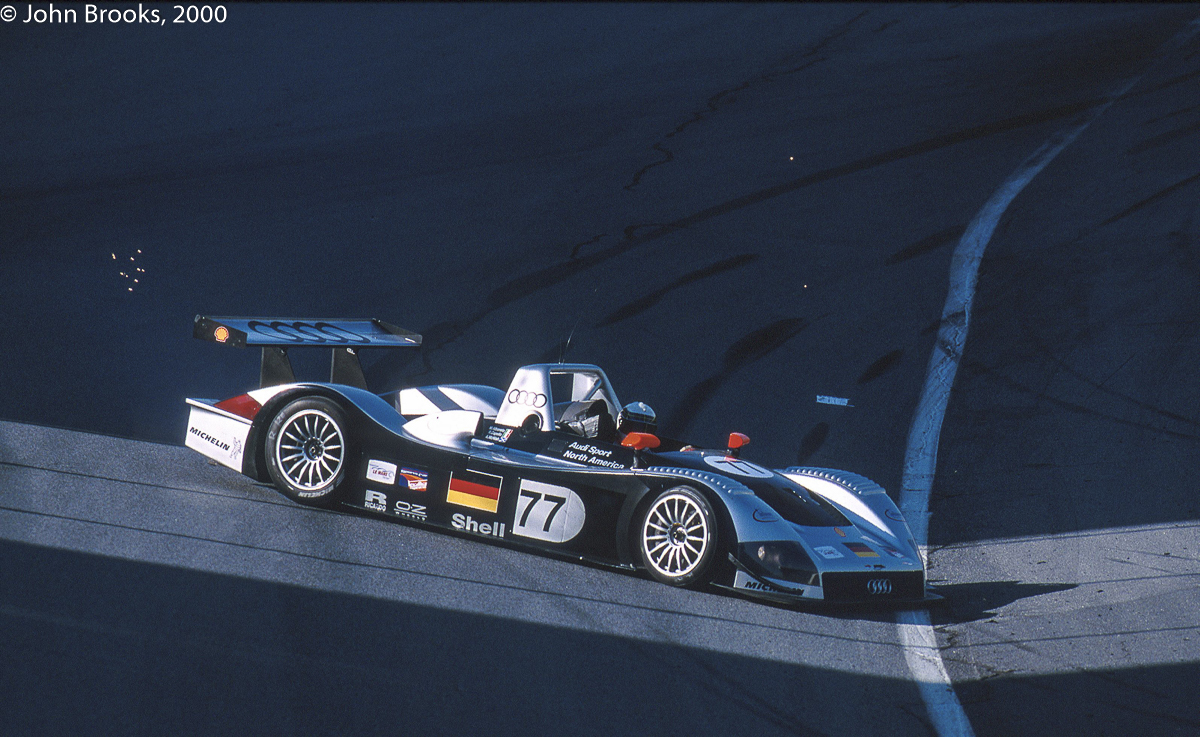
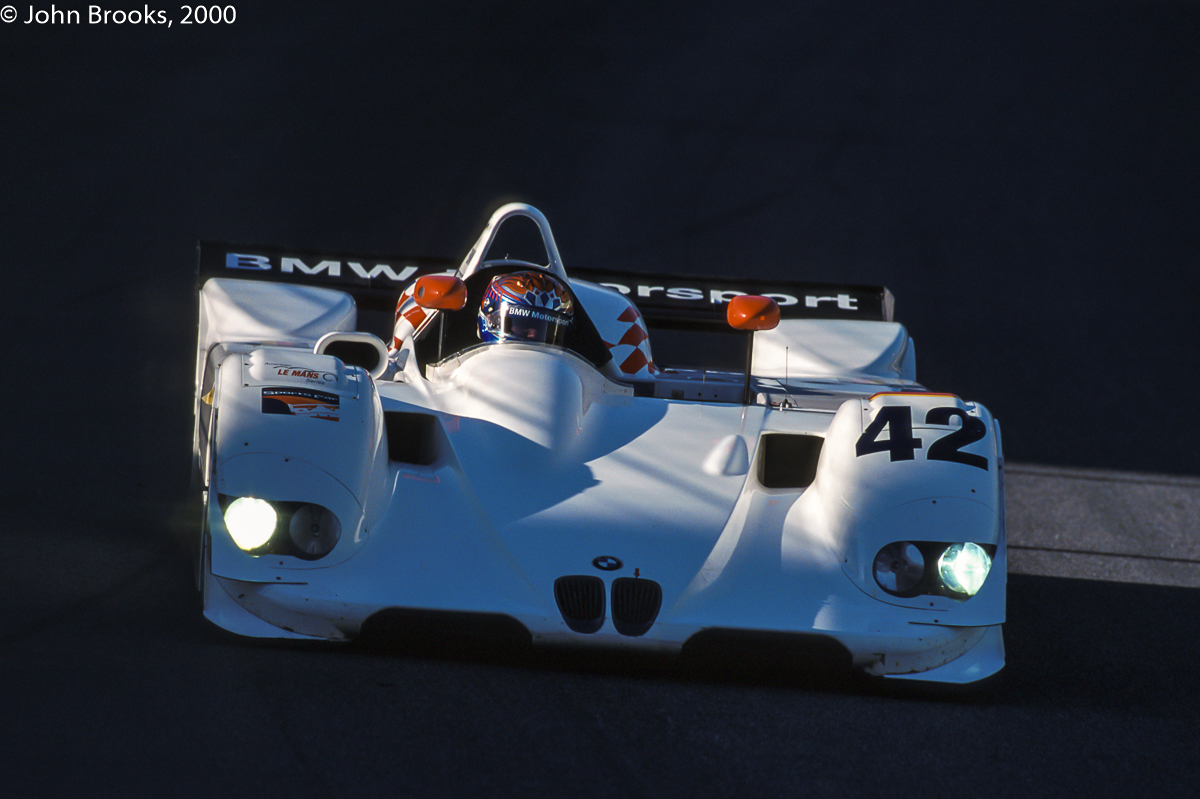
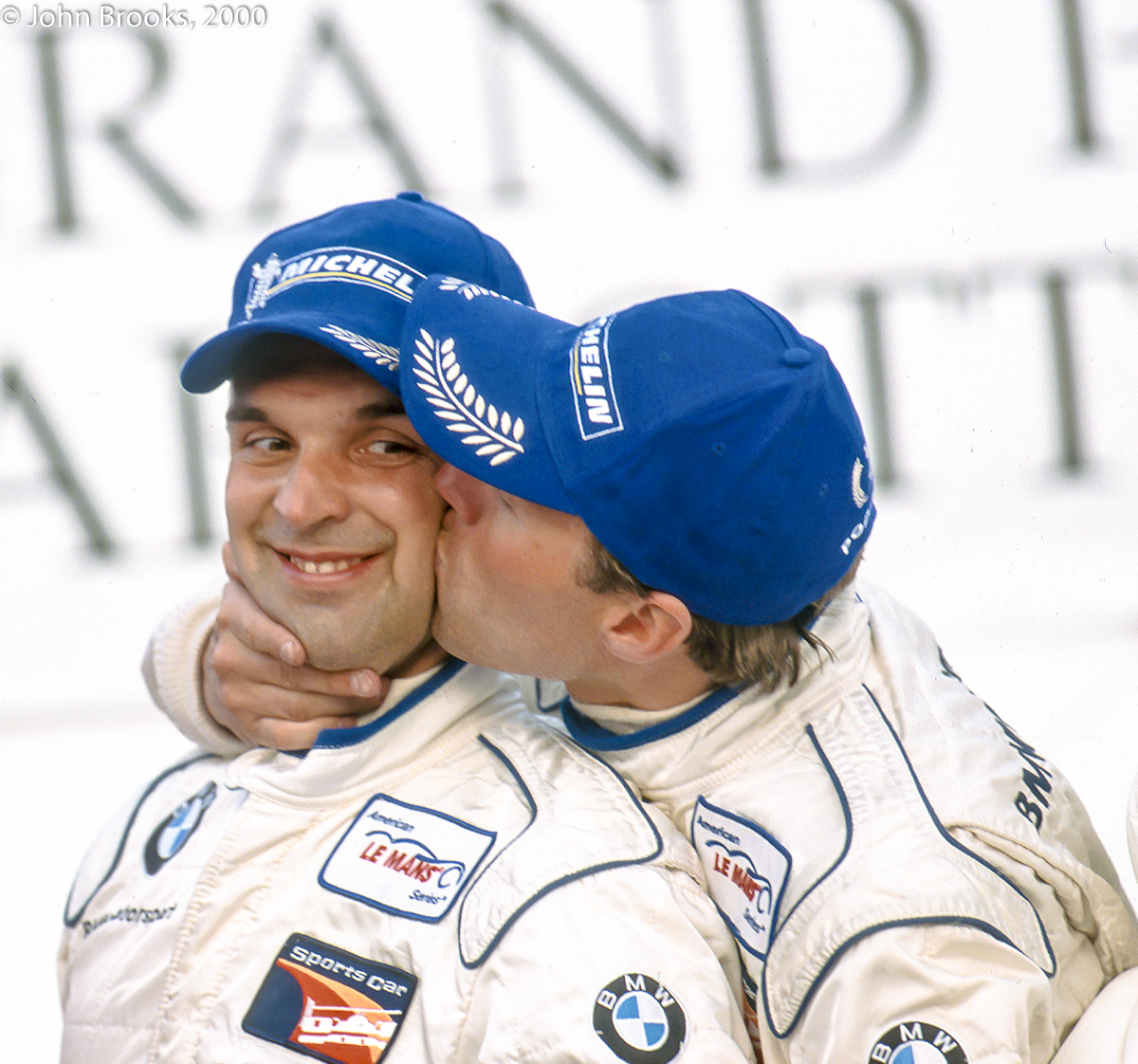
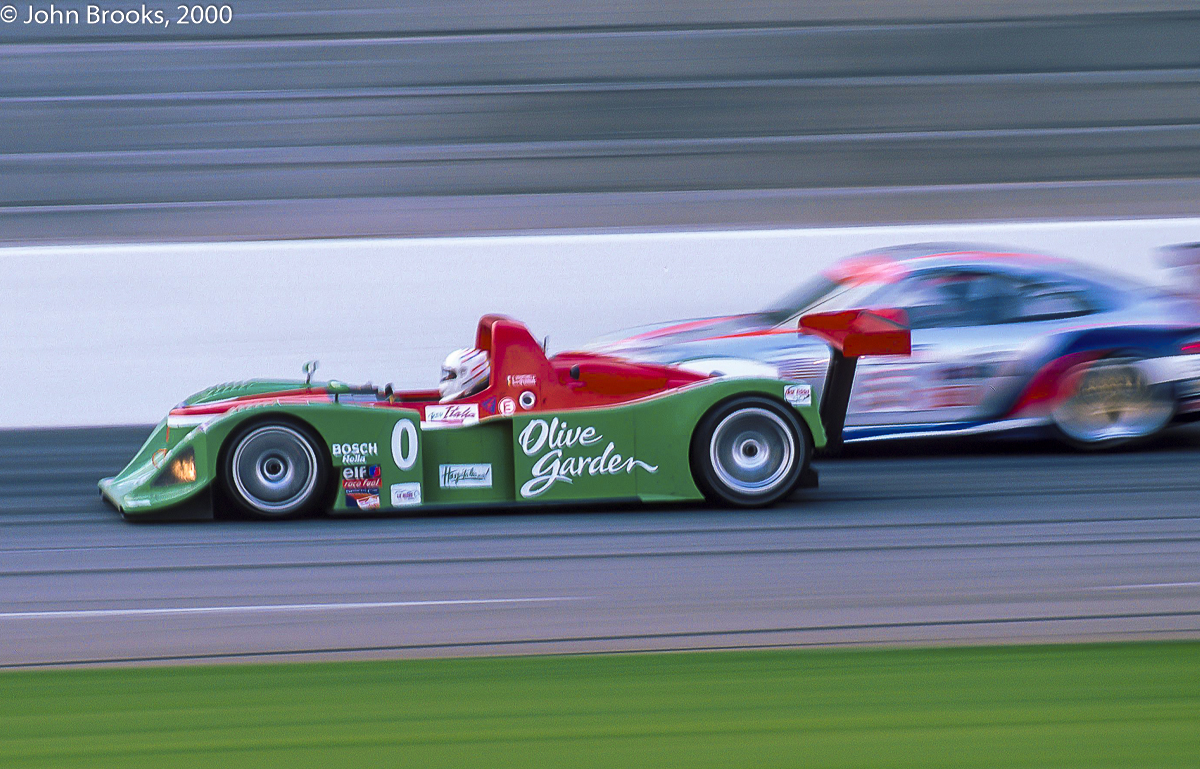
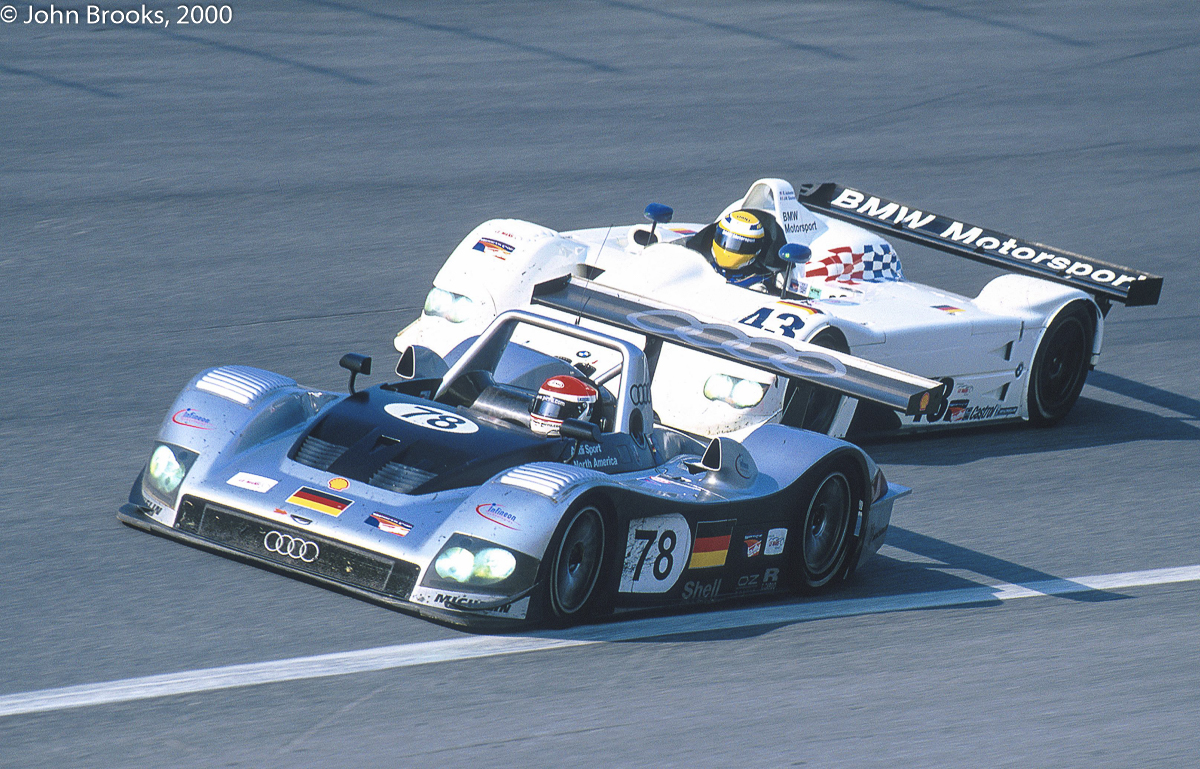
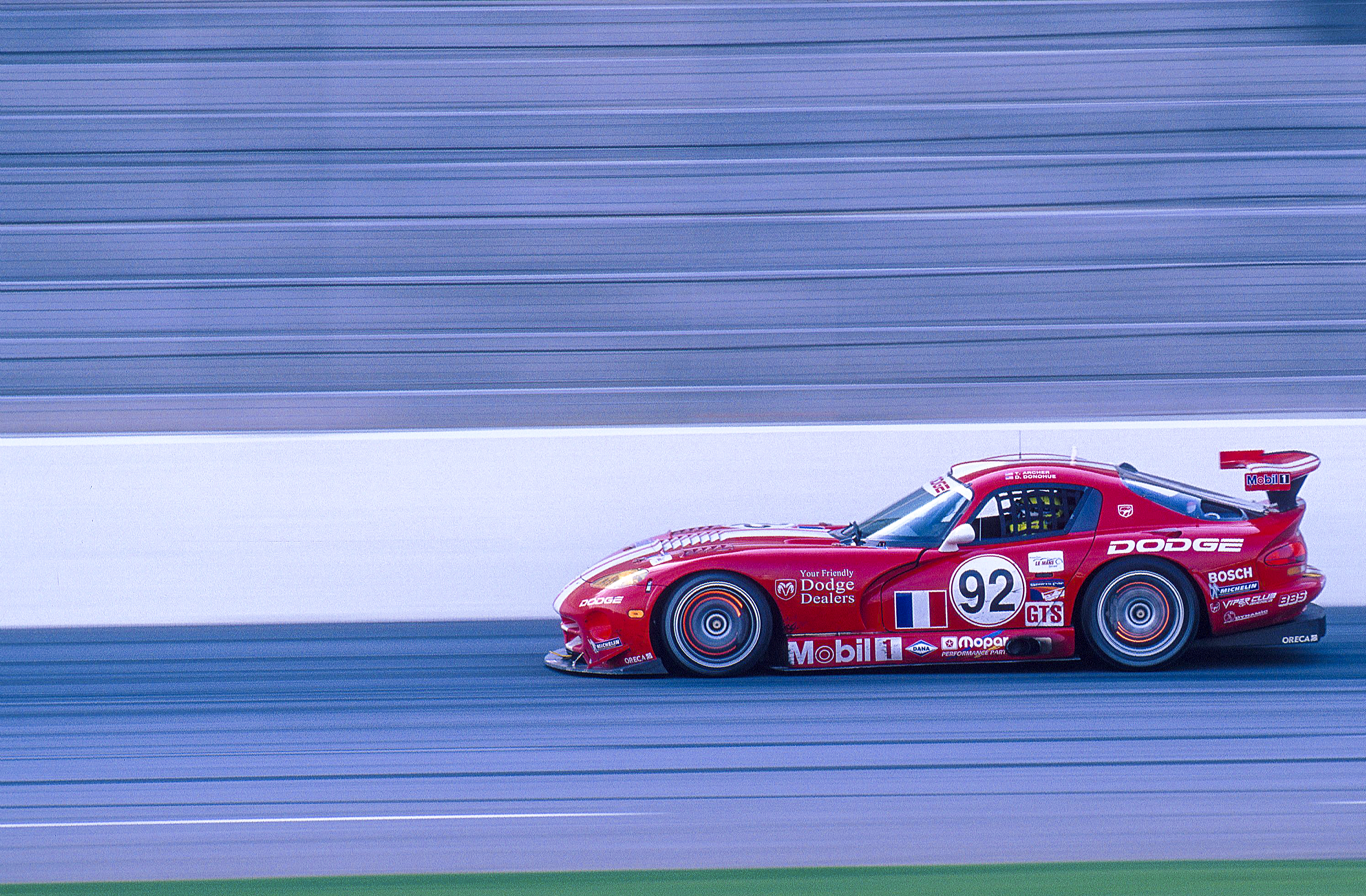
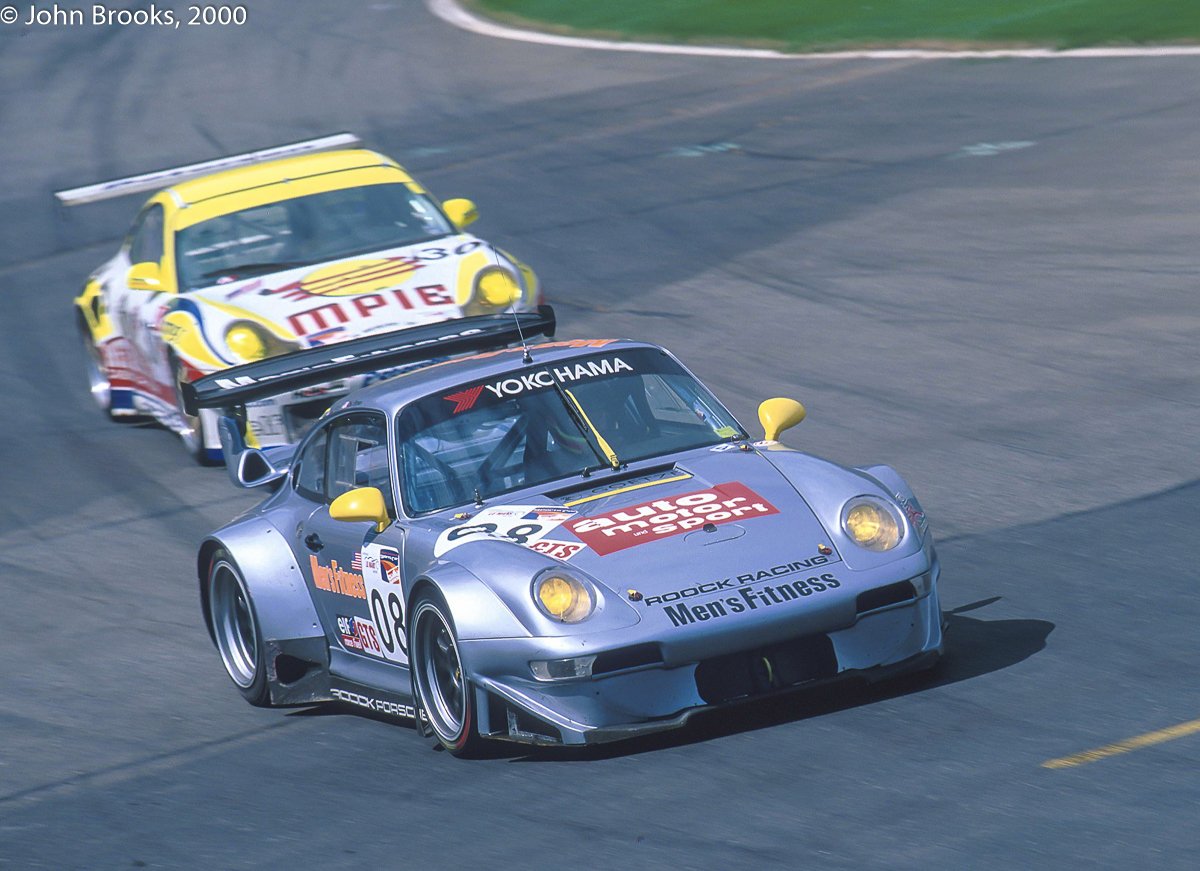
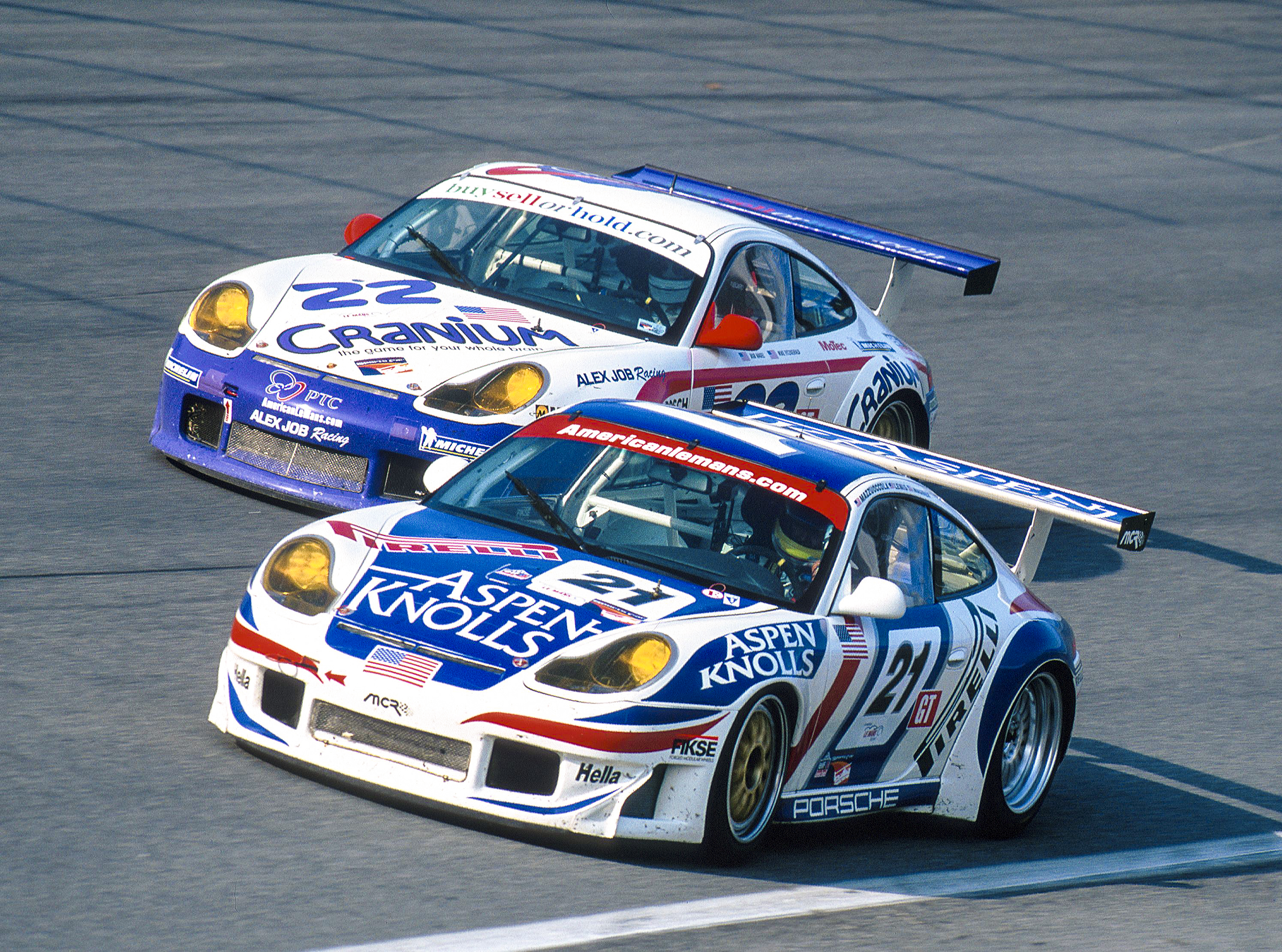
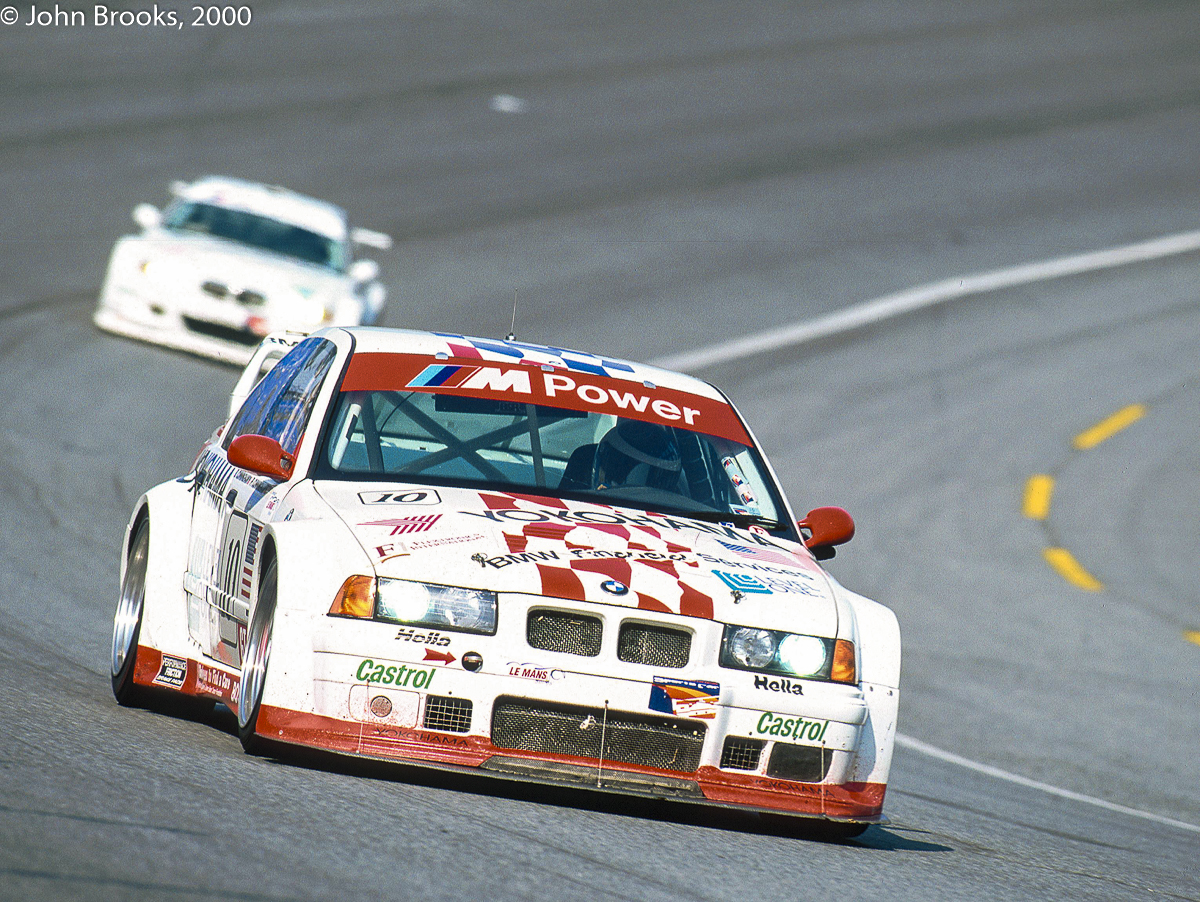
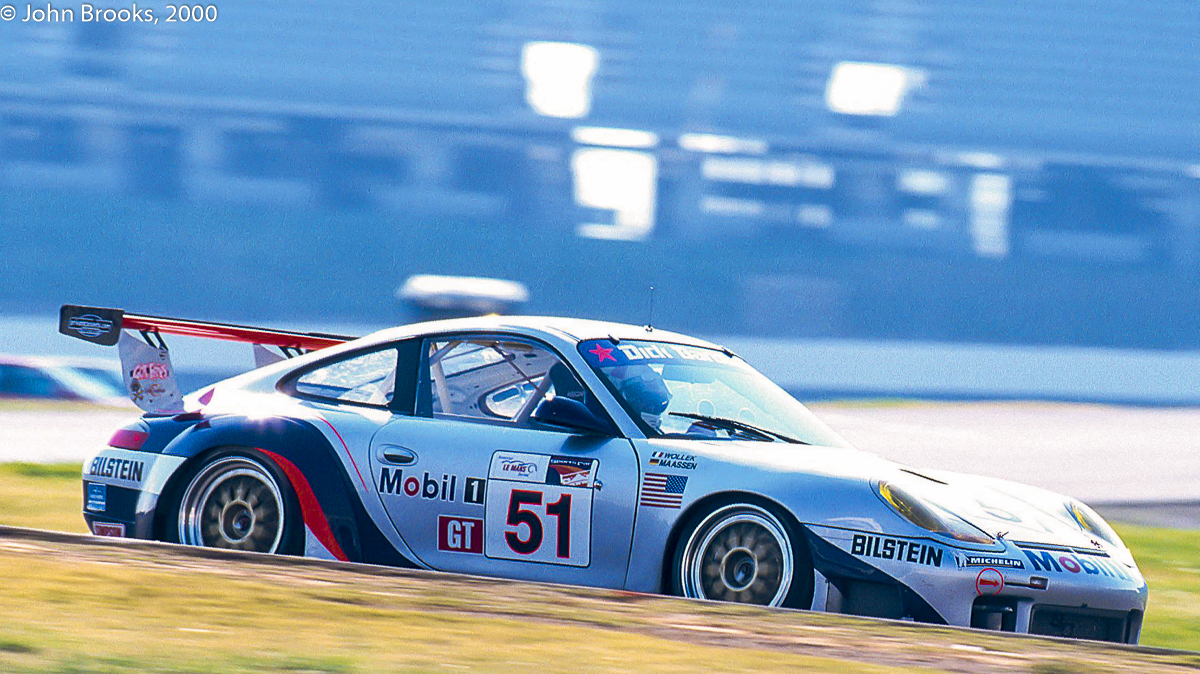
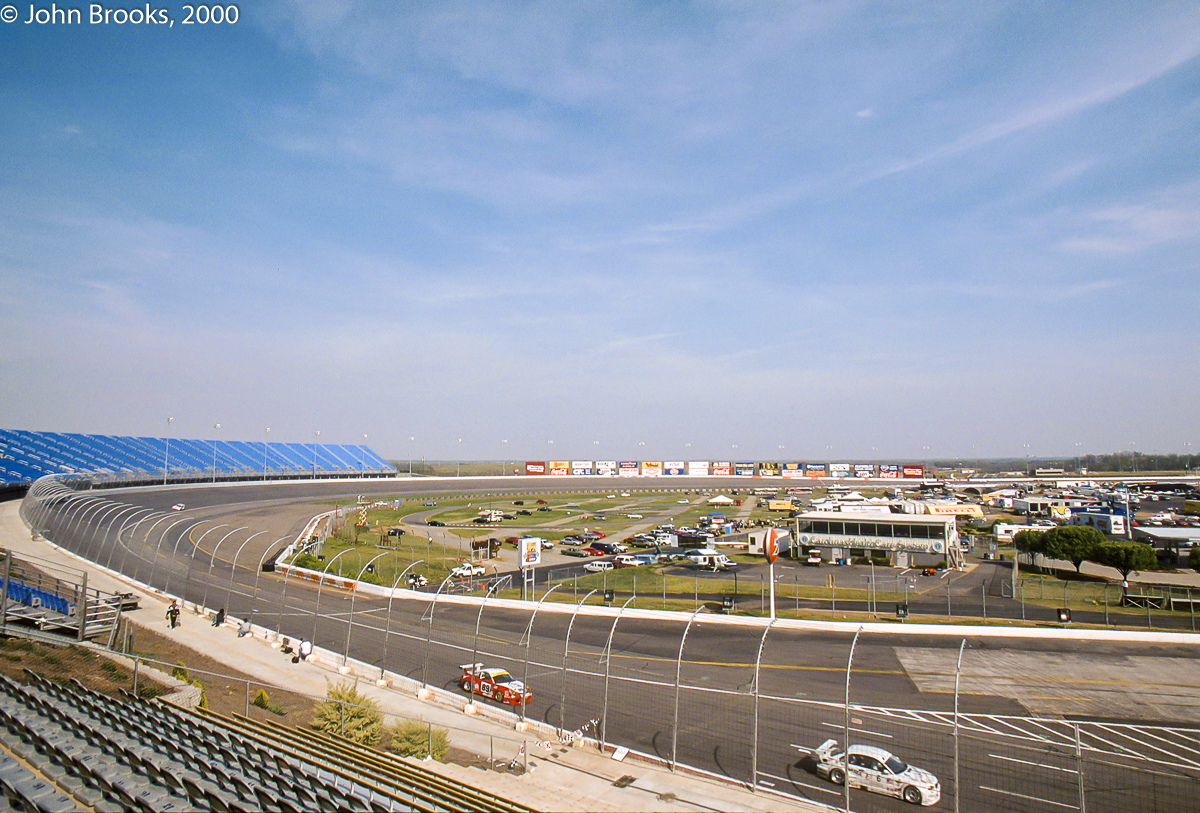
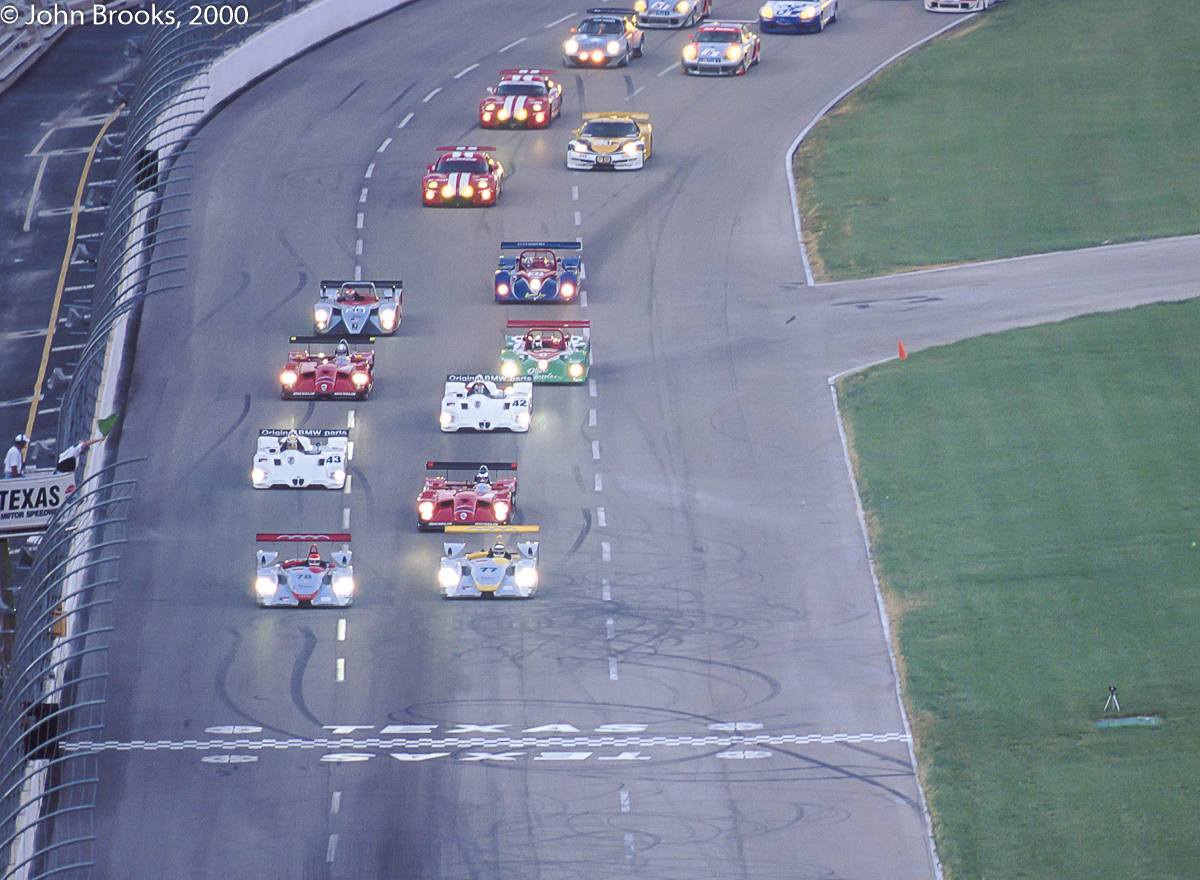
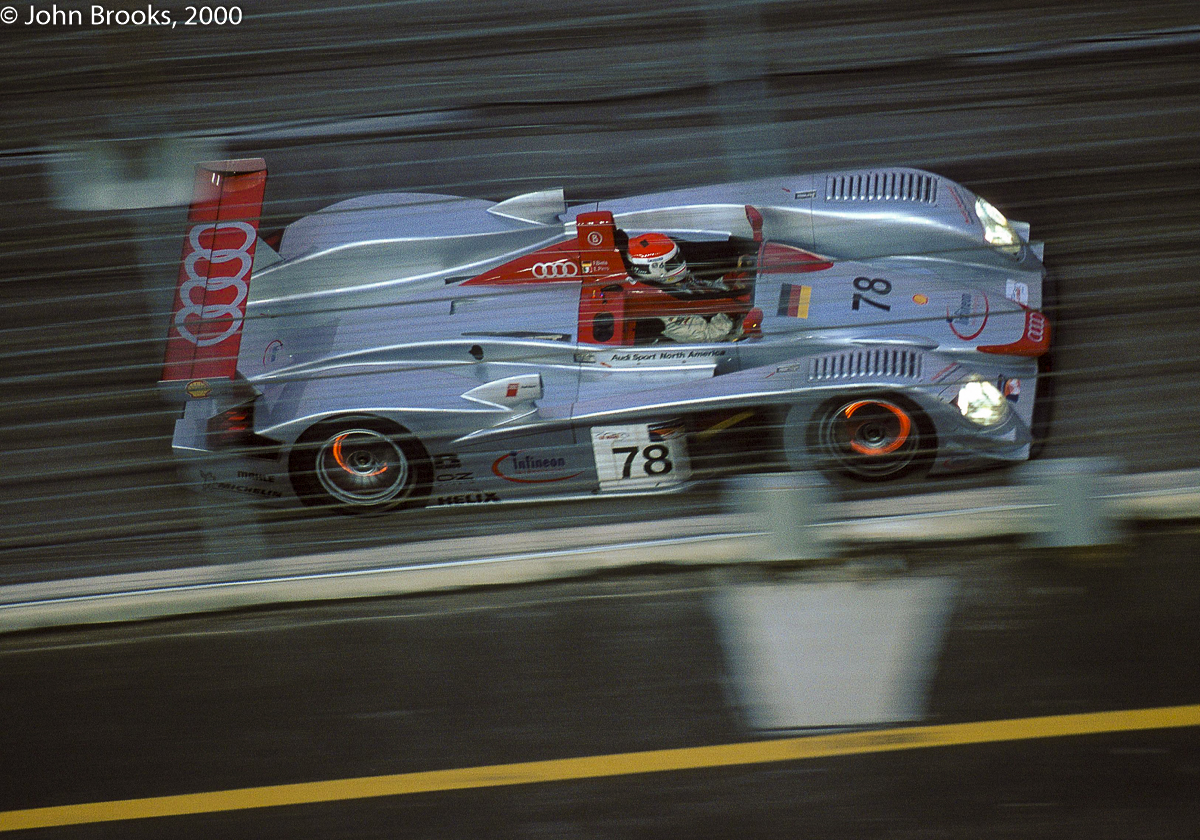

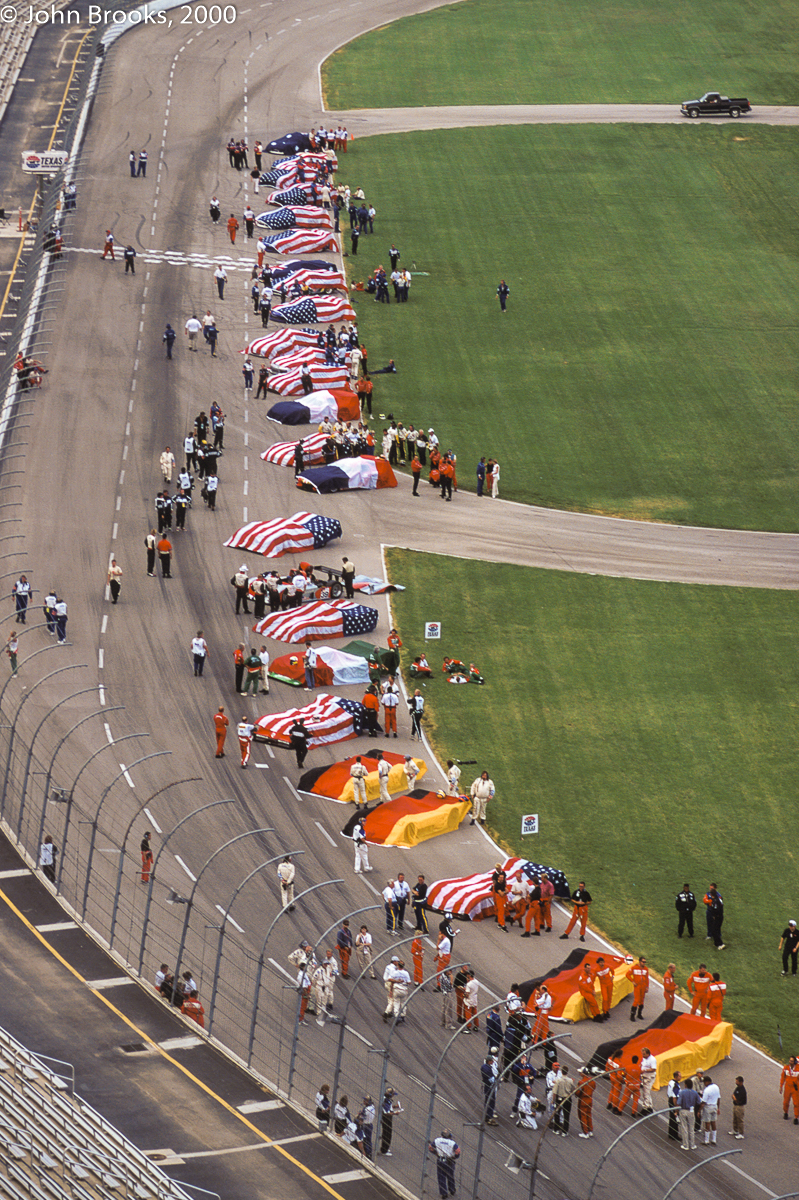
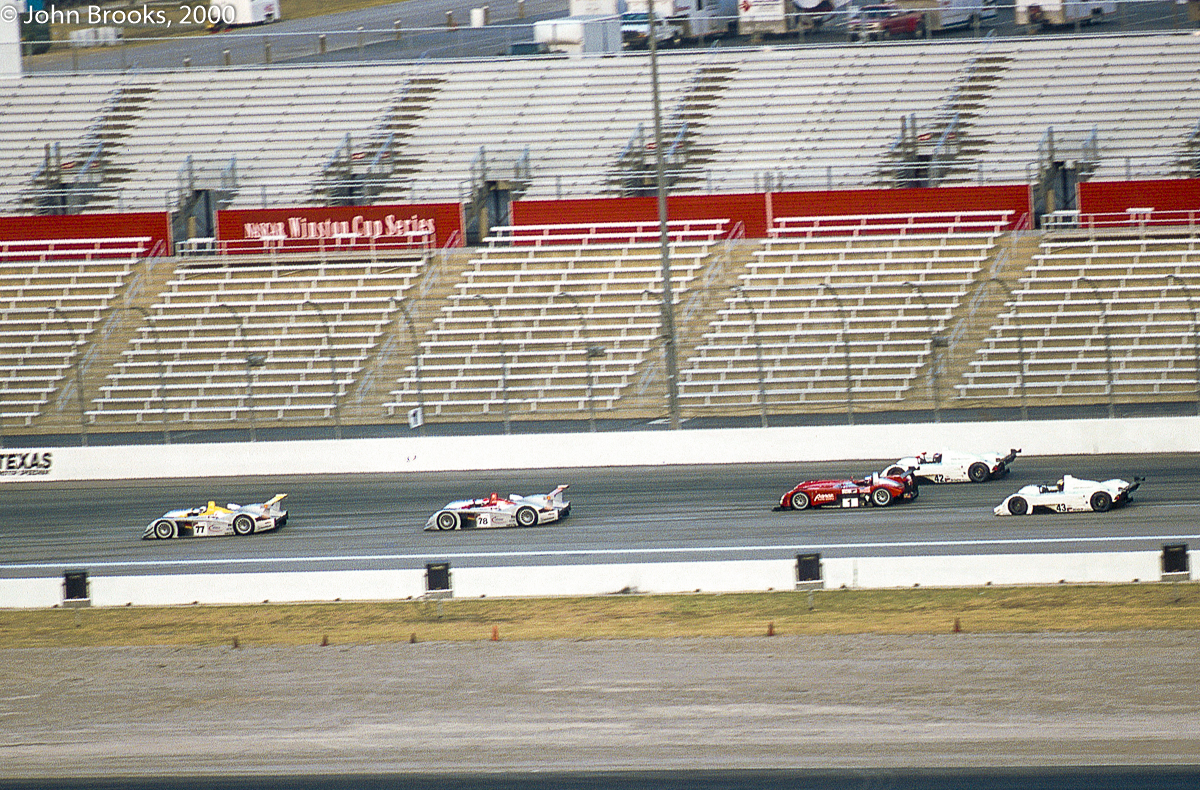
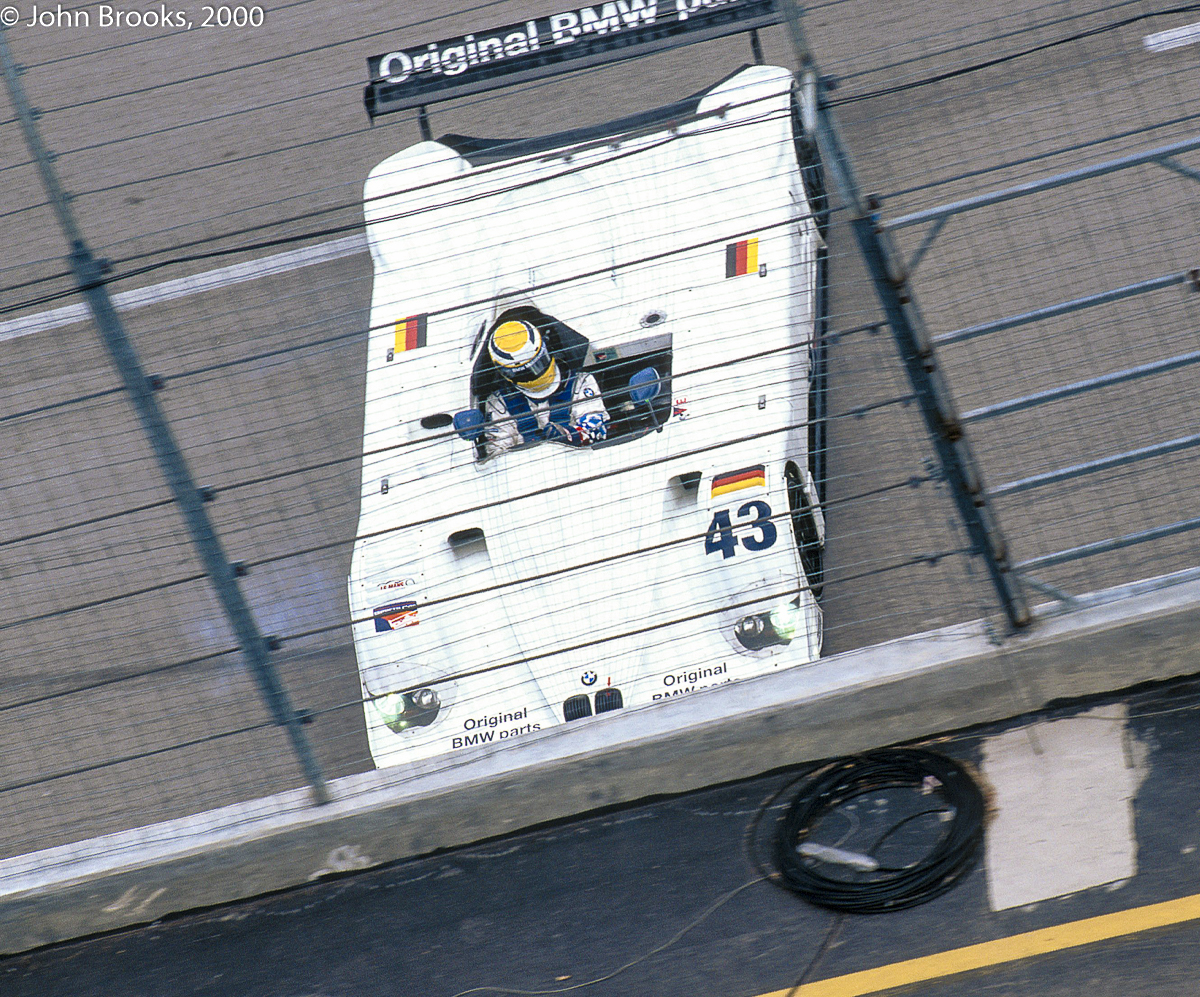
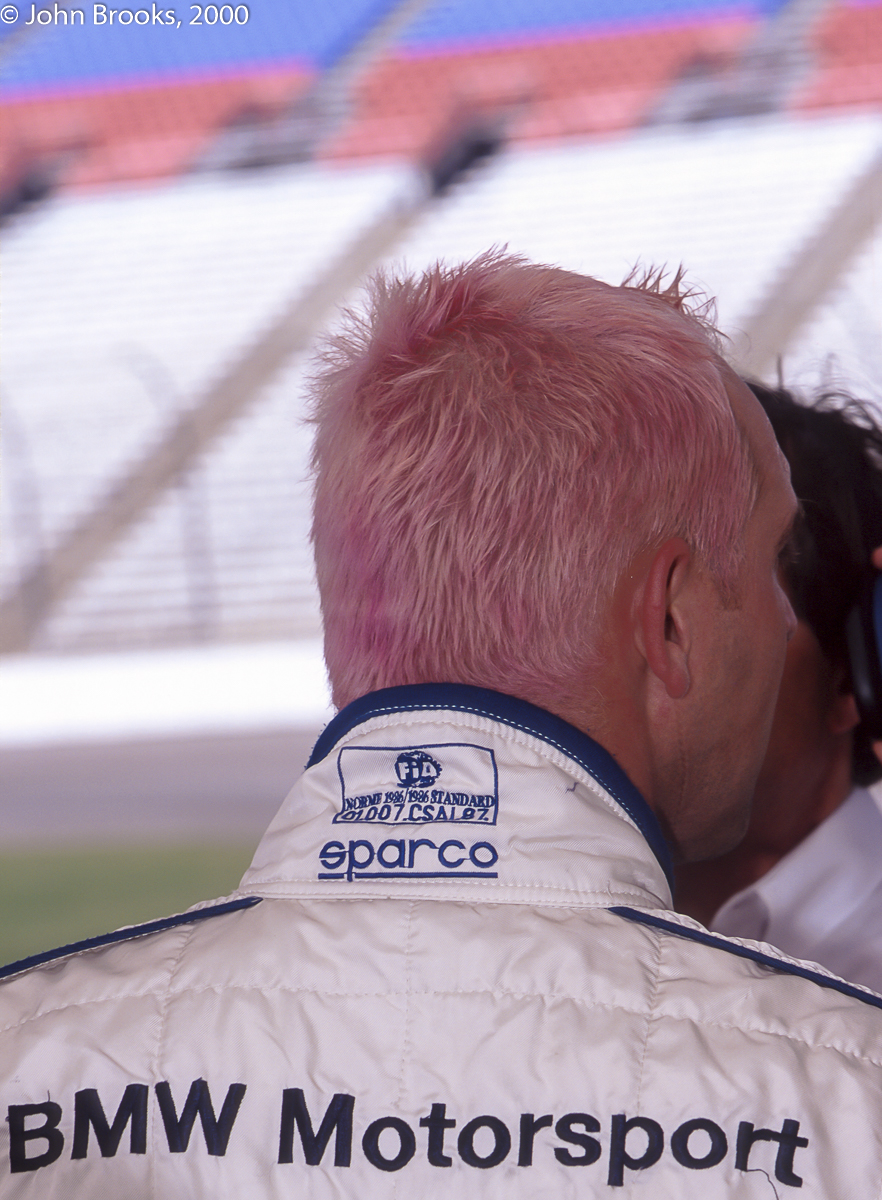
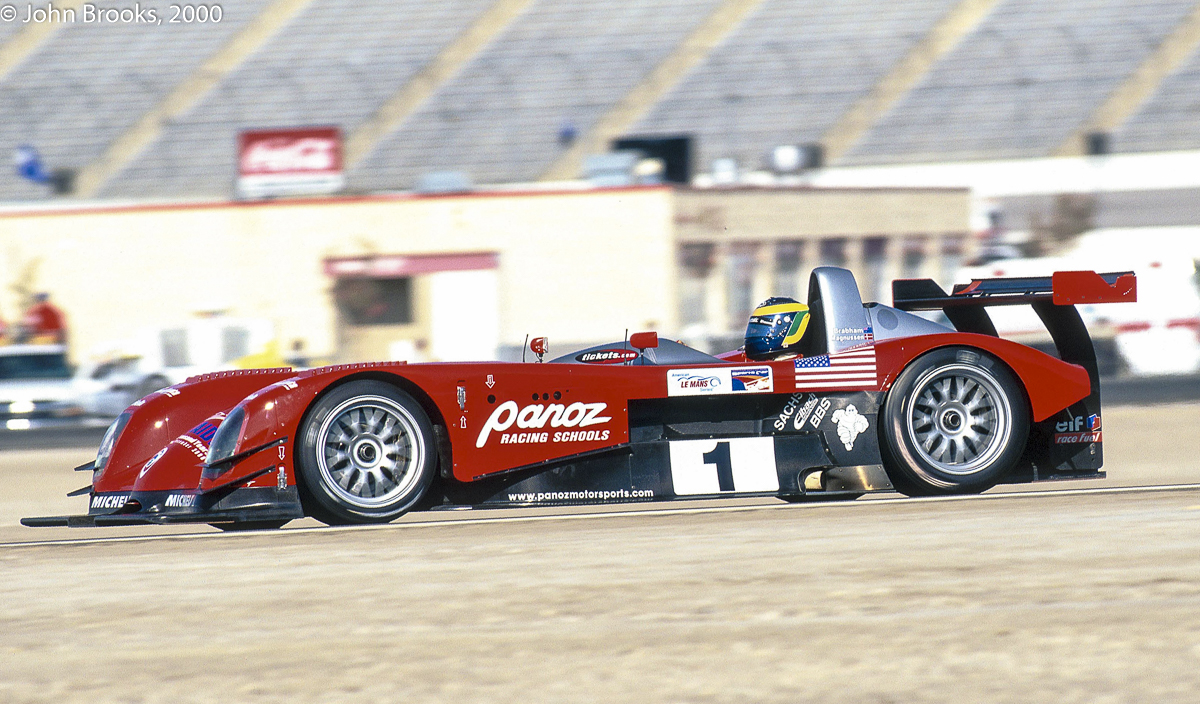
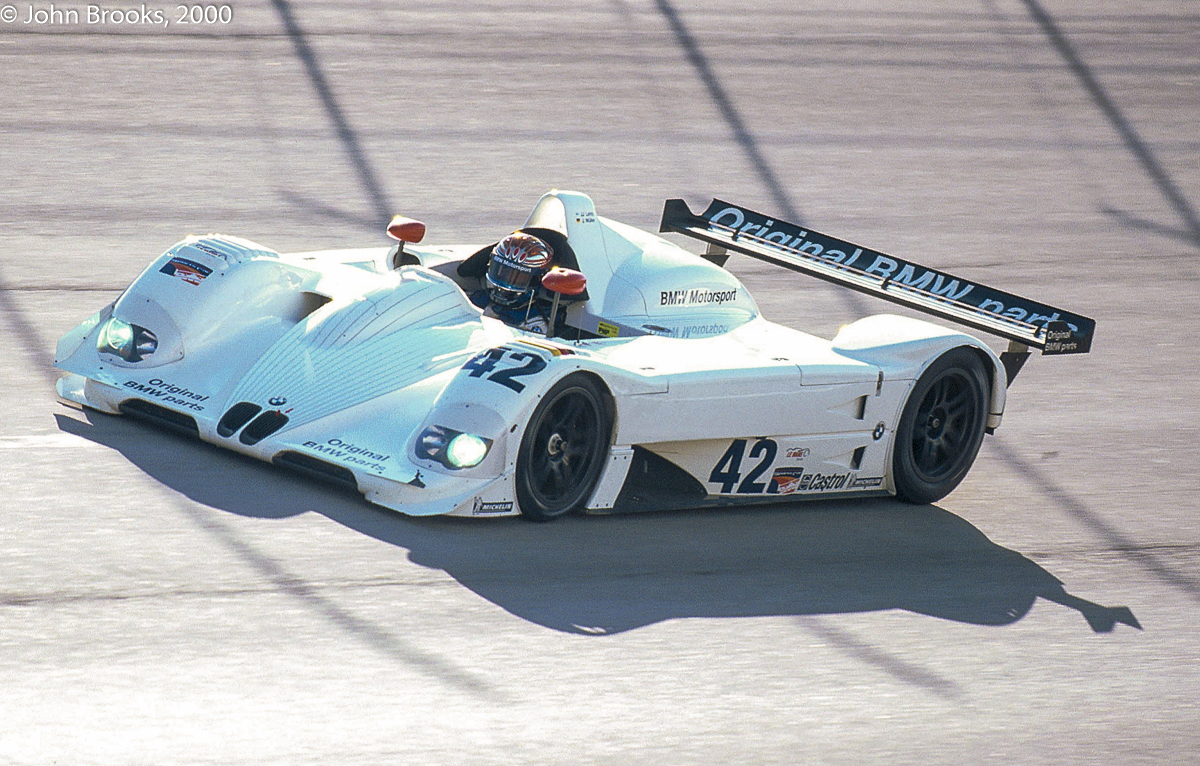
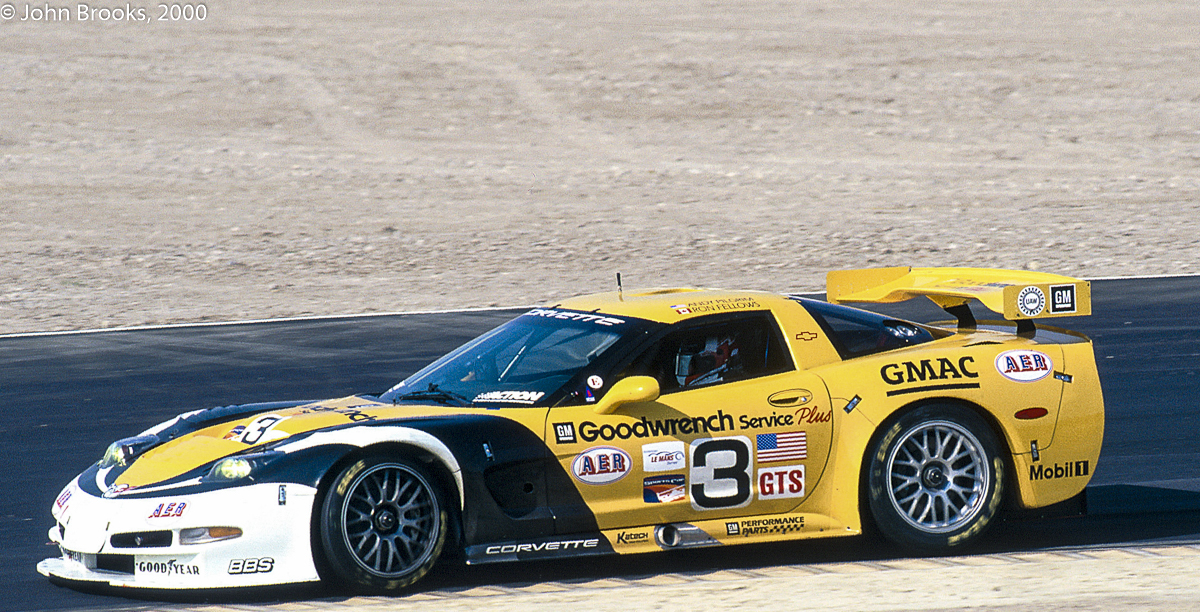
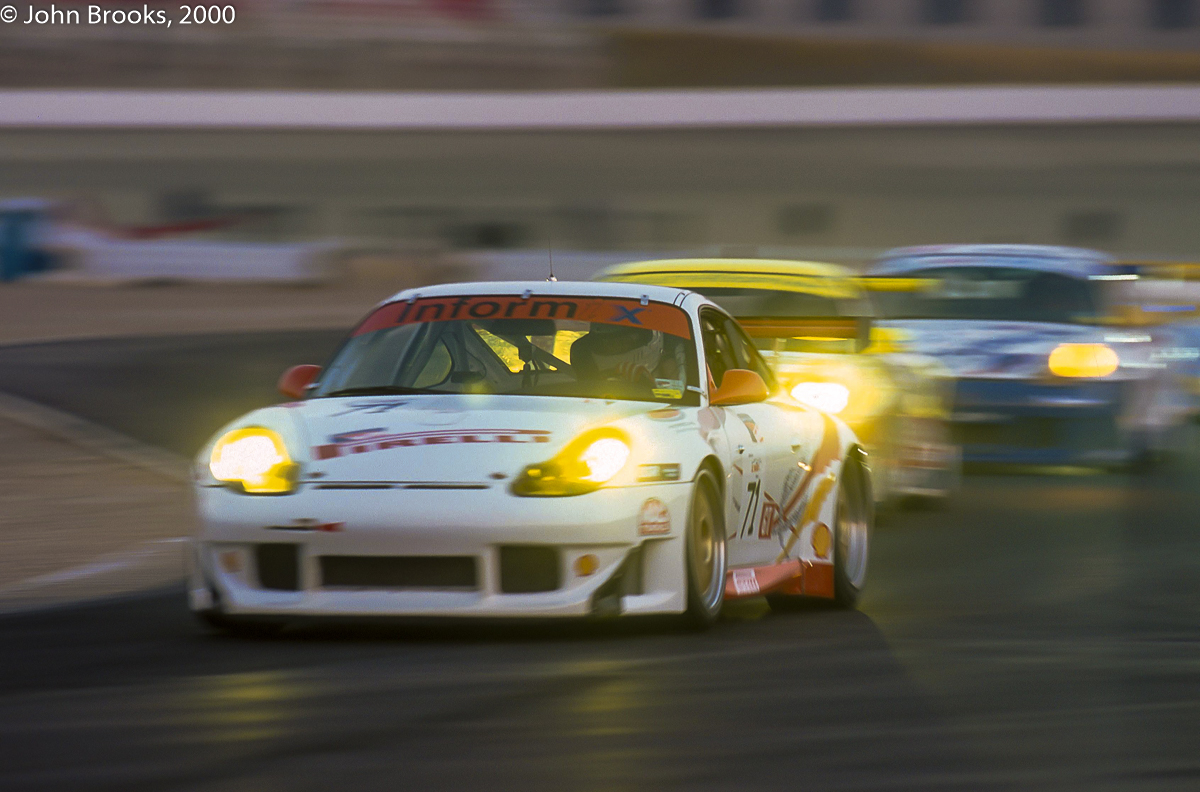
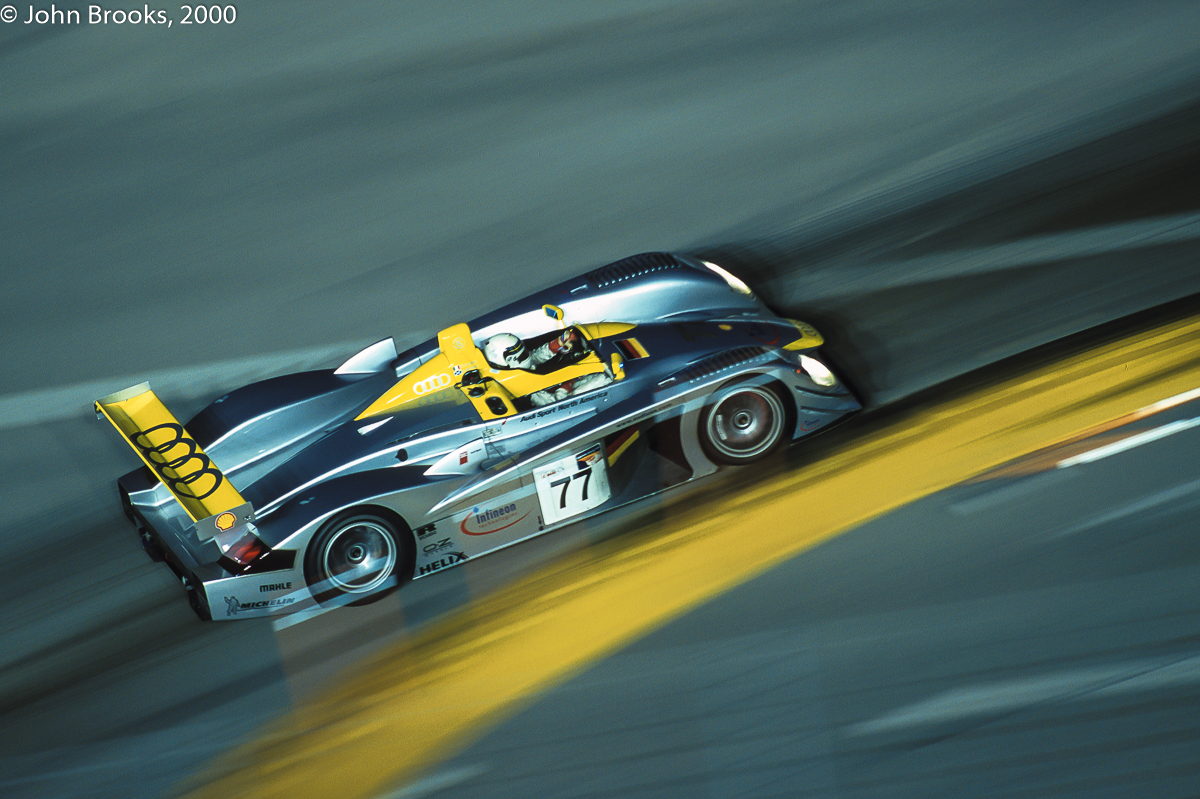
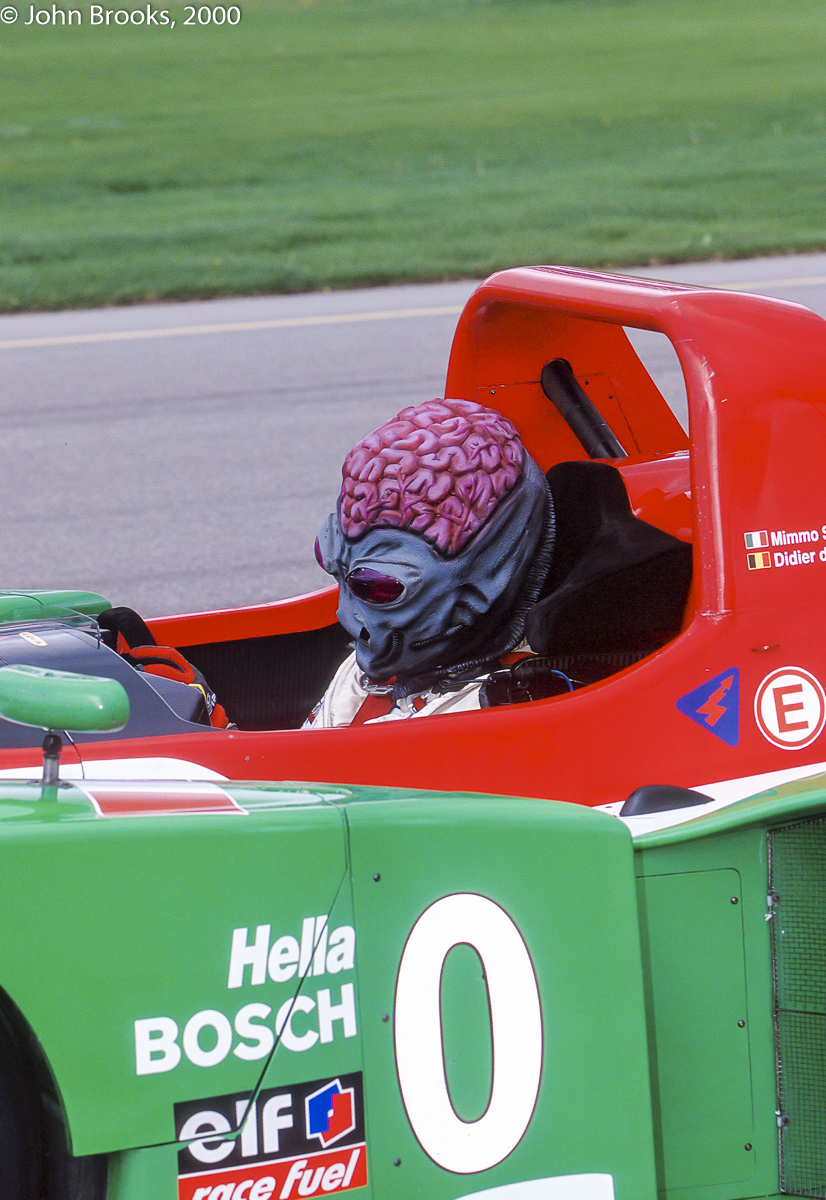
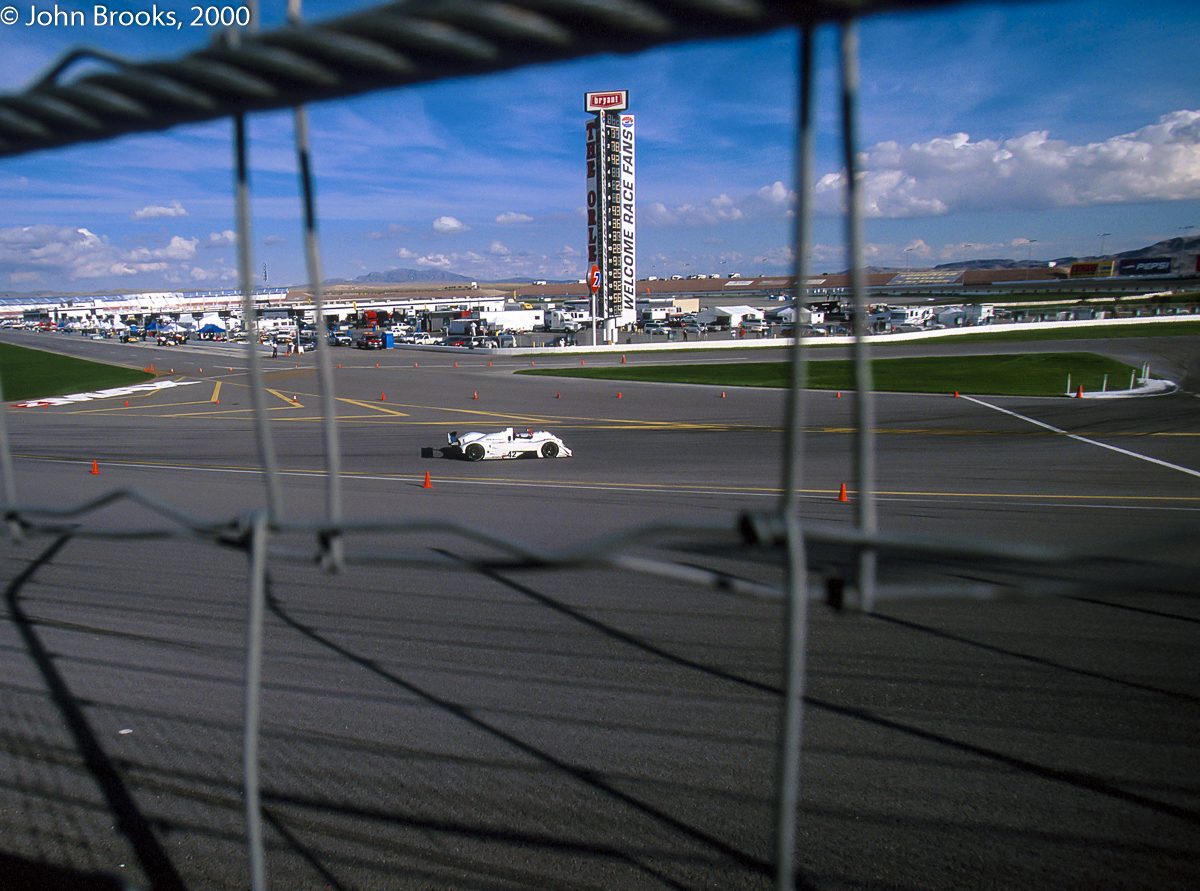
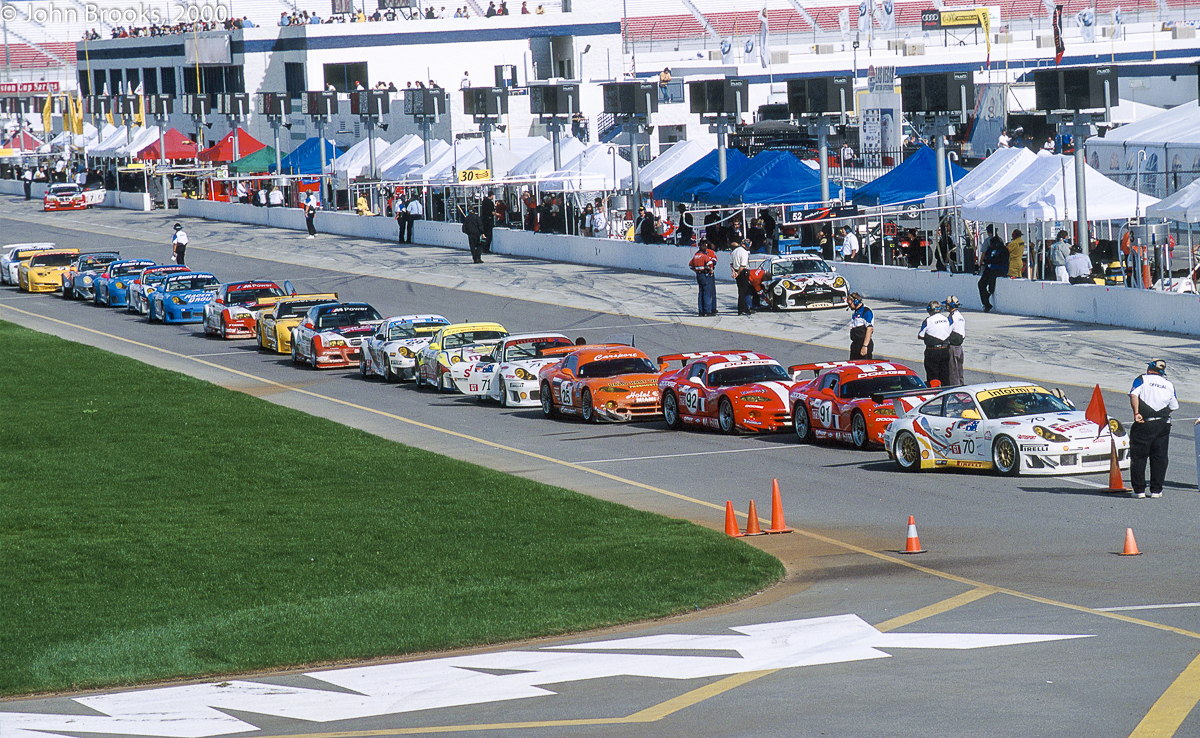
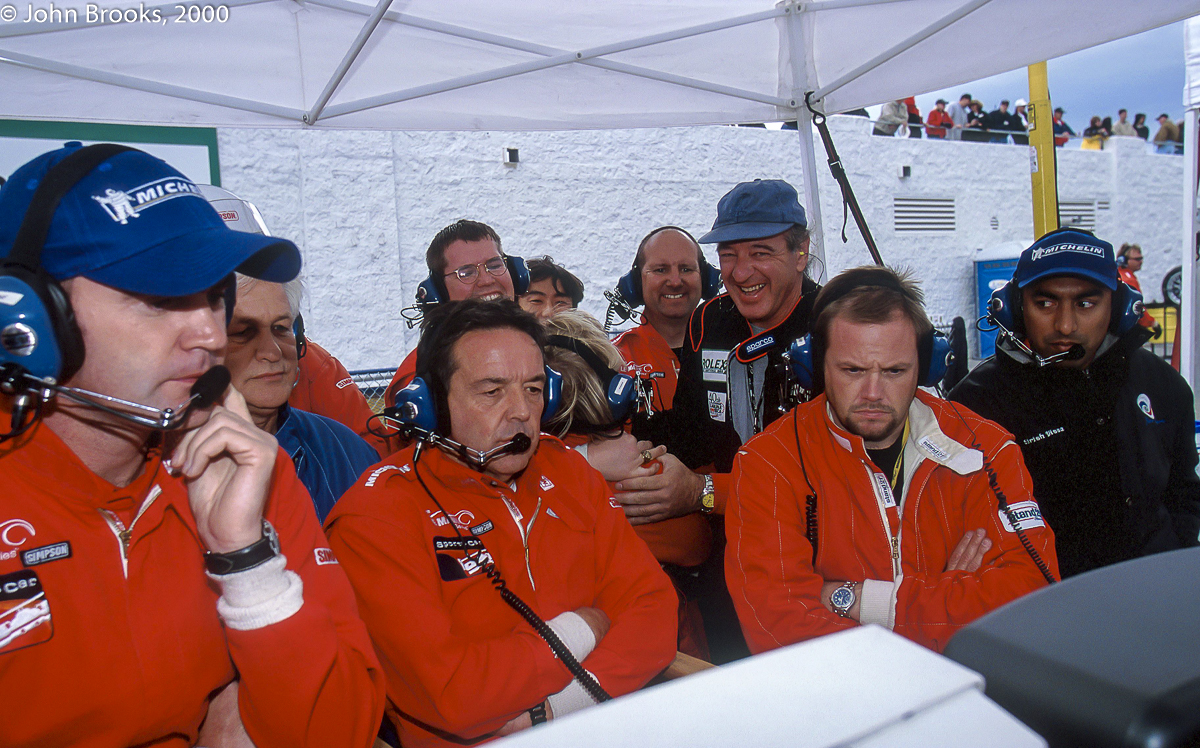
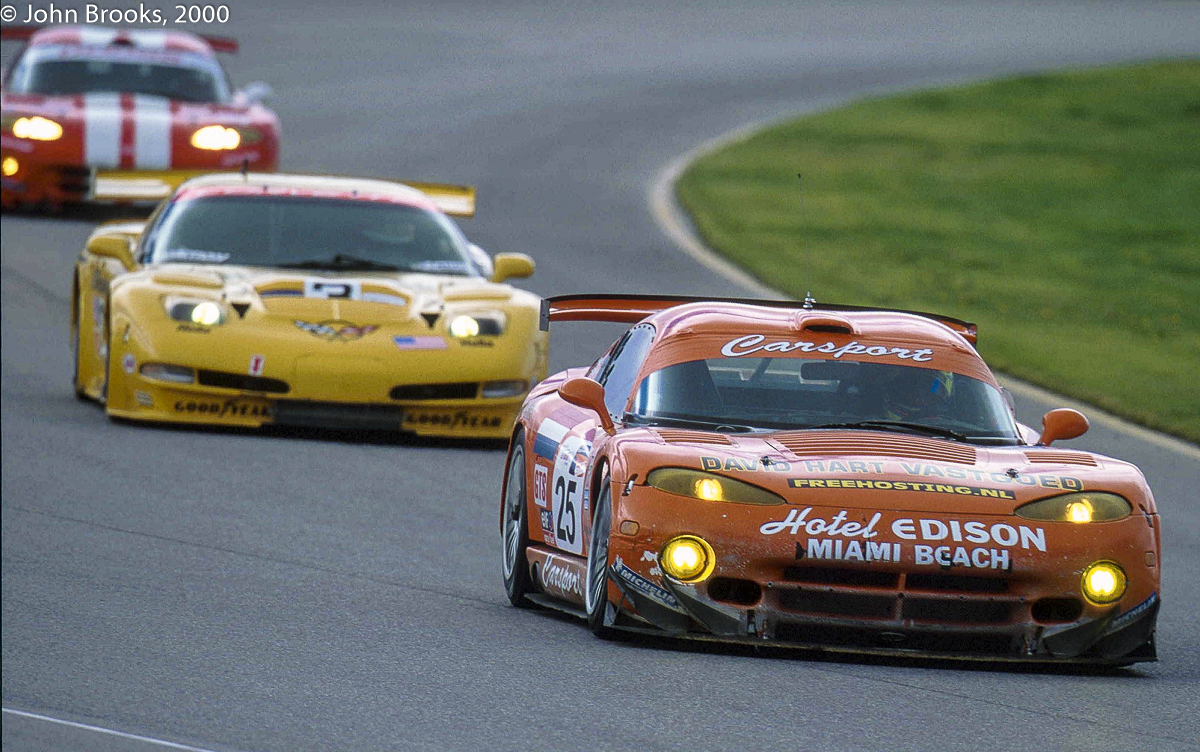
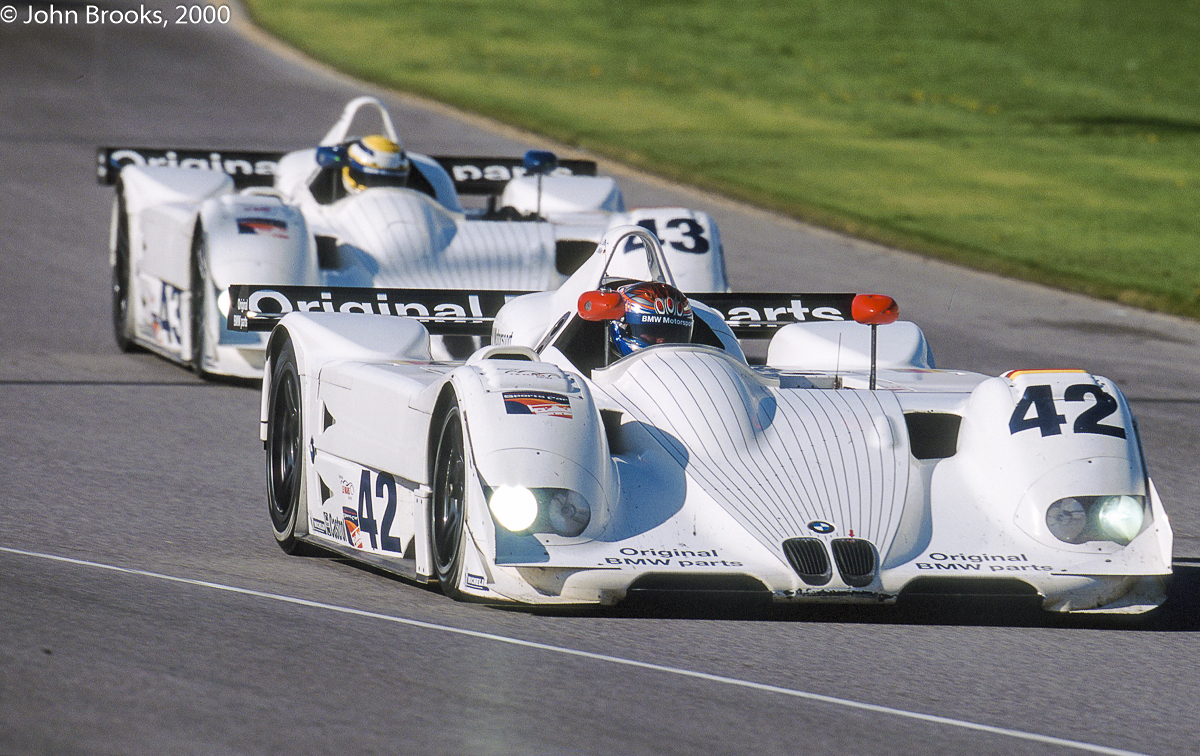
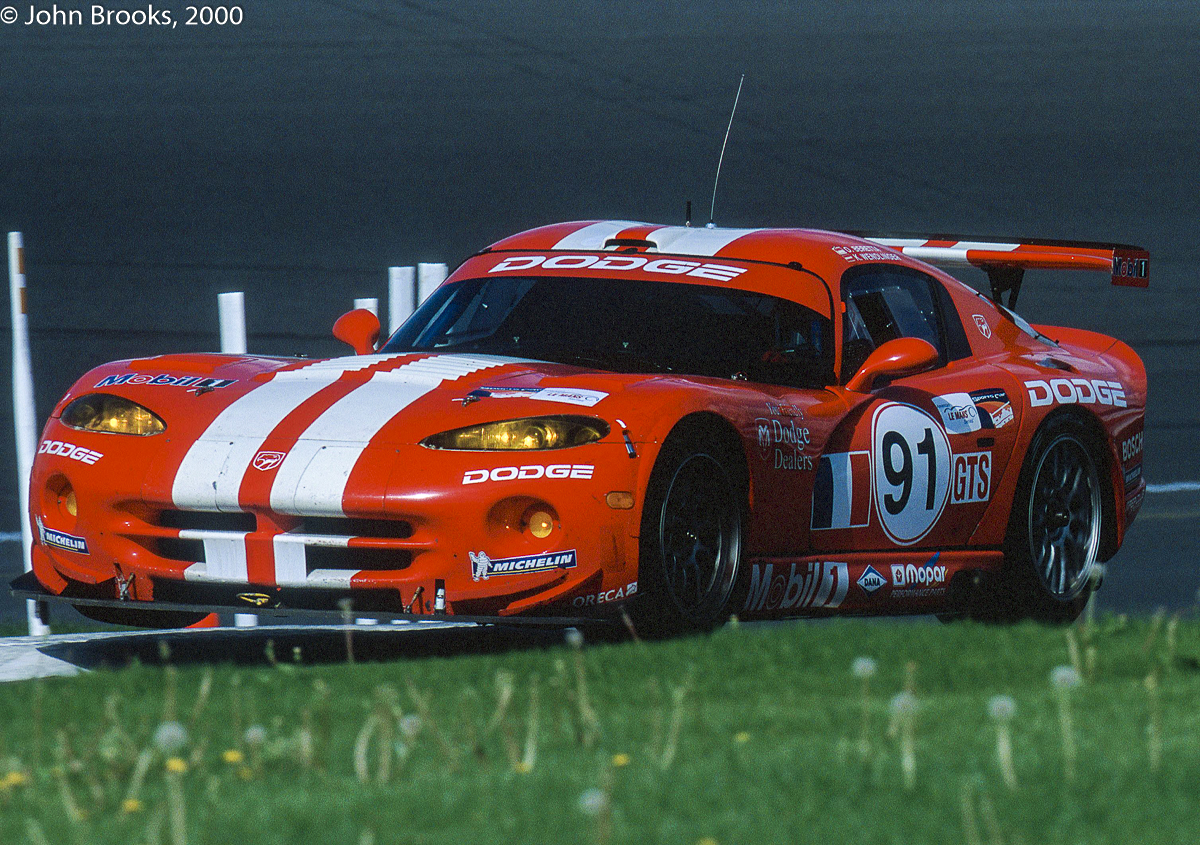
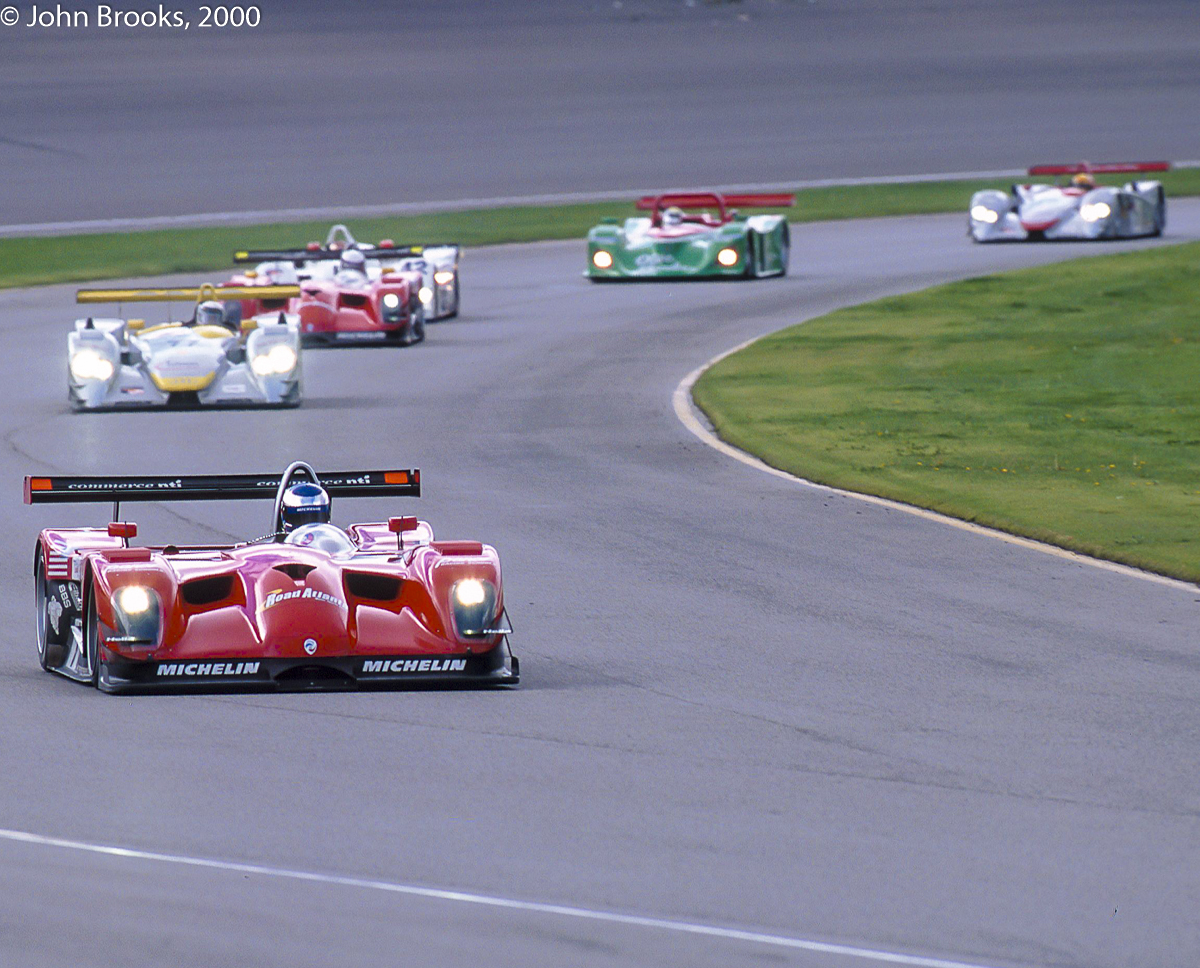
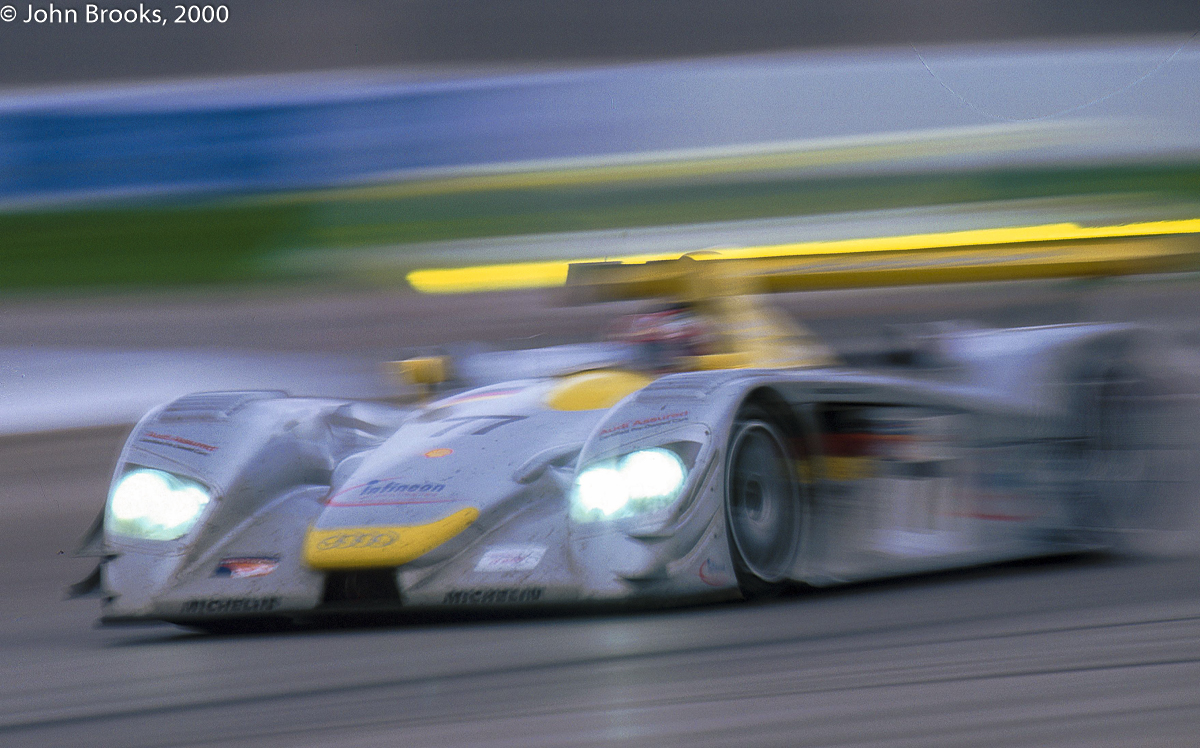
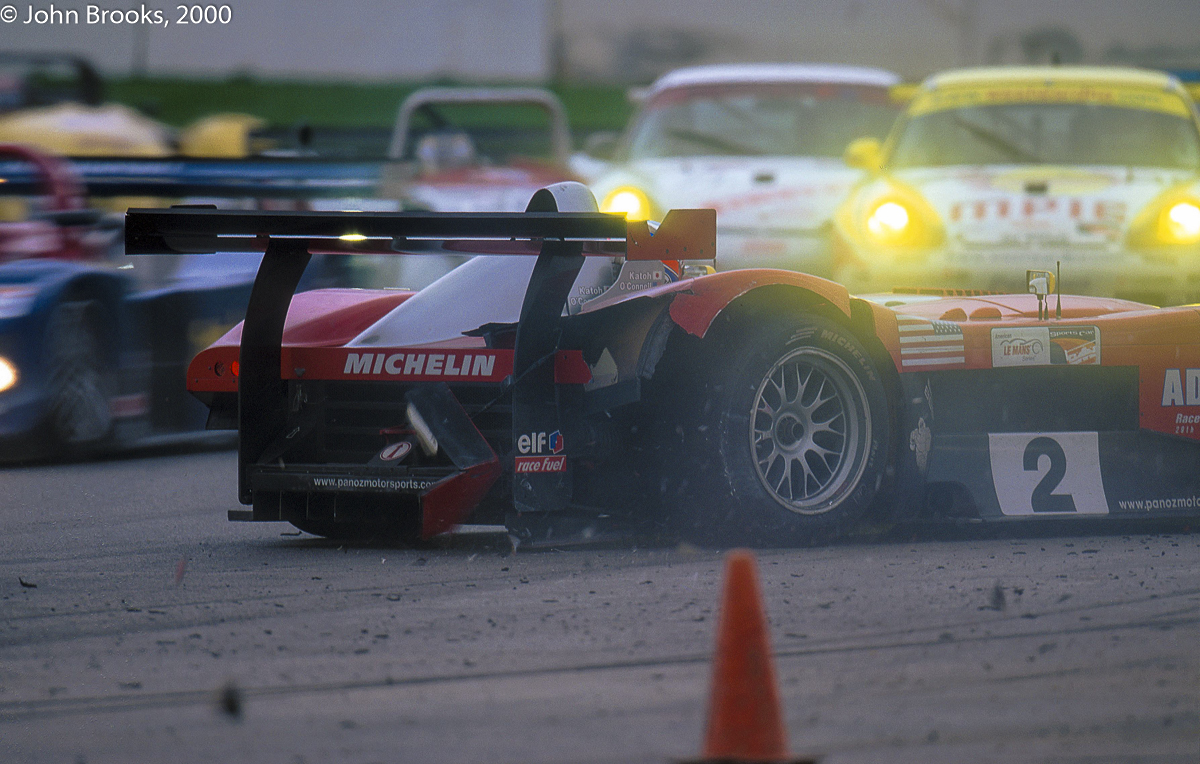
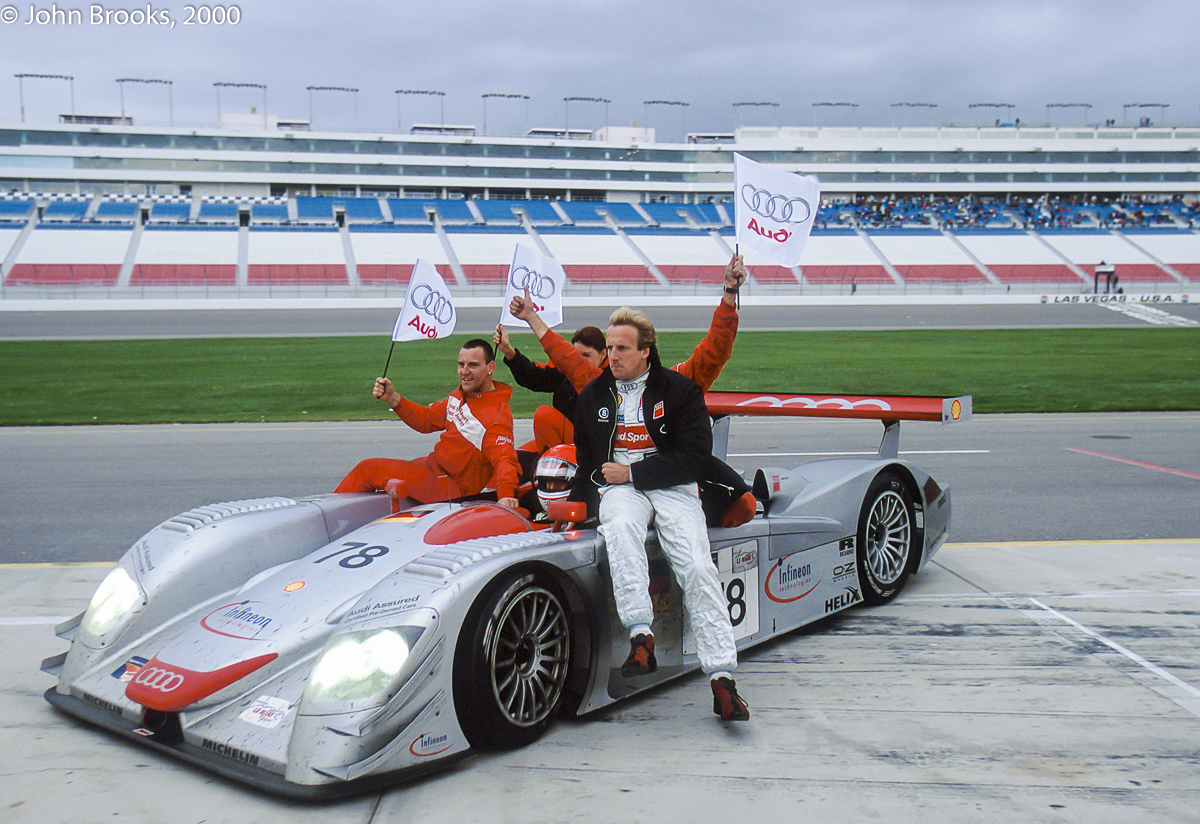
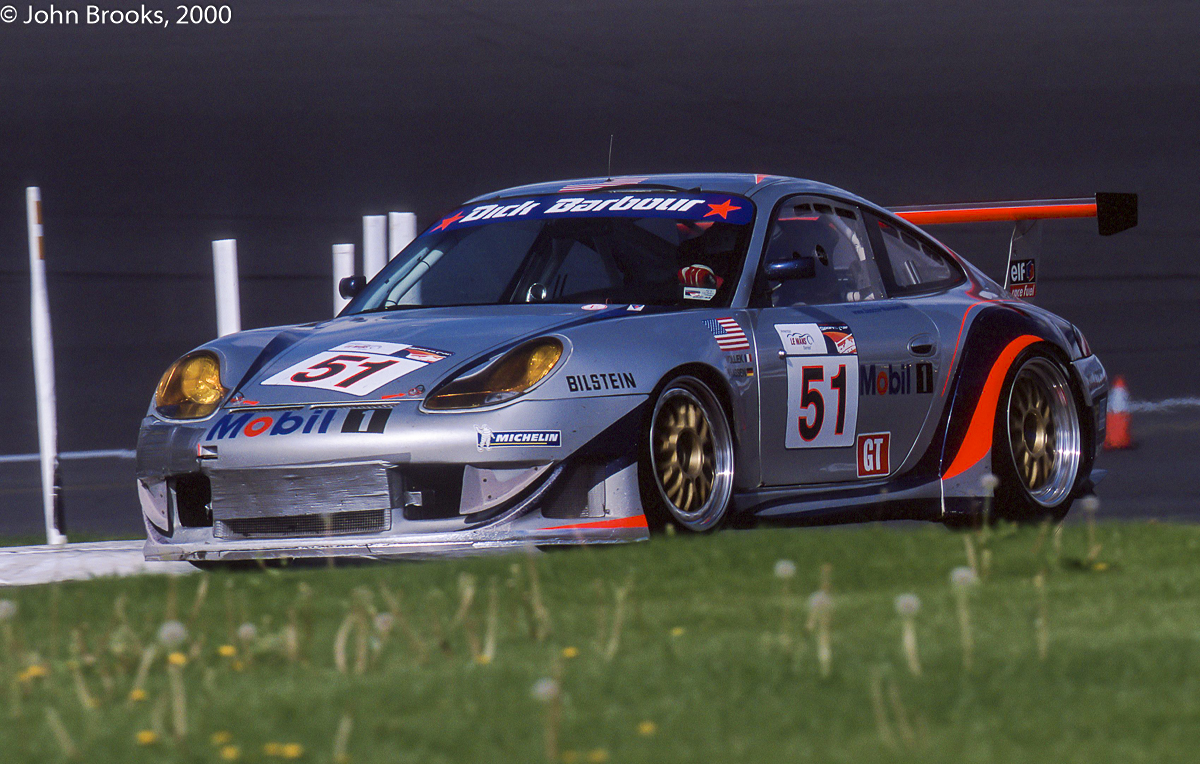
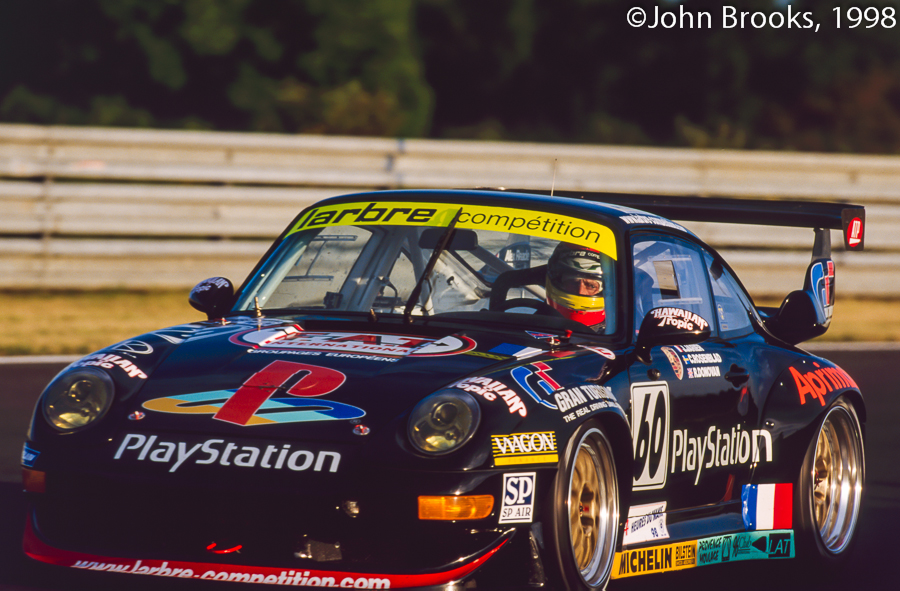


 George Canning, a British statesman back in the time when we had such ministers in power, famously said “I called the New World into existence, to redress the balance of the Old.” And so it seemed with the birth of the ALMS in 1999. We had somehow stood by and allowed the odious FIA politicians and money men to destroy the World Endurance Championship and Group C at the turn of the ’80s.
George Canning, a British statesman back in the time when we had such ministers in power, famously said “I called the New World into existence, to redress the balance of the Old.” And so it seemed with the birth of the ALMS in 1999. We had somehow stood by and allowed the odious FIA politicians and money men to destroy the World Endurance Championship and Group C at the turn of the ’80s.







 Porsche AG ignored these entreaties, sending one of their 1998 Le Mans-winning type 911 GT1/98 rockets, with Allan McNish, Yannick Dalmas and Uwe Alzen on duty in the cockpit.
Porsche AG ignored these entreaties, sending one of their 1998 Le Mans-winning type 911 GT1/98 rockets, with Allan McNish, Yannick Dalmas and Uwe Alzen on duty in the cockpit. Another Le Mans winner (’96 and’97), the Porsche LMP1/98 was on hand as back up to the GT1 racer, Michele Alboreto, Stefan Johansson and Jörg Müller were the crew.
Another Le Mans winner (’96 and’97), the Porsche LMP1/98 was on hand as back up to the GT1 racer, Michele Alboreto, Stefan Johansson and Jörg Müller were the crew.




 Then there were the pair of factory Panoz GTR-1s, reduced to one, after Jamie Davies clouted the wall in practice, damaging the tub beyond immediate repair.
Then there were the pair of factory Panoz GTR-1s, reduced to one, after Jamie Davies clouted the wall in practice, damaging the tub beyond immediate repair.
 Also in the GT1 contingent was the Champion Racing Porsche 911 GT1 Evo, with Porsche stalwarts, Bob Wollek and Thierry Boutsen, joined by Ralf Kelleners on driving duties.
Also in the GT1 contingent was the Champion Racing Porsche 911 GT1 Evo, with Porsche stalwarts, Bob Wollek and Thierry Boutsen, joined by Ralf Kelleners on driving duties.
 There were a few oddities in GT, at least to this European eye, the Nissan 240SX being a typical member of “run what you brung” genre. Whatever floats your boat….
There were a few oddities in GT, at least to this European eye, the Nissan 240SX being a typical member of “run what you brung” genre. Whatever floats your boat….














